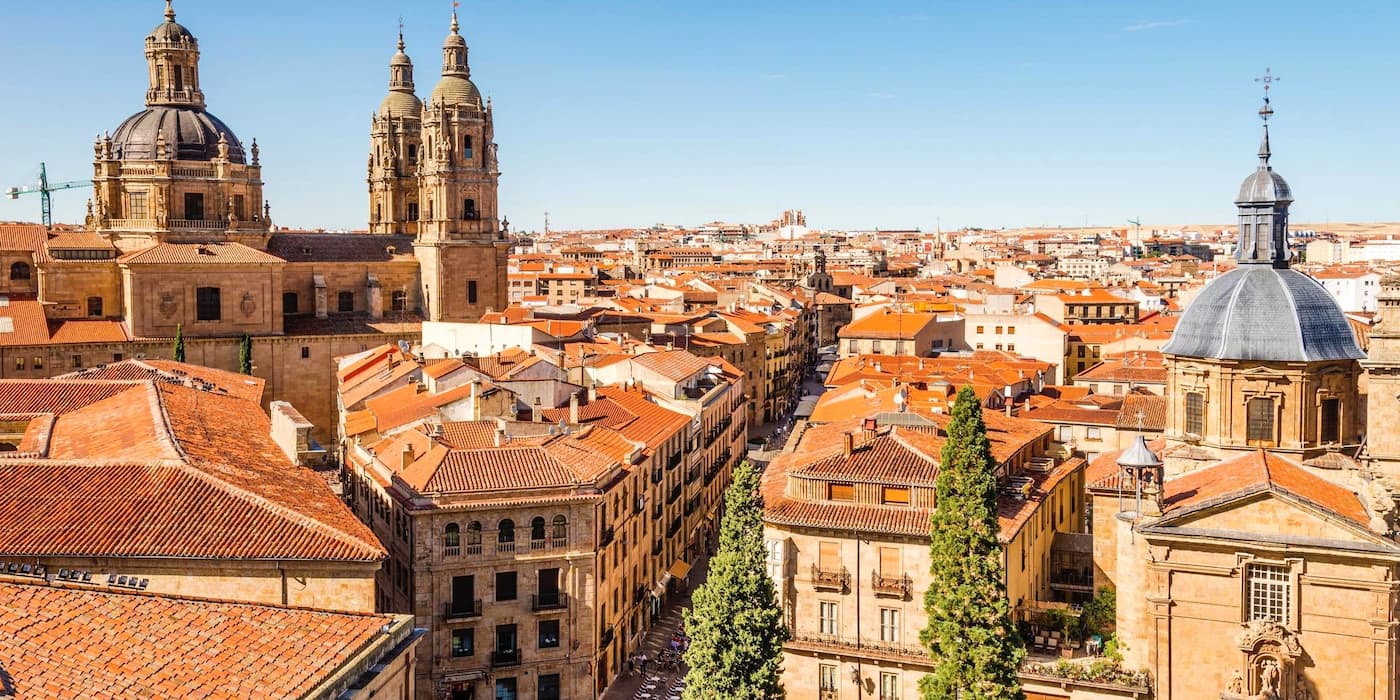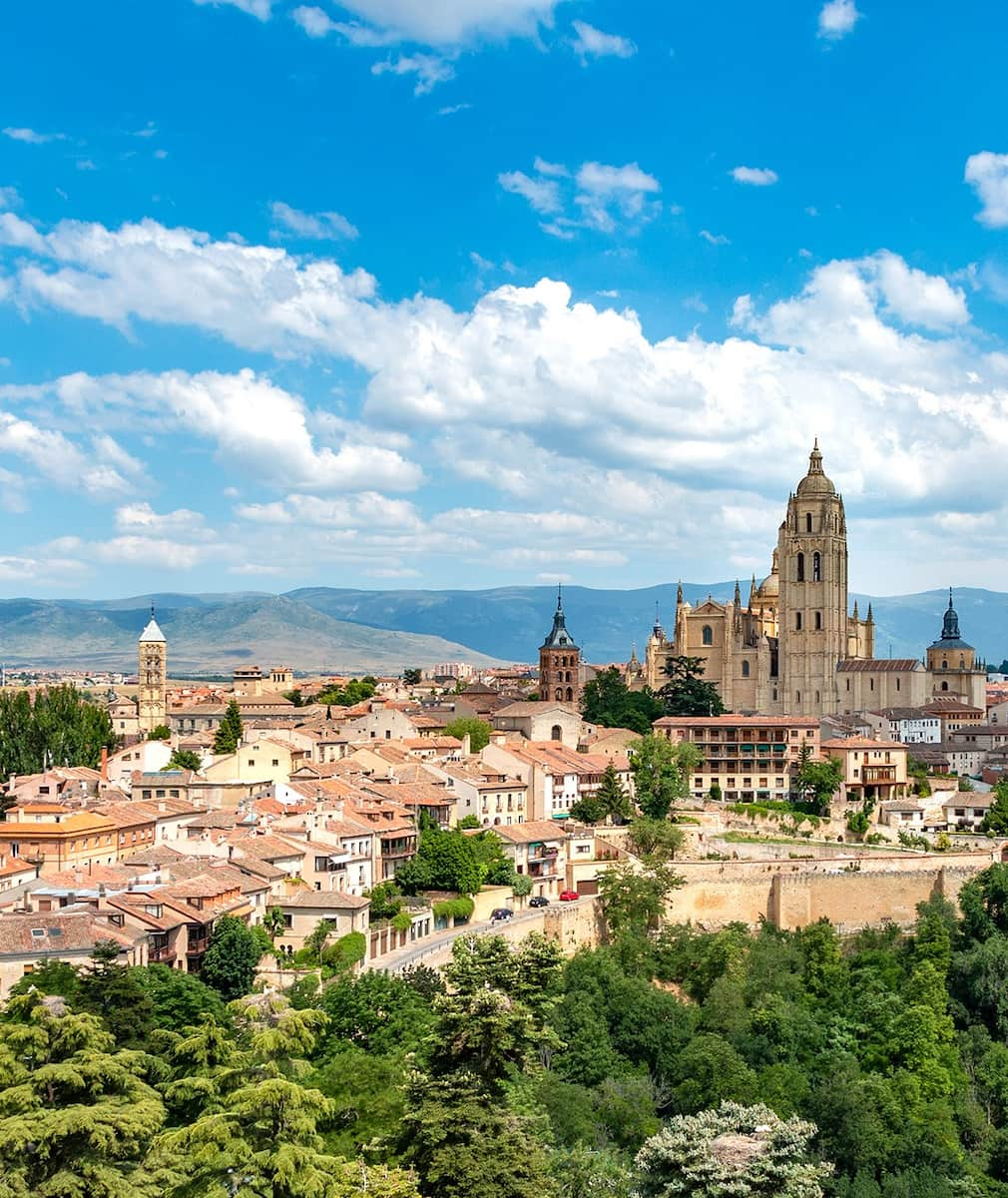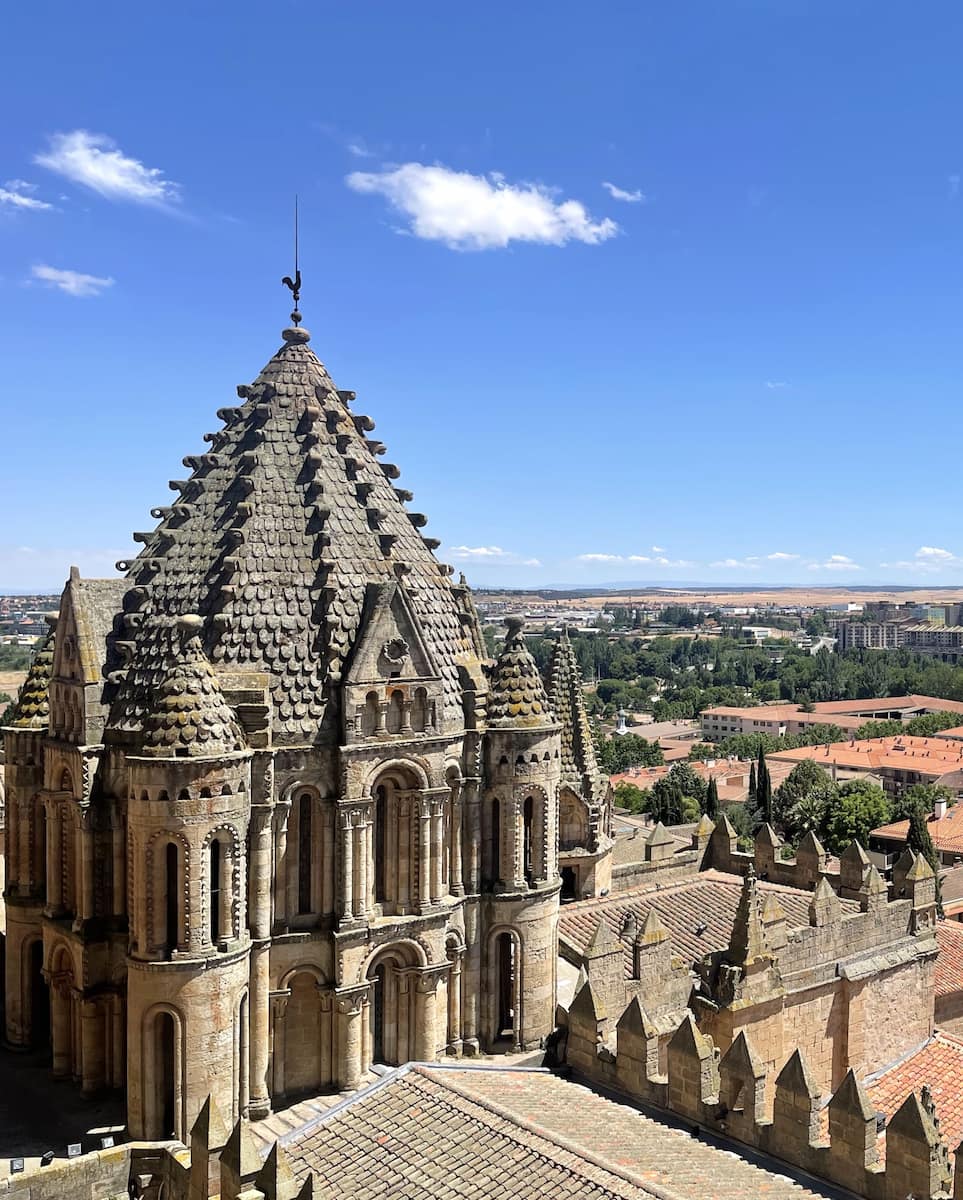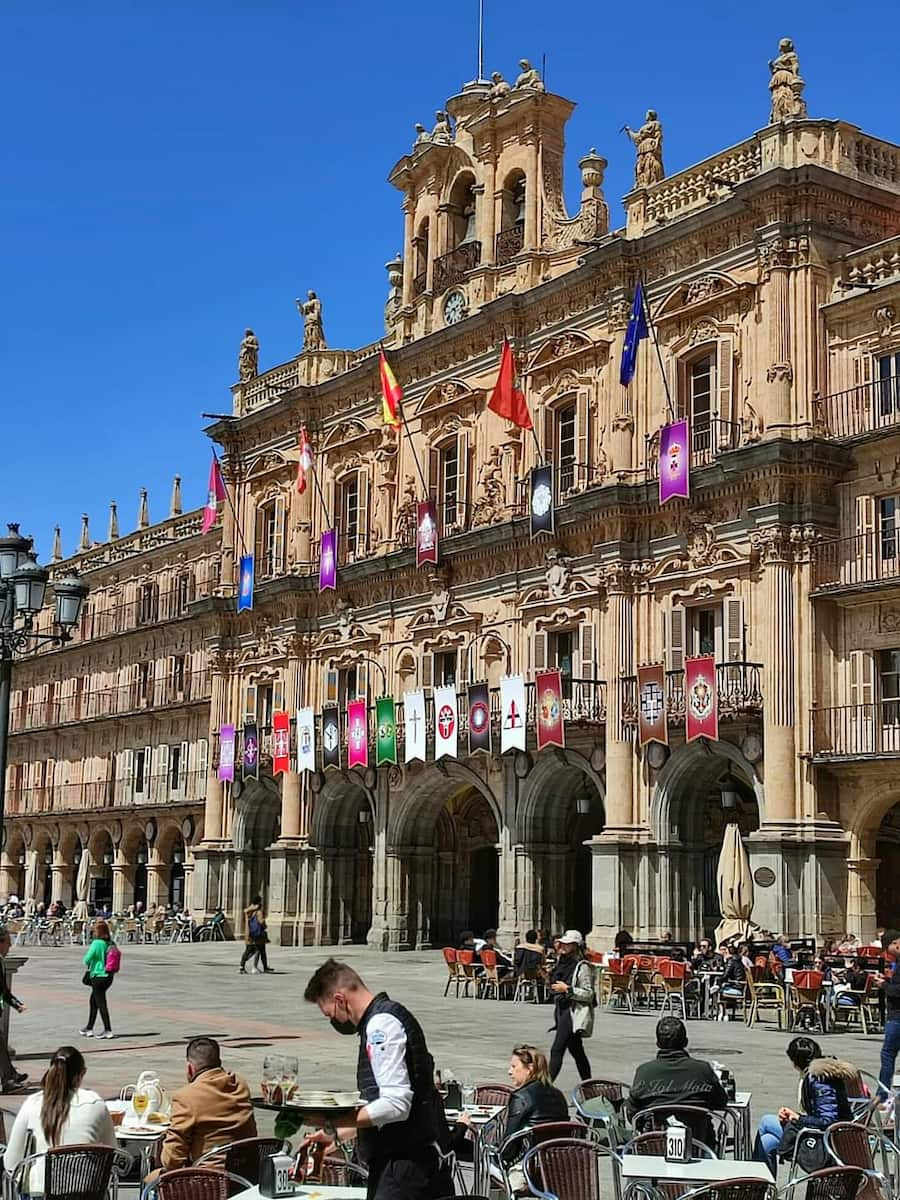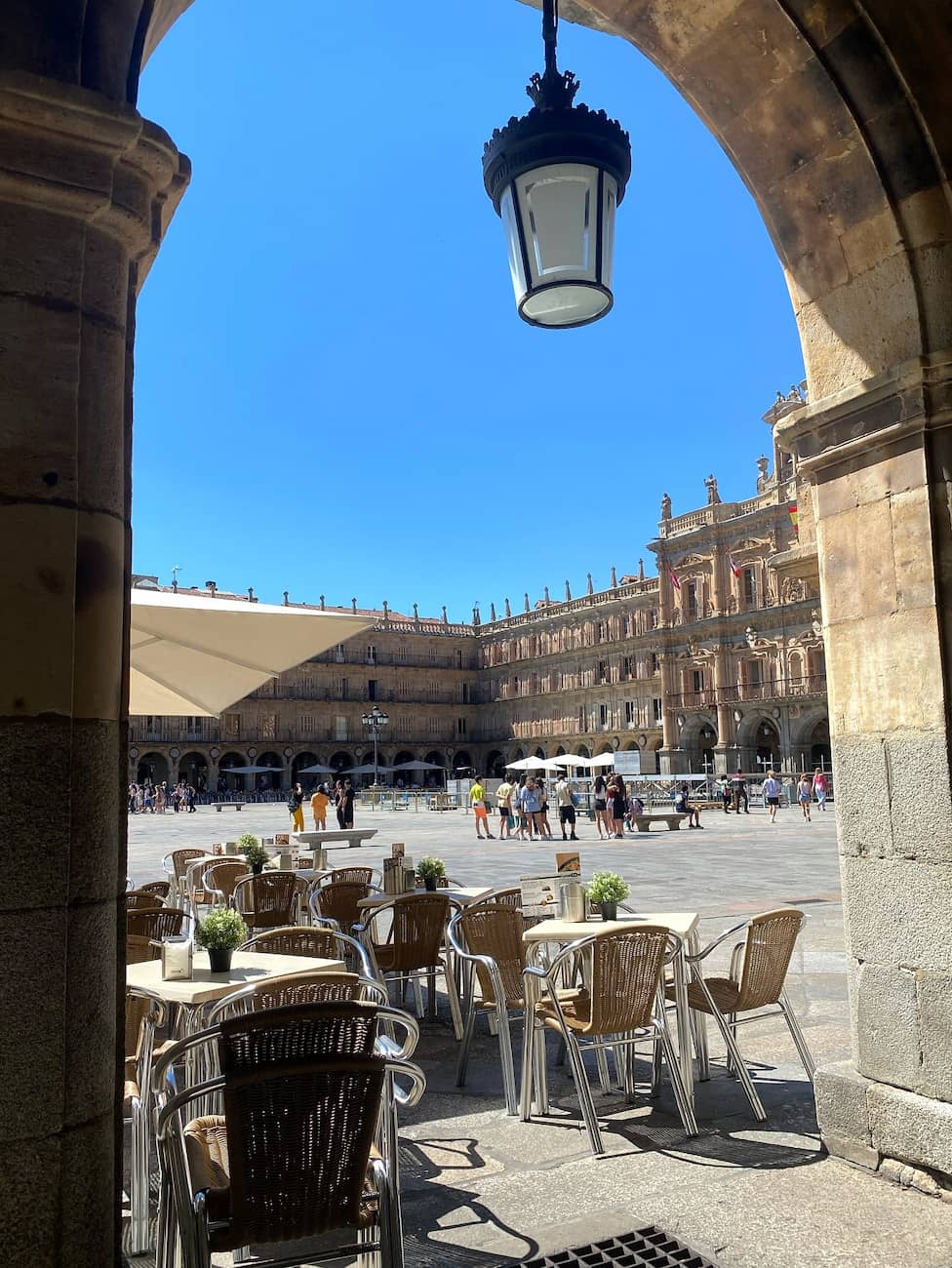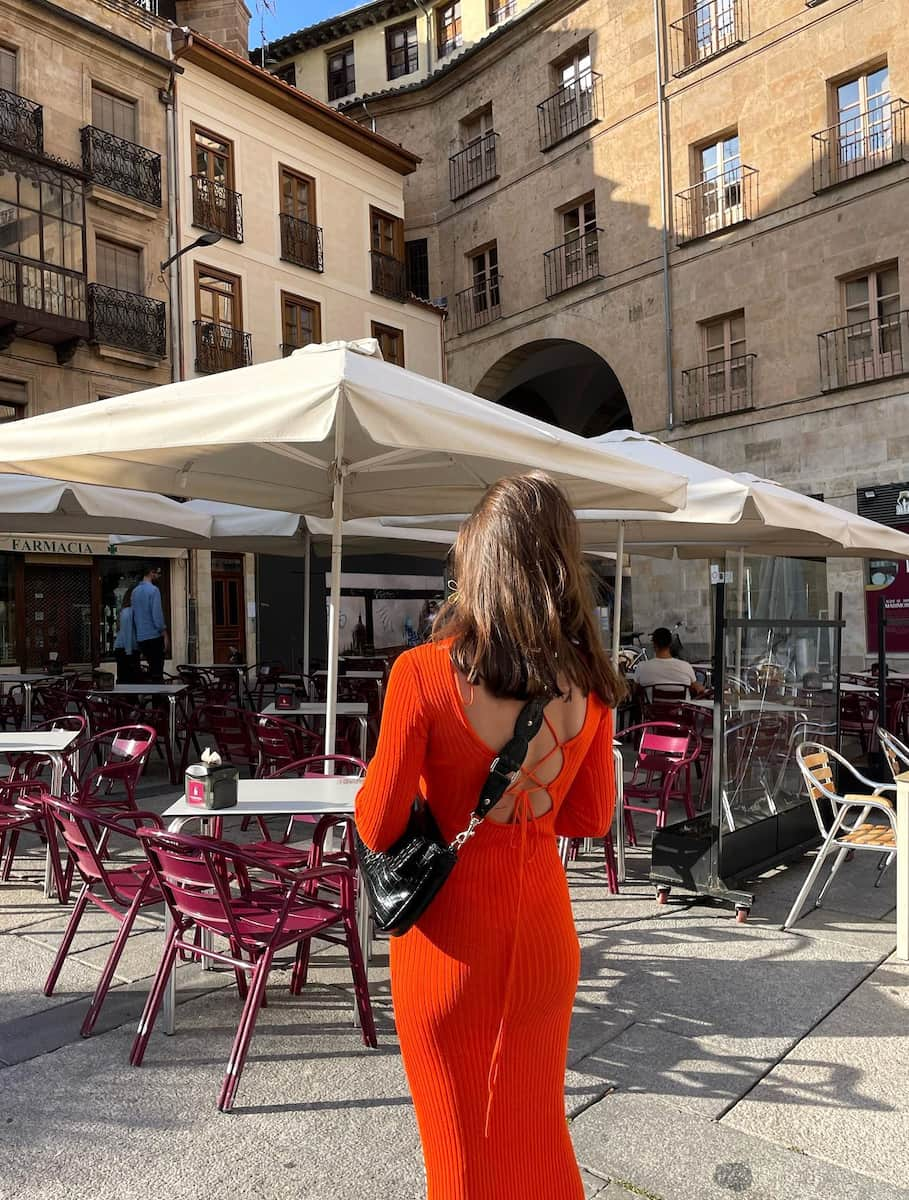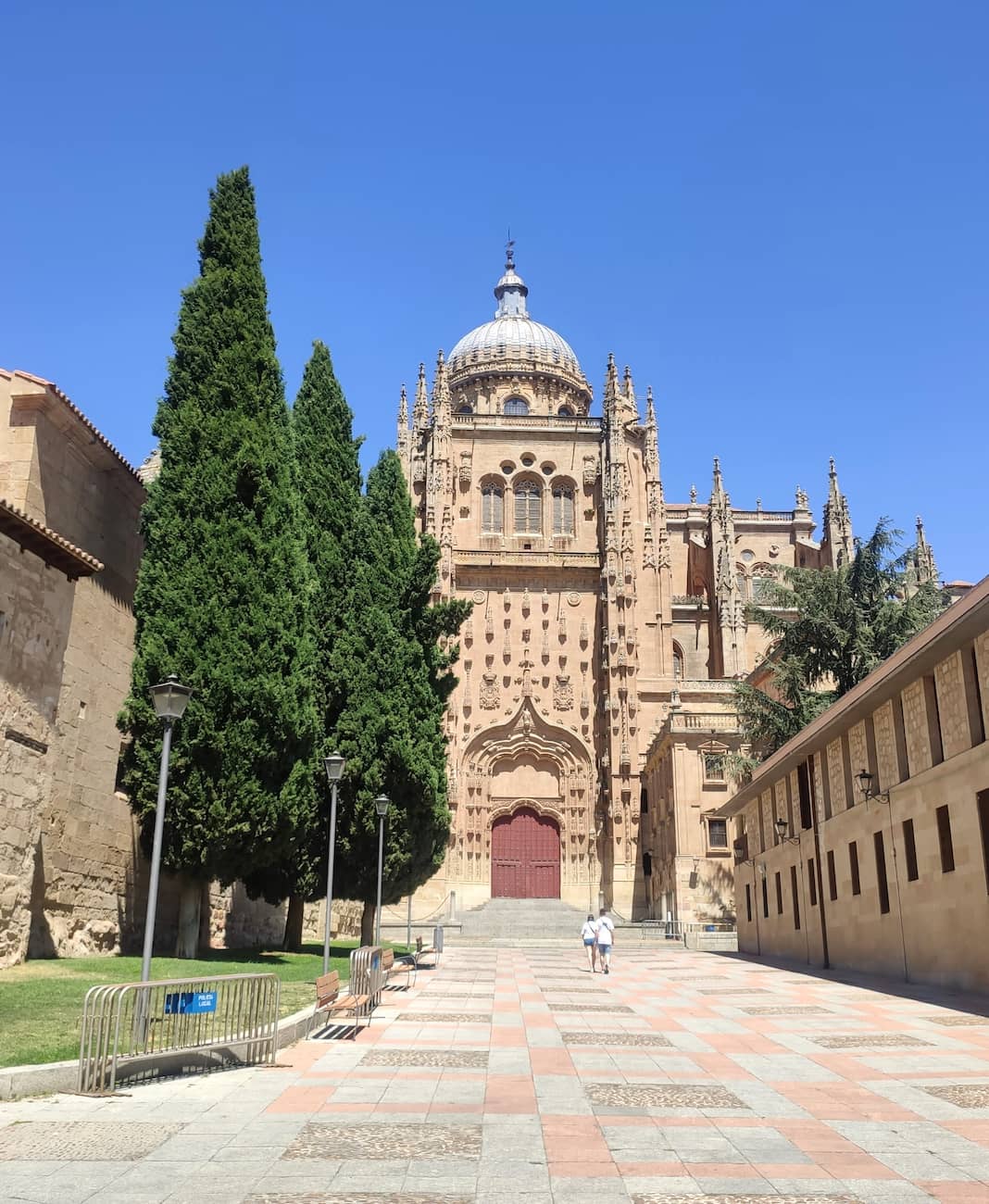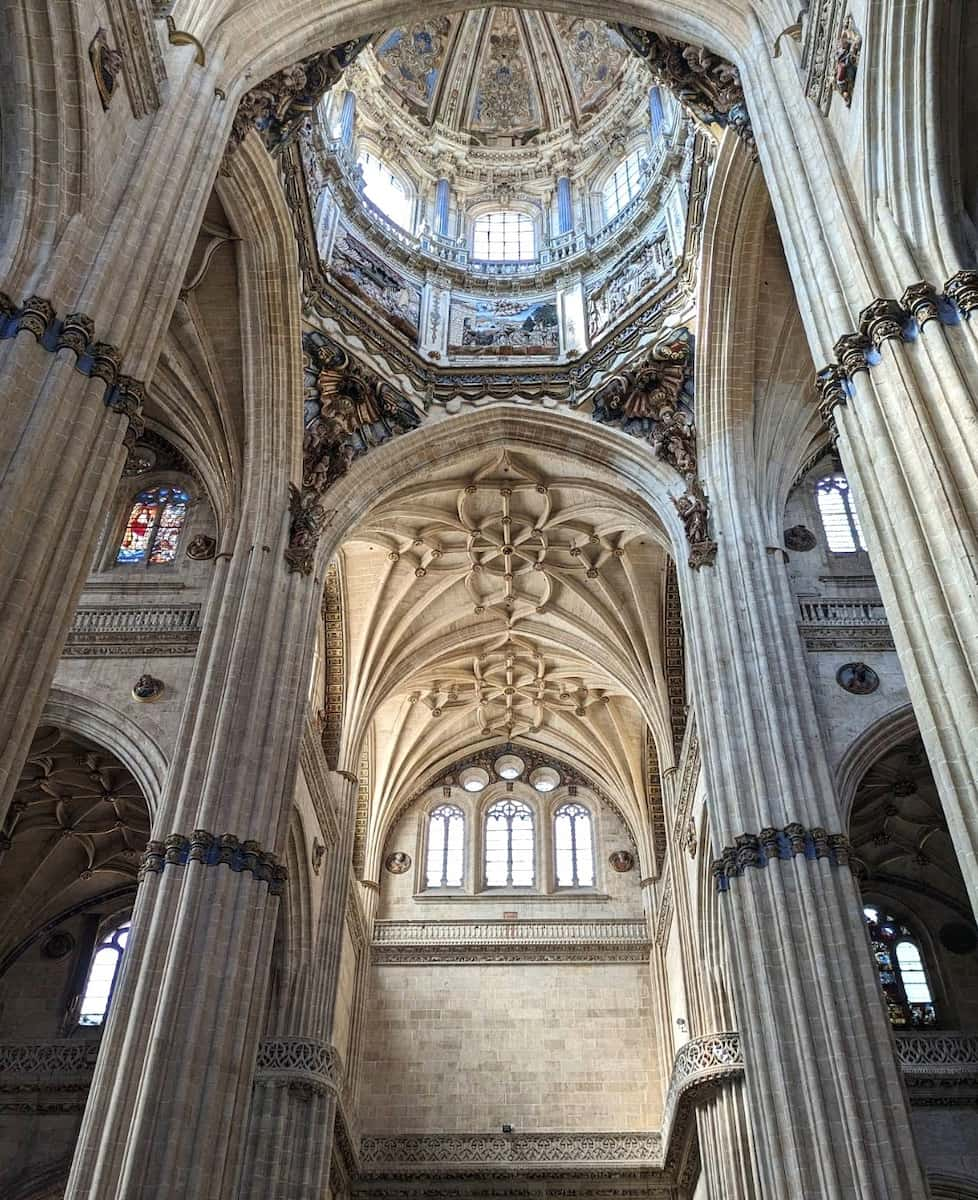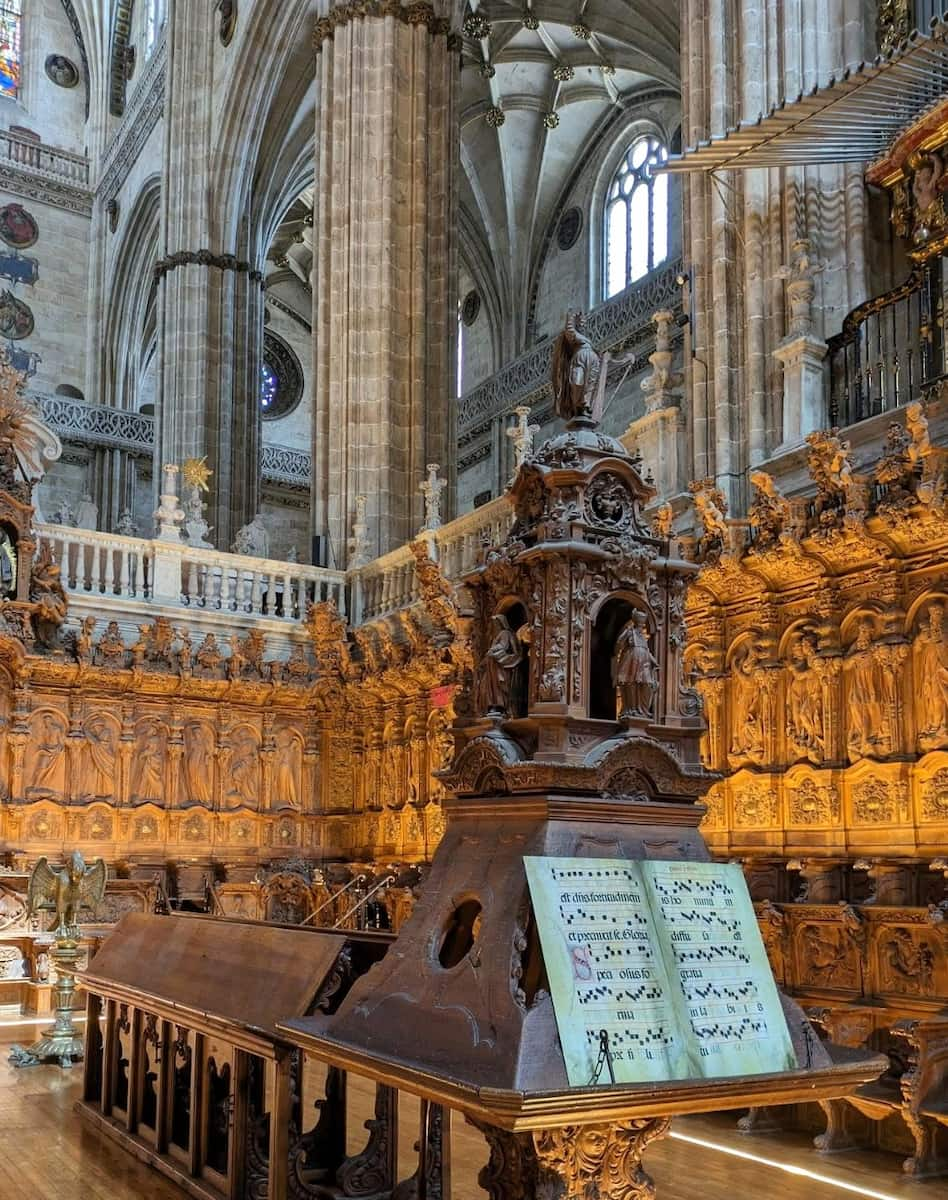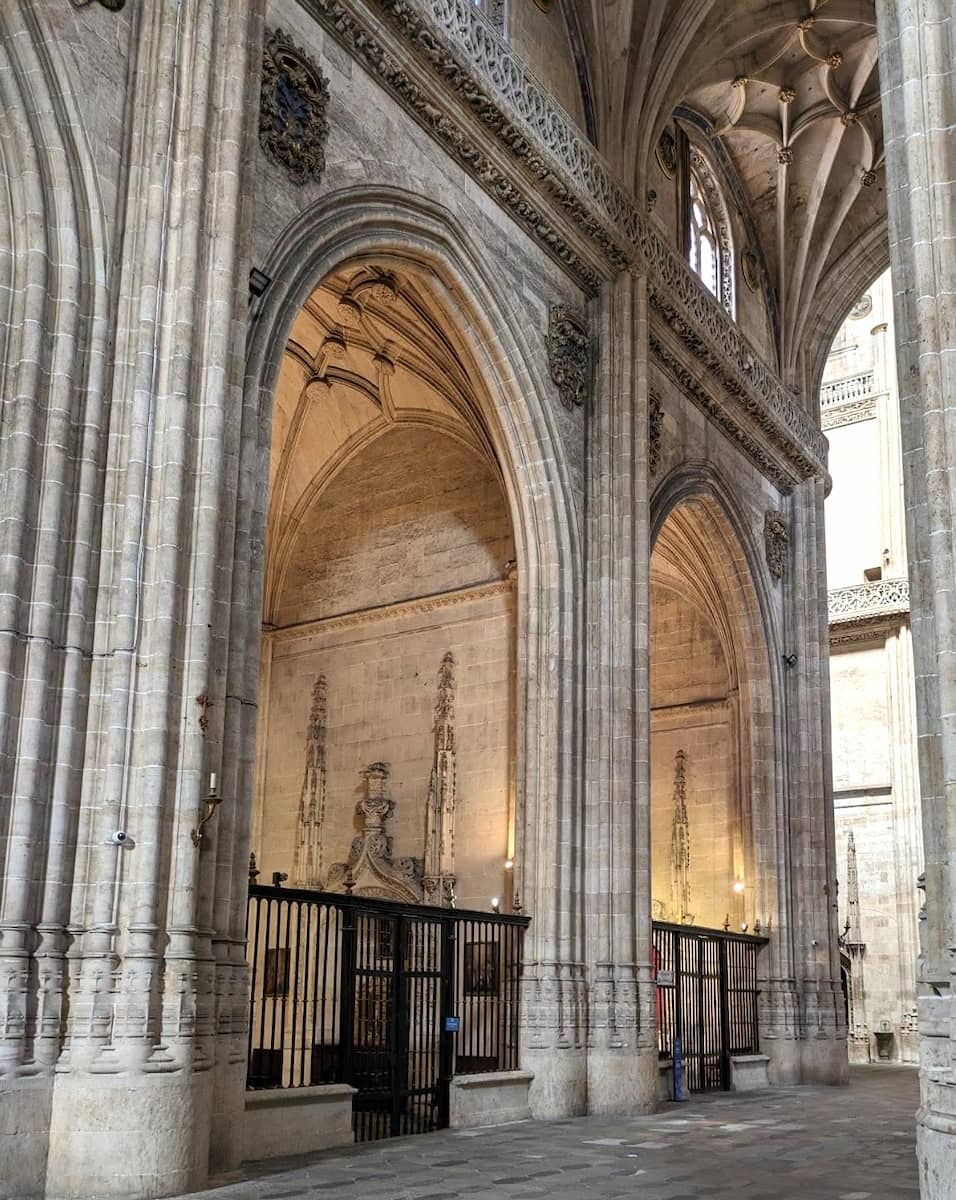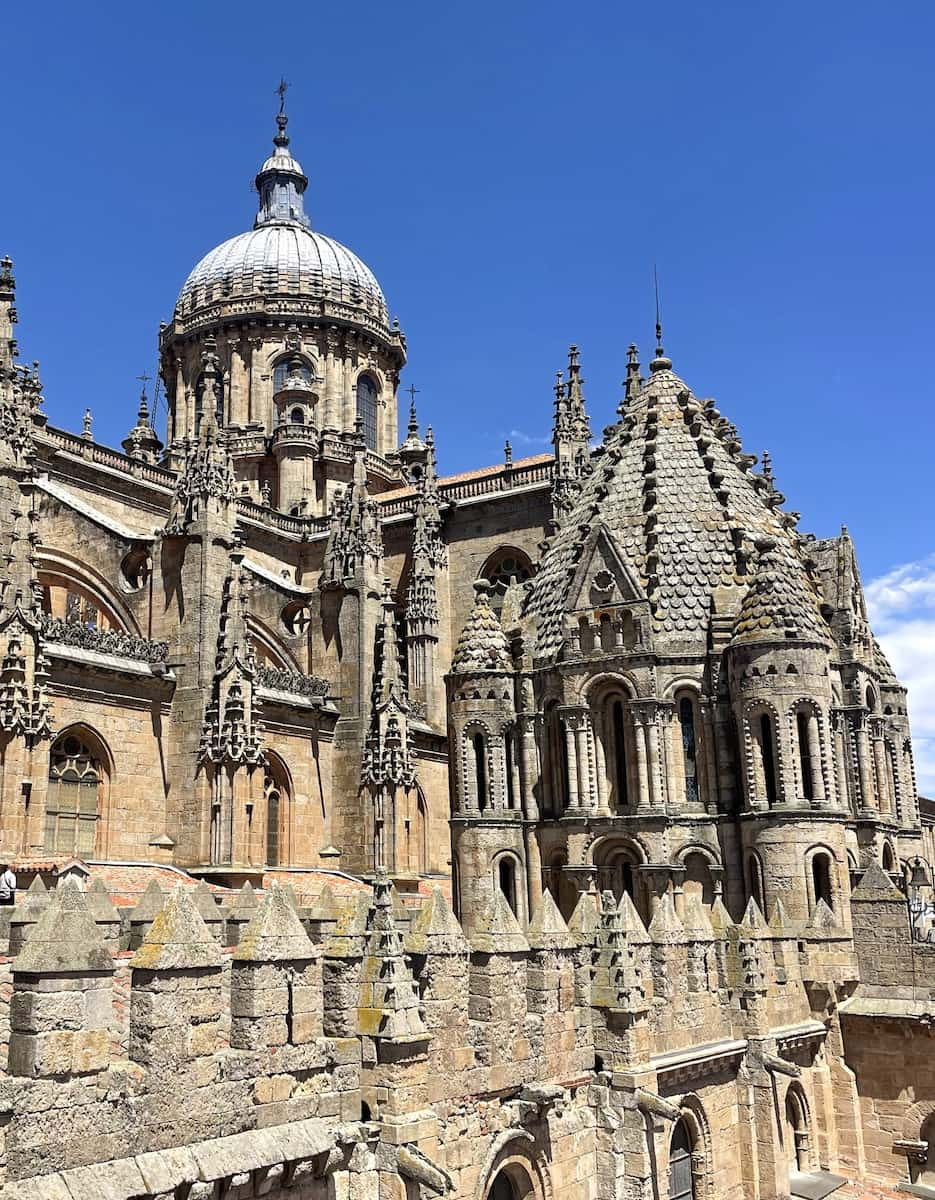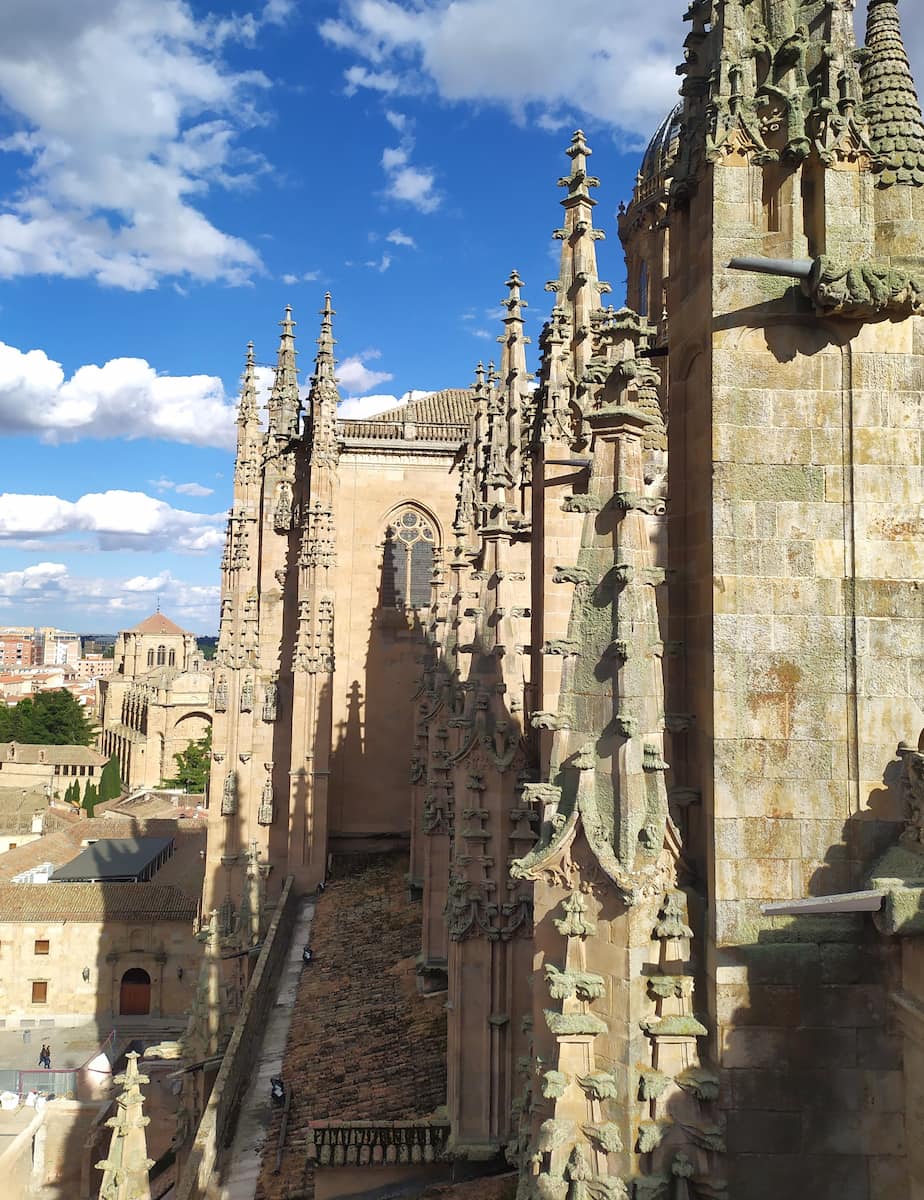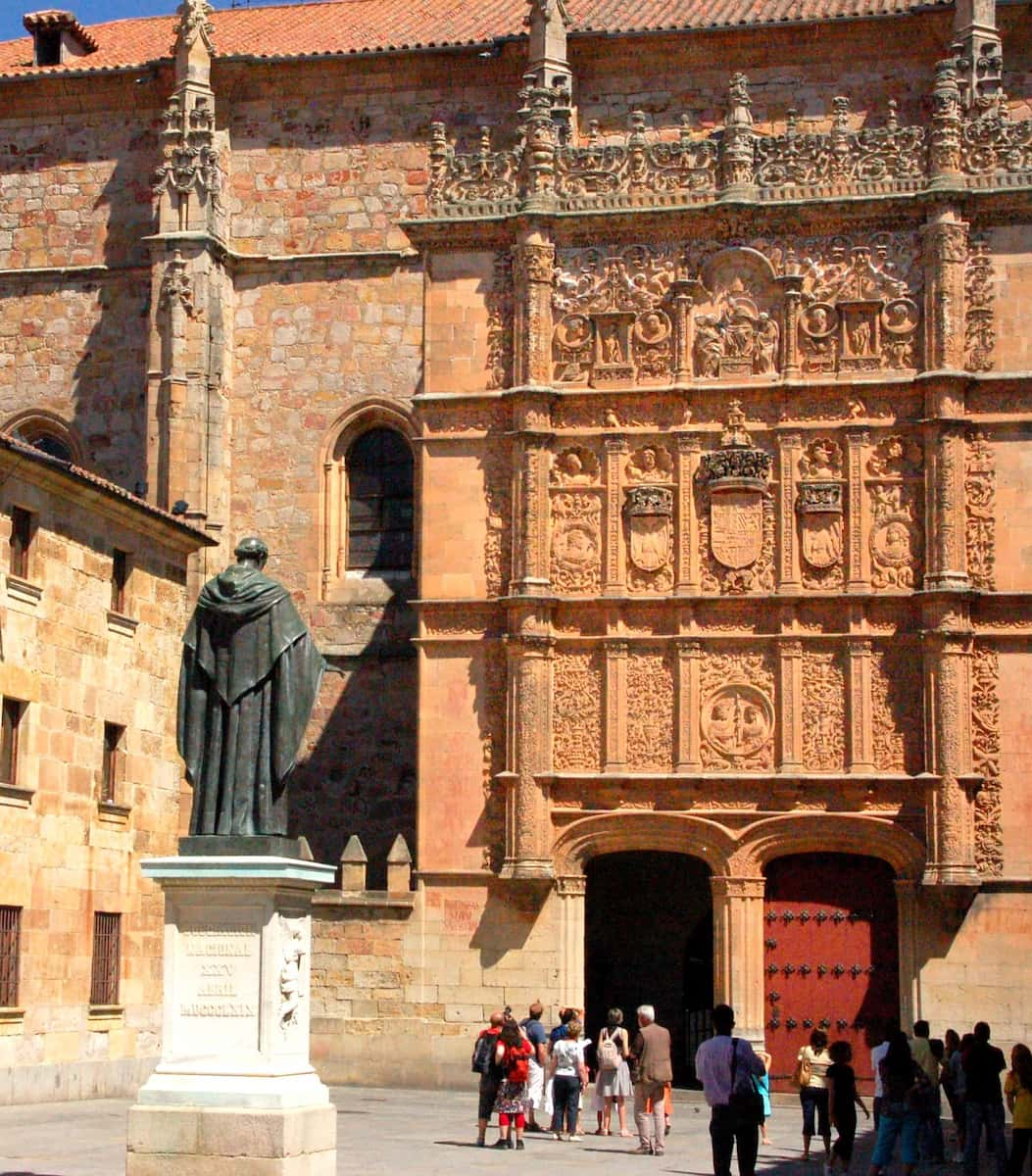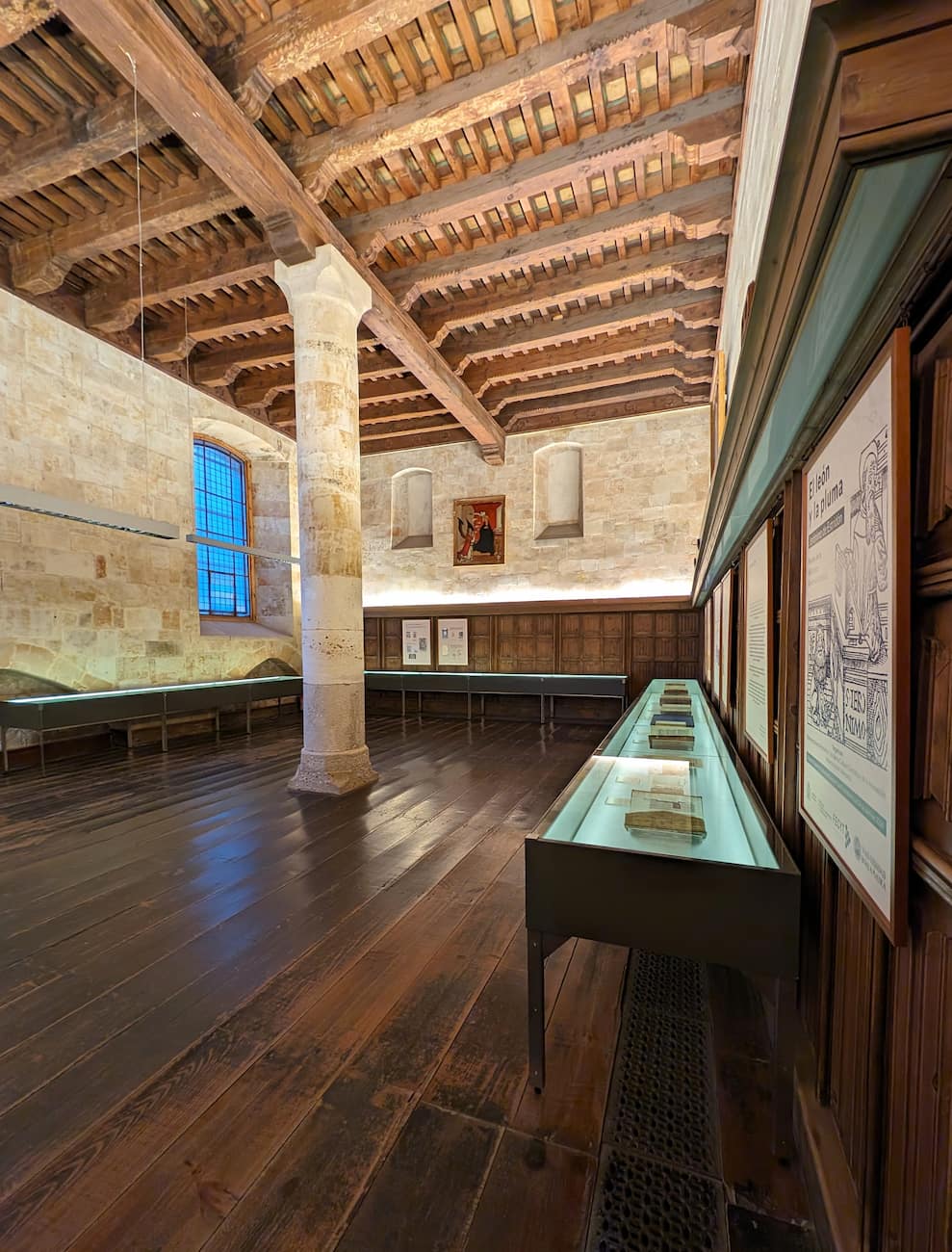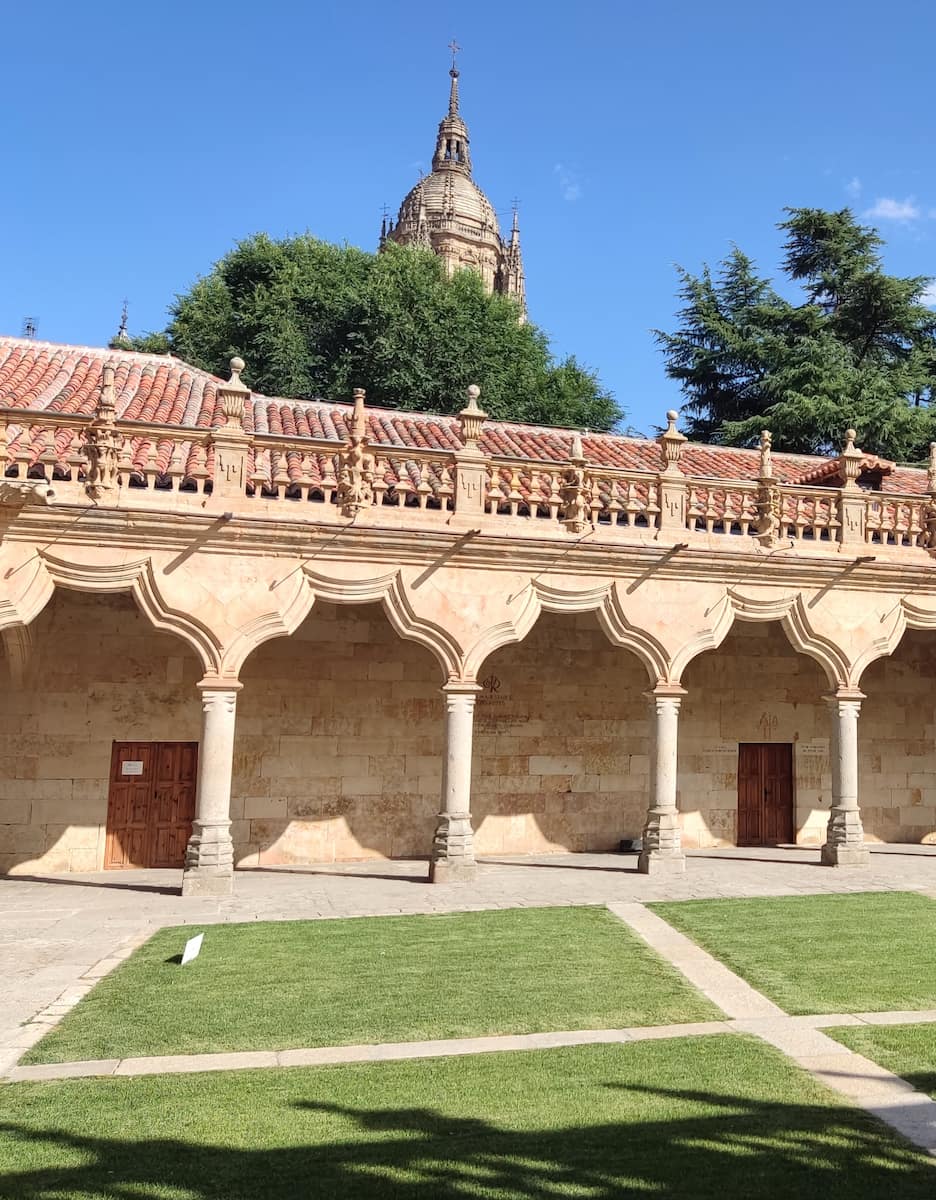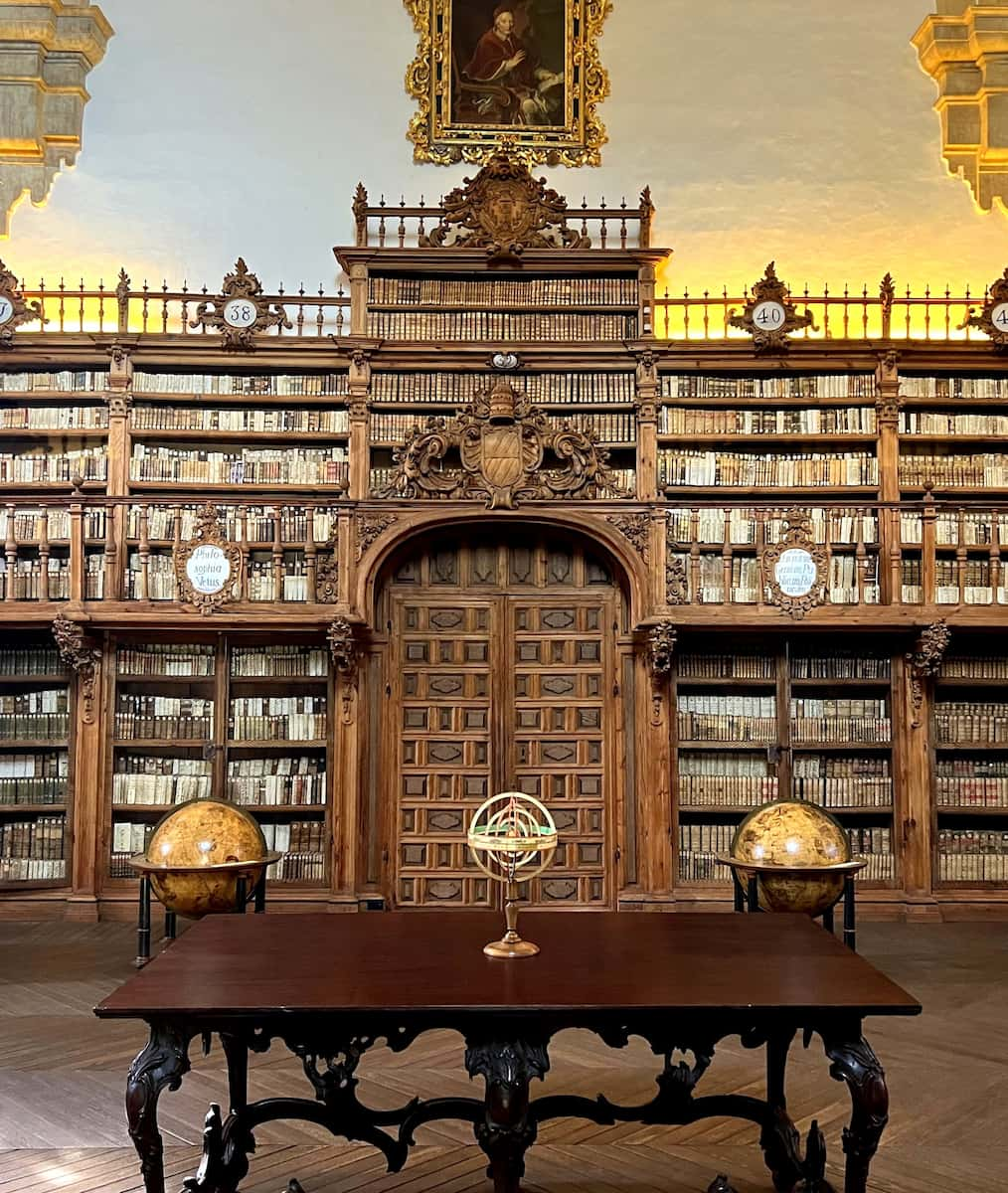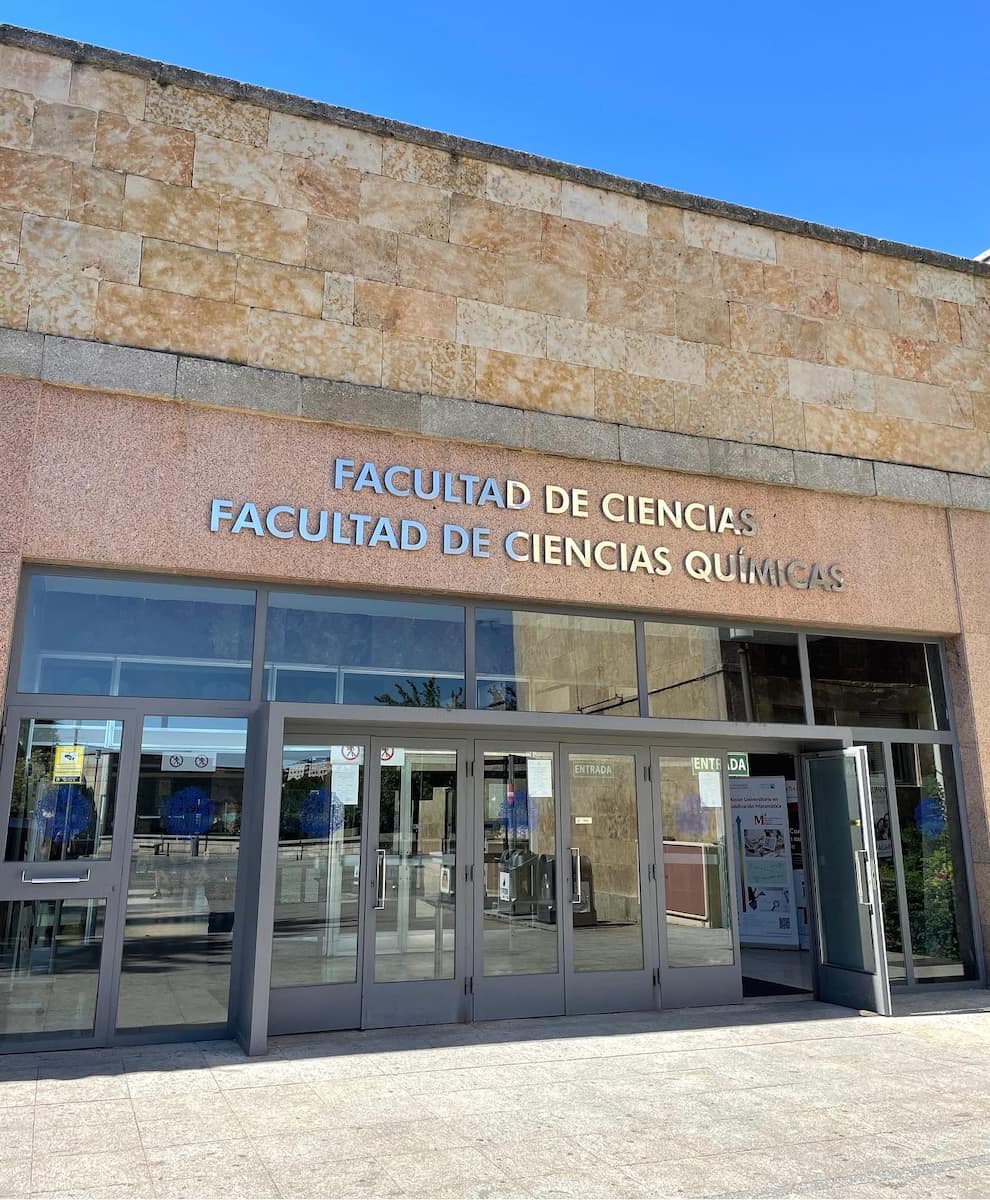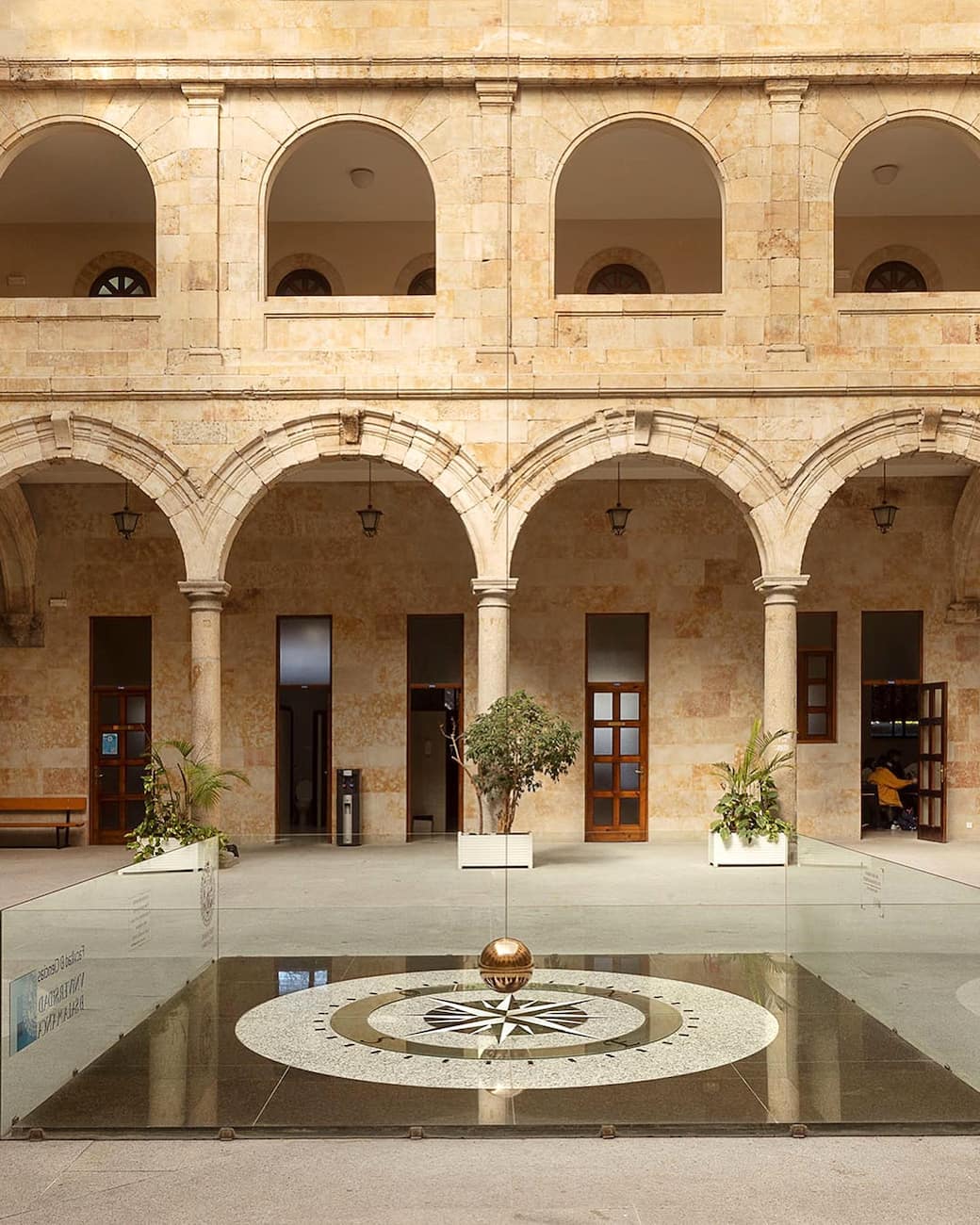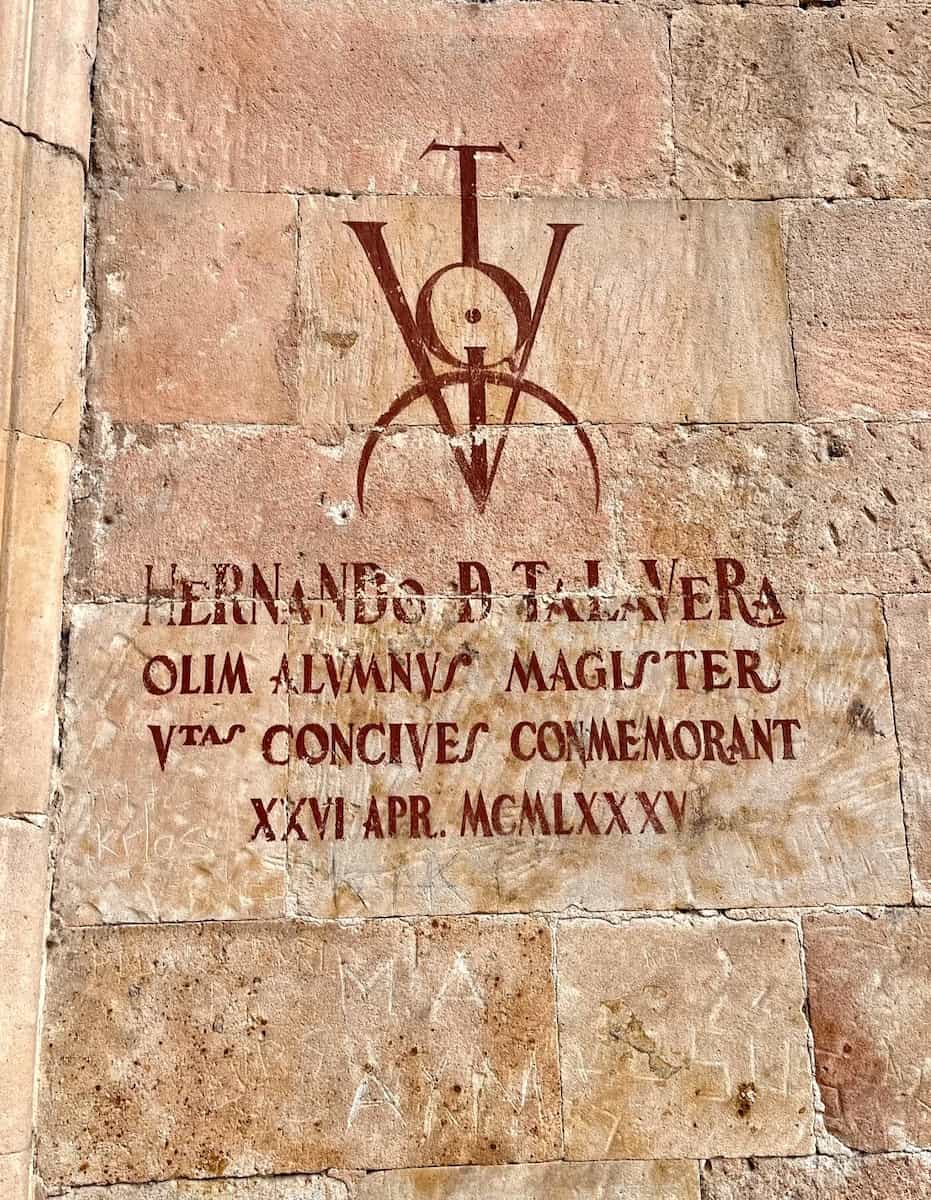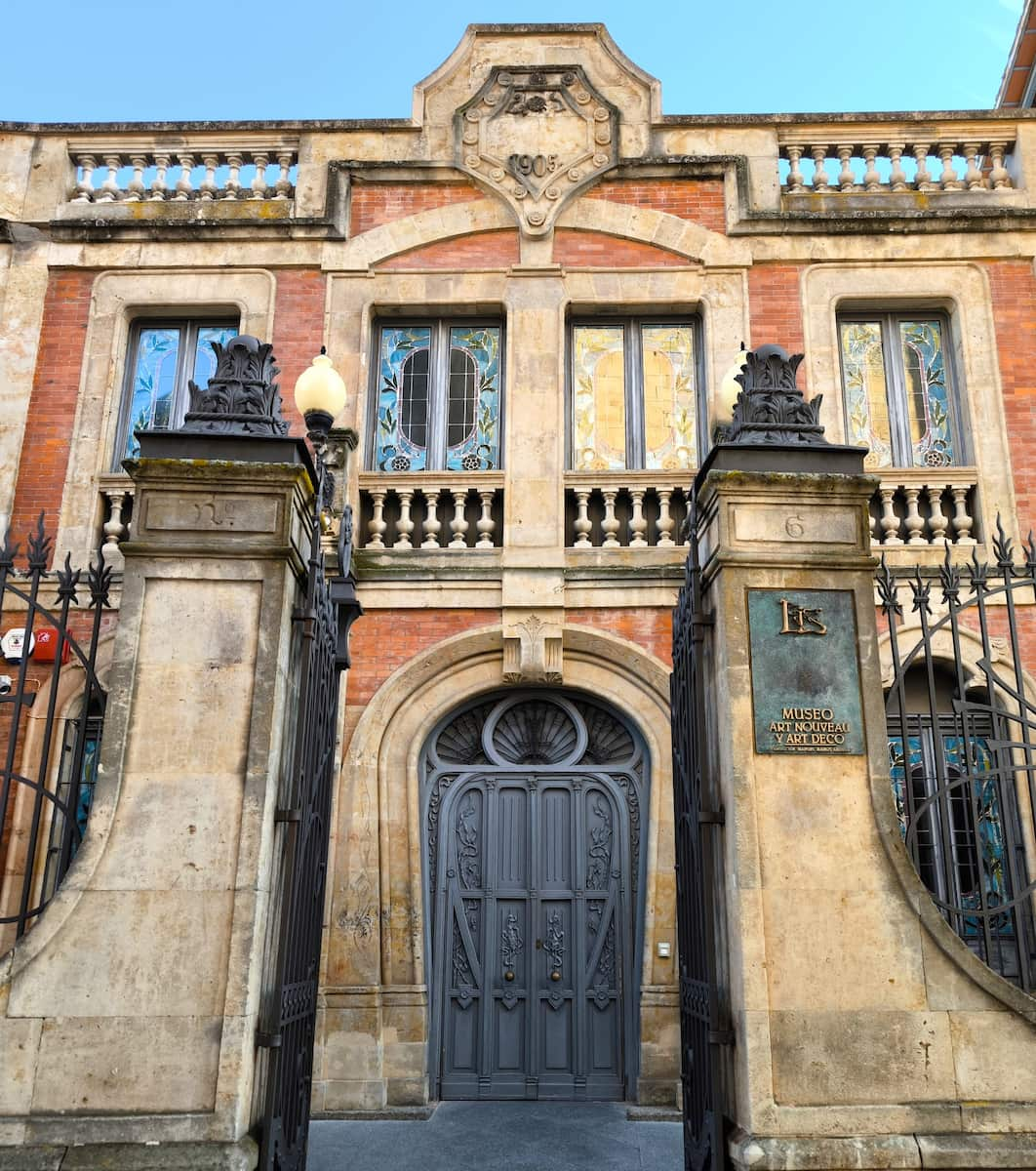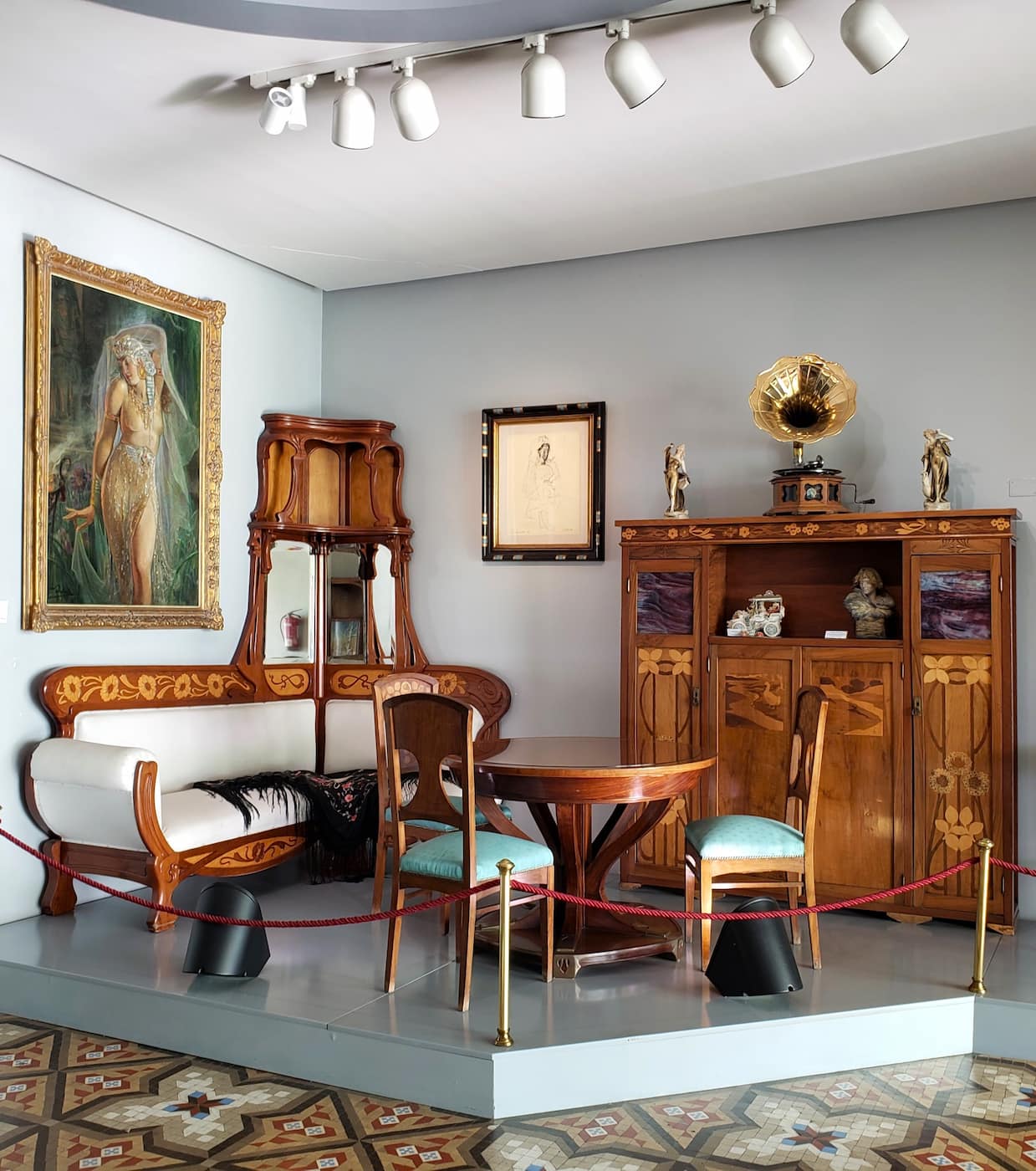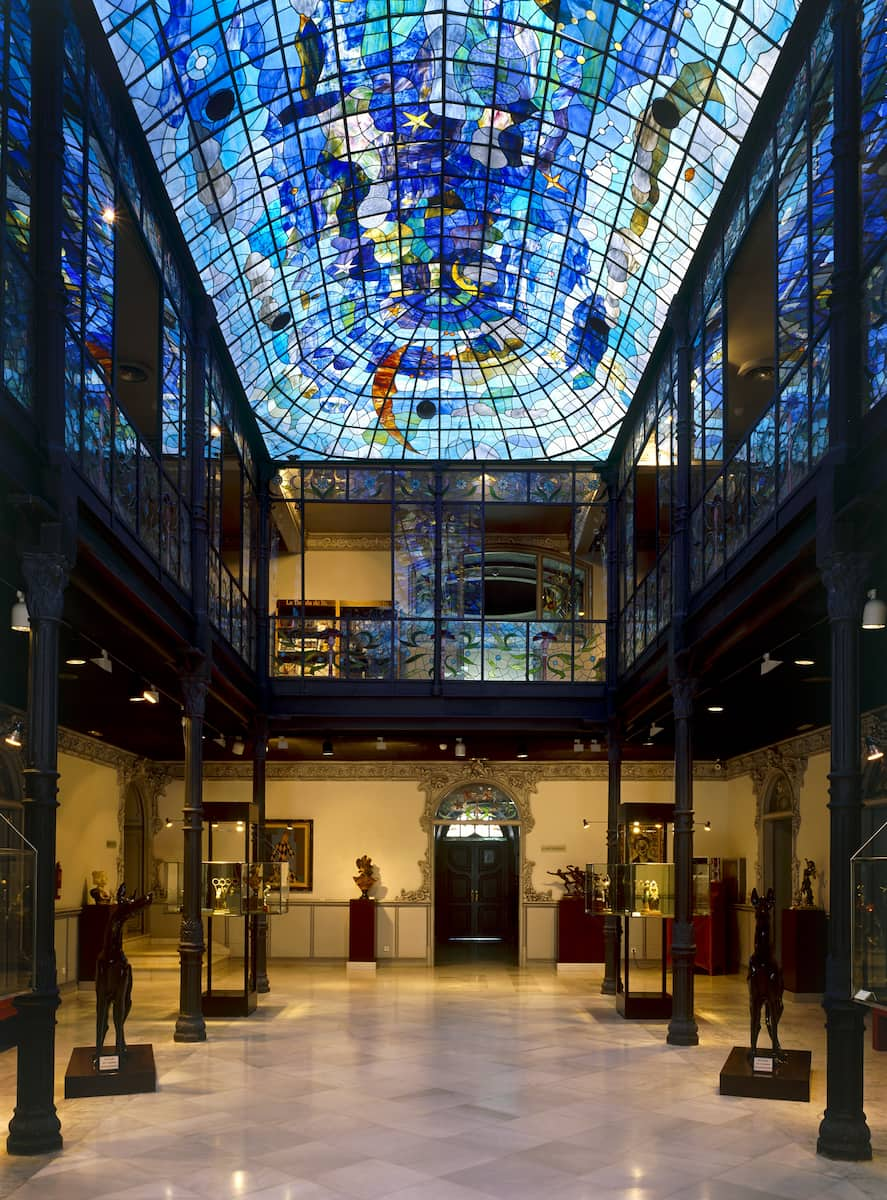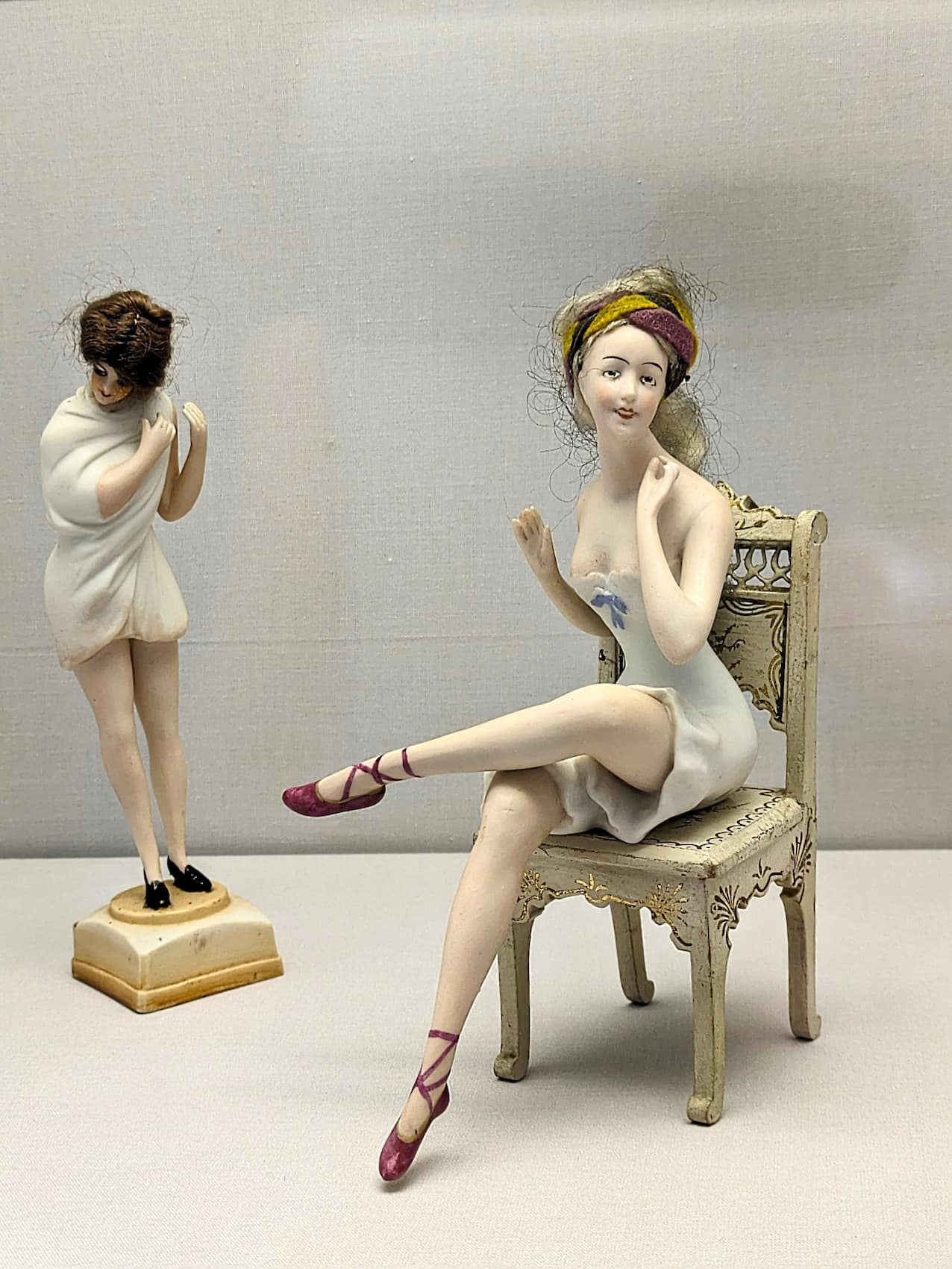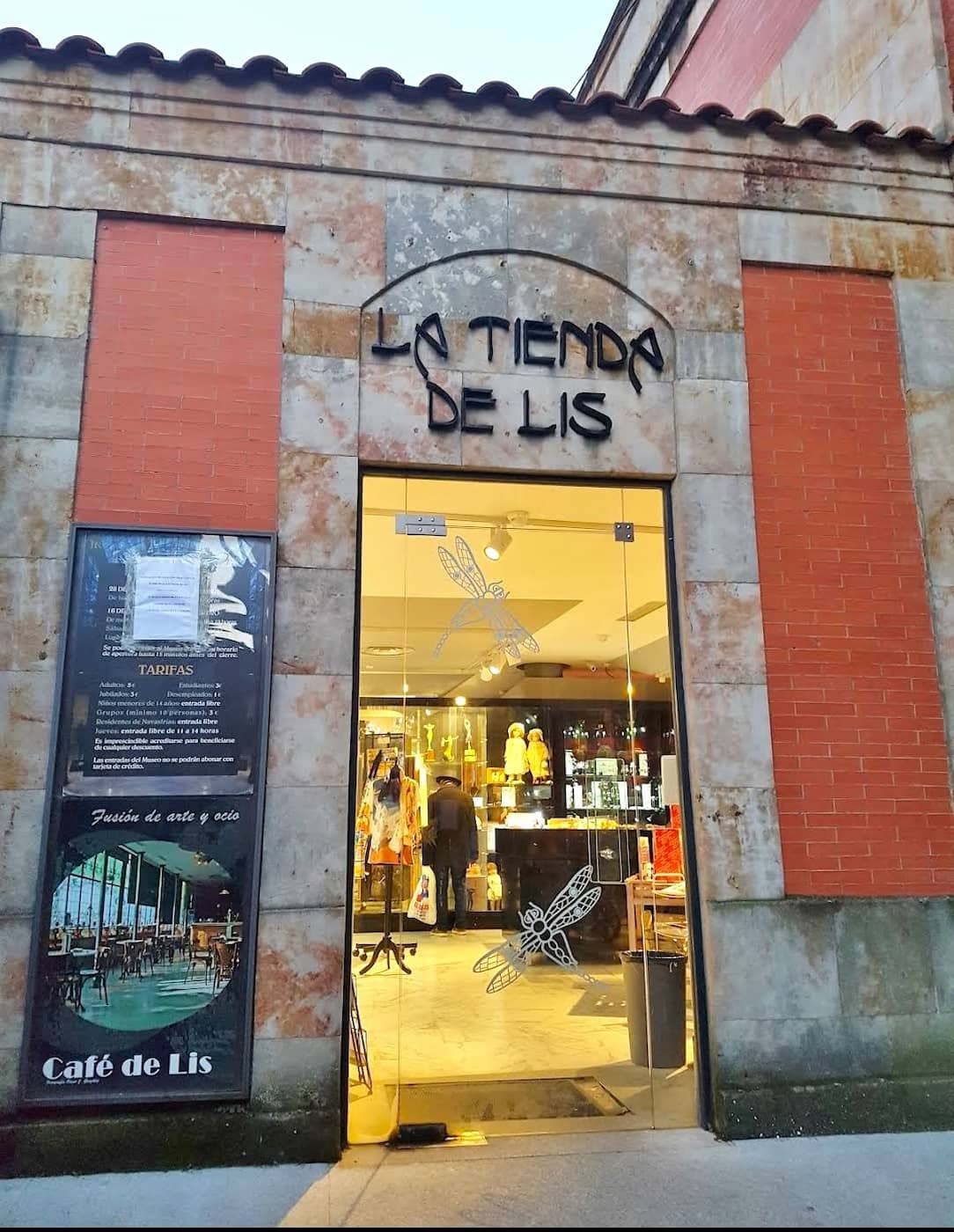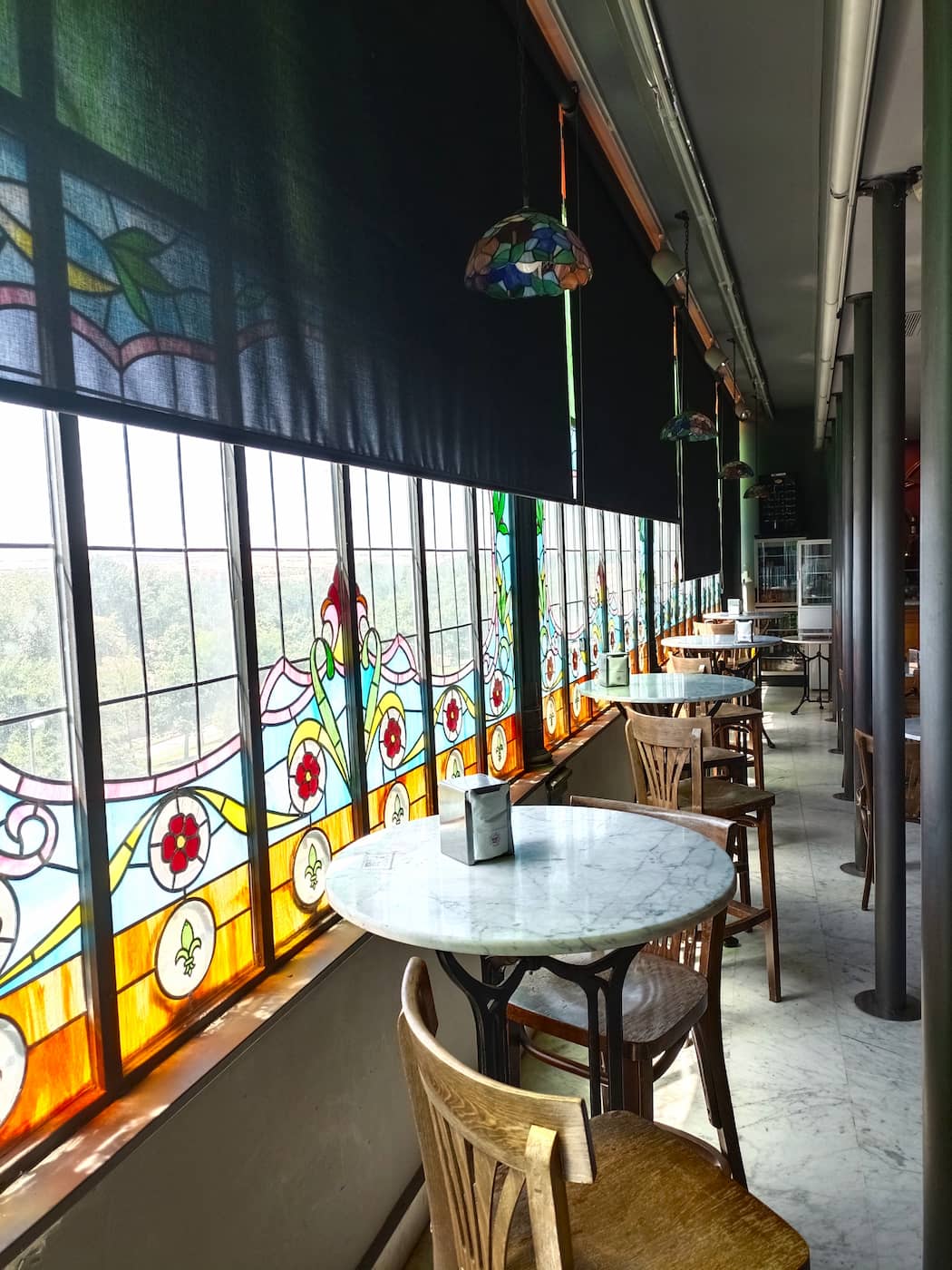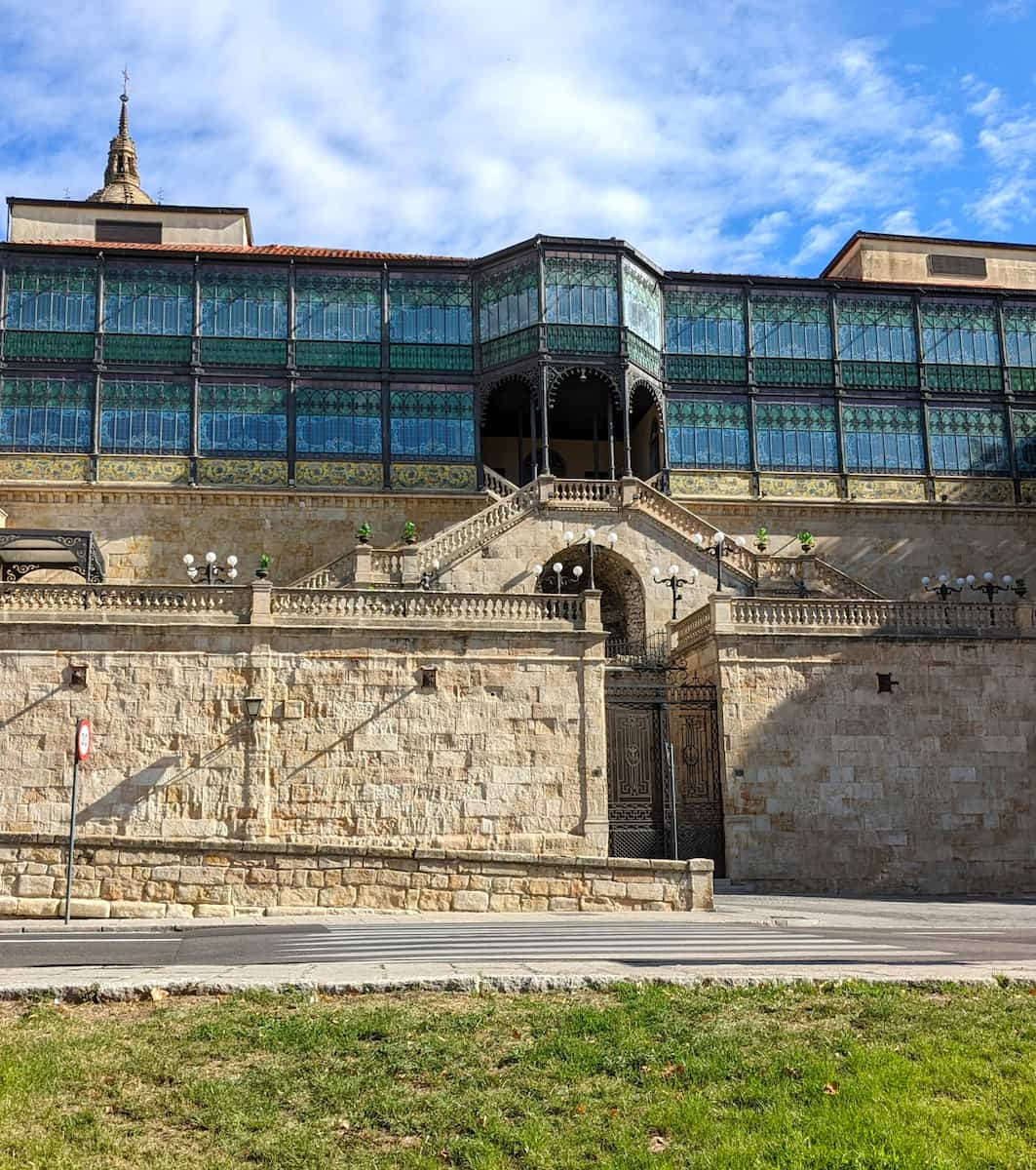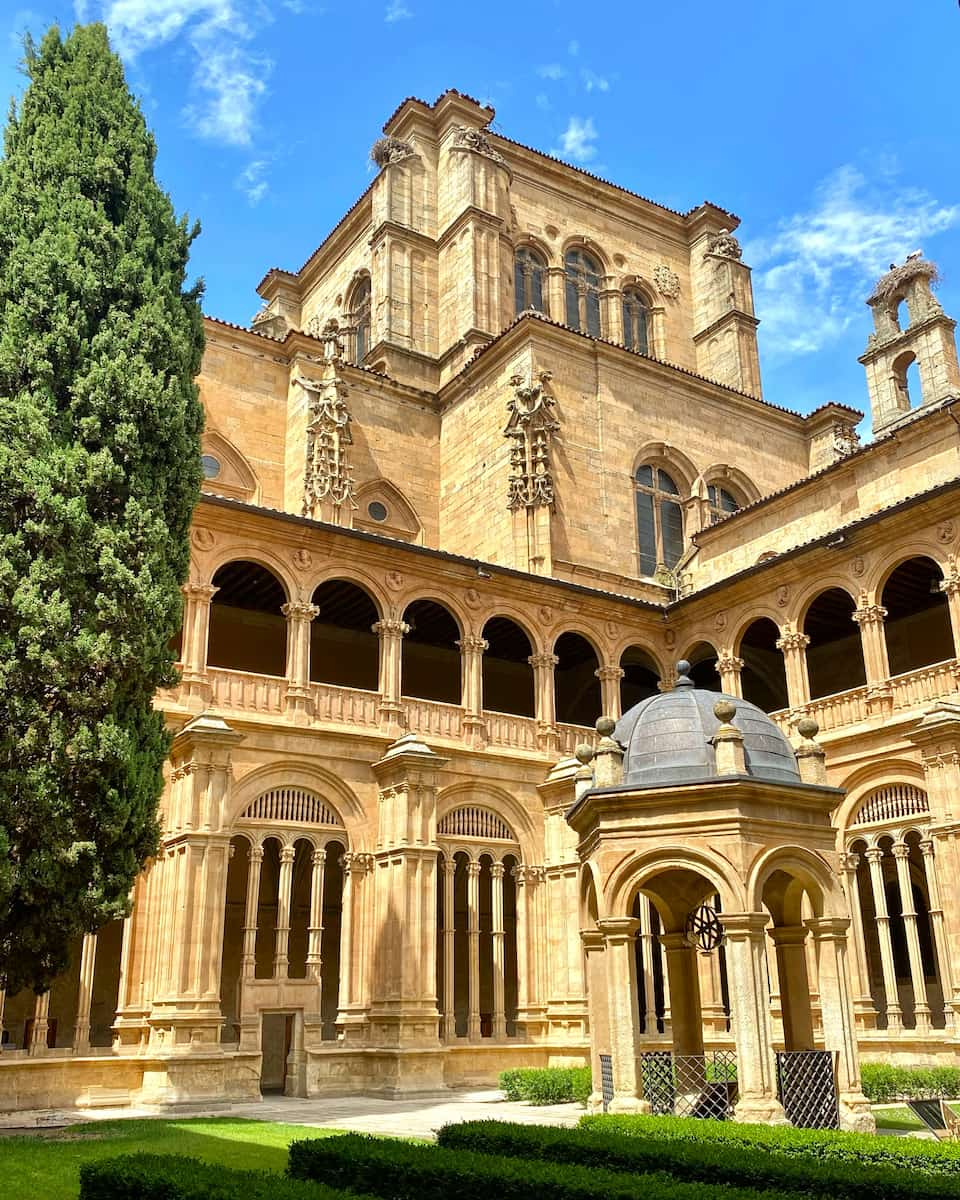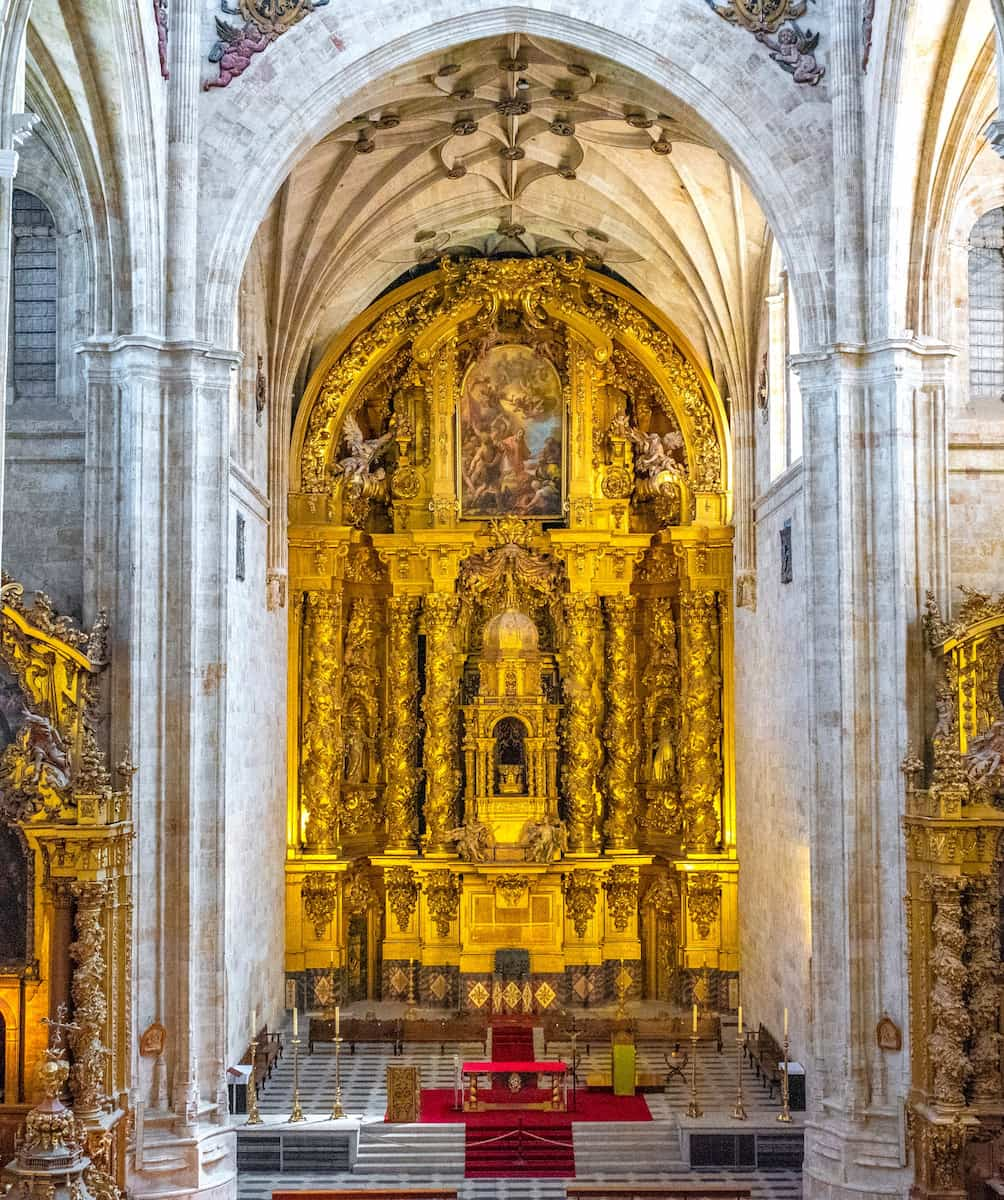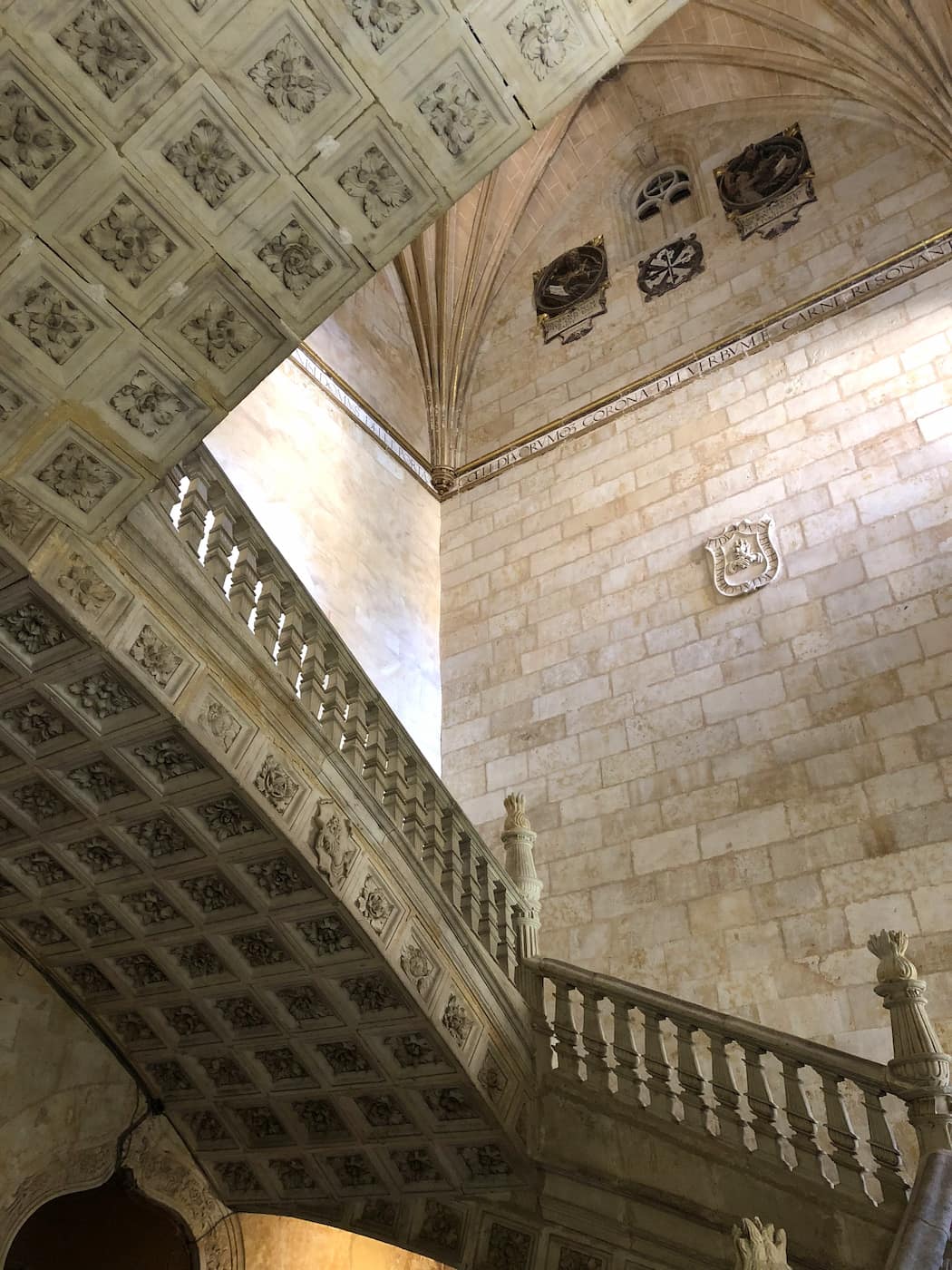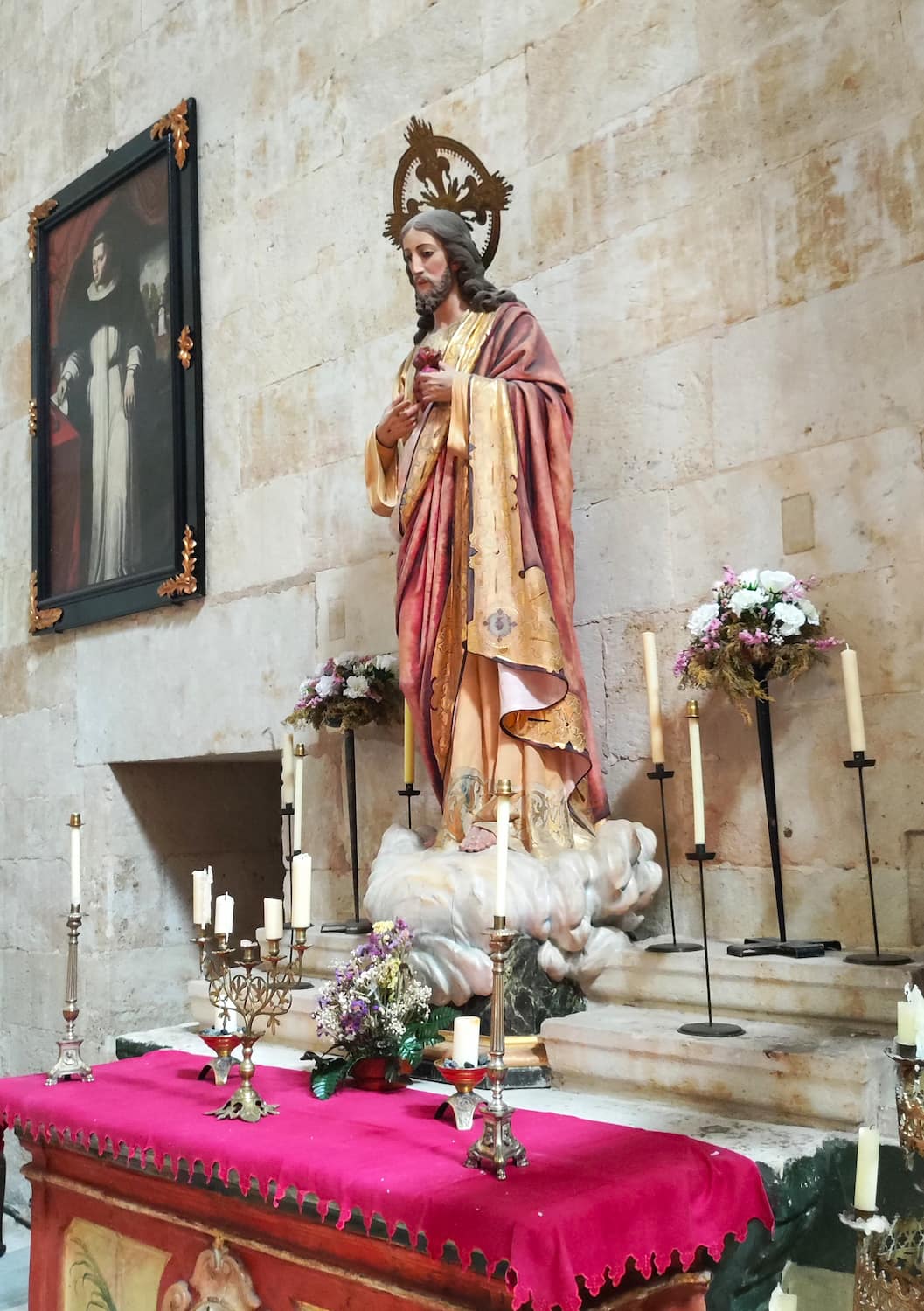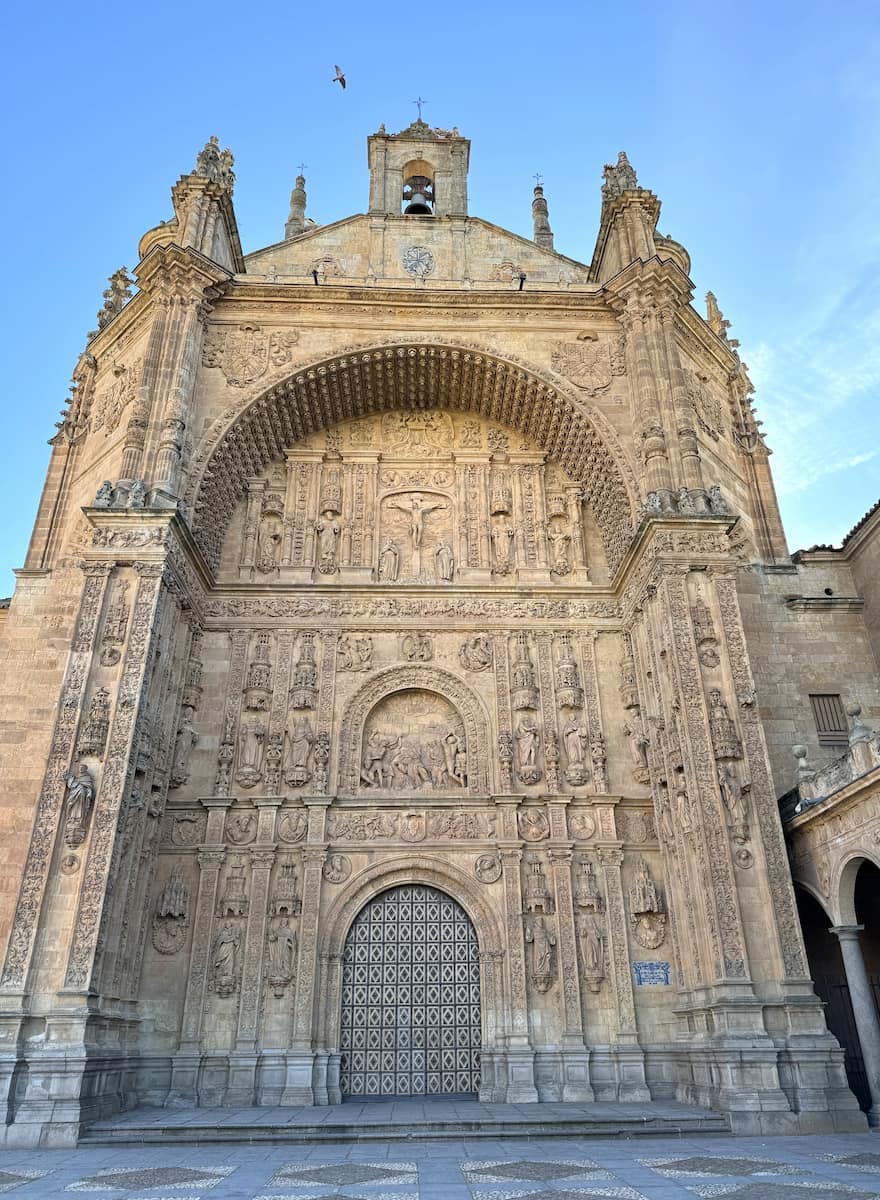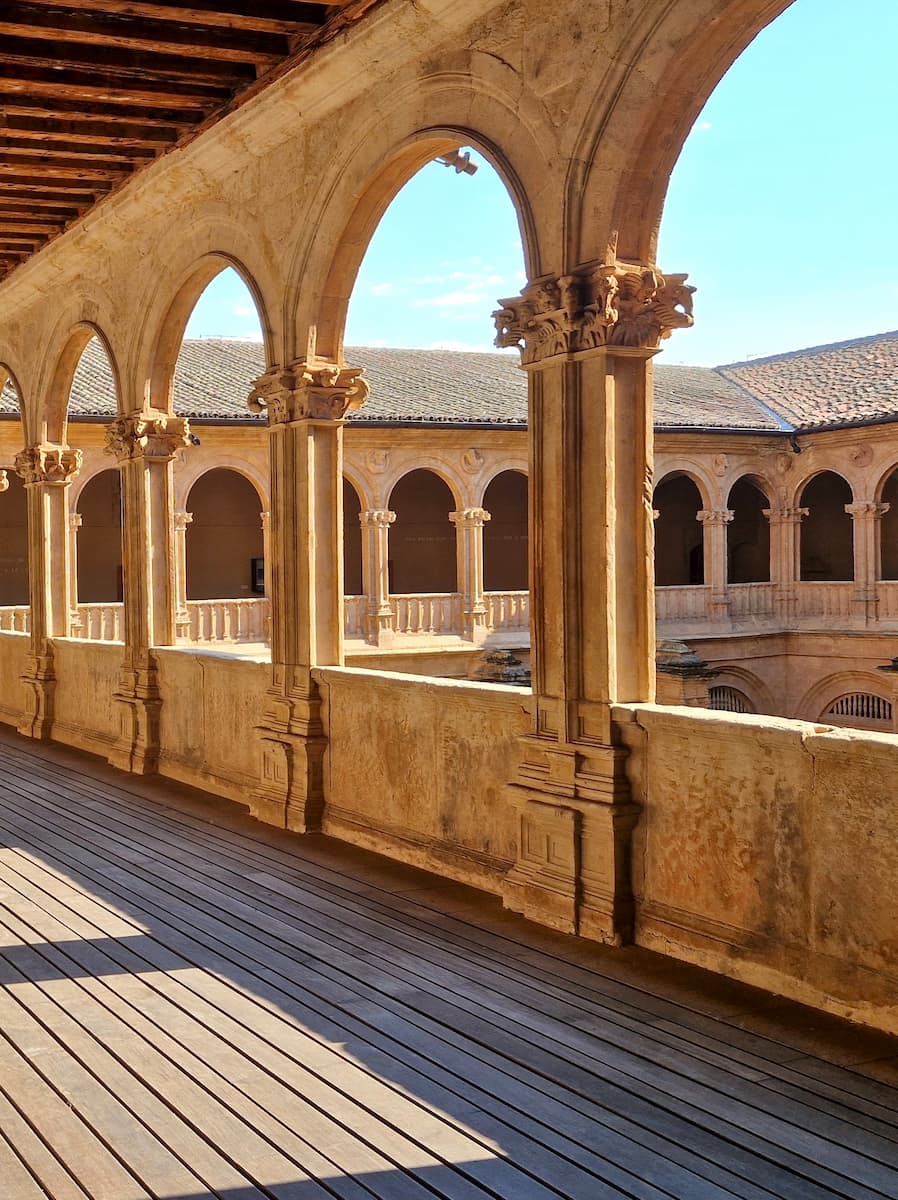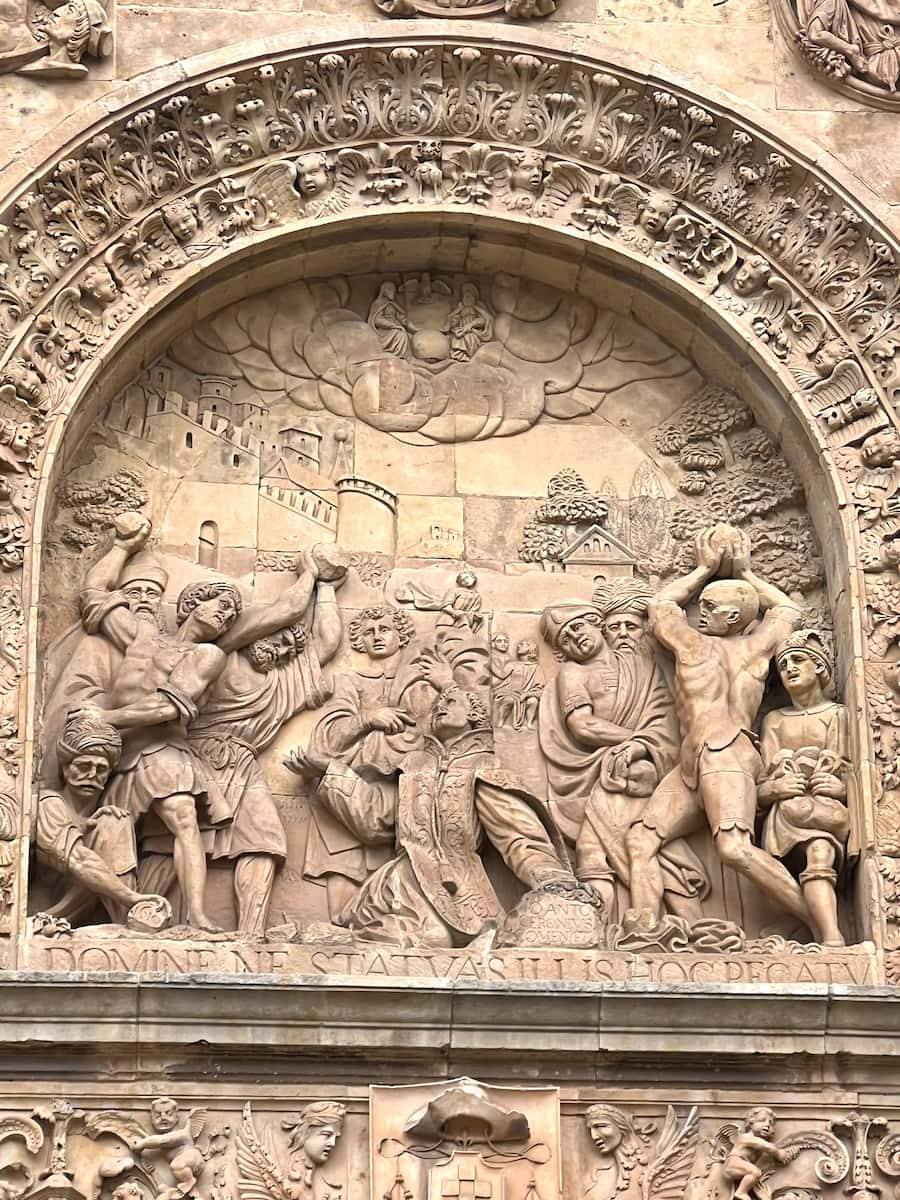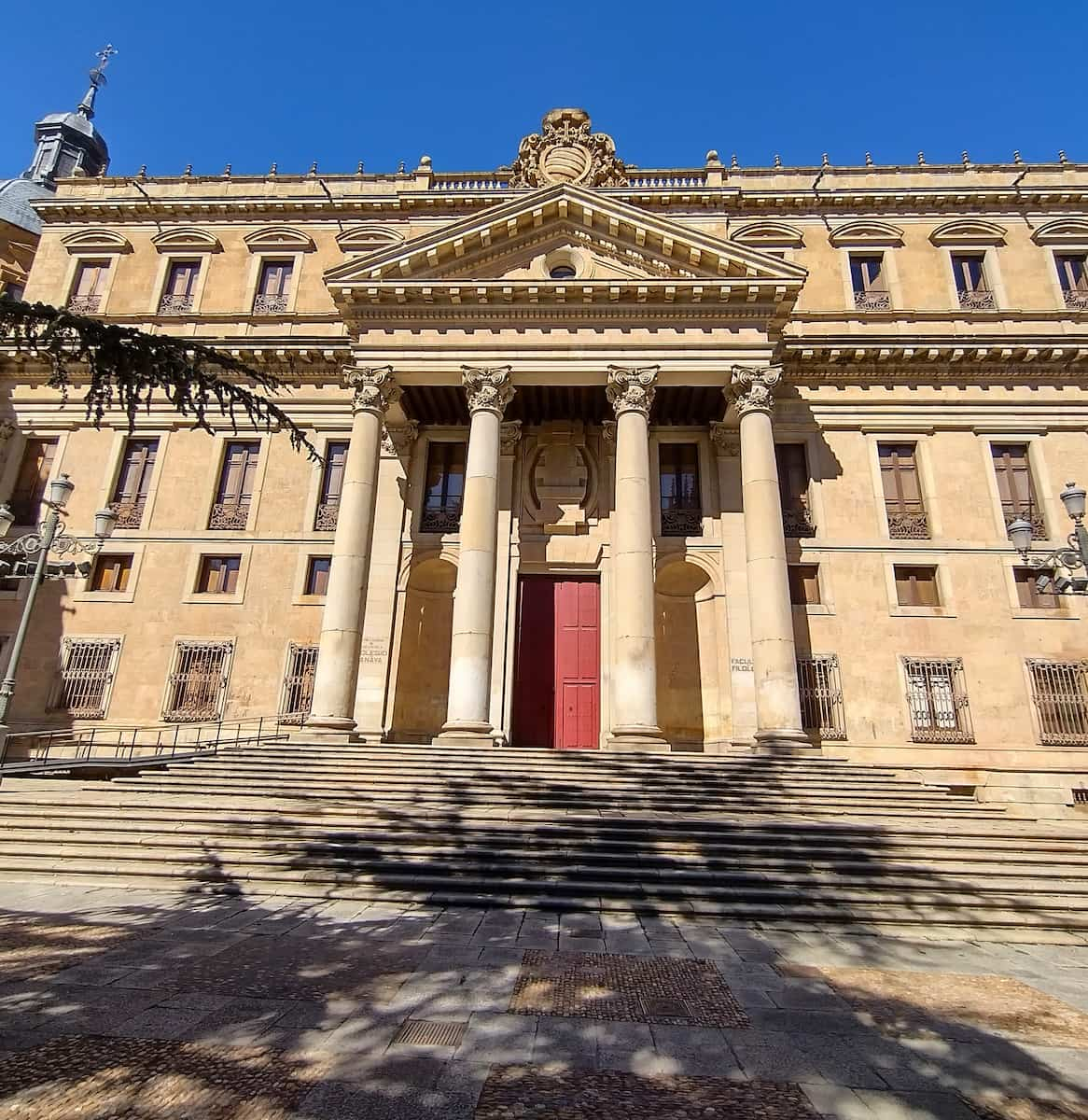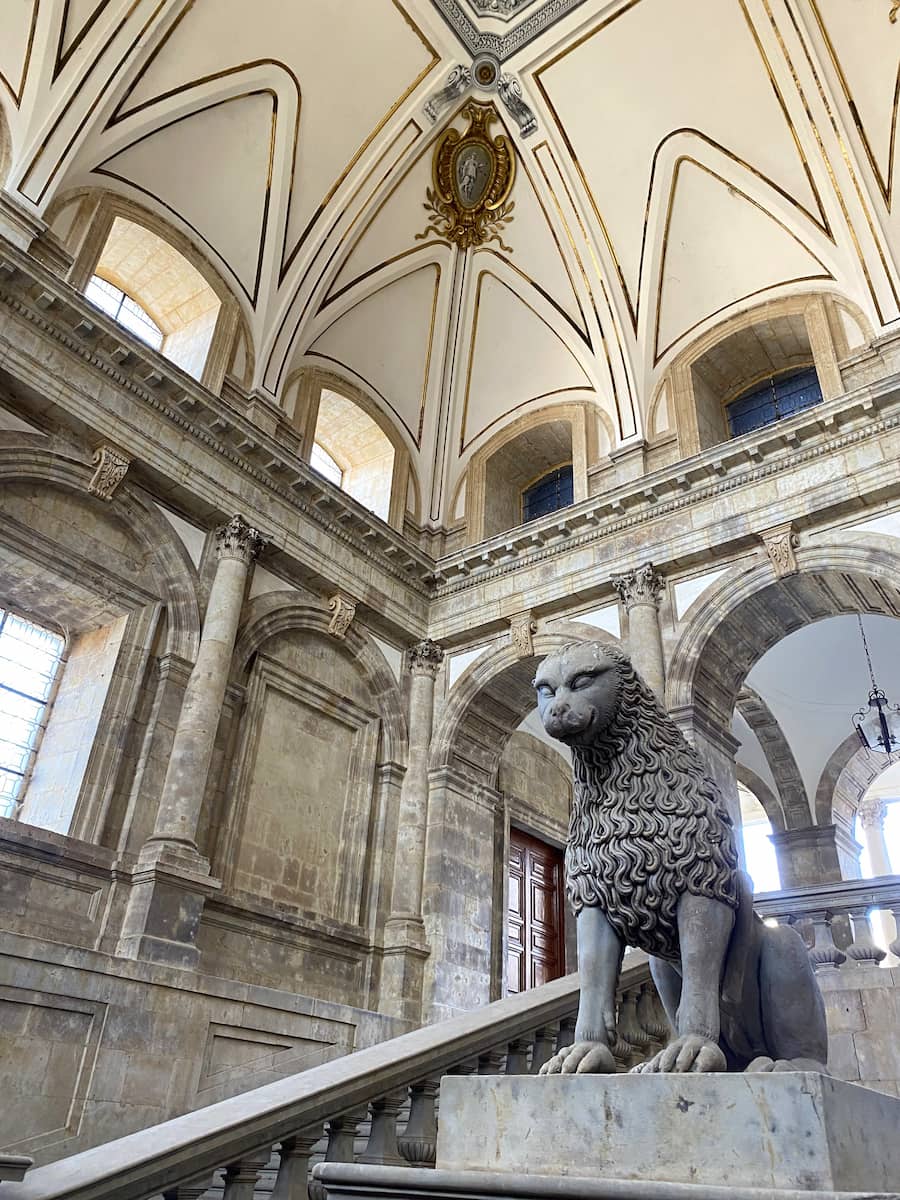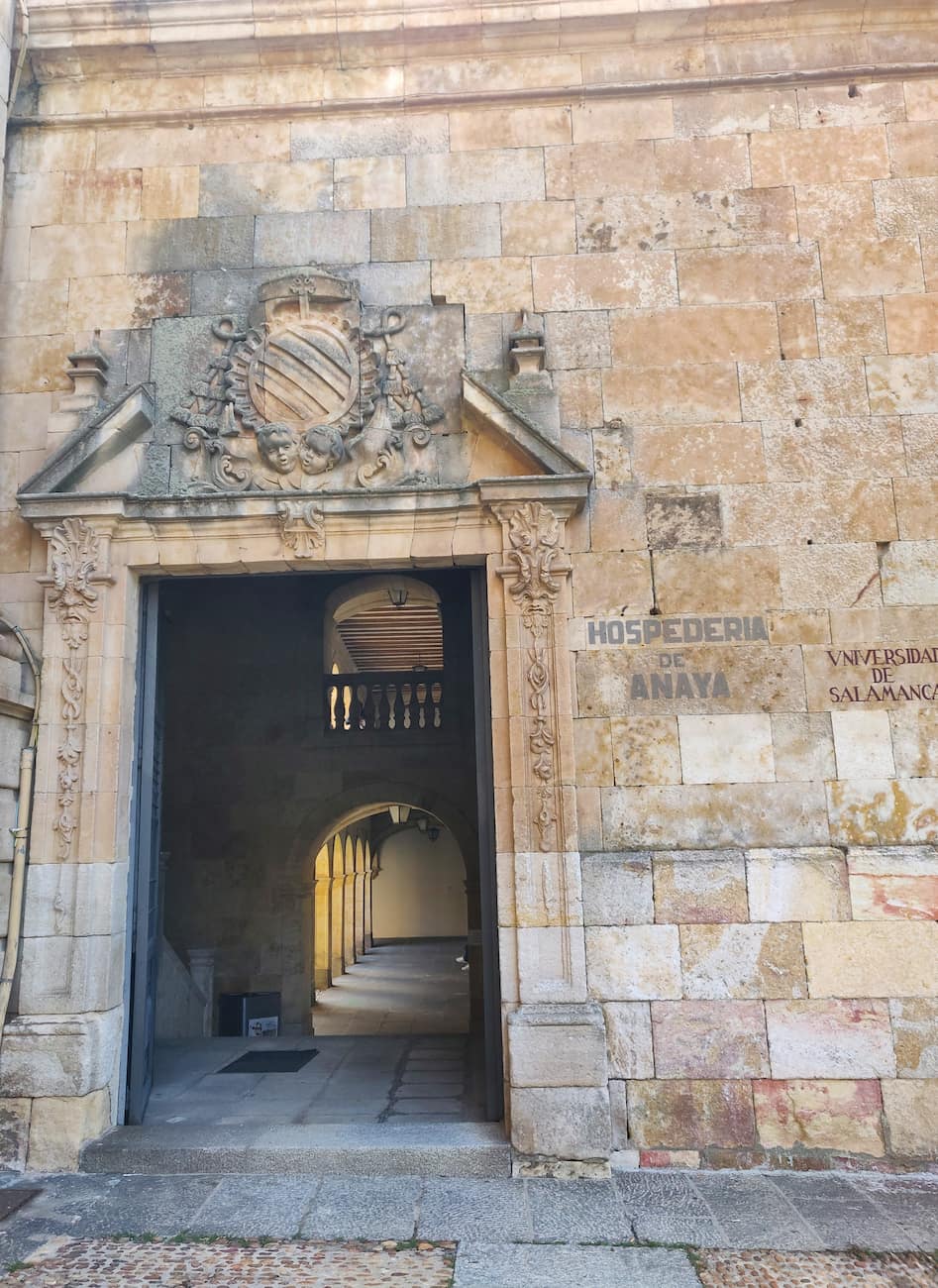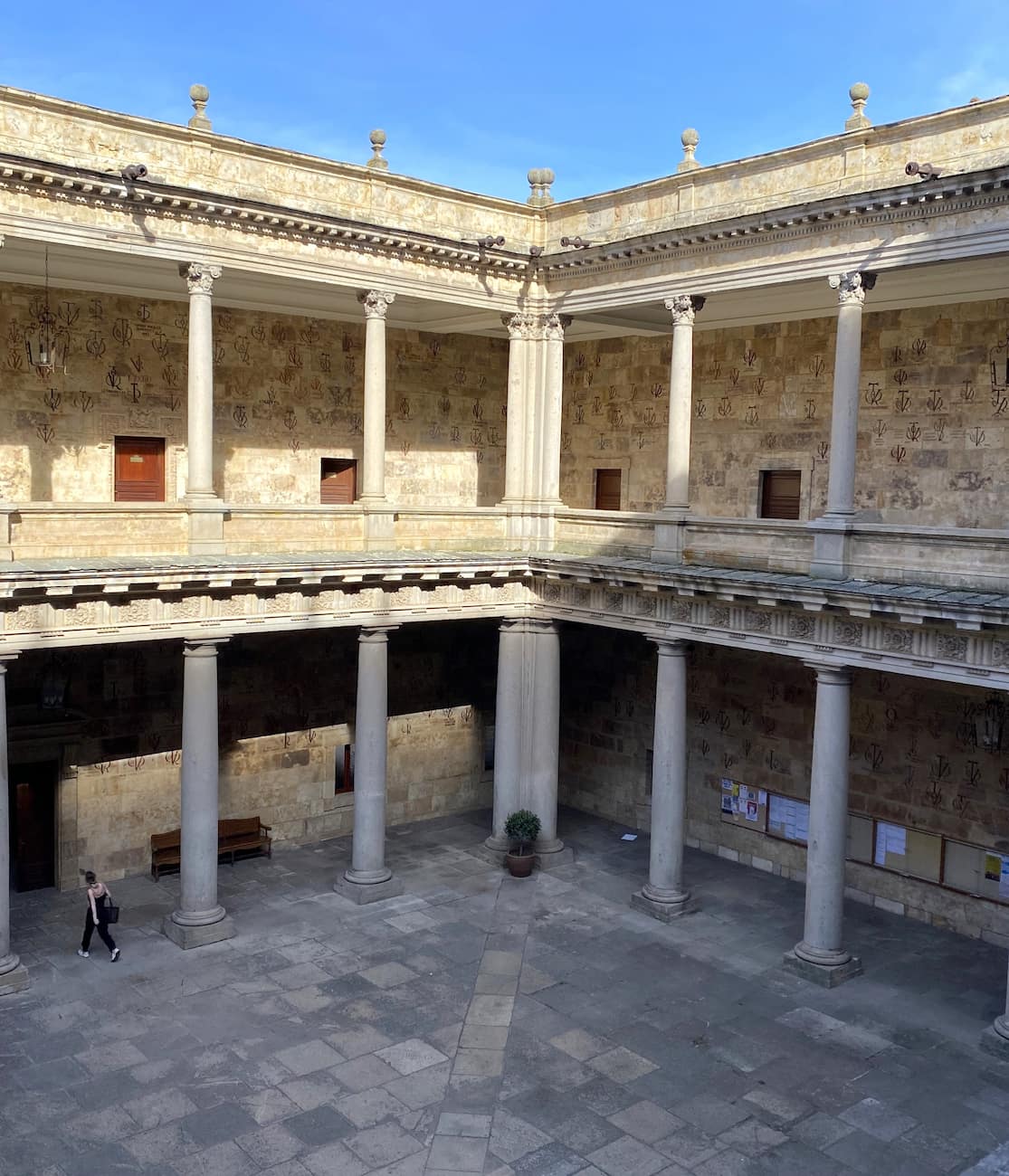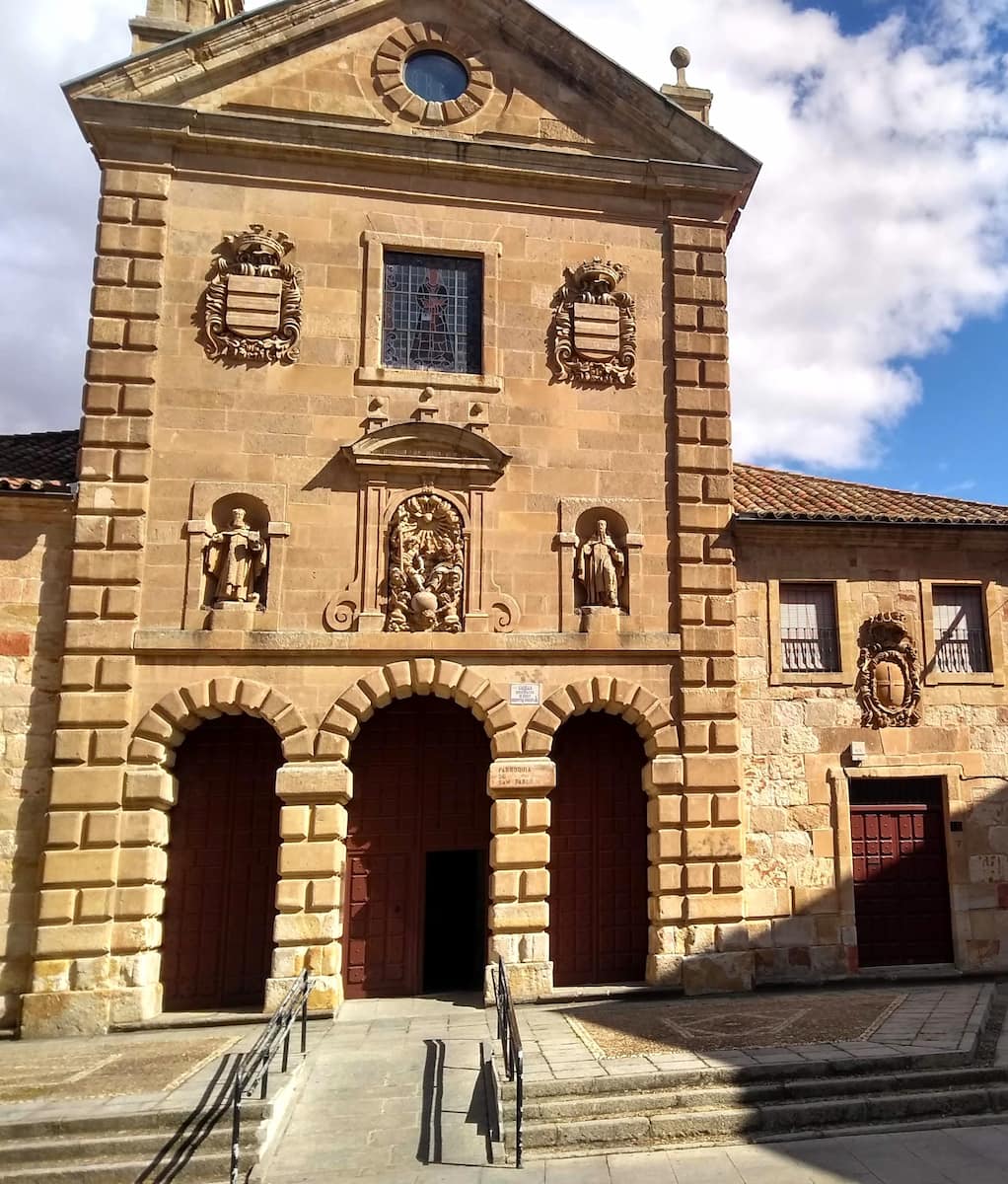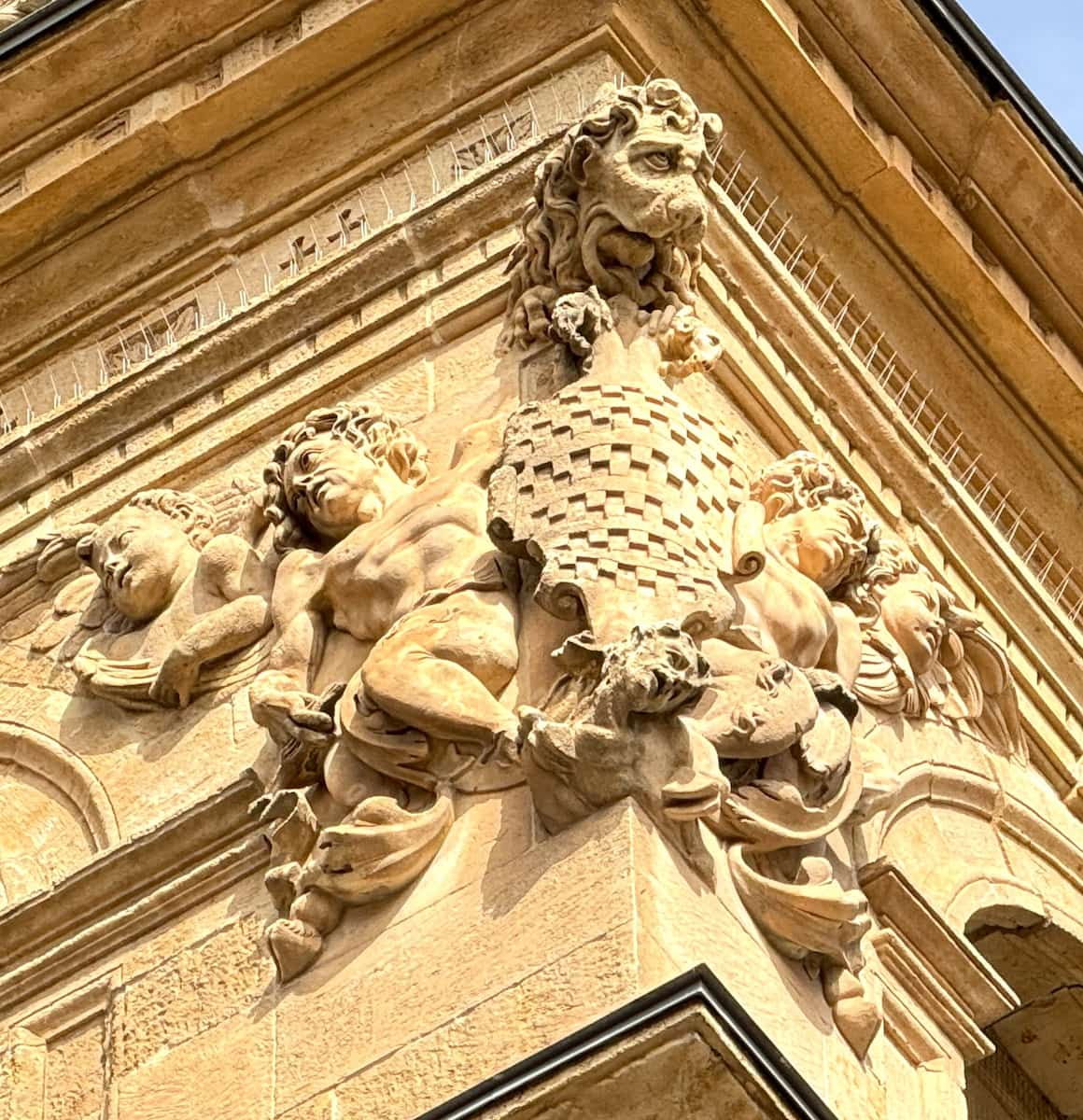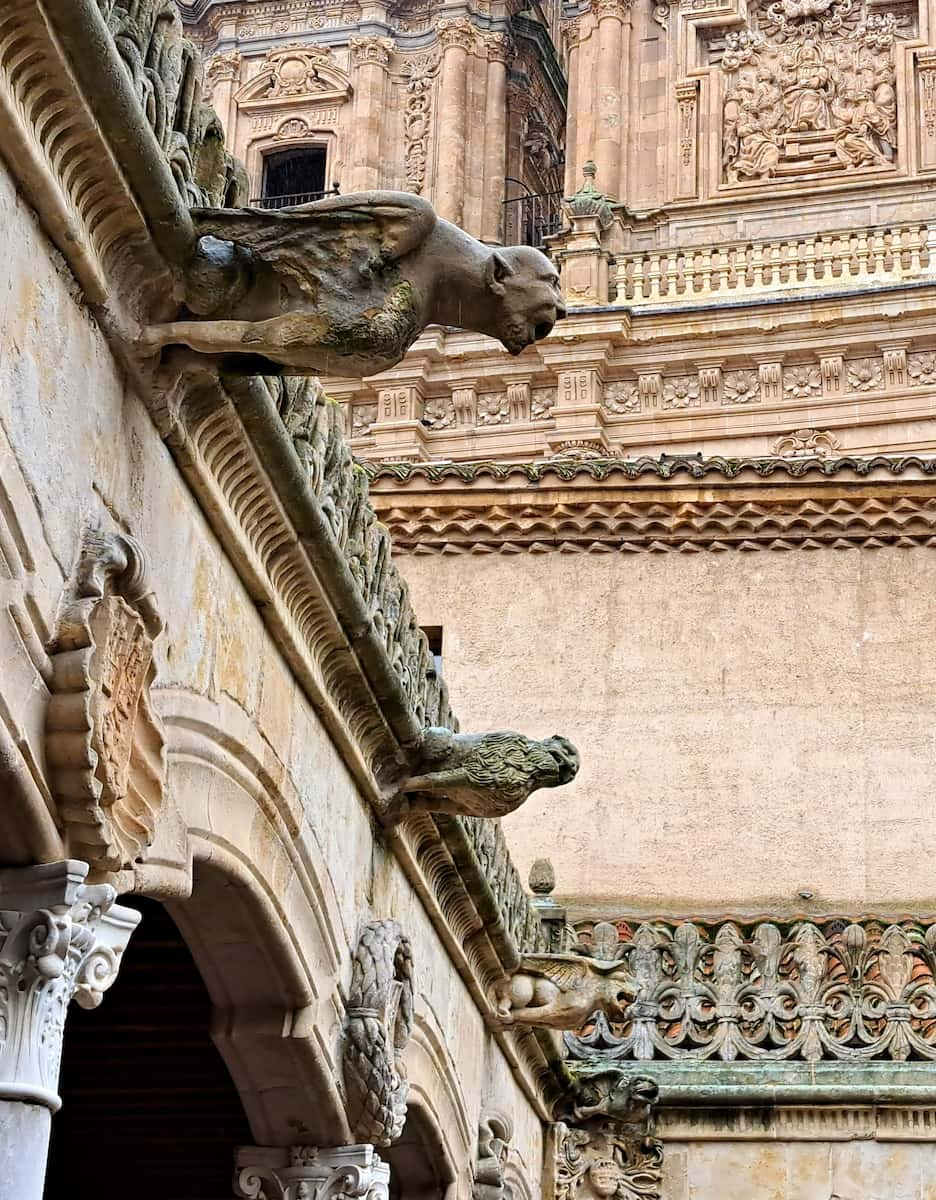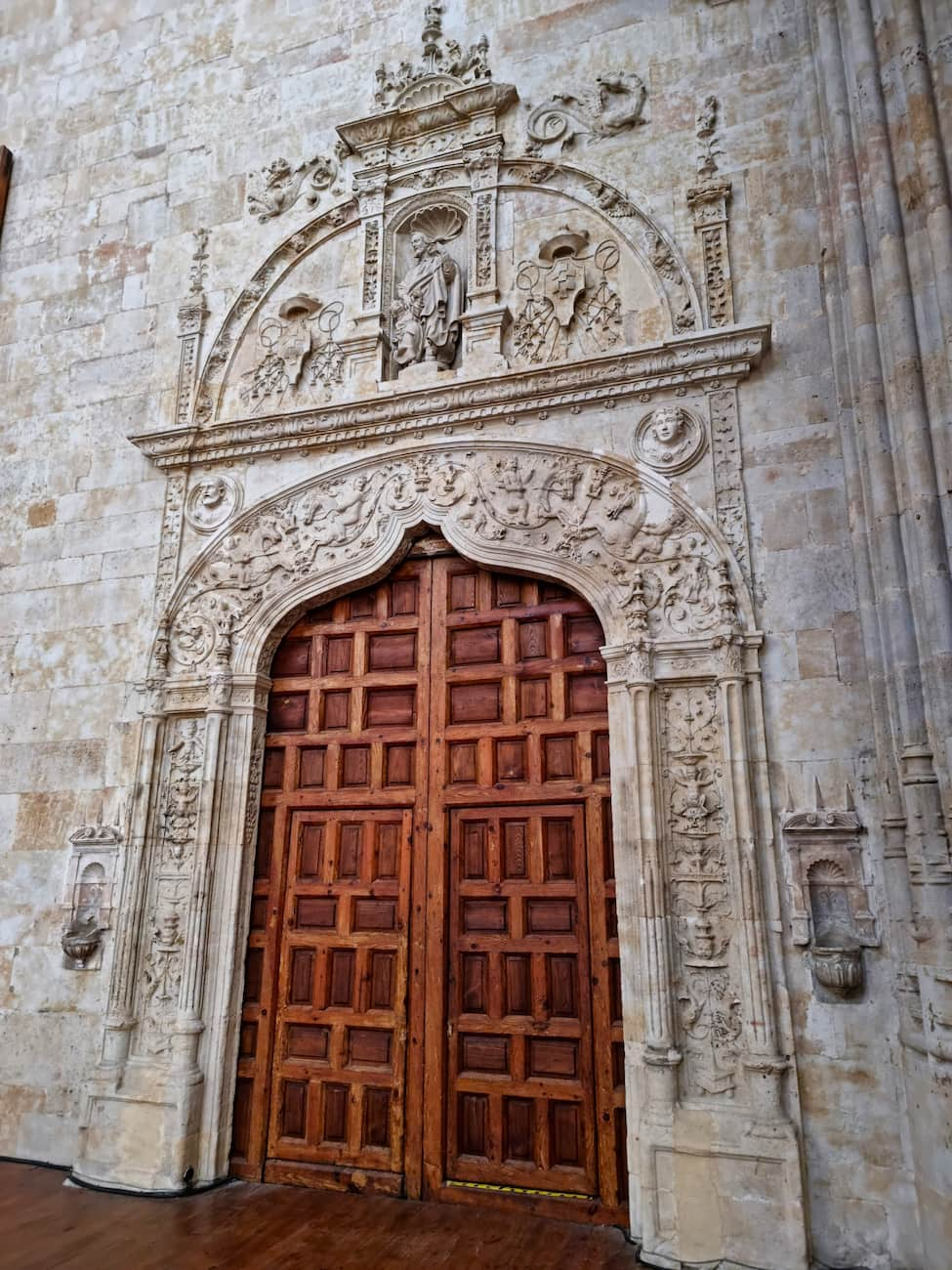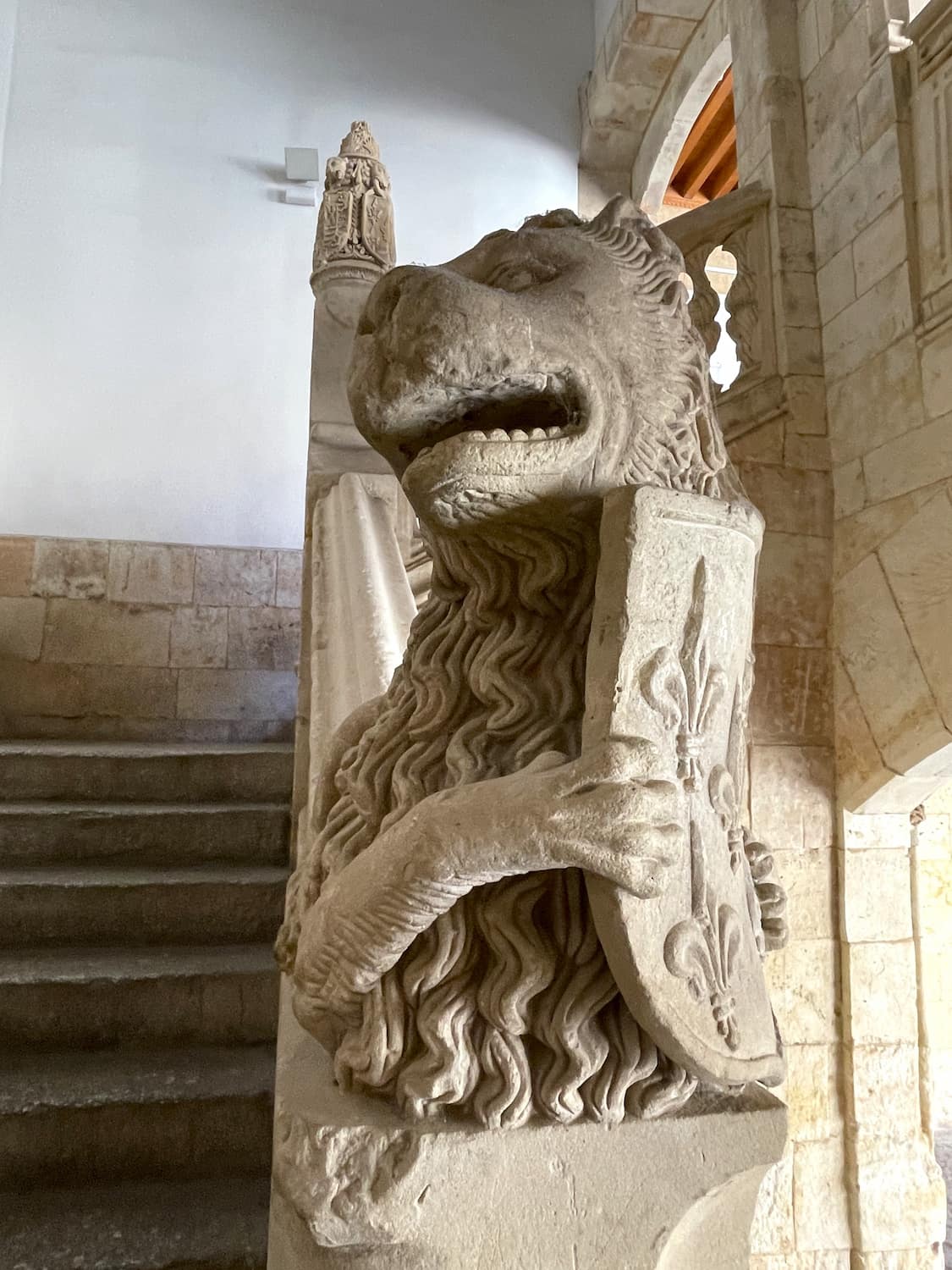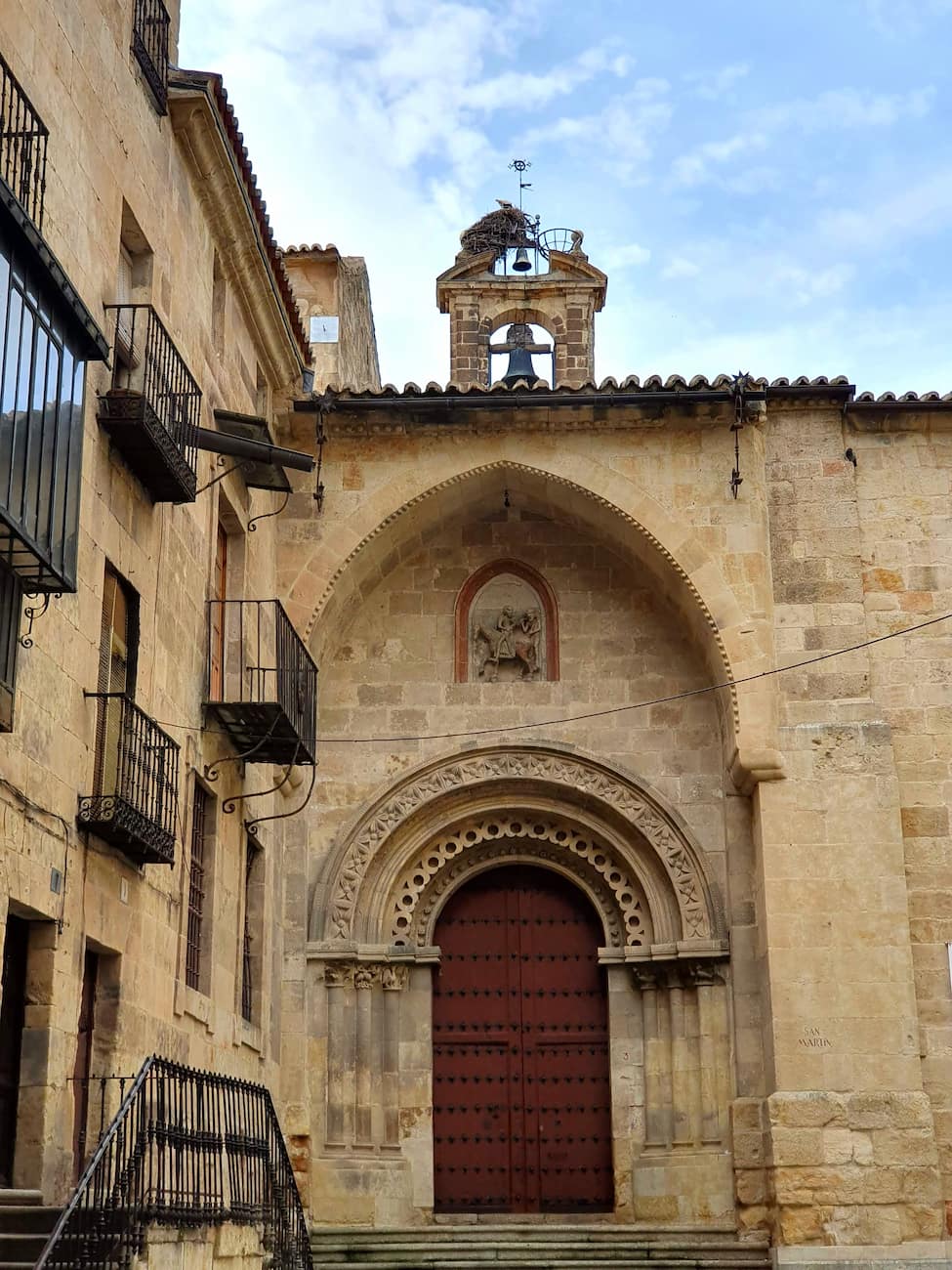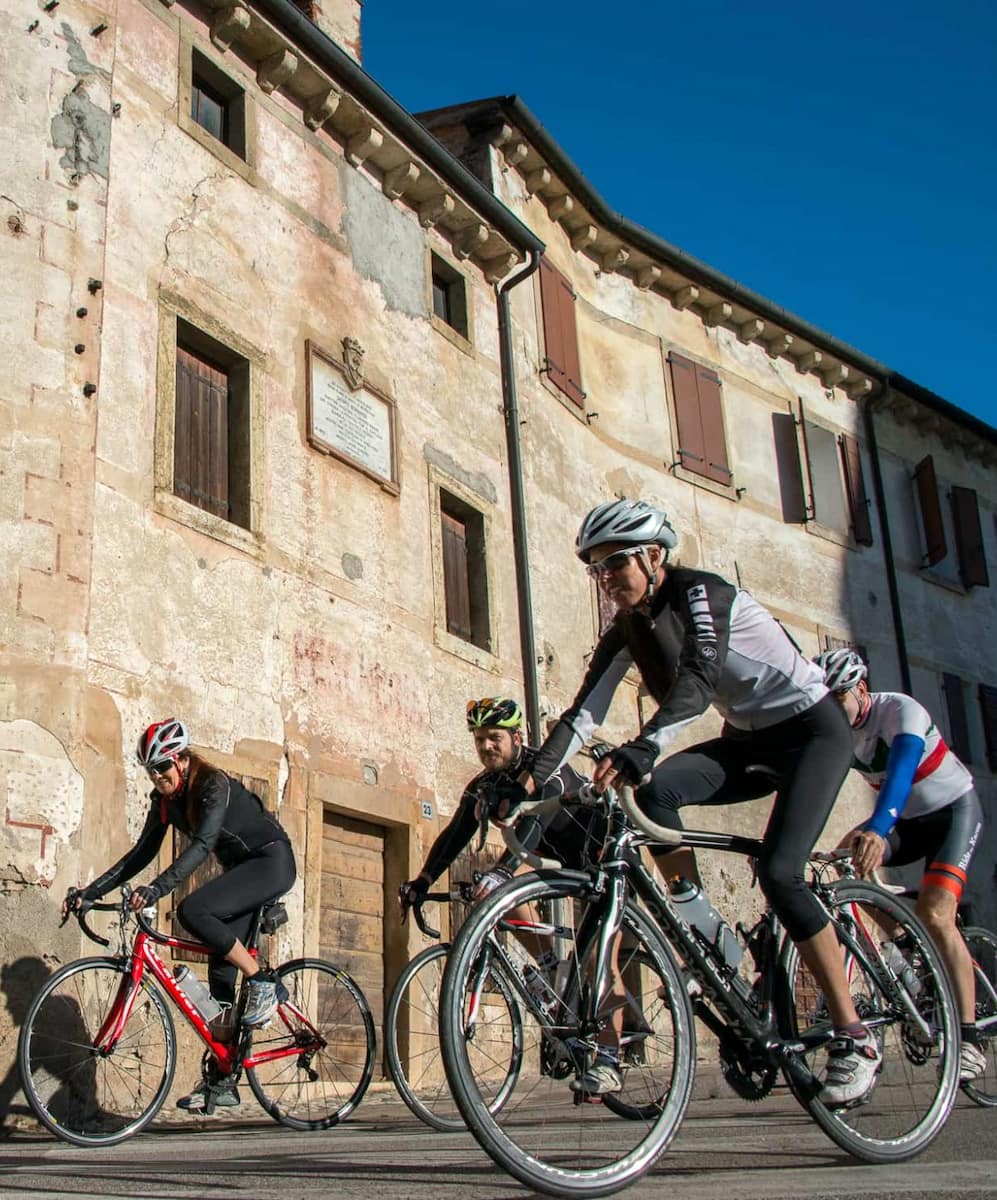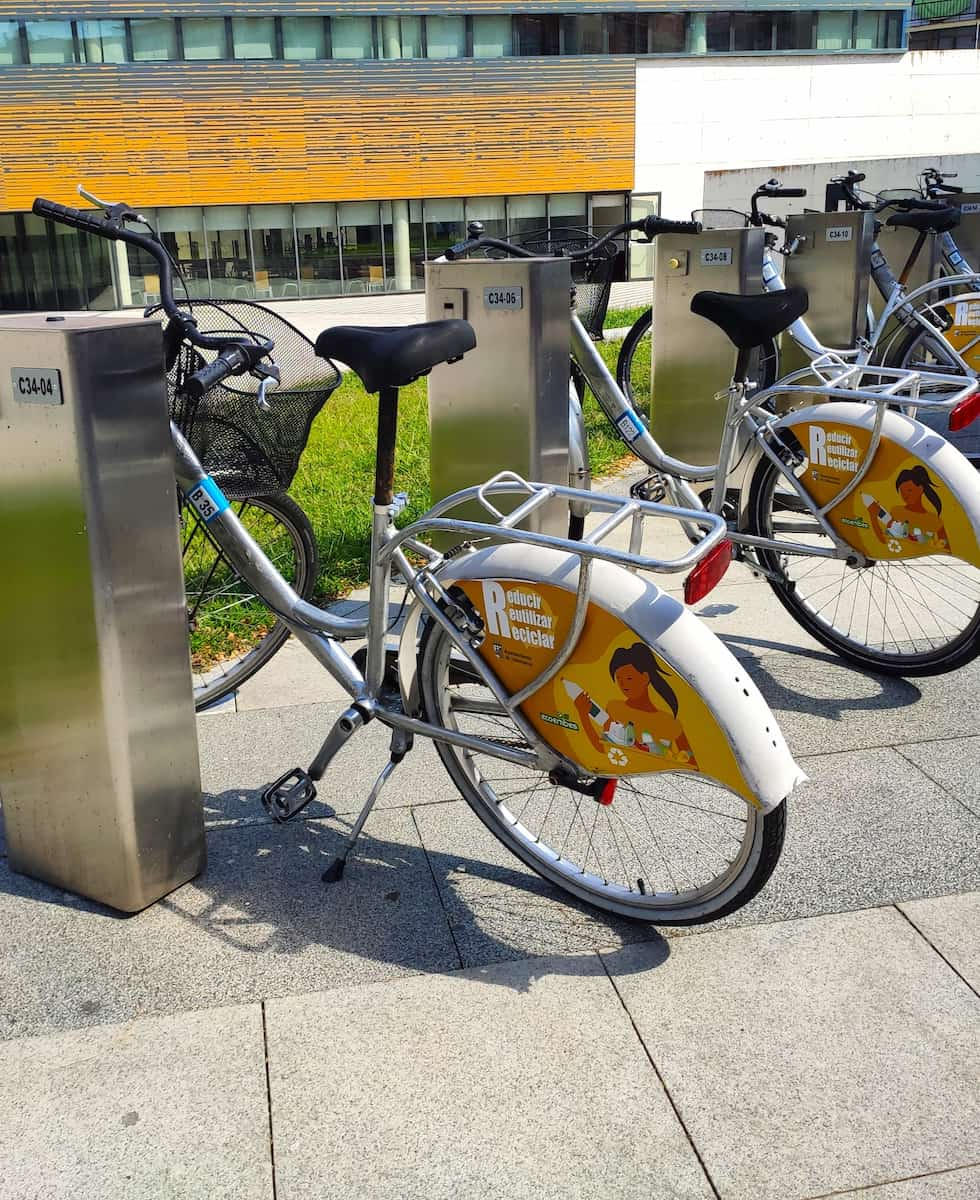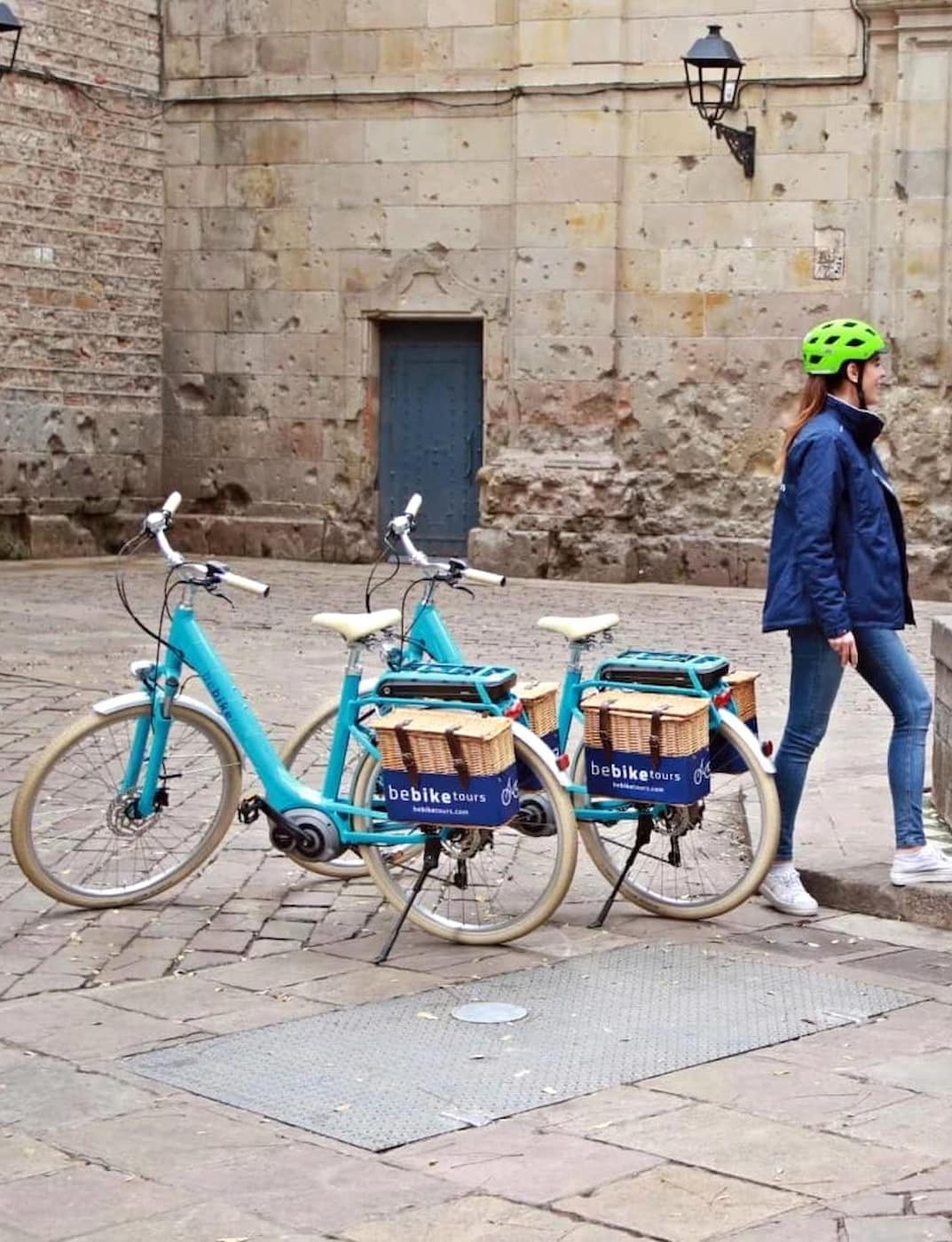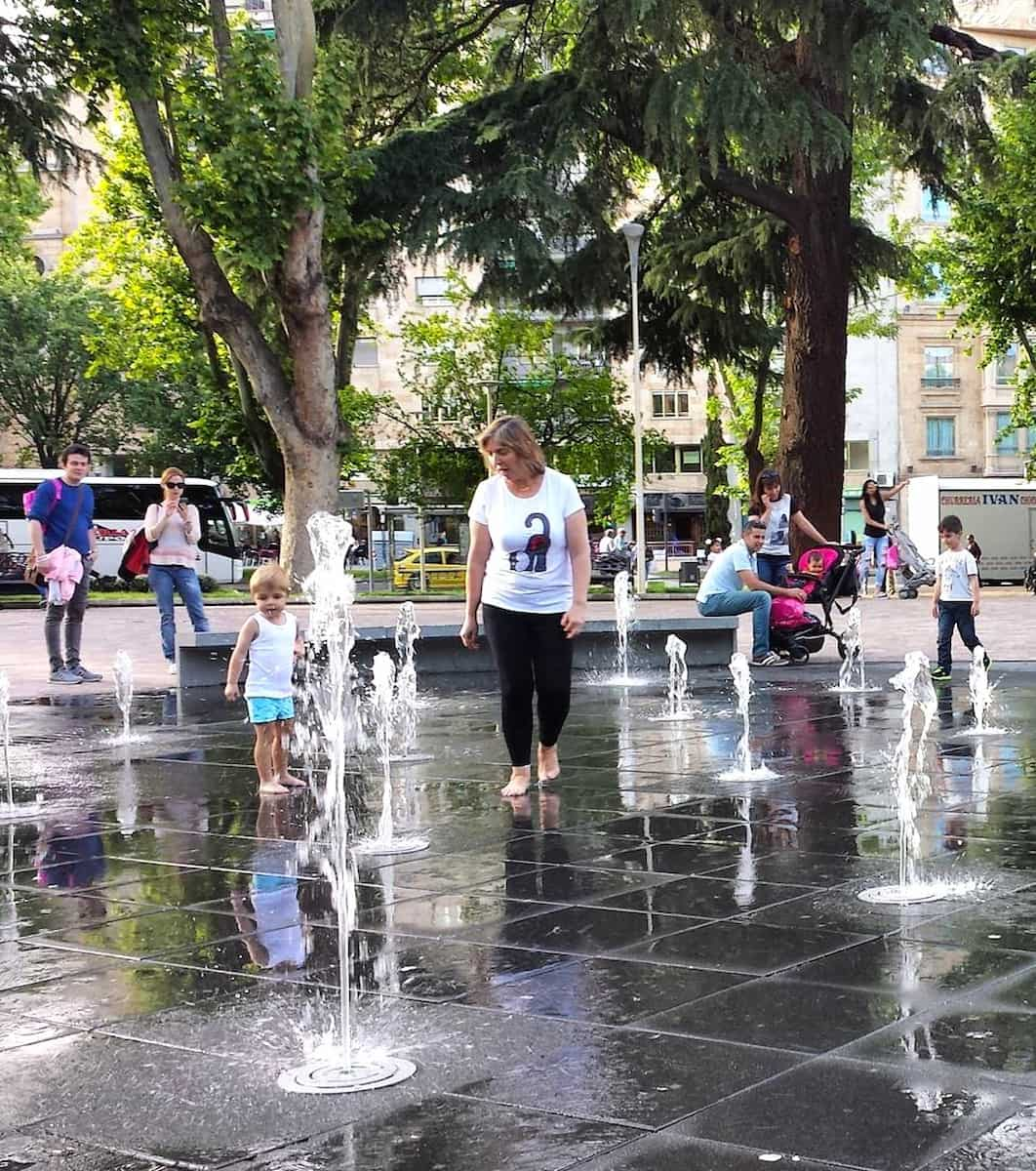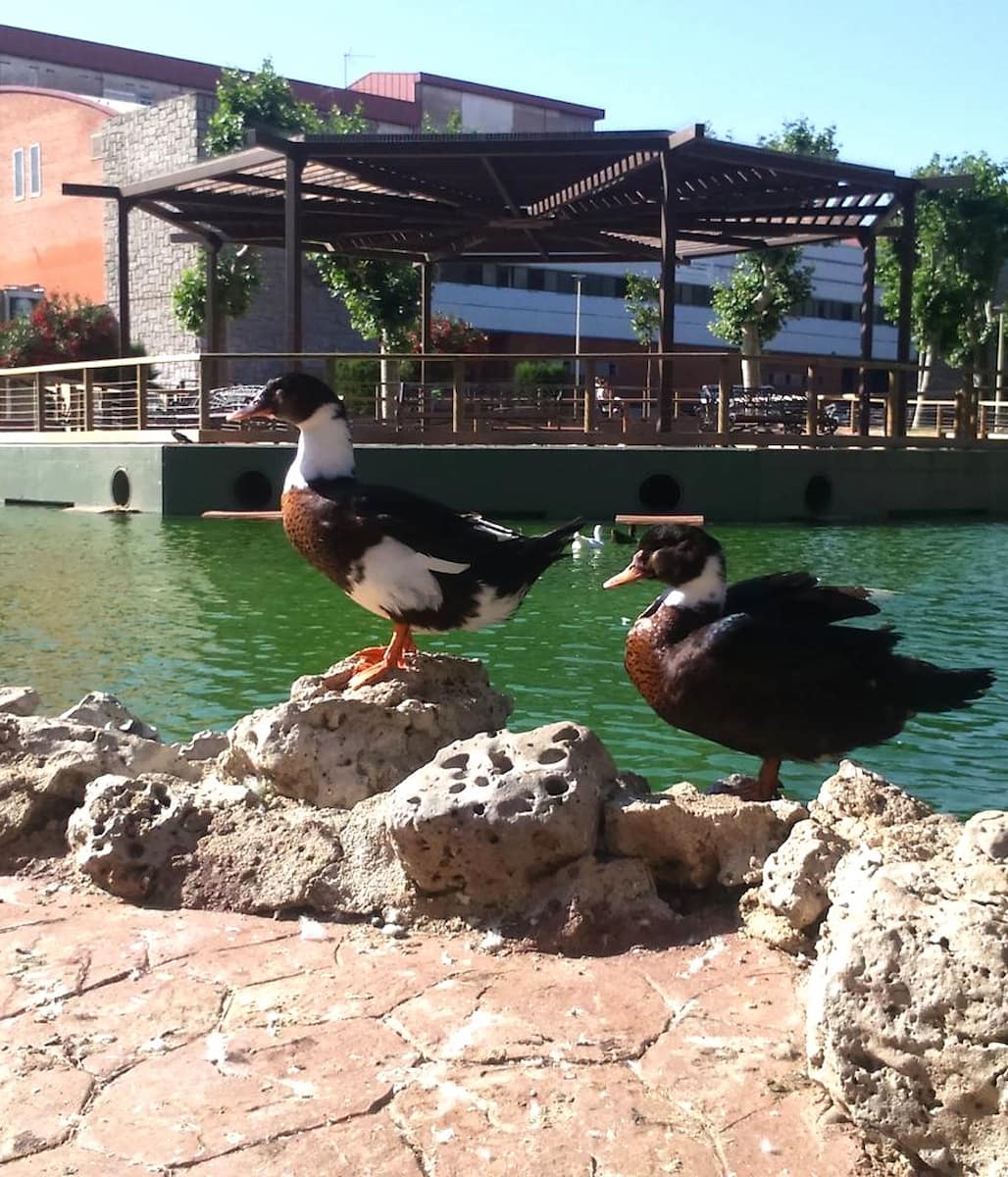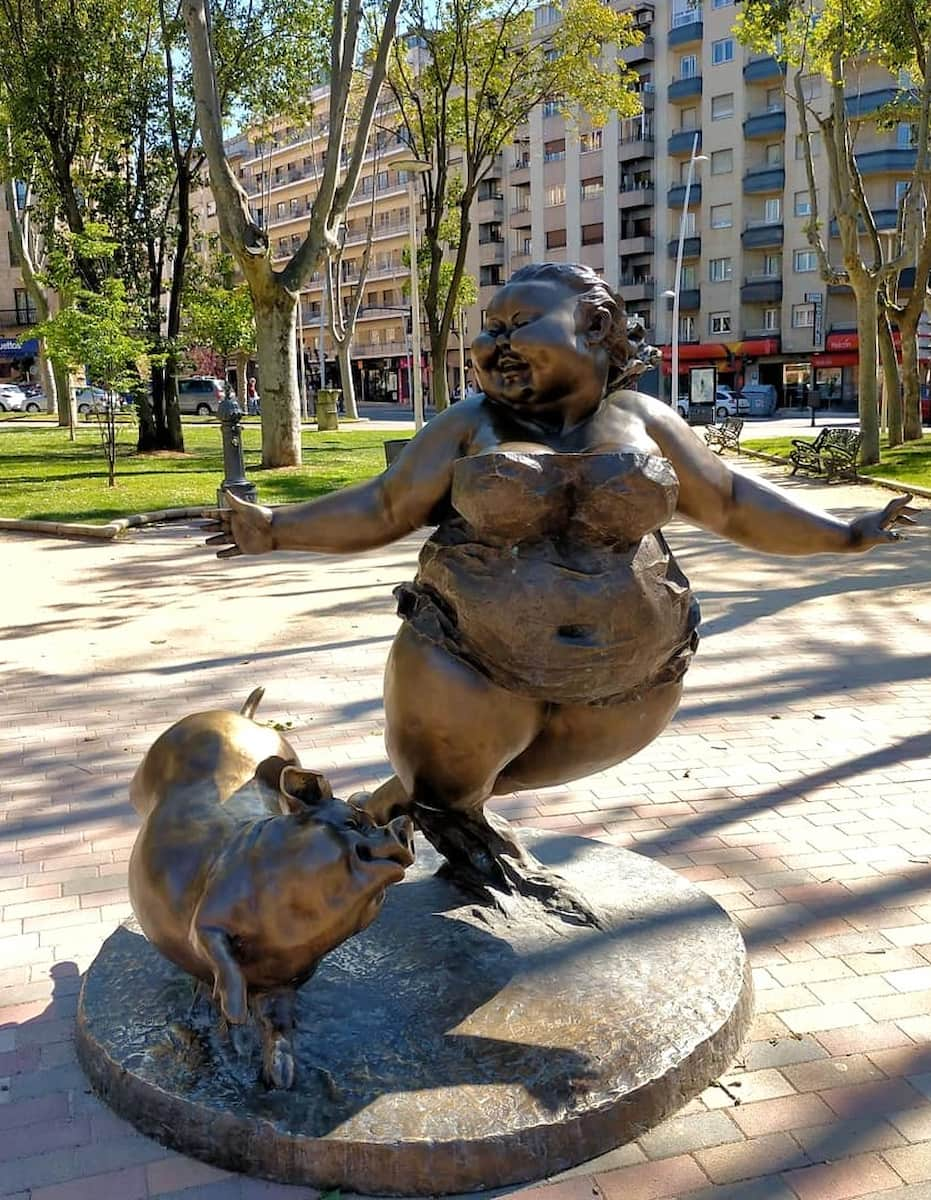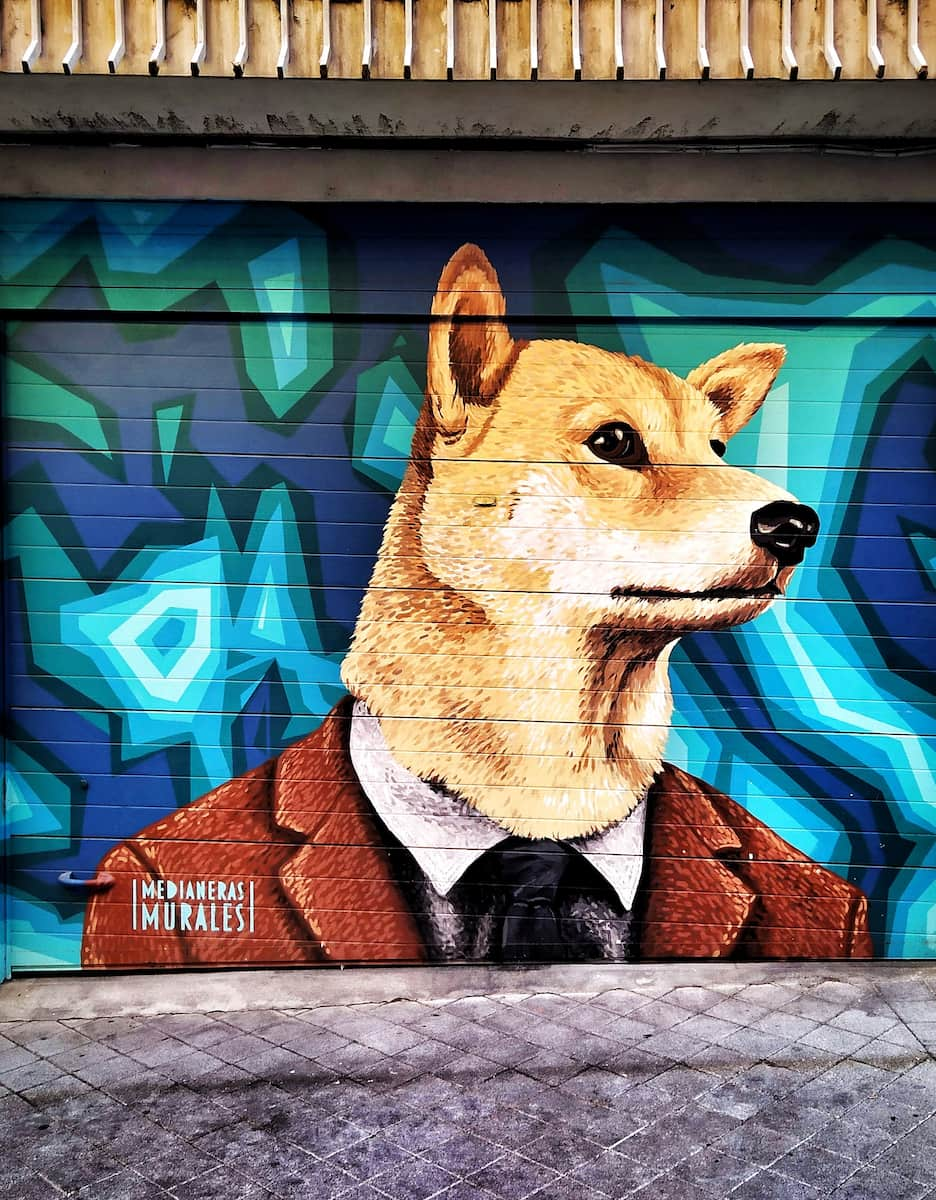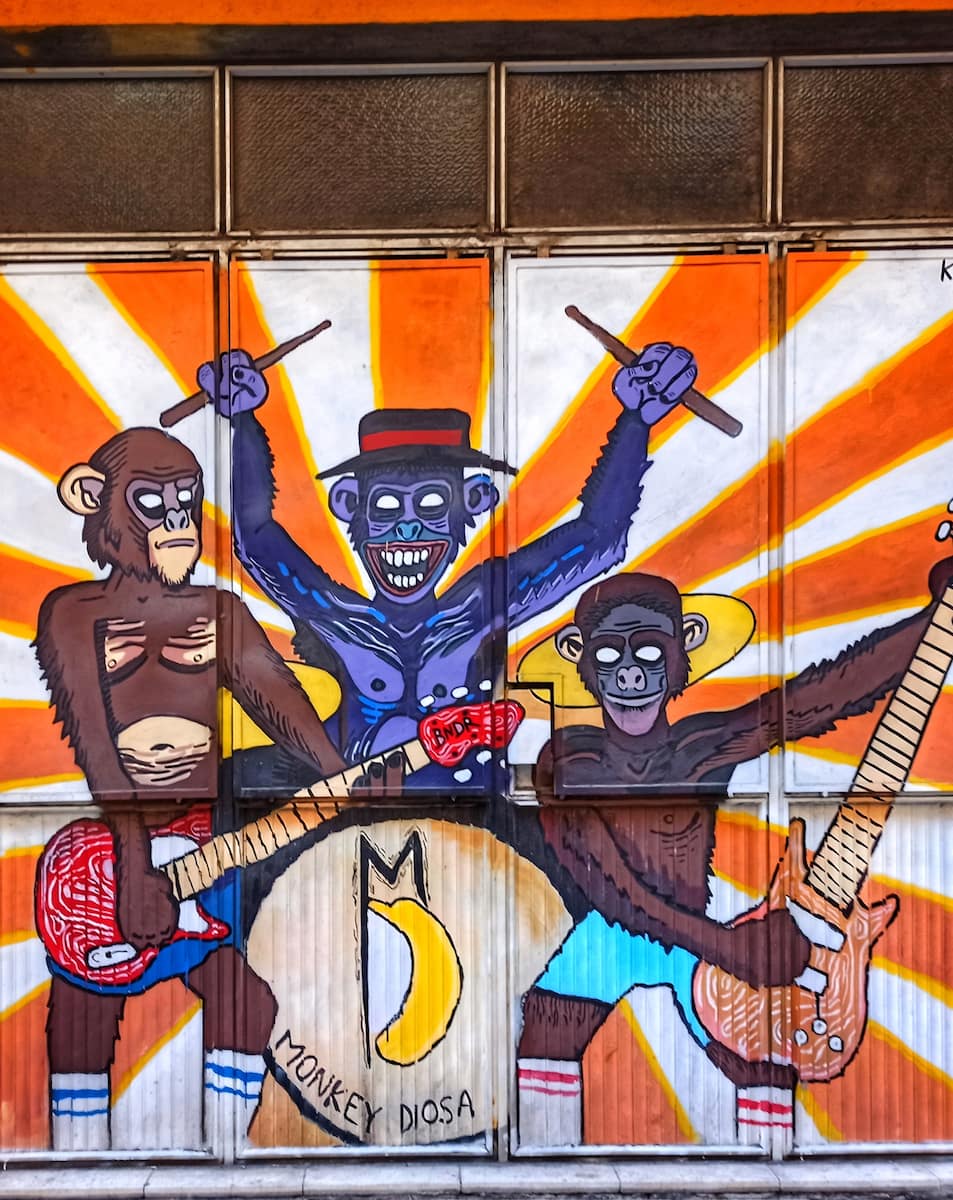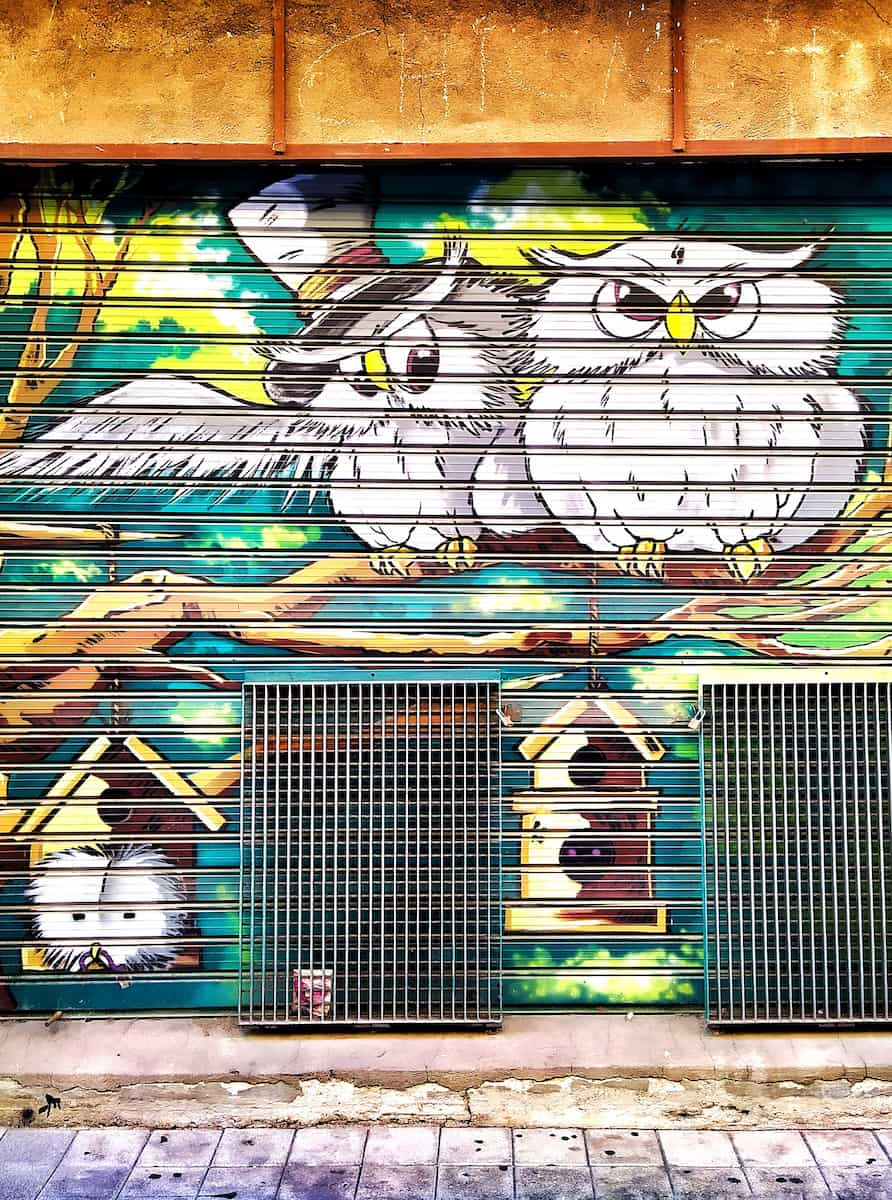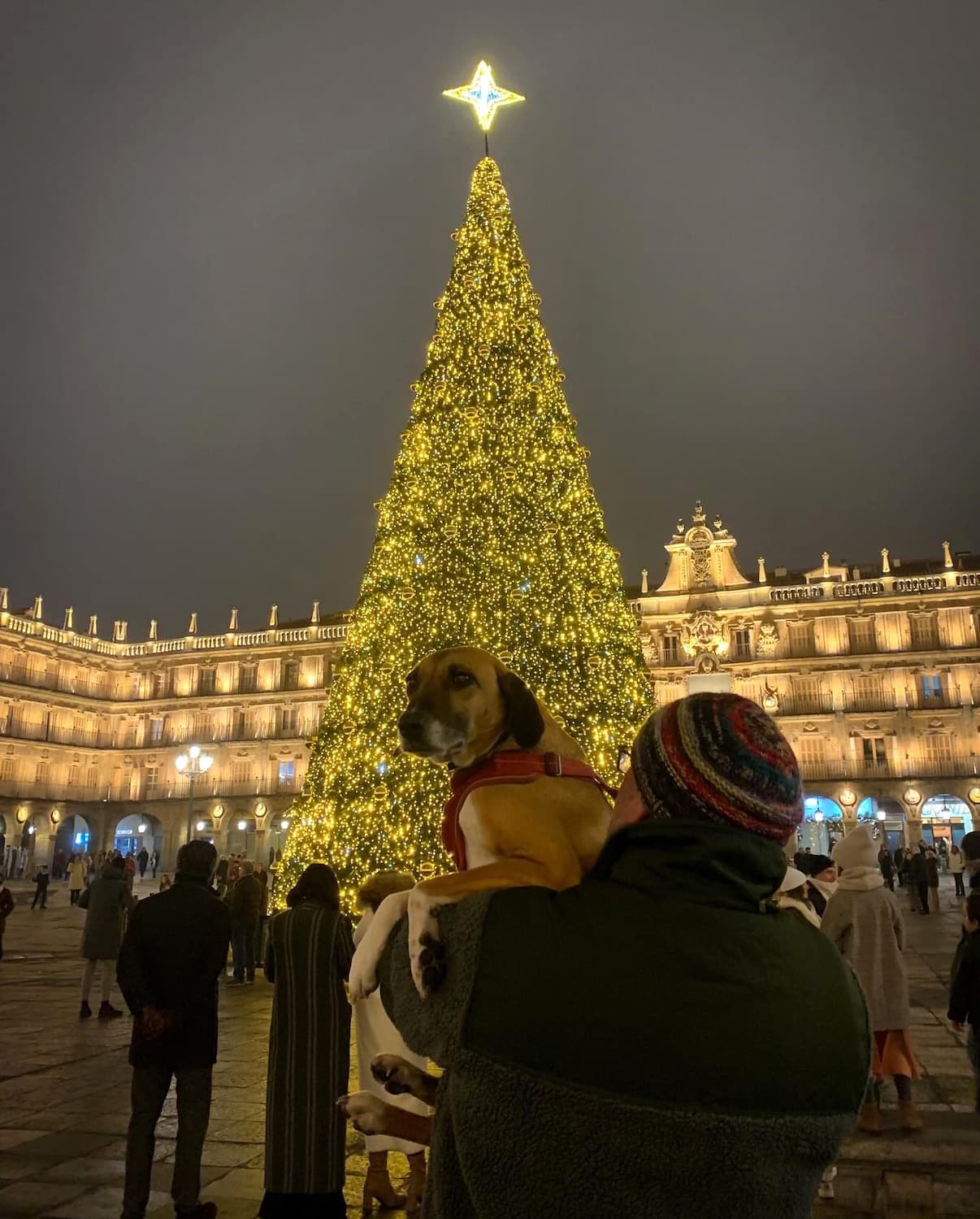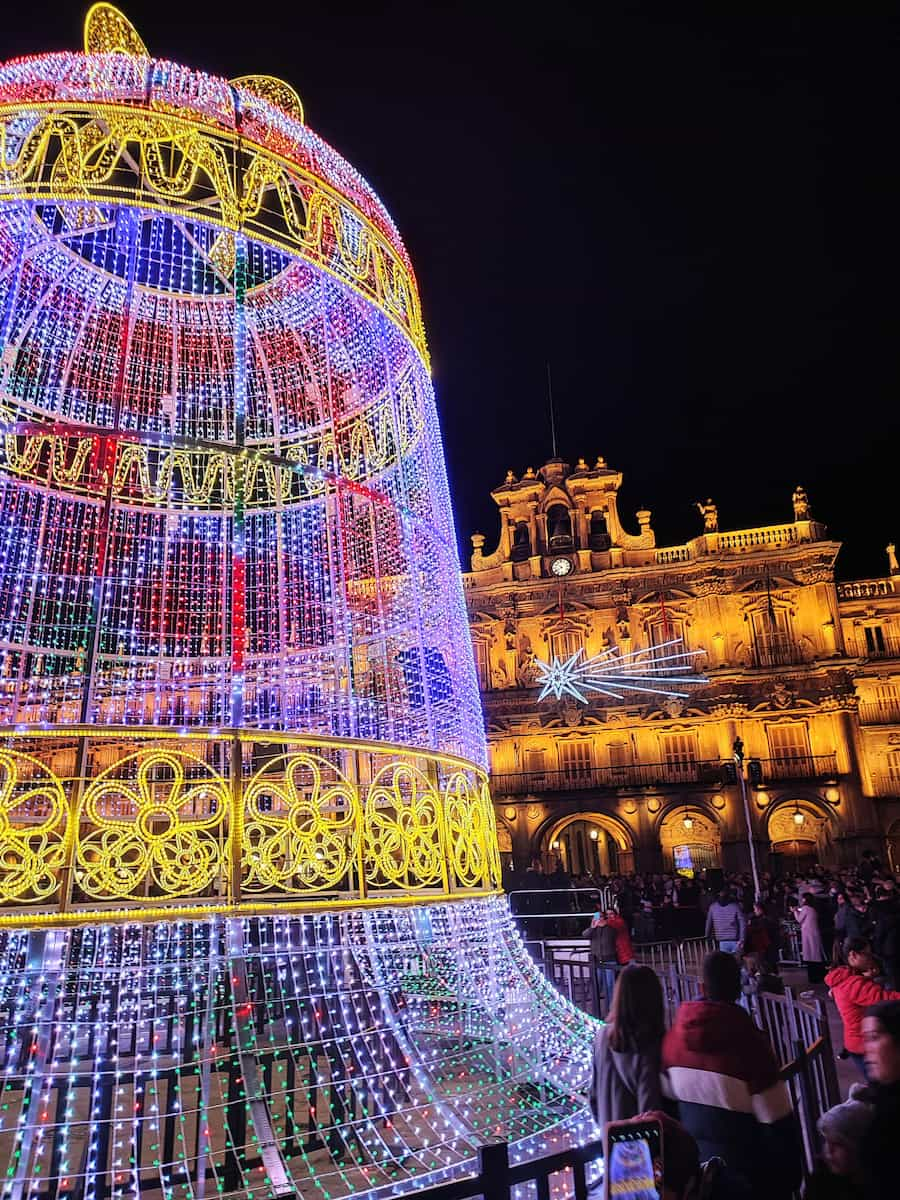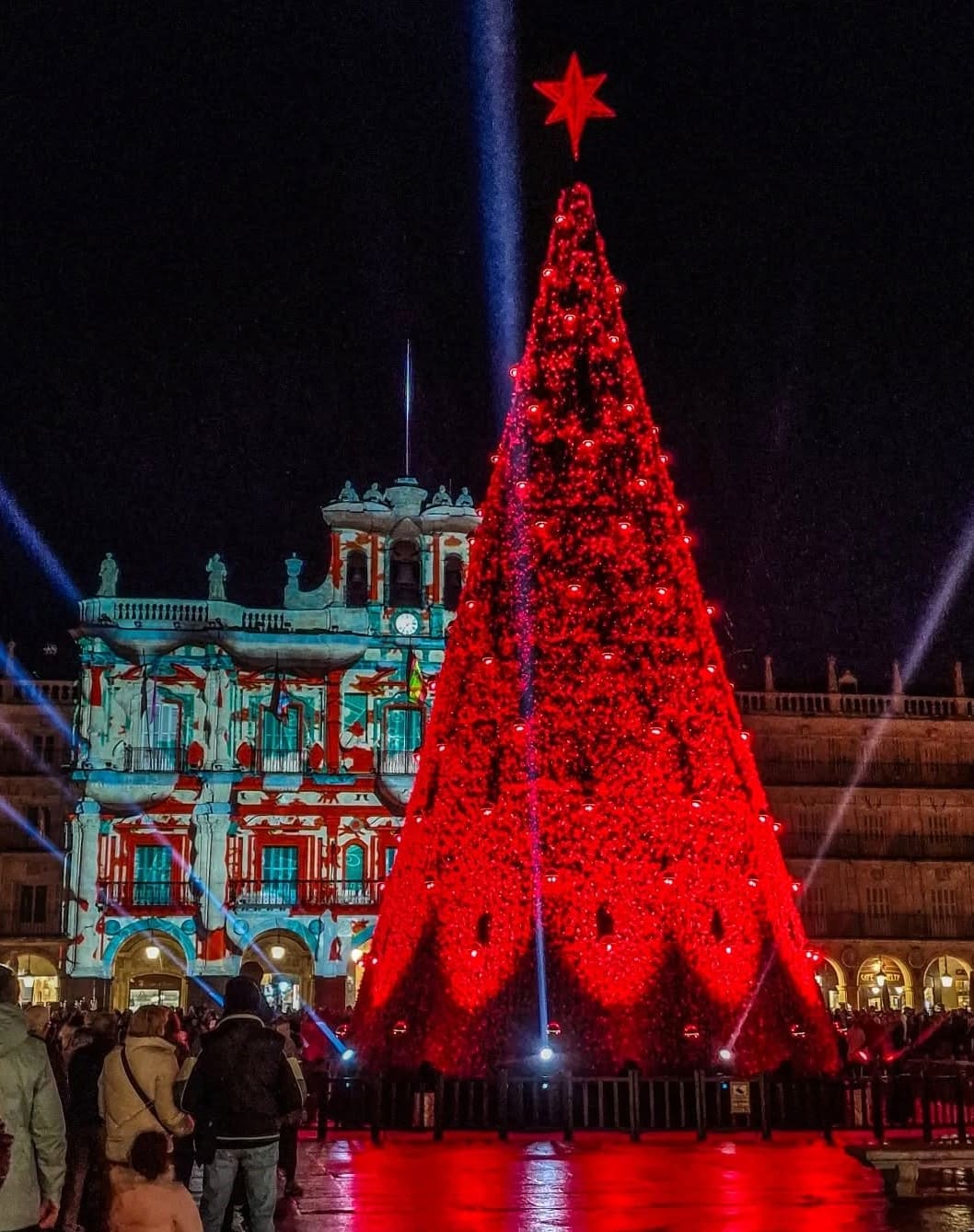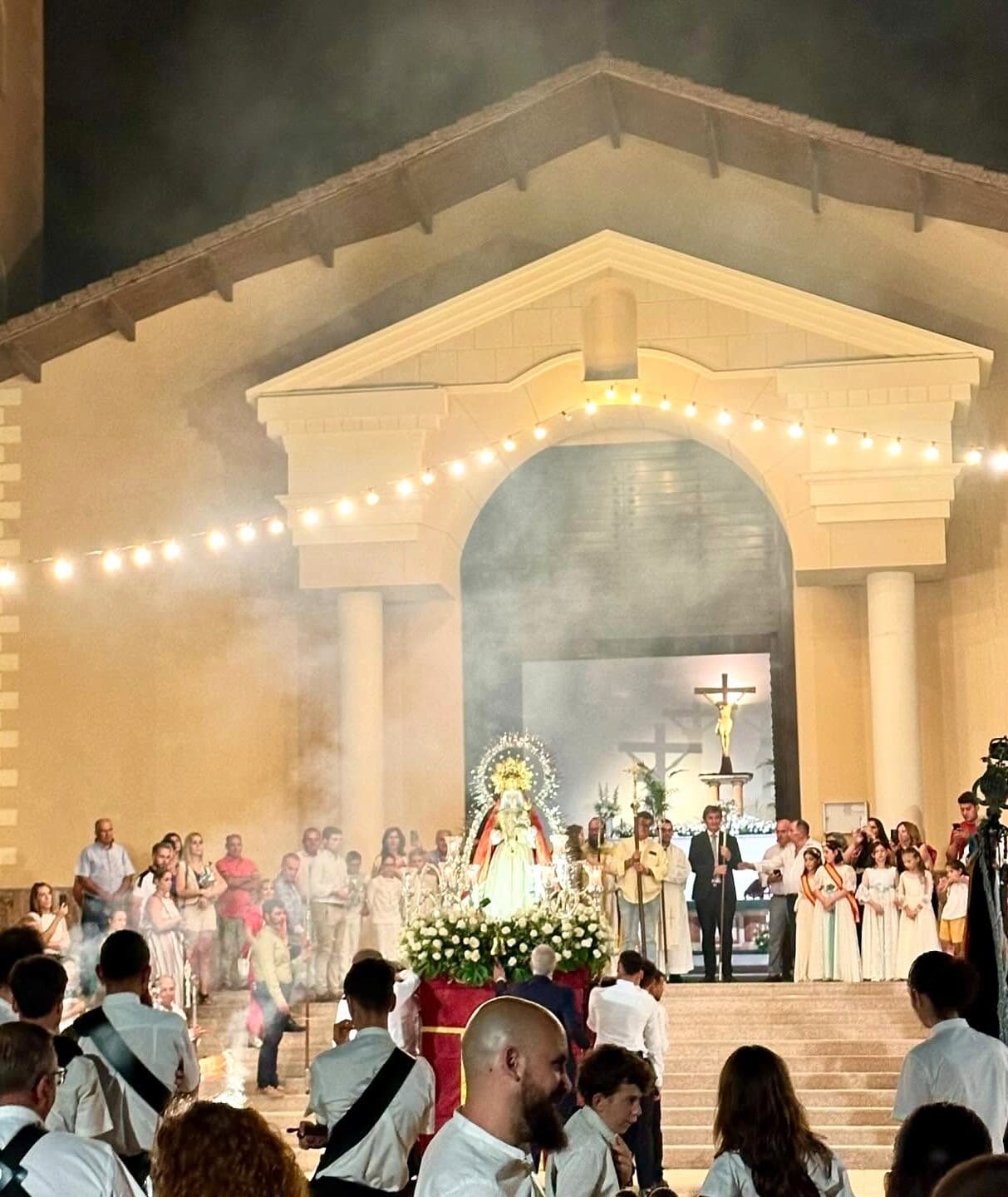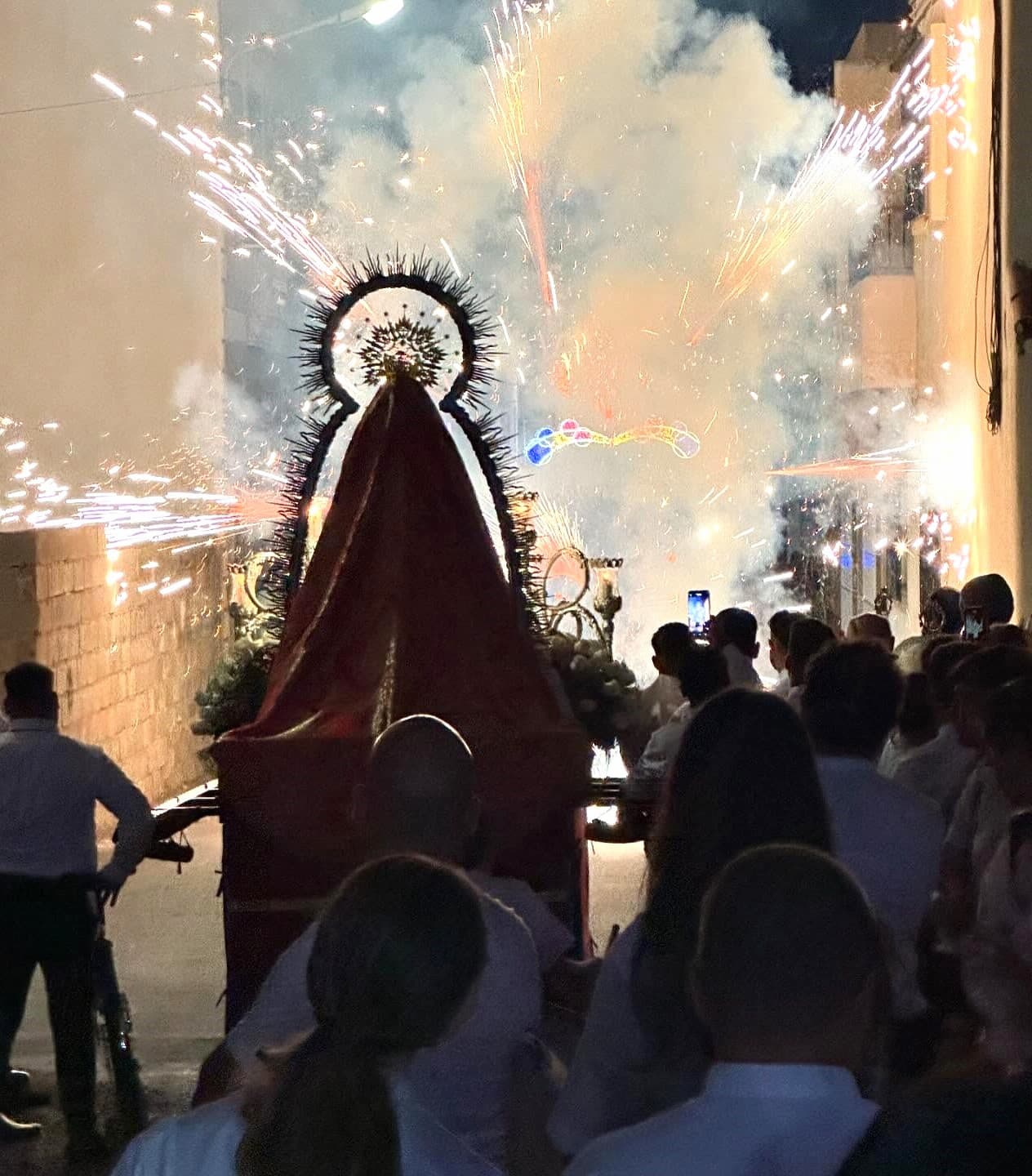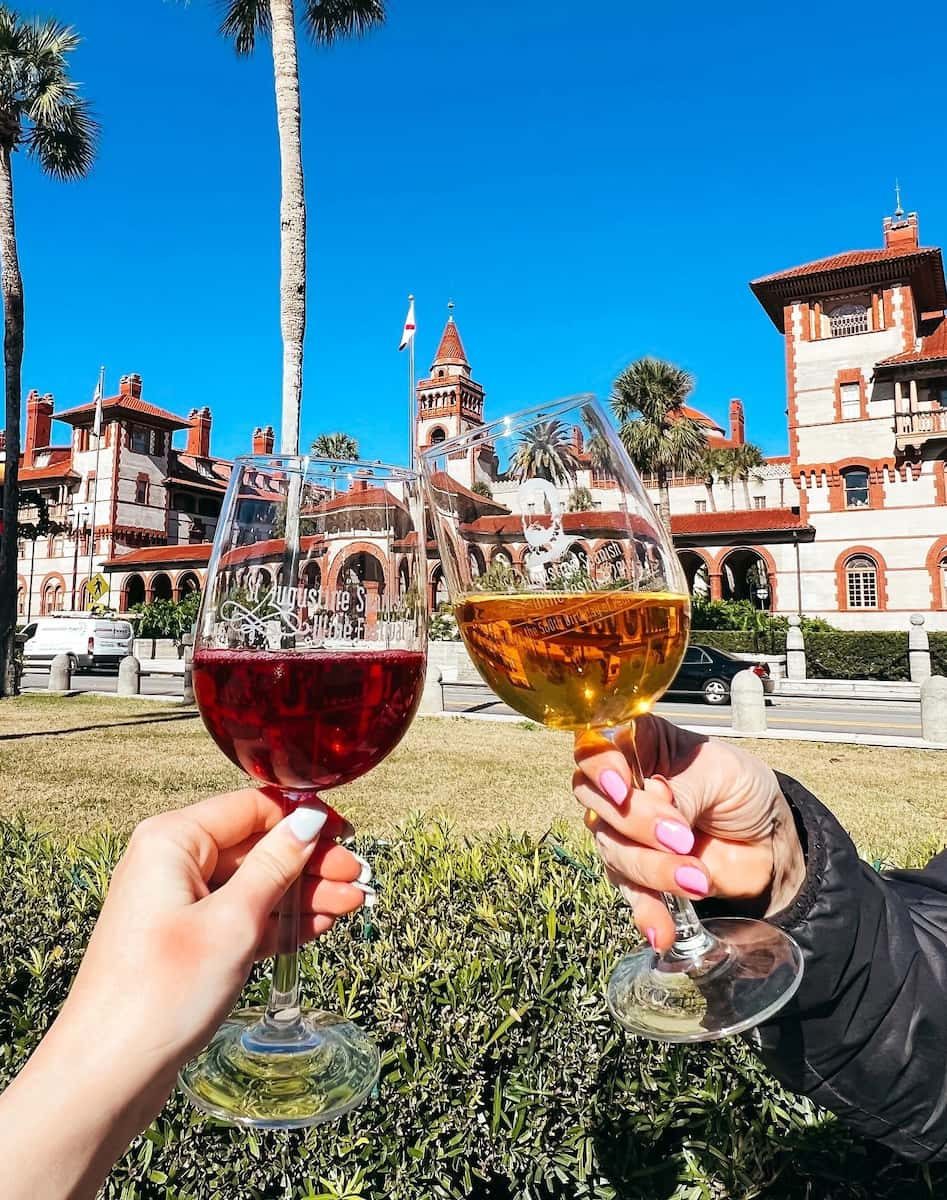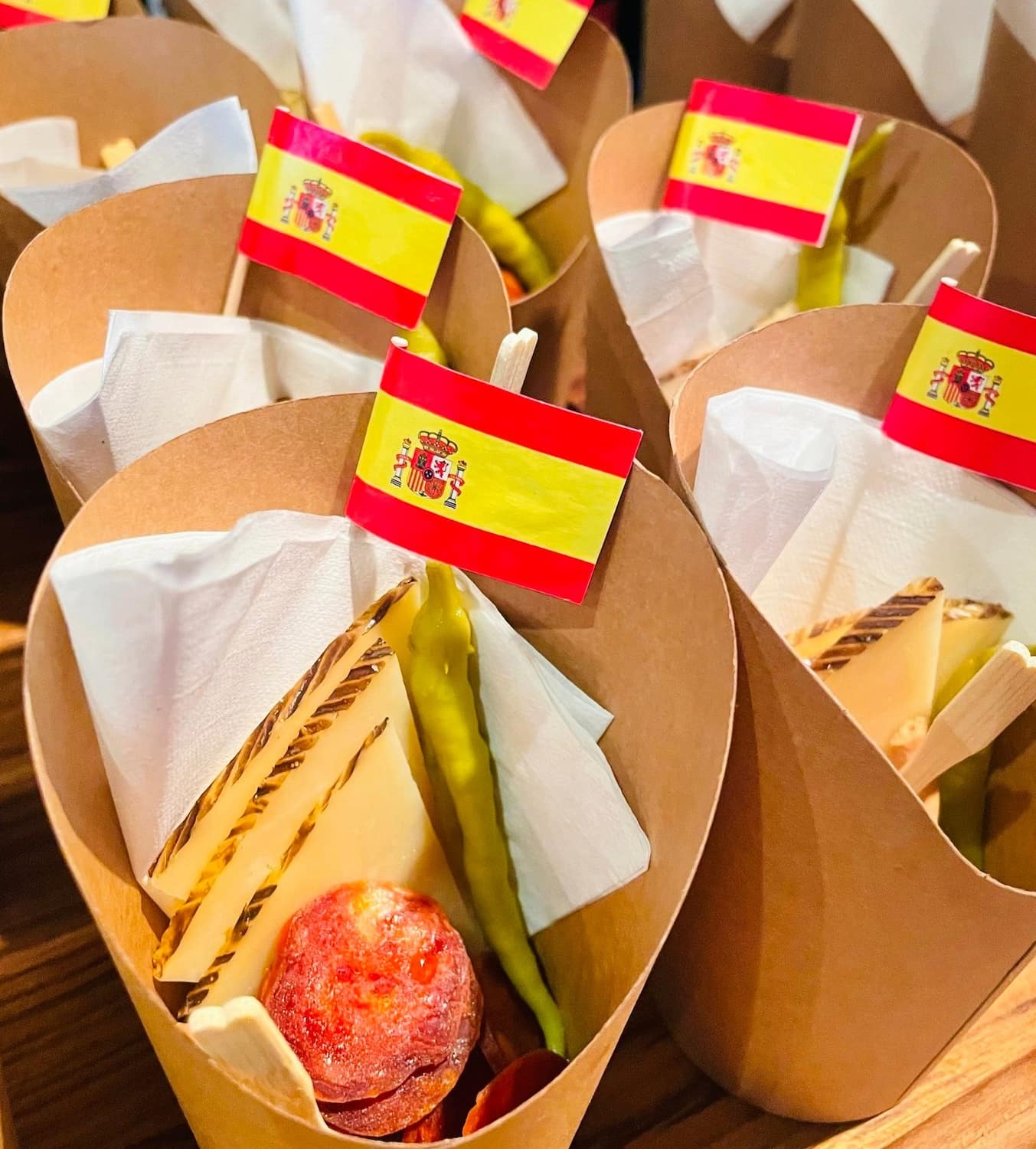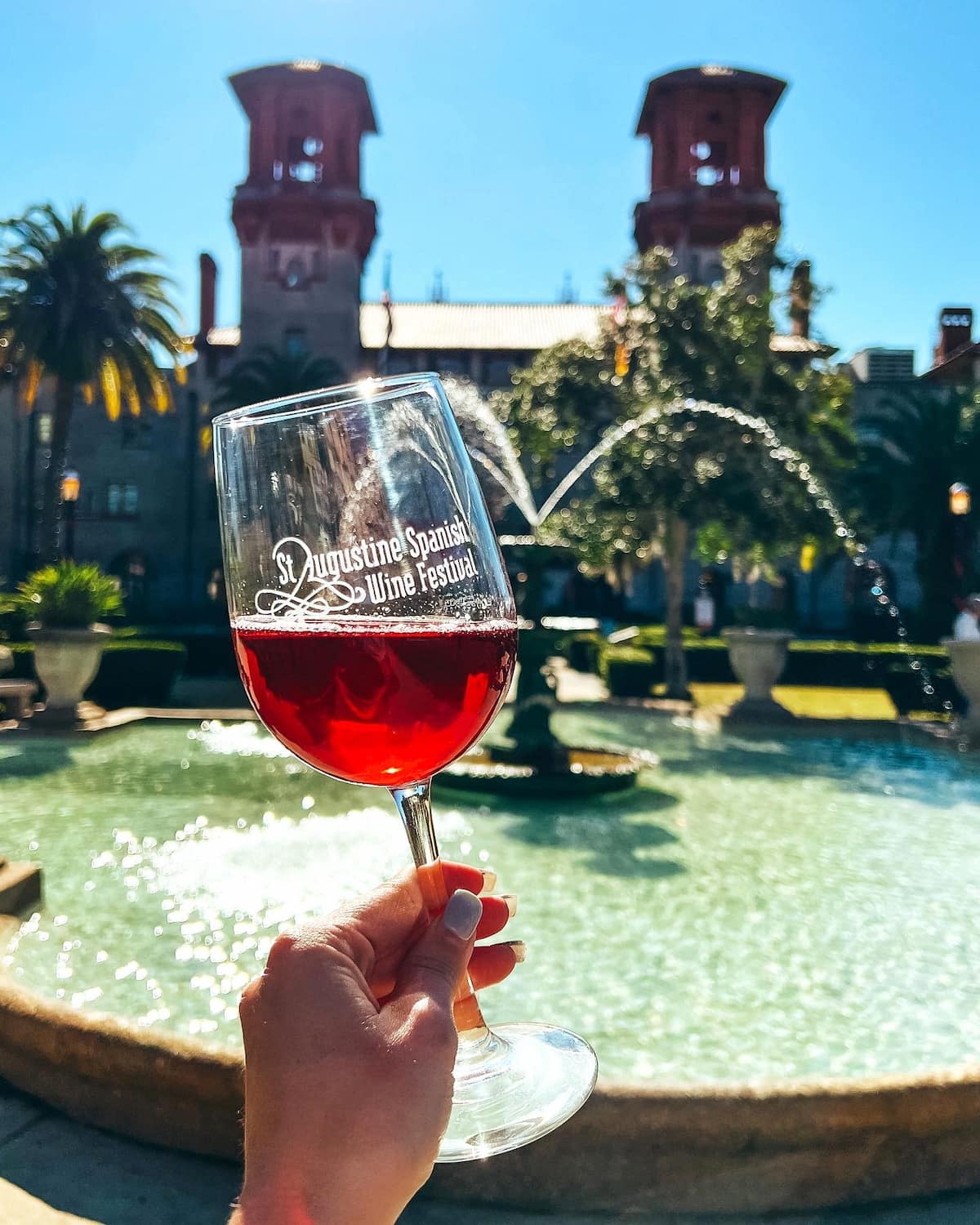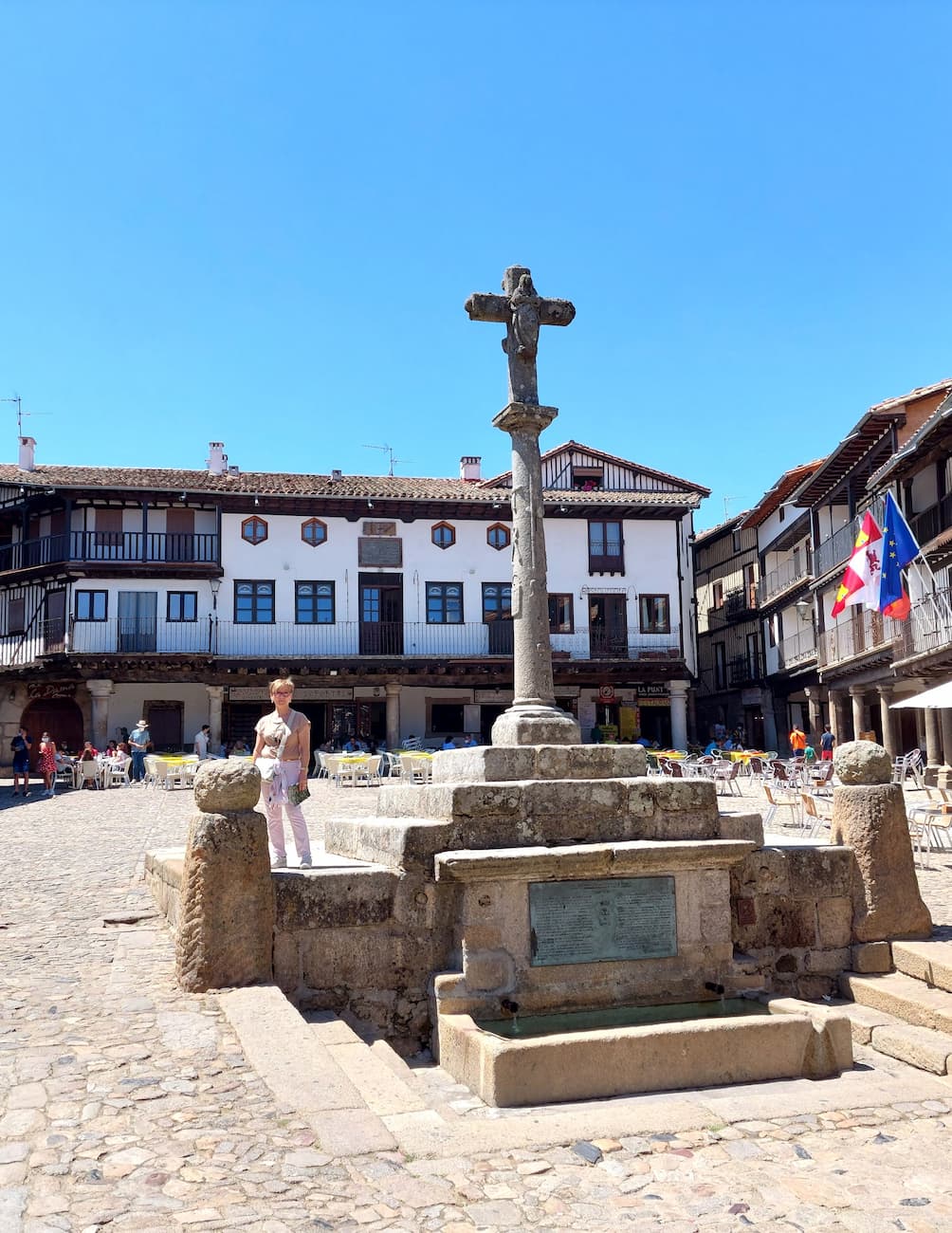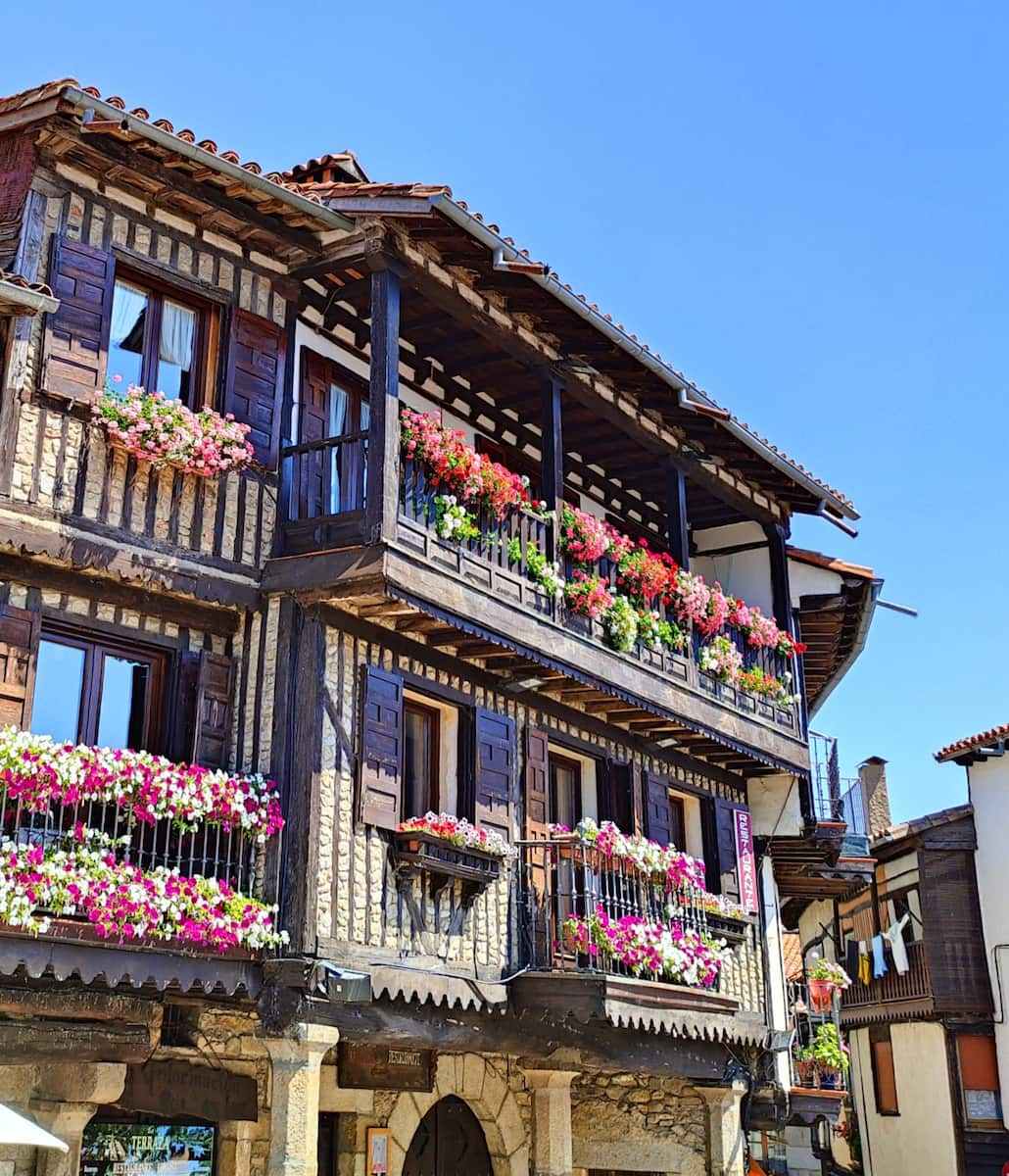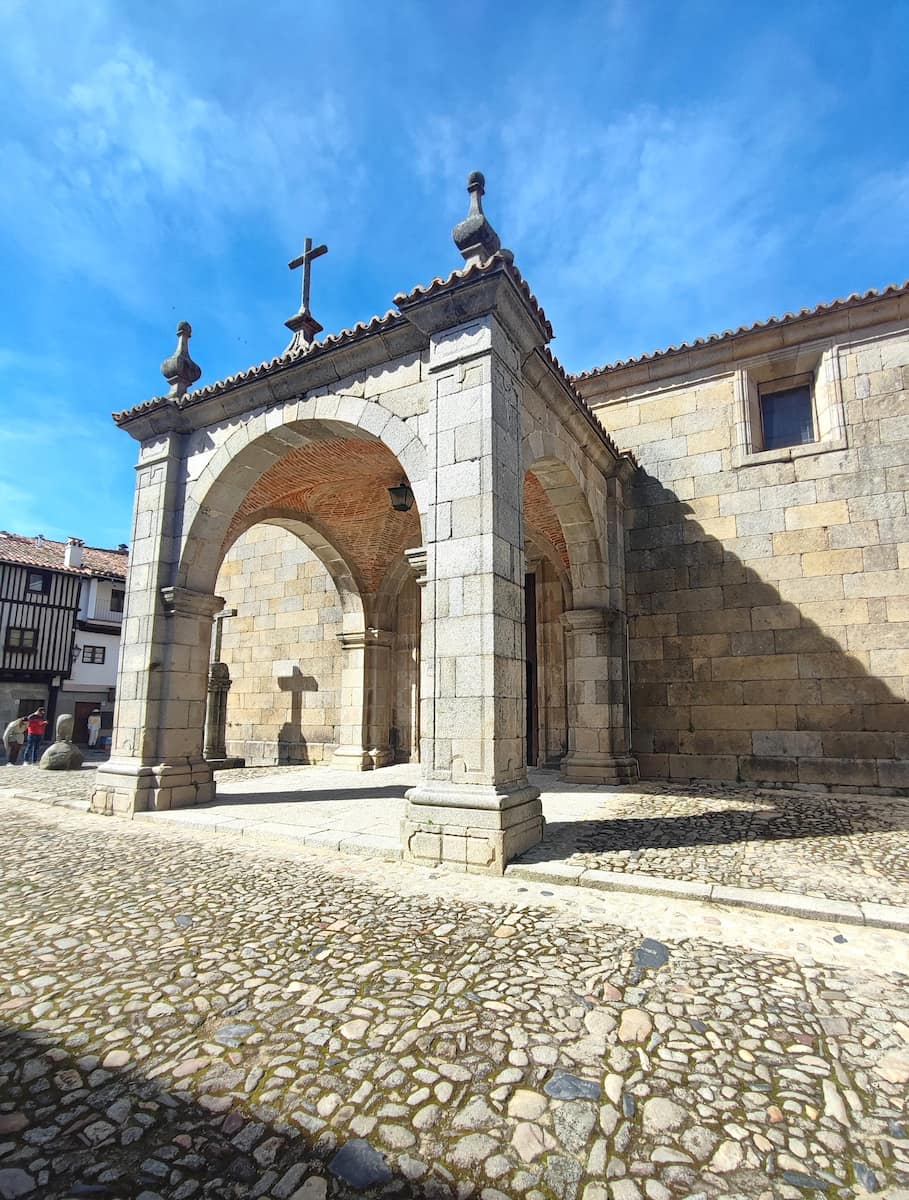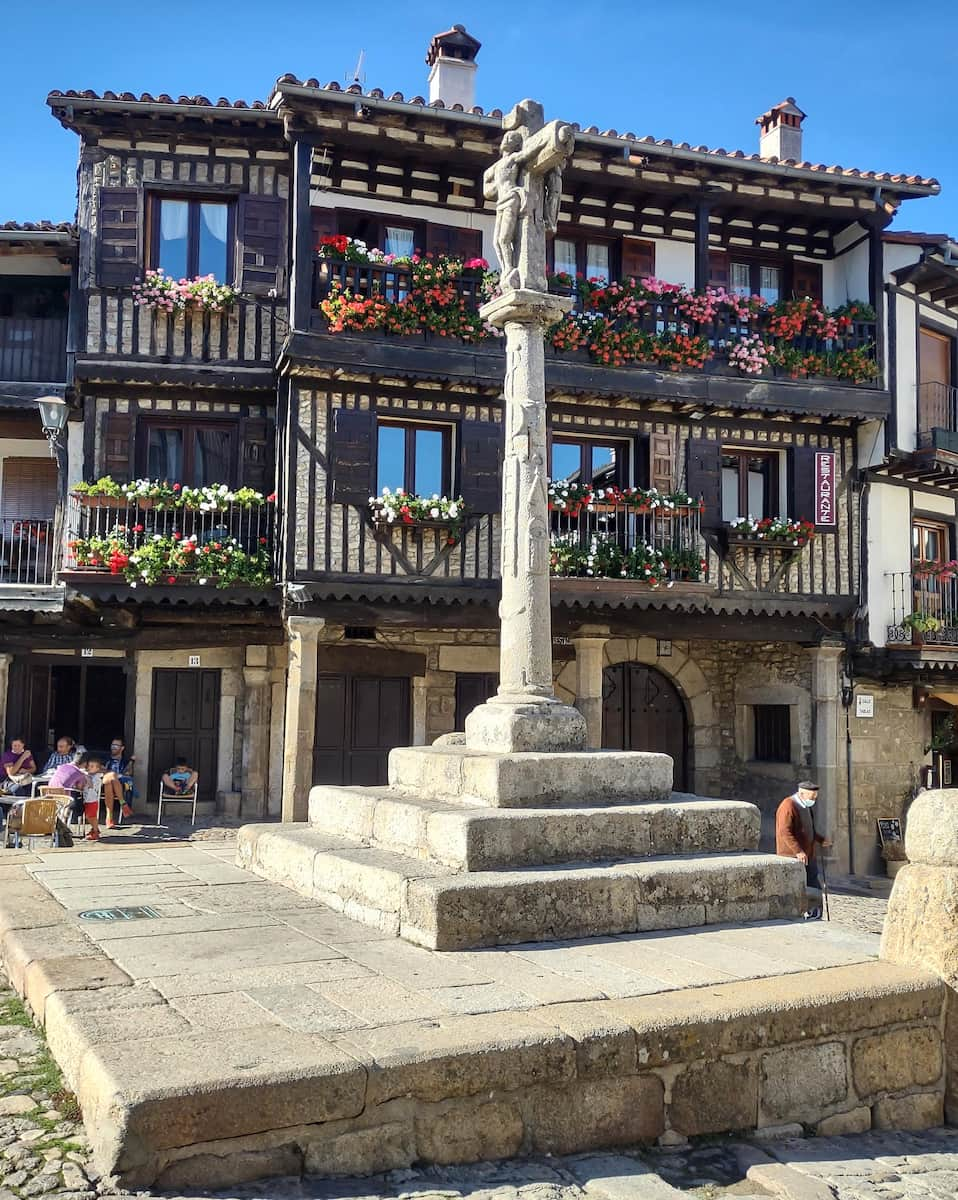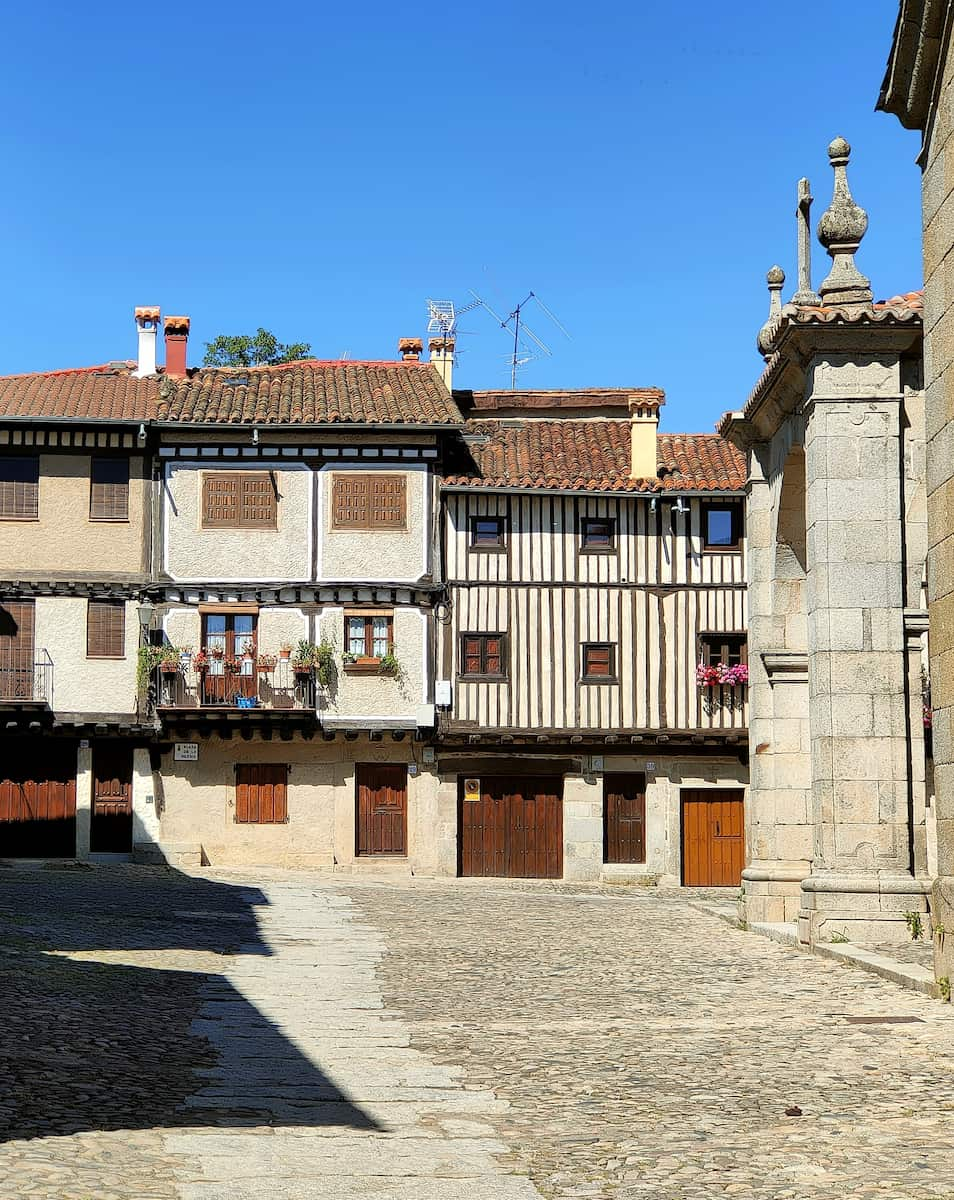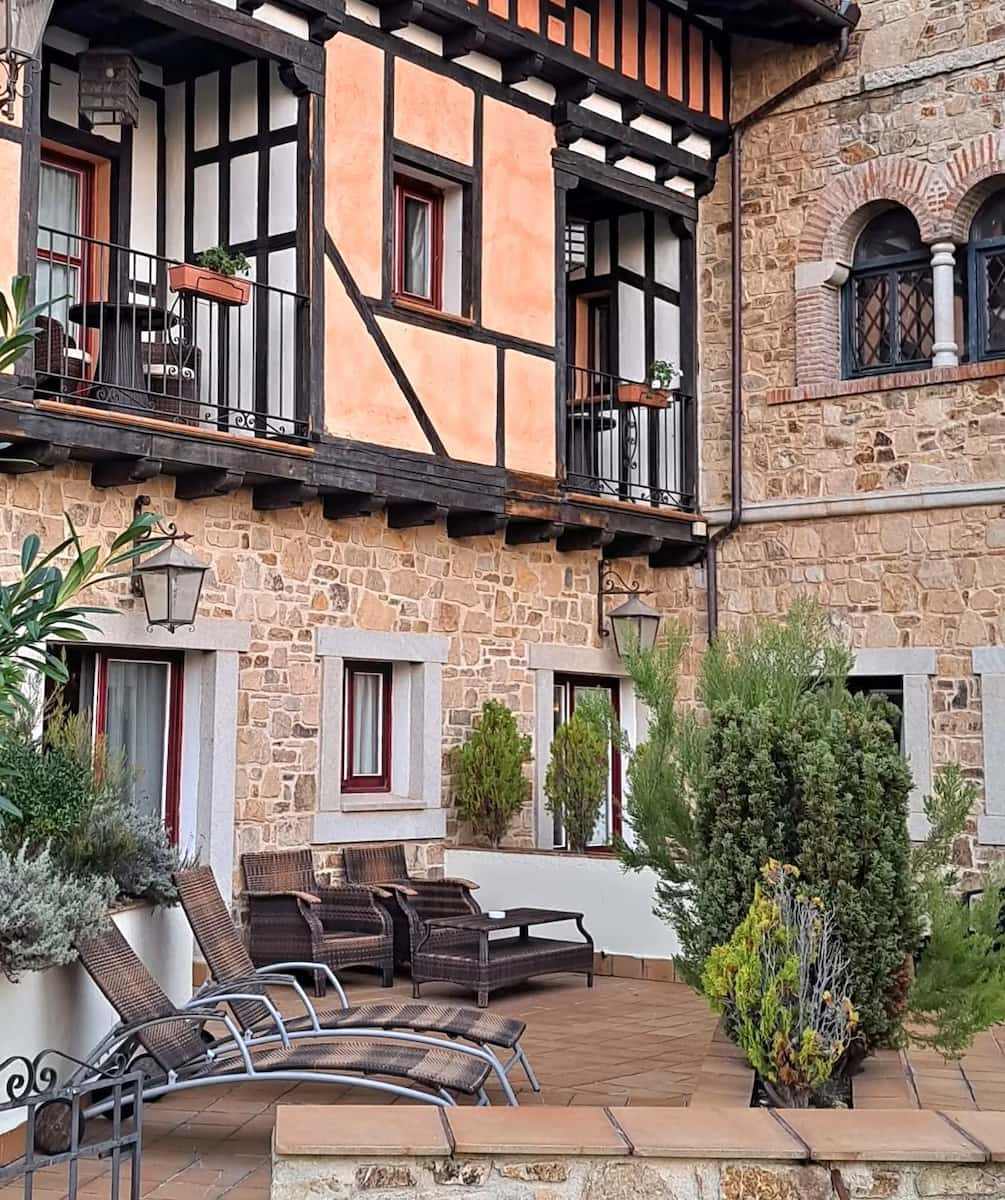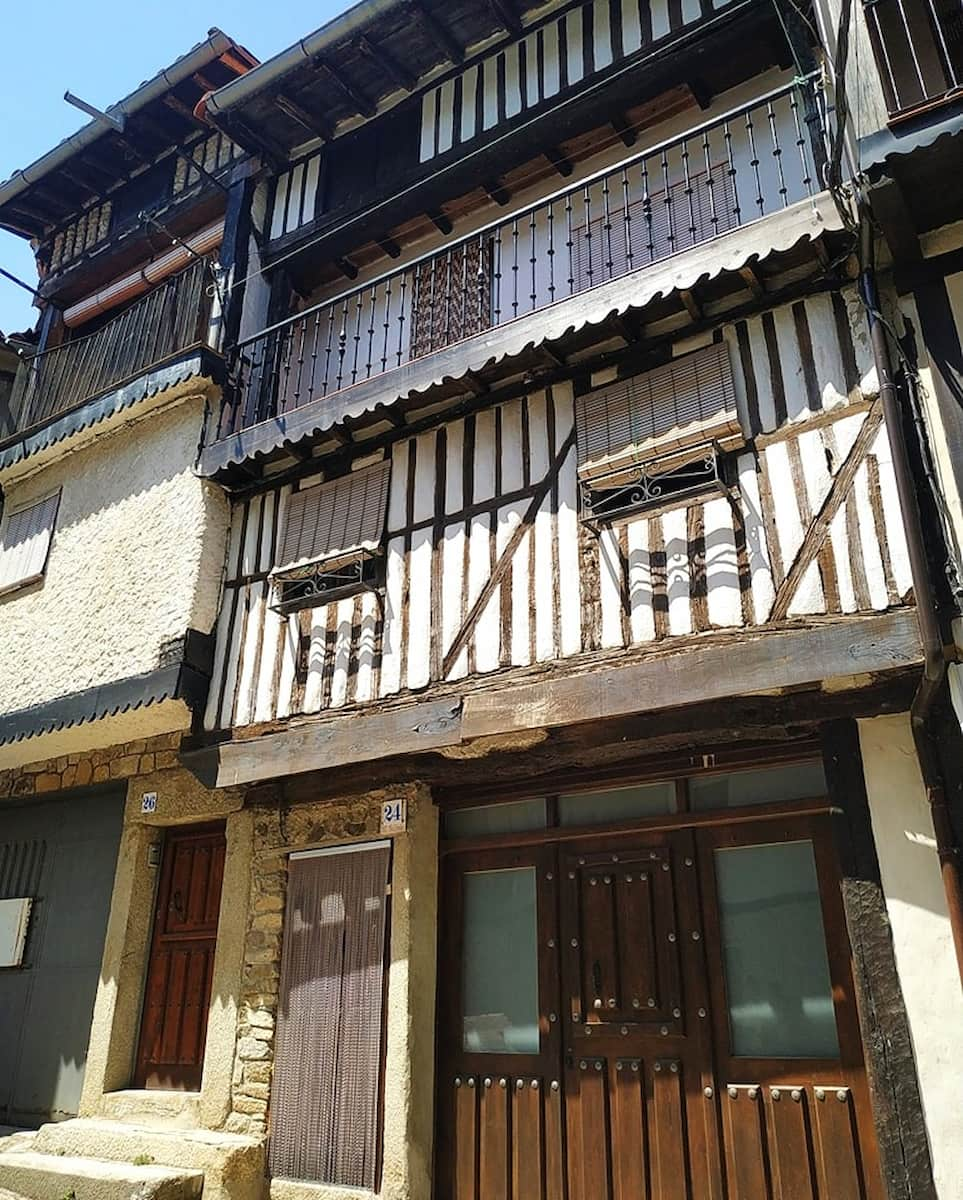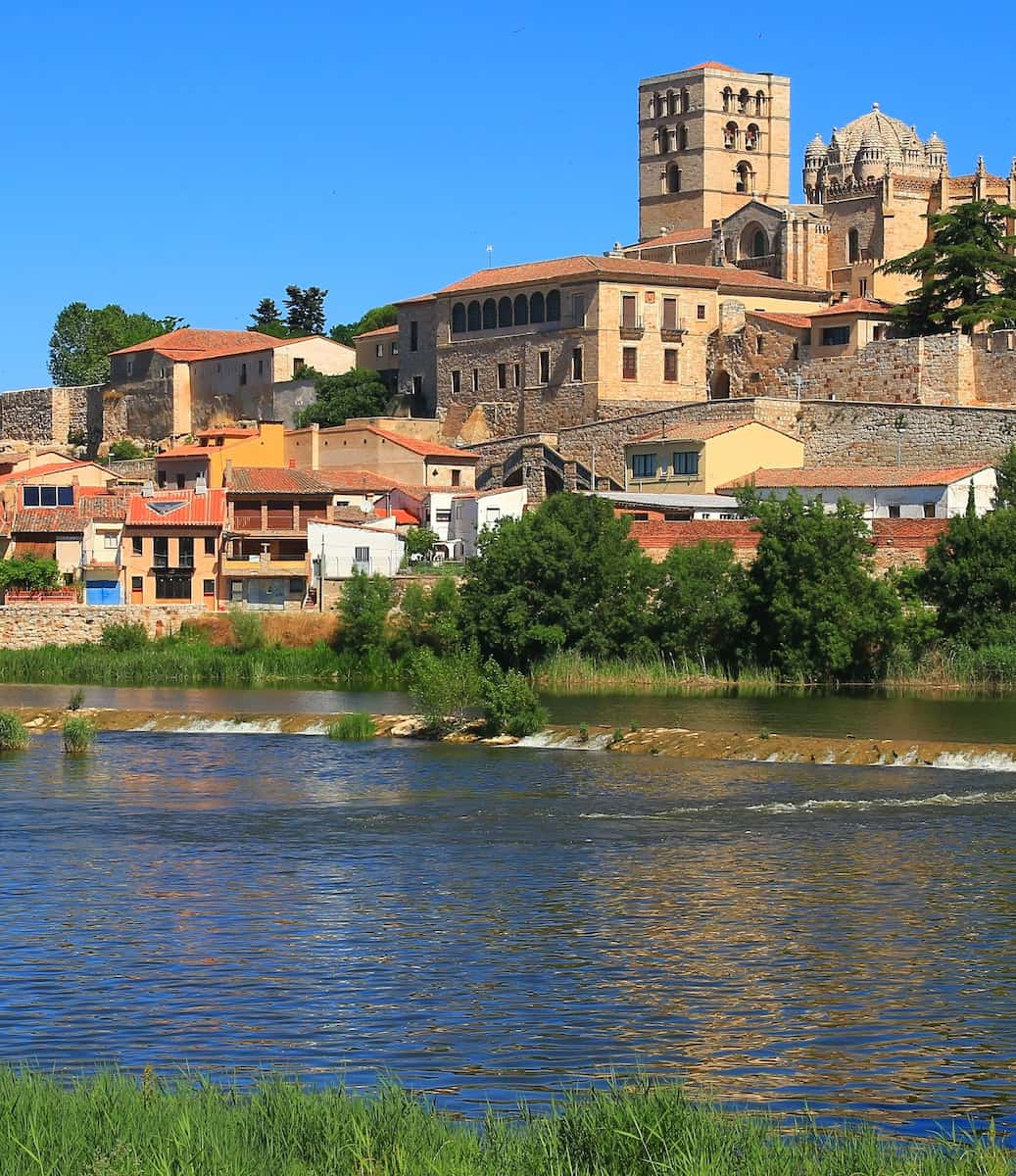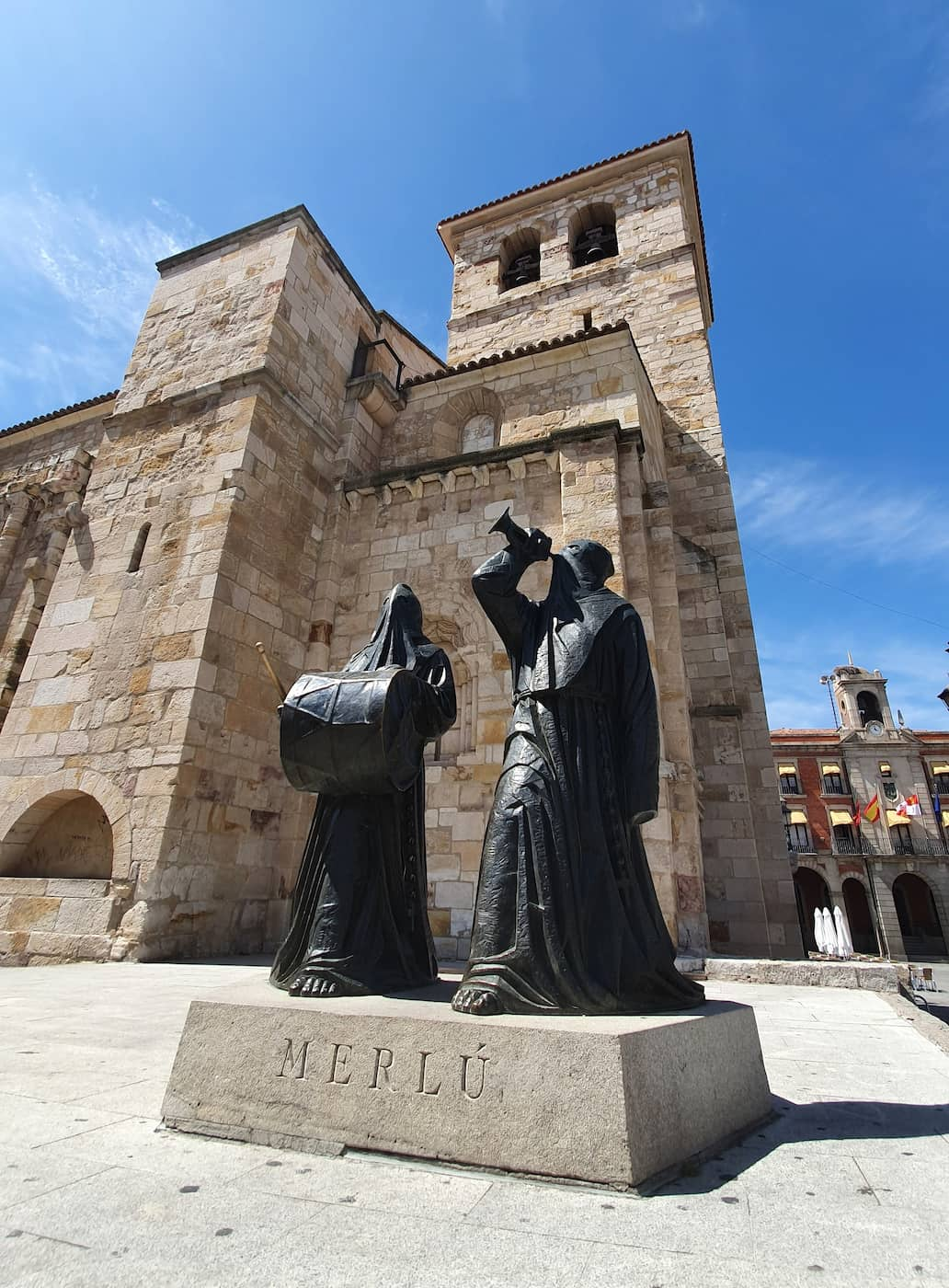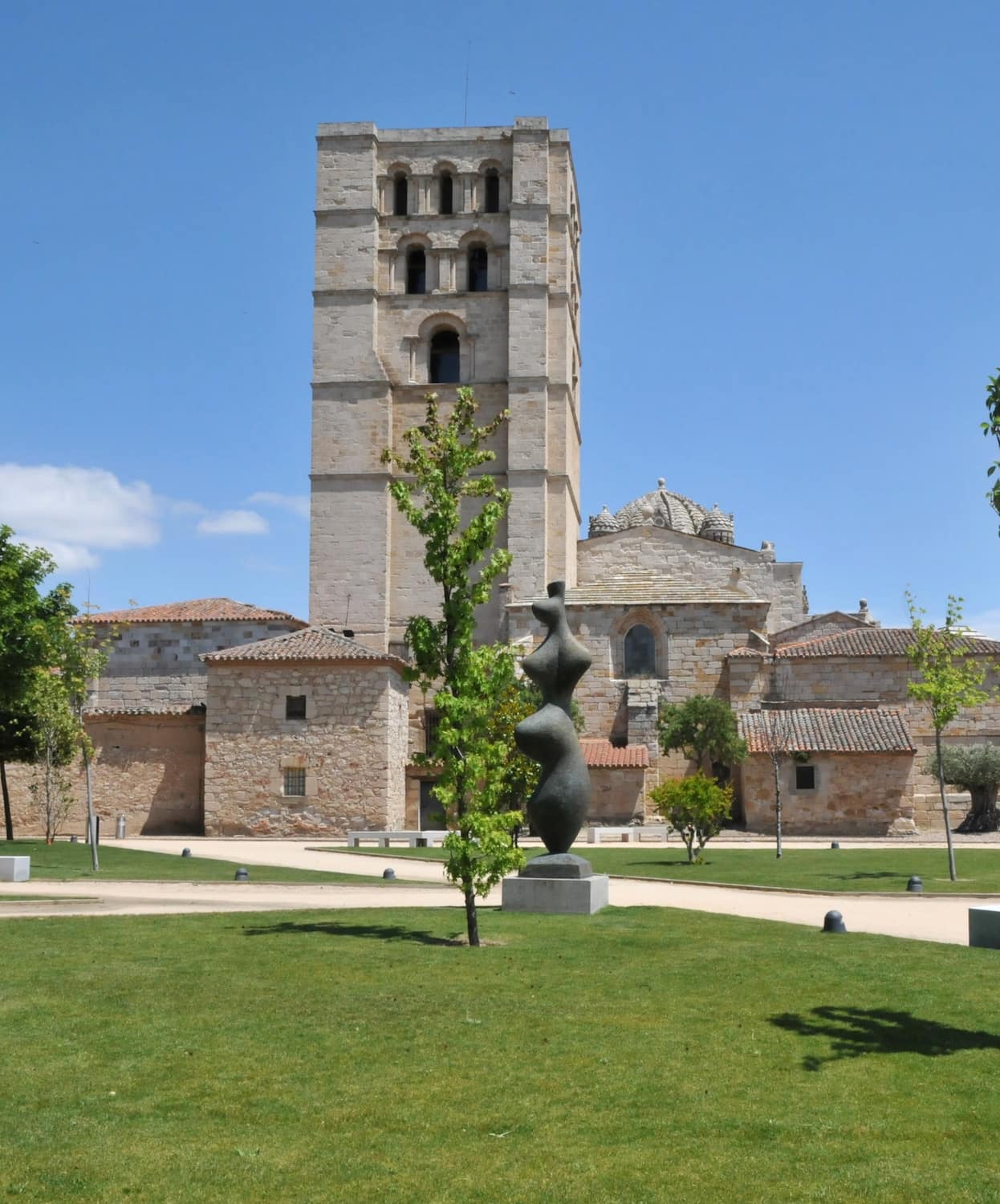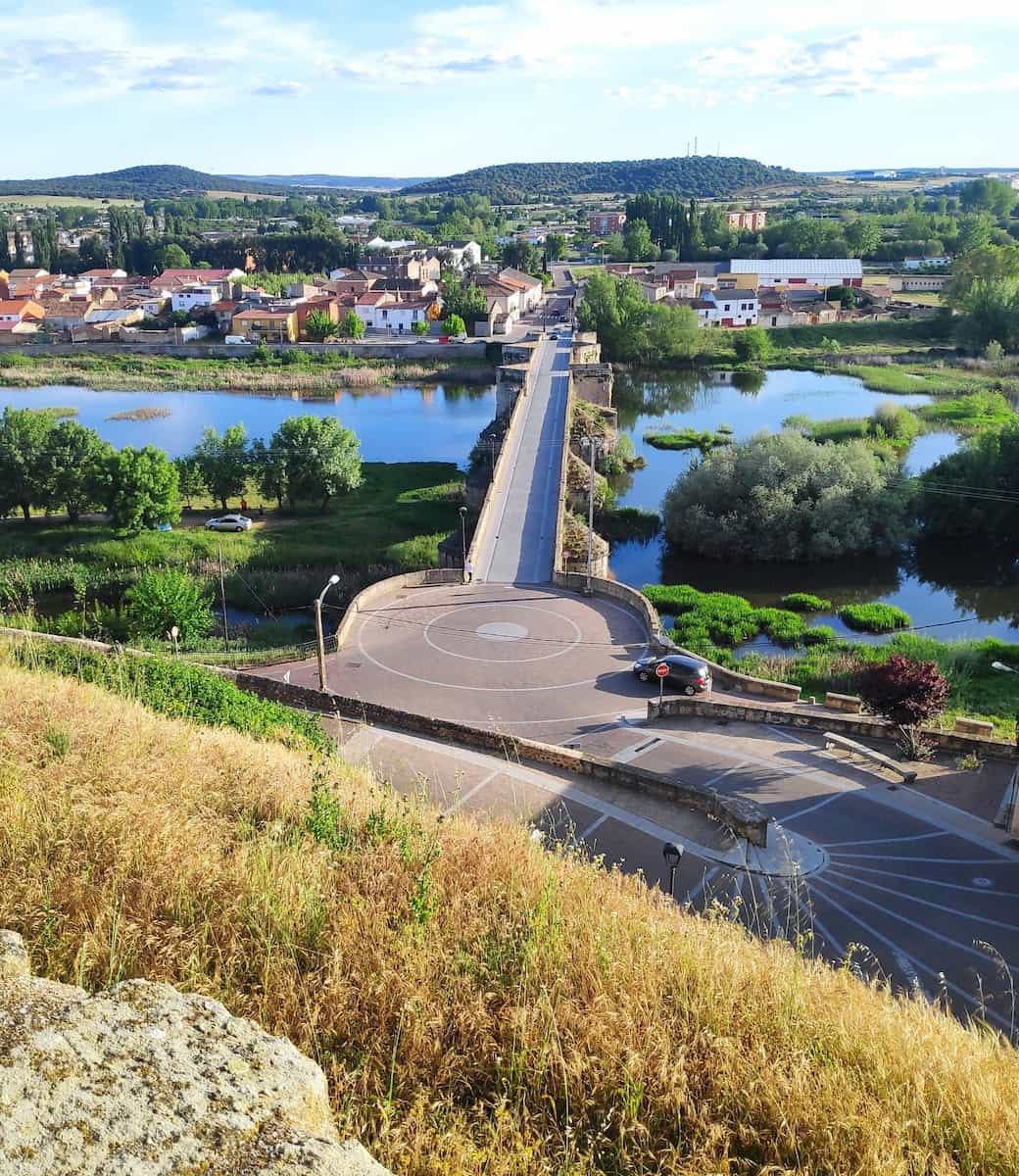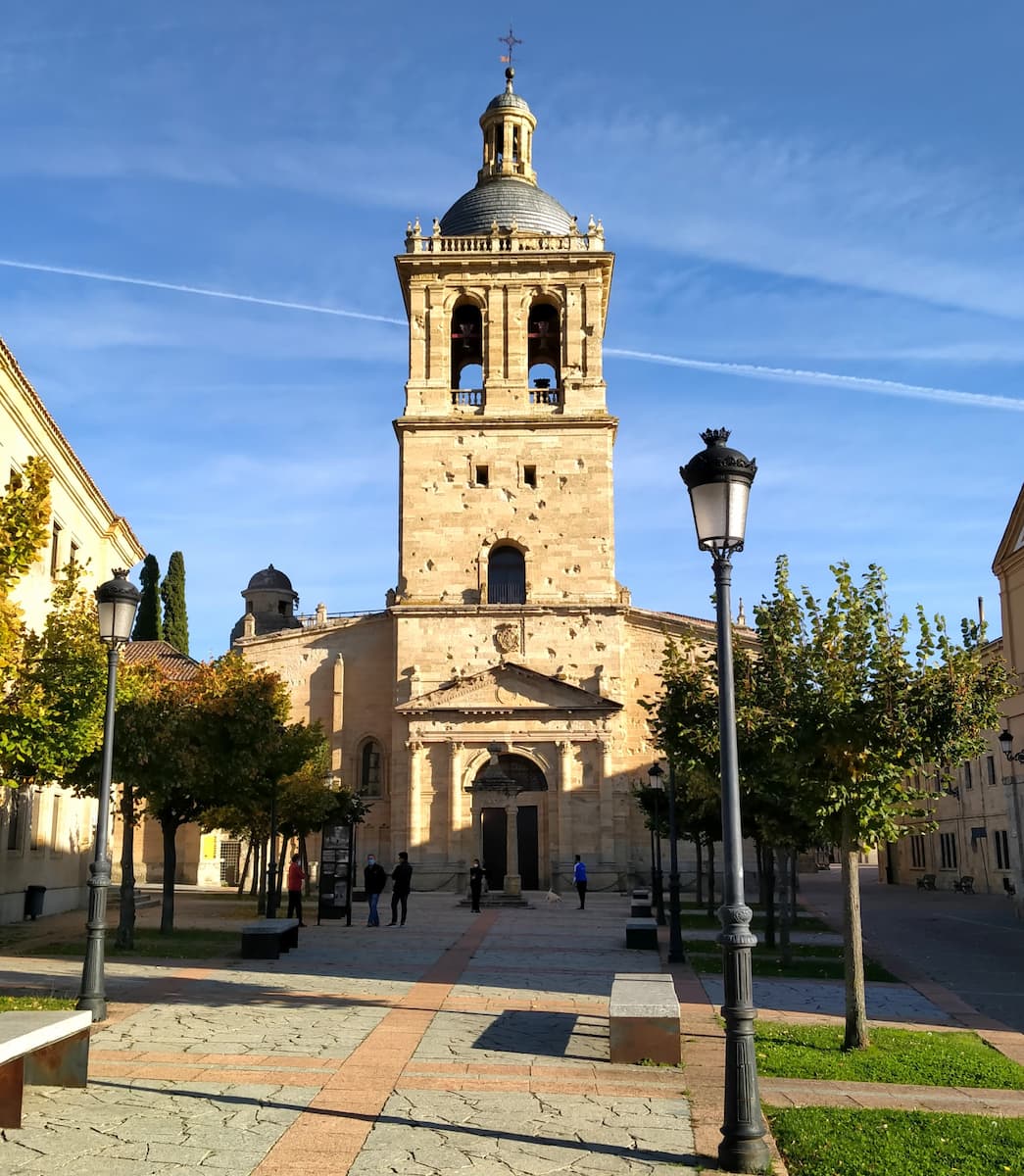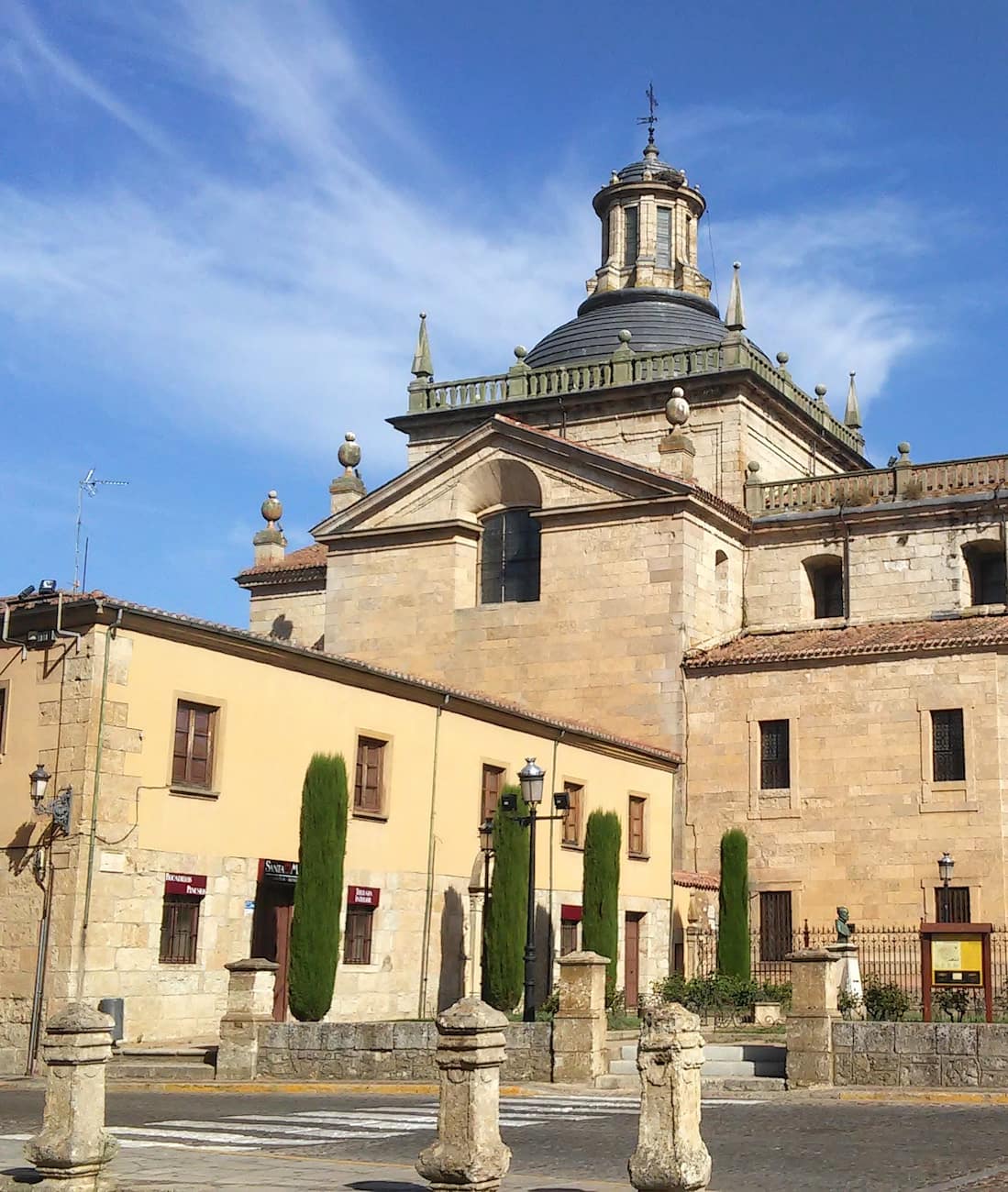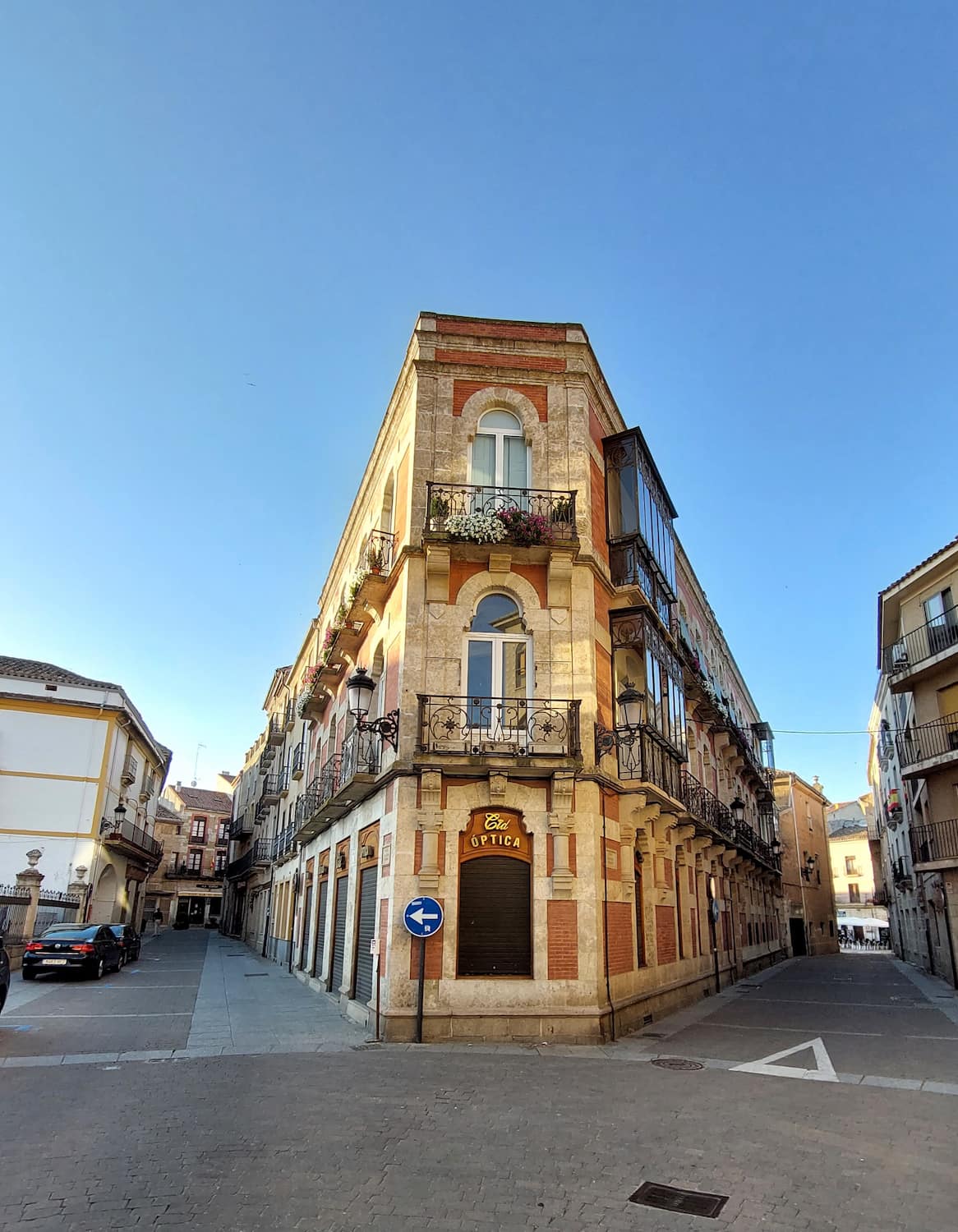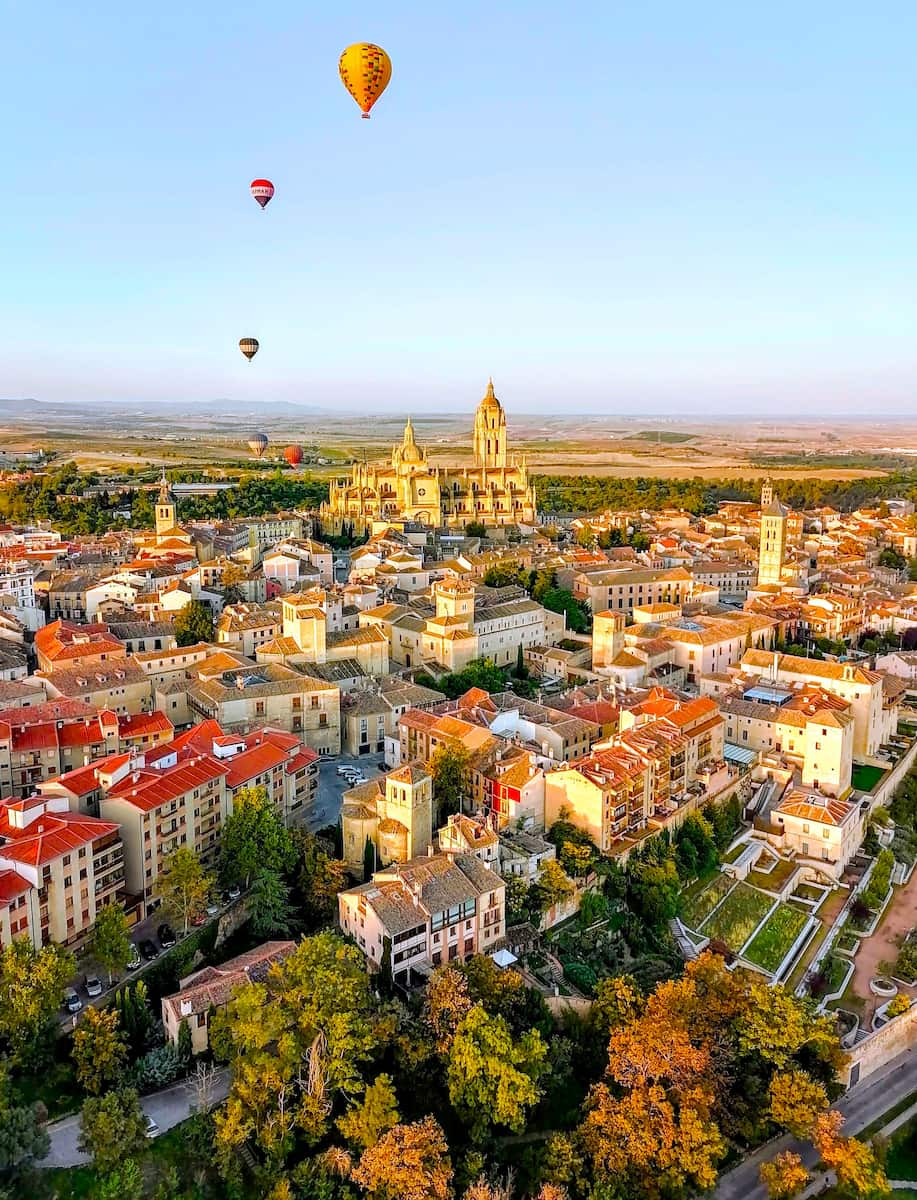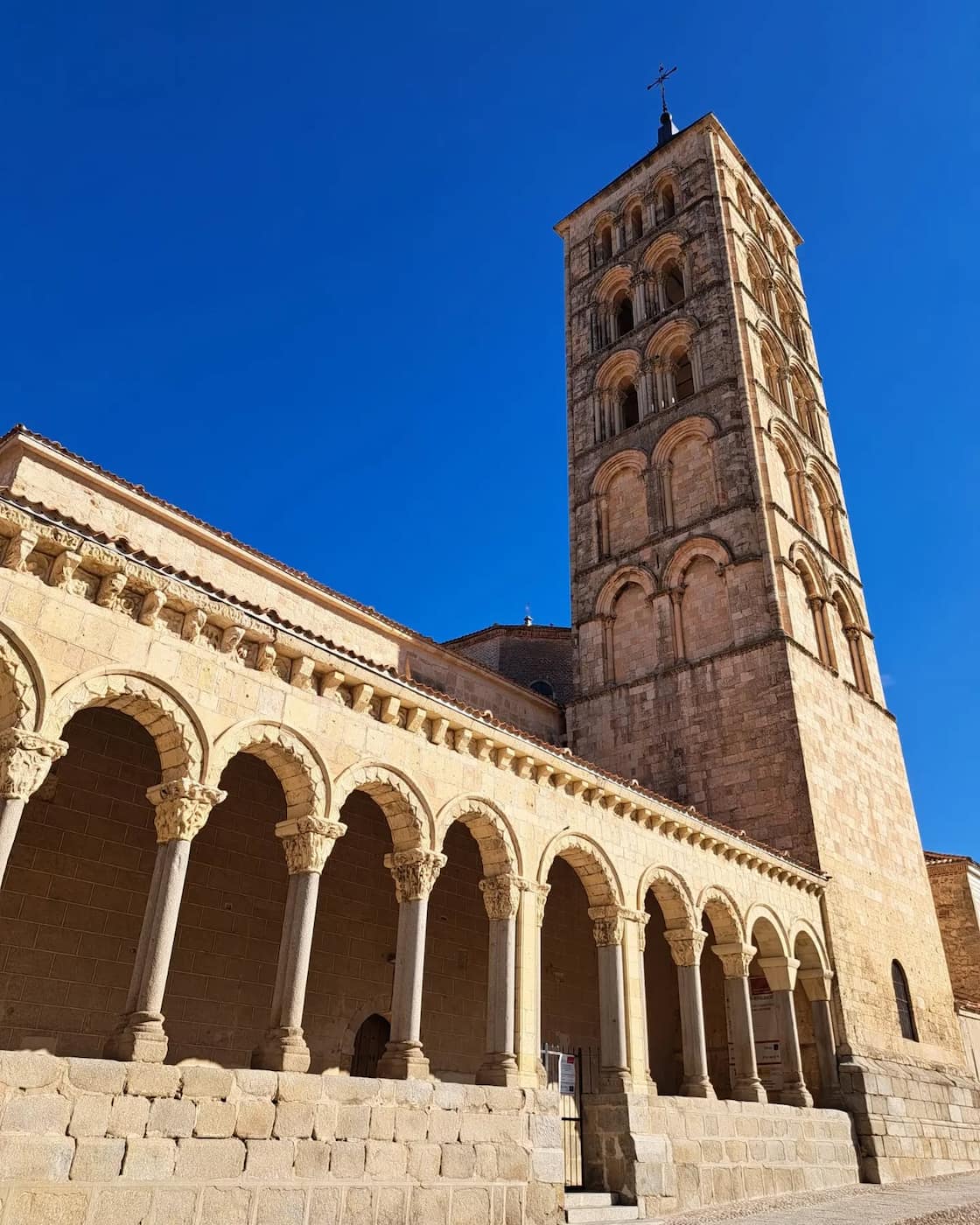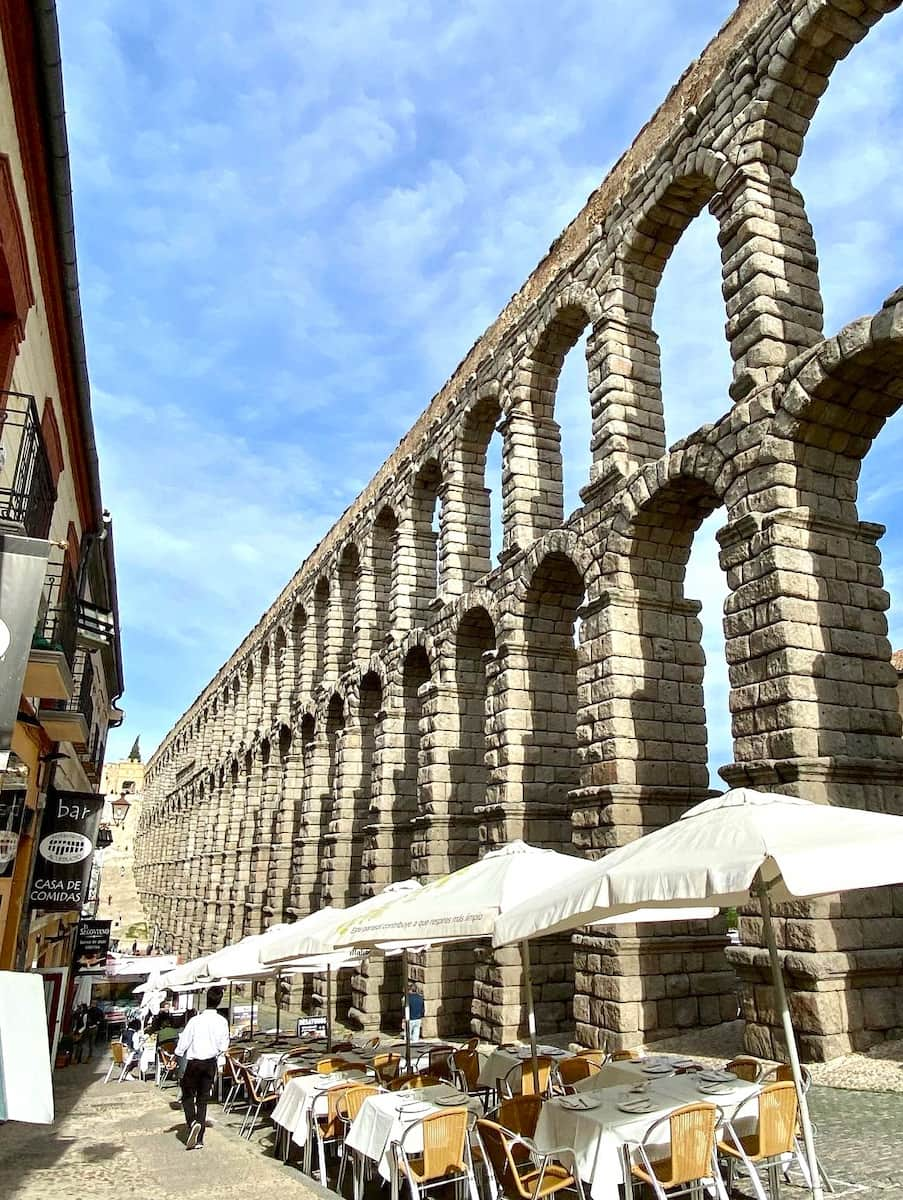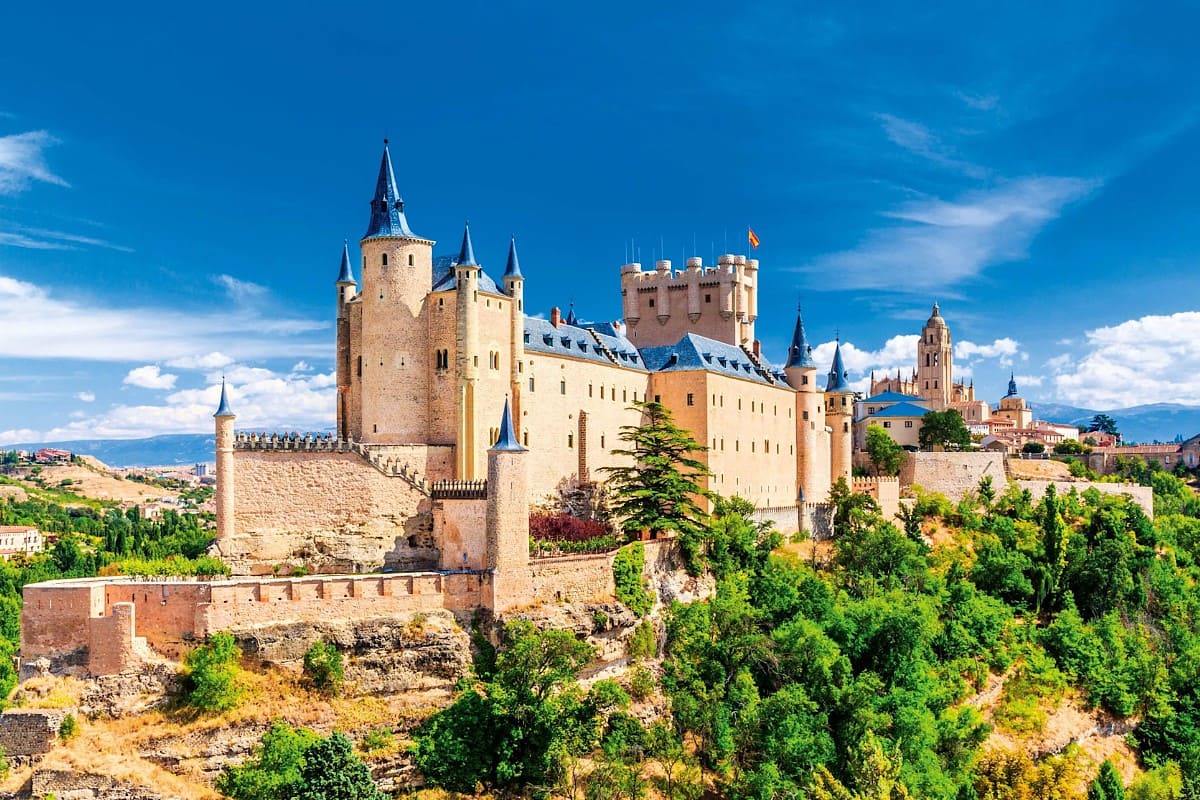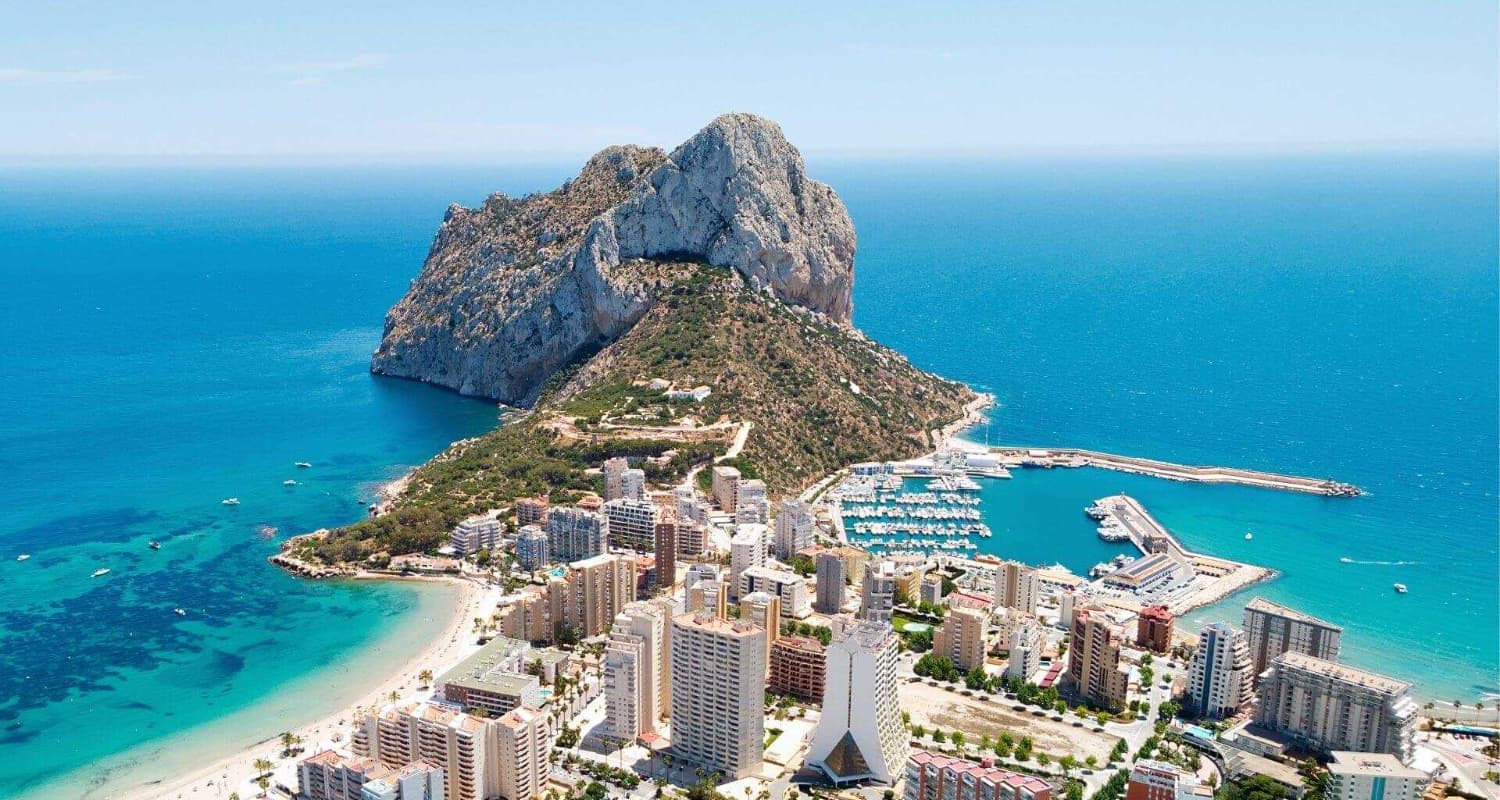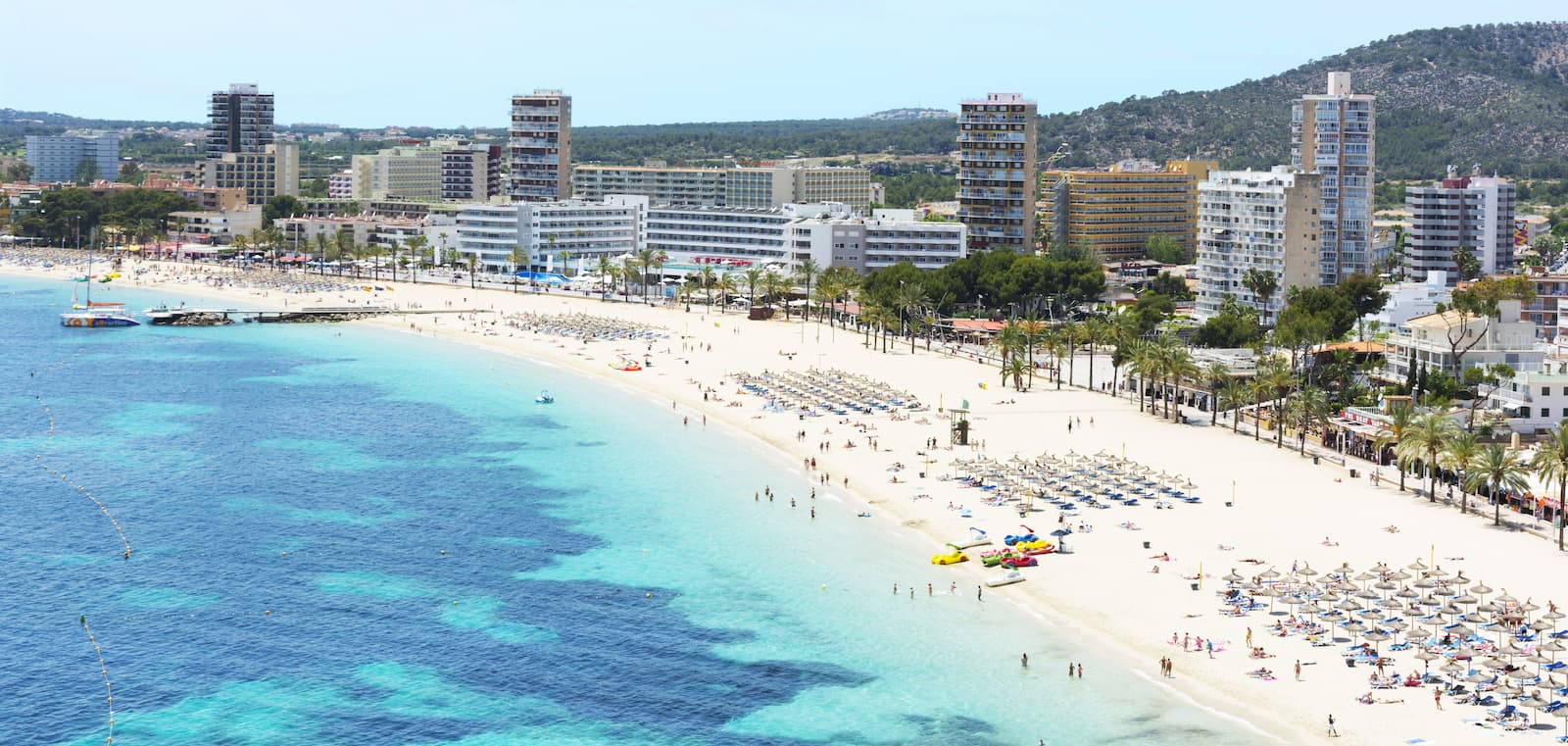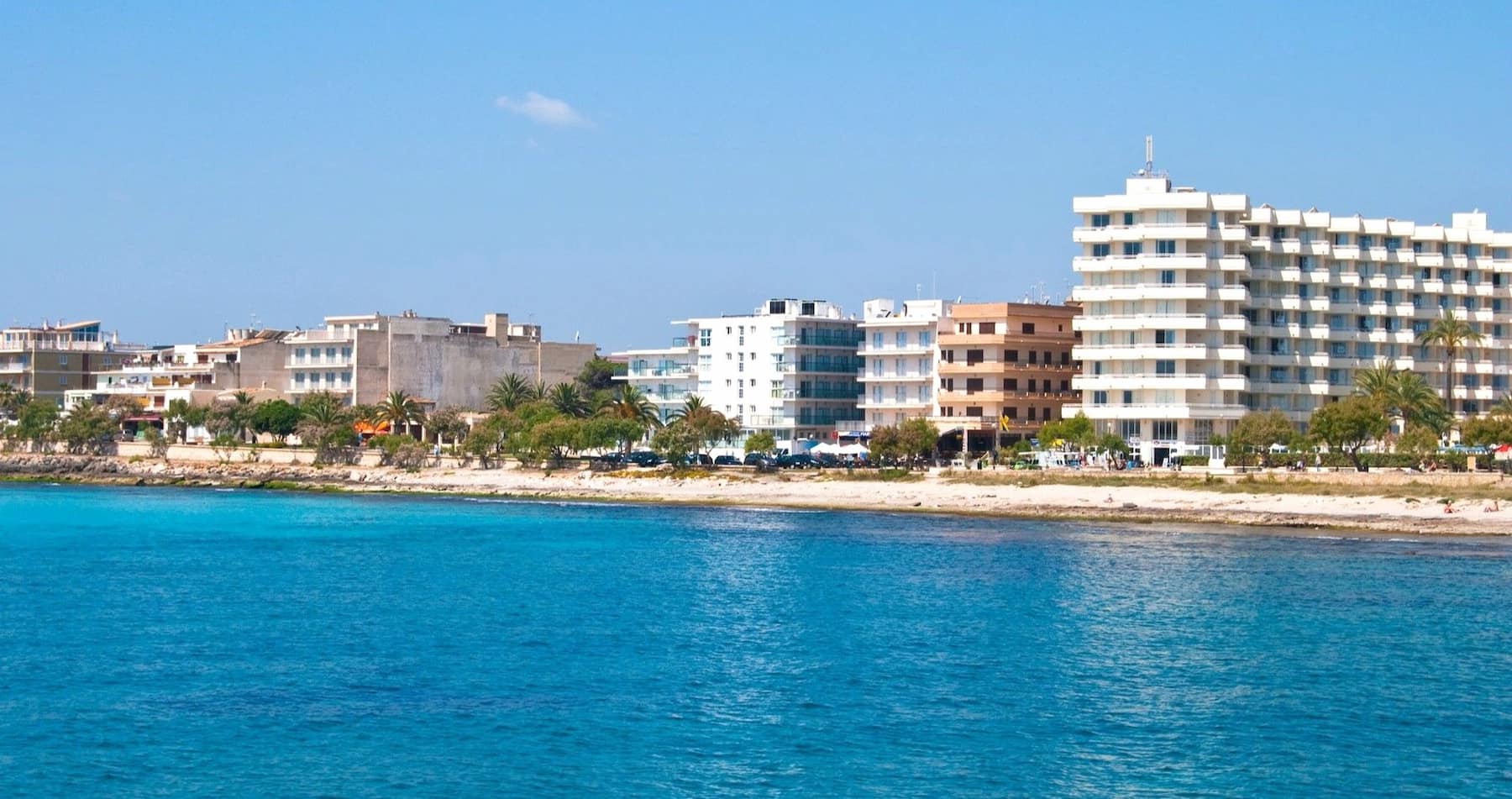I fell in love with Salamanca the moment I stepped into Plaza Mayor and watched the golden sandstone buildings glow in the afternoon sun. This charming Spanish city, just a few hours from Madrid, offers a perfect mix of history, culture, and student energy that makes it truly special. From magnificent cathedrals to hidden gardens, Salamanca packs an incredible amount of beauty into its walkable historic center.
My three days exploring this UNESCO World Heritage city left me with unforgettable memories and a strong desire to return. Whether you’re searching for Renaissance architecture, delicious tapas, or simply a place to wander through centuries of history, Salamanca delivers on all fronts. Let me share my favorite discoveries that will make your visit to this golden city just as magical as mine was.
🏠 Where to Stay in Salamanca
- 💎 Luxury Hotel: Grand Hotel Don Gregorio
- ✨ 5-Star: Hotel Alameda Palace
- 🏨 4-Star: Gran Hotel Corona Sol
- 🛏️ 3-Star: Zenit Hall 88 Studios
- 💸 Cheap: Residencia Universitaria Resa Colegio de Cuenca
- 🏢 Apartment: Hotel Castellano I
- 👨👩👧👦 For Families: Hospes Palacio de San Esteban, a Member of Design Hotels
- 🏩 For Couples: Eurostars Las Claras
💁 Best Guided Tours
- Salamanca Like a Local: Customized Private Tour from € 53 (⭐ 4.9/5)
- Visit to the Battlefield of Arapiles 1812 from € 25 (⭐ 4.8/5)
- Walking Tour Salamanca from € 15 (⭐ 4.9/5)
- Salamanca Sightseeing Walking Tour with Local Guide from € 18 (⭐ 4.8/5)
- Salamanca Private Tour with a Local from € 40 (⭐ 4.9/5)
Best Things To Do in Salamanca
1. Plaza Mayor
Heart of the city. Plaza Mayor in Salamanca stunned me with its perfect symmetry and golden sandstone glow. This magnificent Baroque square, built between 1729 and 1755, serves as Salamanca’s living room where locals and visitors mingle.
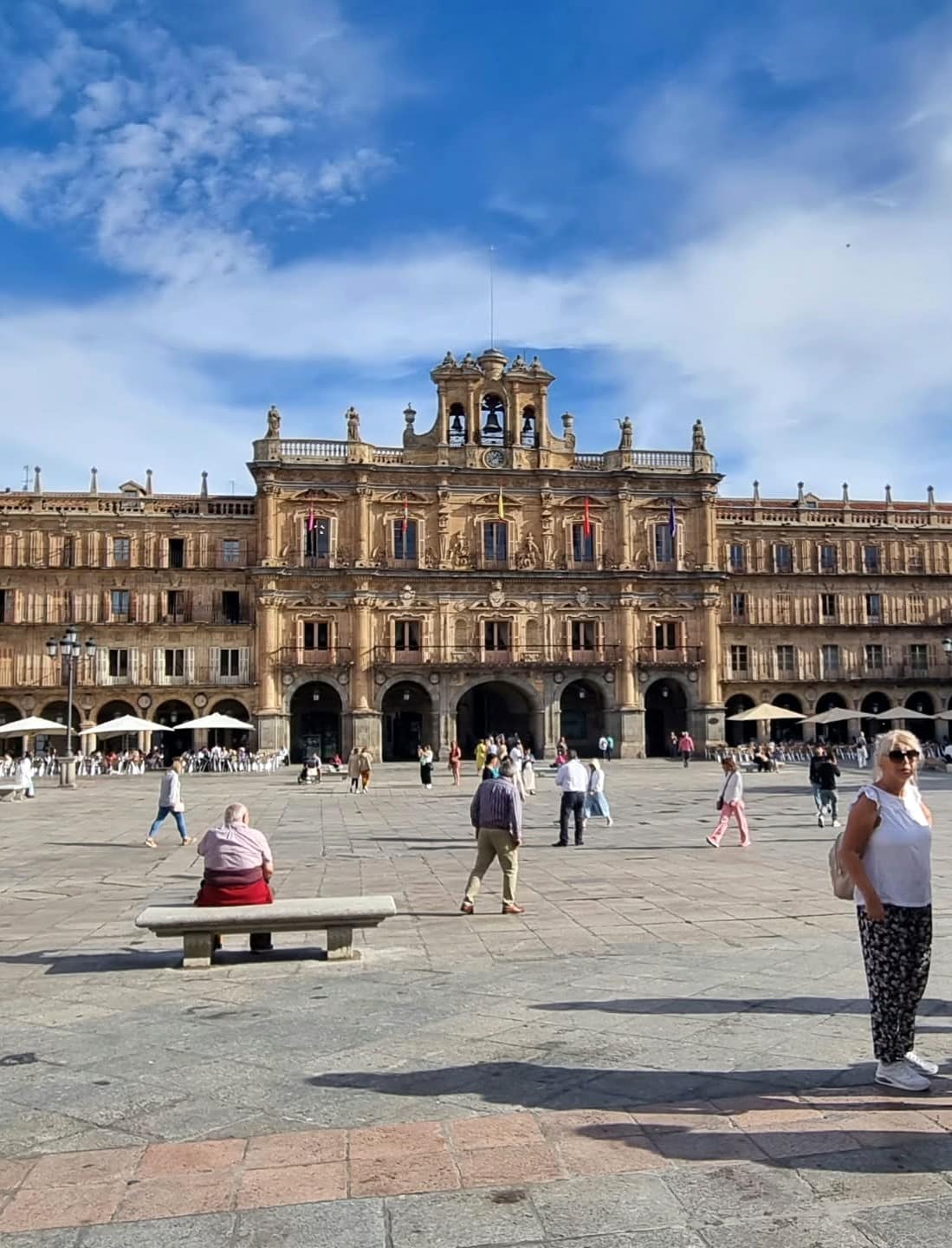
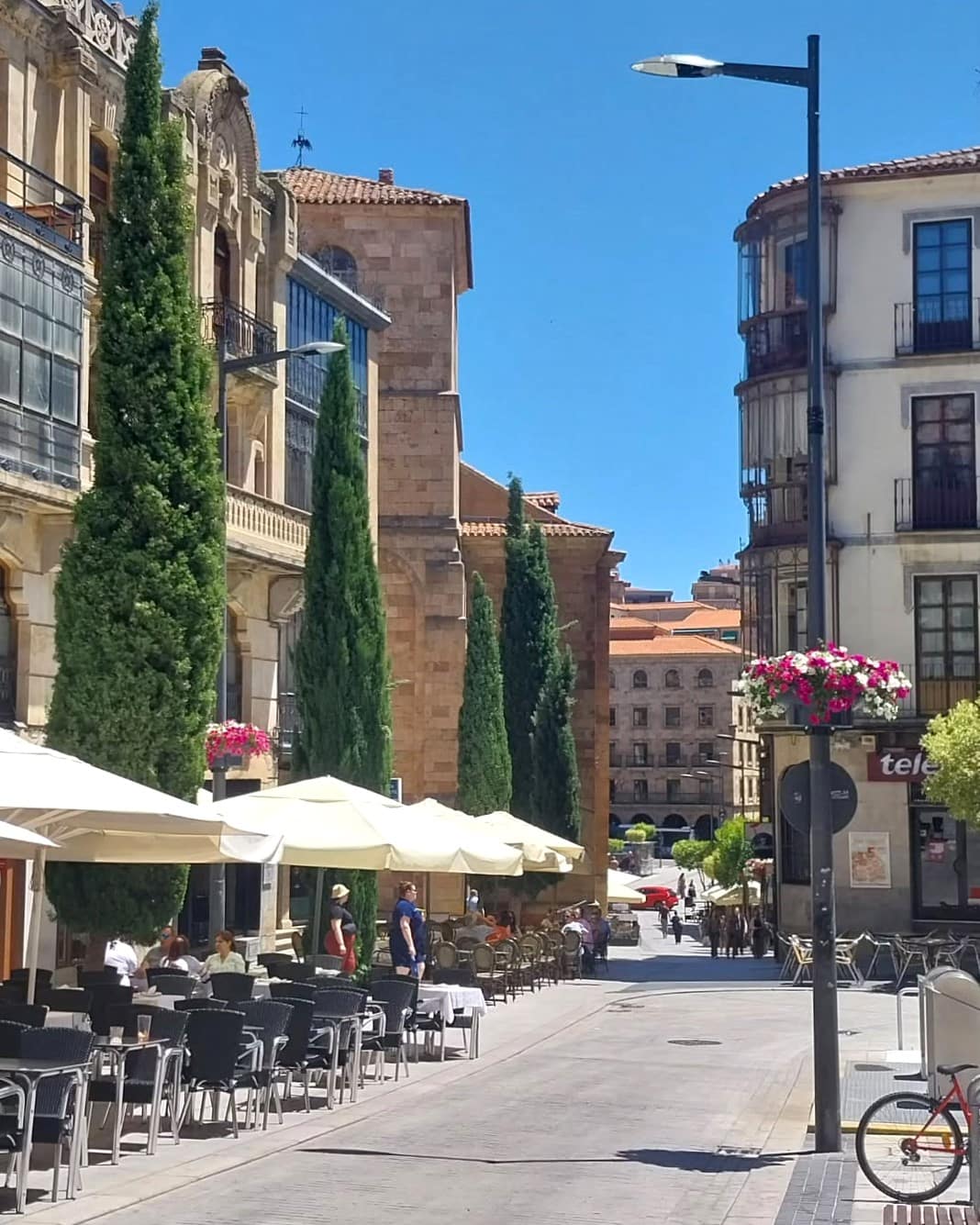
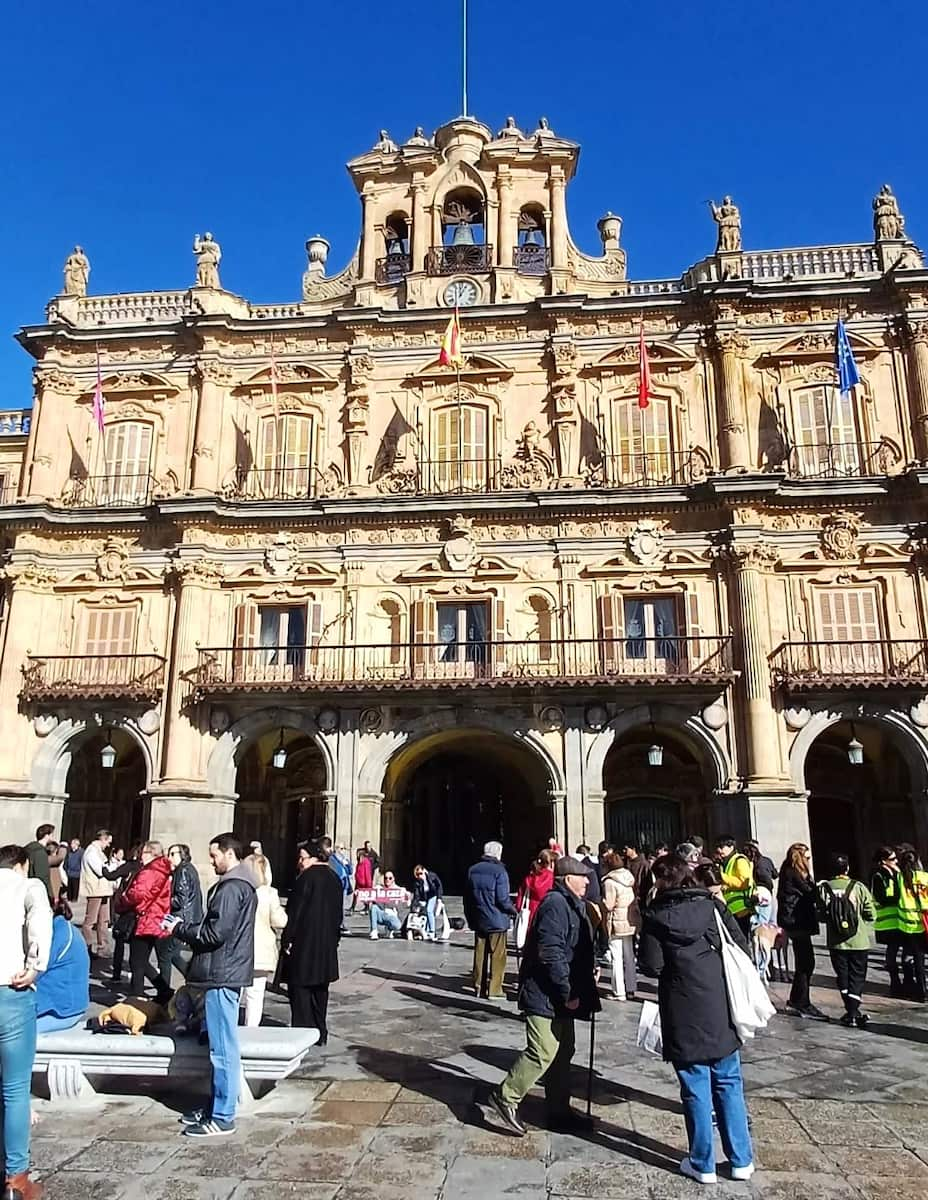
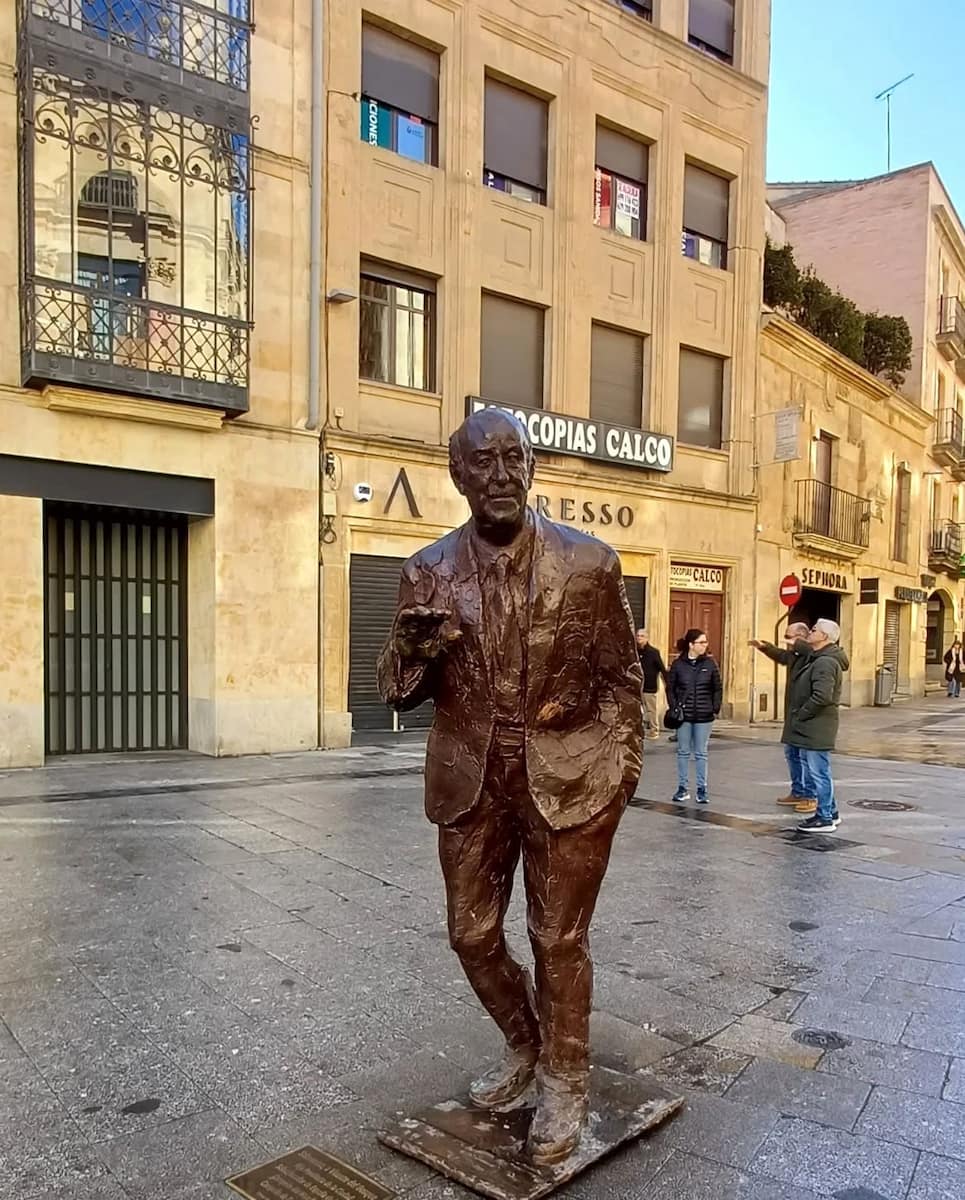
Architecture. Walking beneath the 88 arches that surround the square, I admired the medallions featuring famous Spanish figures. The north side houses the impressive City Hall, while the Royal Pavilion stands prominently on the eastern side.
Atmosphere. I found the plaza transforms throughout the day. Mornings offer peaceful coffee experiences, while evenings buzz with energy as students and families fill the terraces of surrounding tapas bars.
Practical tip. The best views are from Café Novelty, Spain’s oldest café (established 1905) located on the plaza’s northern side. A coffee costs around 2€ ($2.20), well worth it for the prime people-watching spot.
Local experience. During my visit, I joined locals for the paseo (evening stroll) around 7 PM. This ritual offers authentic immersion in Salamancan culture and perfect photo opportunities as the buildings illuminate in the changing light. The plaza is particularly magical after sunset when it’s completely lit up, creating a stunning golden glow that showcases why Salamanca is called “The Golden City.”
Opening hours. Plaza Mayor is accessible 24 hours daily, making it perfect for early morning photos or late evening strolls. The square is pedestrianized, allowing you to wander freely under its portals, protected from sun or rain.
Cultural significance. In 1988, UNESCO declared Salamanca’s old city a World Heritage Site, with Plaza Mayor at its heart. A plaque in the center of the plaza marks this significance. Today, the square regularly hosts cultural events, book fairs, and is the social hub of the city.
⭐ Best Activities
- Private Custom Tour with a Local Guide: Salamanca – Enjoy a personalized experience with a local guide who will pick you up from your centrally located hotel. This flexible tour allows you to discover Salamanca’s highlights while adapting to your interests and pace.
2. Salamanca Cathedral (Old and New)
Two-in-one experience. Salamanca uniquely boasts two adjoining cathedrals – the Old Cathedral (12th century) and the New Cathedral (16th century). I was amazed to discover both can be visited with a single ticket priced at 6€ ($6.60).
Old Cathedral highlights. Inside the Romanesque Old Cathedral, I was captivated by the vibrant Gallo Tower frescoes and the breathtaking altarpiece featuring 53 panels depicting scenes from Christ and Mary’s lives. The fresco of the Final Judgment above the panels is particularly impressive.
New Cathedral treasures. The massive New Cathedral impressed me with its Gothic architecture and intricate choir stalls. Don’t miss what I almost overlooked – the whimsical modern additions hidden among traditional carvings, including an astronaut and an ice cream-eating gargoyle added during 1992 restorations. There’s also a rabbit, a bull, a stork, and a lobster hidden in the façade – a fun treasure hunt for visitors of all ages!
Photography tip. The cathedrals offer free entry on Tuesdays from 4PM-6PM (October-March) and 6PM-8PM (April-September). I found this timing perfect for capturing the late afternoon light filtering through the stained glass windows.
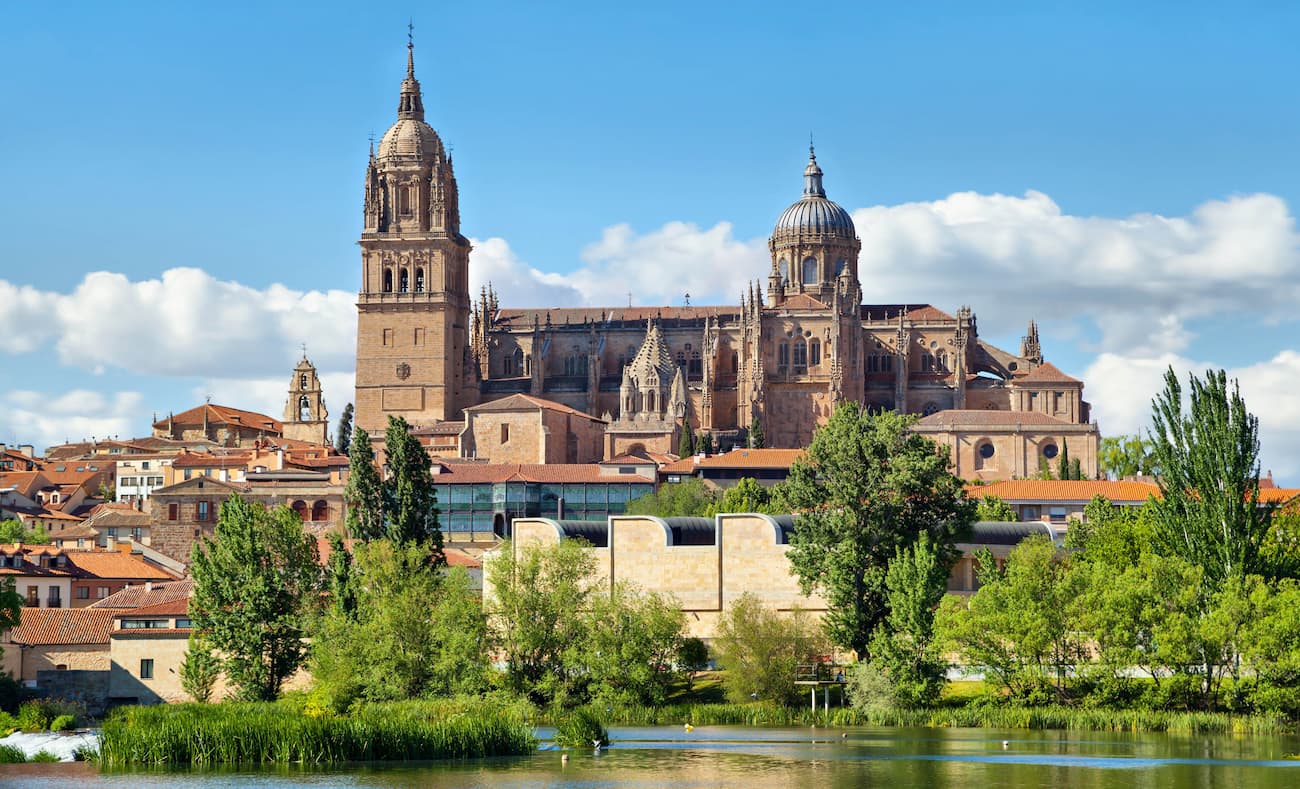
Visiting information. Allow at least 1.5 hours to properly explore both cathedrals, the cloister, and chapter halls. Audio guides are available and highly recommended to understand the rich history and artistic details. The entrance to both cathedrals is located at Plaza Juan XXIII.
⭐ Best Activities
- Tour: The Best of Salamanca (English) – See Salamanca through the eyes of a local on this 1.5-hour small-group tour limited to just 6 travelers. Discover both famous monuments and locally loved spots that many tourists miss while learning fascinating facts about this UNESCO World Heritage city.
- Ticket+Tour: Salamanca Cathedral Ticket with Audio Guide – Explore both the Old and New Cathedrals of Salamanca at your own pace with this convenient ticket that includes an informative audio guide to en56\hance your visit.
3. Ieronimus Tower
Panoramic views. Climbing the Ieronimus Tower was the highlight of my Salamanca visit. This medieval bell tower offers spectacular 360° views of the golden city from 110 meters up, with the cathedral domes and Plaza Mayor spread below like a living map.
Historical journey. As I ascended the stone spiral staircase, I discovered the tower isn’t just about views. Each level features fascinating exhibitions about cathedral construction, including original architectural plans and stone mason marks.
Hidden passages. The most thrilling part was exploring the secret passageways between the Old and New Cathedrals. I walked along the flying buttresses and got close to gargoyles that have watched over Salamanca for centuries.
Visitor information. Entry costs 6€ ($6.60) and includes:
- Access to both cathedral rooftops
- Exhibition rooms with cathedral artifacts
- Panoramic terraces with viewing telescopes
- Walkways between the cathedrals
⭐ Best Activities
- Salamanca Like a Local: Customized Private Tour – Experience Salamanca with a knowledgeable local who will create a personalized itinerary based on your interests during this 2-6 hour private tour, perfect for getting oriented in the city.
4. University of Salamanca
Historic significance. Founded in 1218, Salamanca University is Spain’s oldest and among Europe’s most prestigious. Walking through its hallowed halls, I felt the weight of 800 years of academic excellence that attracted scholars like Miguel de Cervantes.
Façade treasure hunt. The university’s Plateresque façade is a masterpiece, but its most famous feature is tiny – a frog perched on a skull. I spent 15 minutes searching before spotting it! According to tradition, students who find it without help will pass their exams.
Must-see spaces. My university tour included:
- The stunning Fray Luis de León lecture hall (unchanged since the 16th century)
- The magnificent Old Library with 40,000 volumes
- The baroque University Chapel
- The “Cielo de Salamanca” ceiling fresco
Student life. The university remains vibrant with 30,000 students, including many international scholars. This creates a youthful energy throughout the city and excellent language exchange opportunities at local bars like Camelot near Plaza Mayor.
Visitor details. Entry costs 10€ ($11) for the guided tour, which I highly recommend. Tours run hourly from 10AM-5PM and last approximately 1 hour. The university closes on major holidays and during examination periods.
⭐ Best Activities
- Private Tour in Salamanca Universitaria – Discover the rich academic history of Salamanca University, Spain’s oldest university, on this 1.5-hour private tour focused on the institution’s fascinating heritage and architectural treasures.
5. Casa de las Conchas (House of Shells)
Architectural wonder. Casa de las Conchas immediately caught my eye with its façade decorated with over 300 stone scallop shells. Built in the late 15th century, this Gothic-Plateresque building tells a story of love and allegiance through its unique ornamentation.
Historical significance. The shells symbolize the Order of Santiago, to which the original owner belonged. Inside, I discovered the building has served many purposes over centuries – from noble residence to current-day public library.
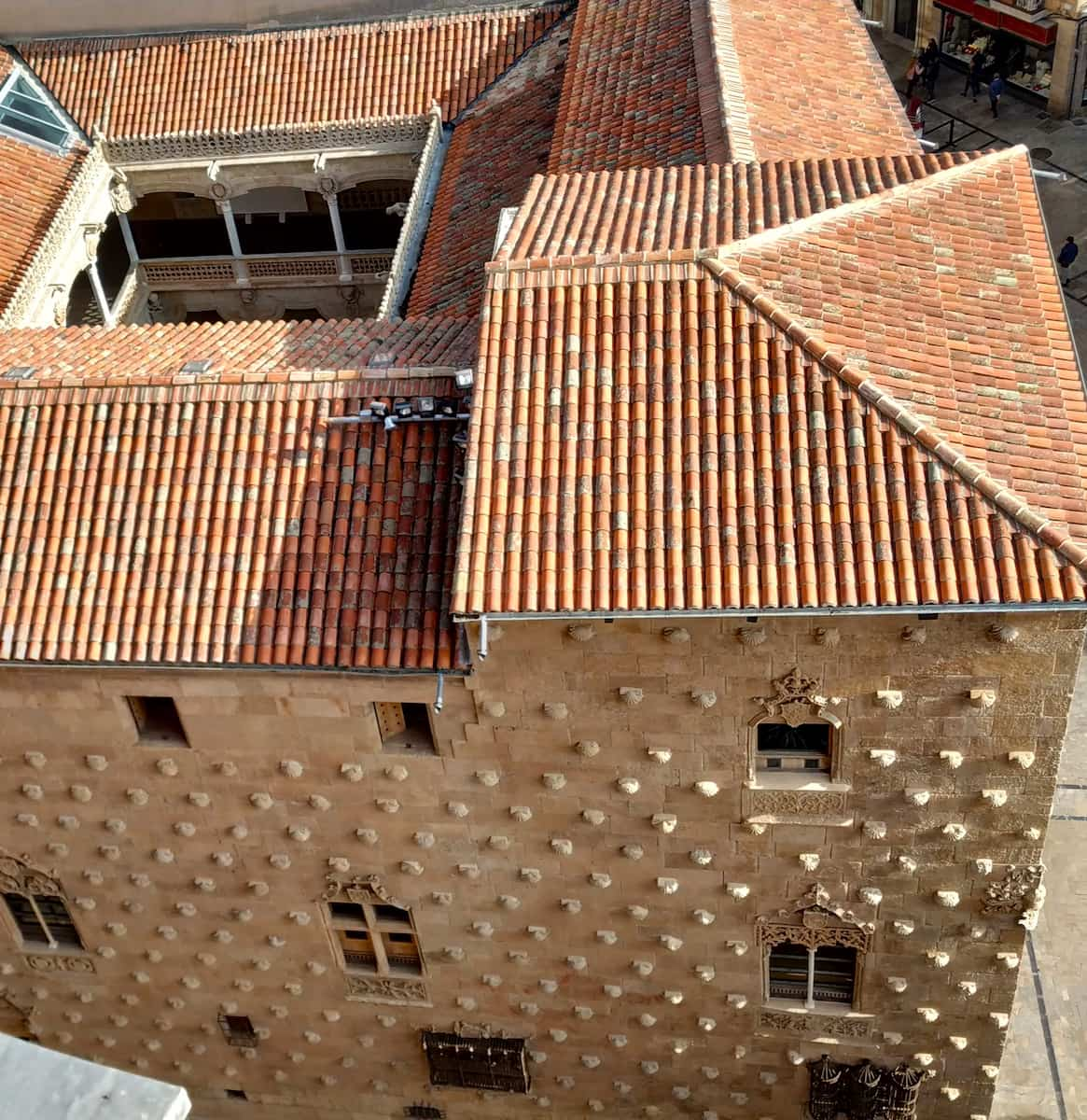
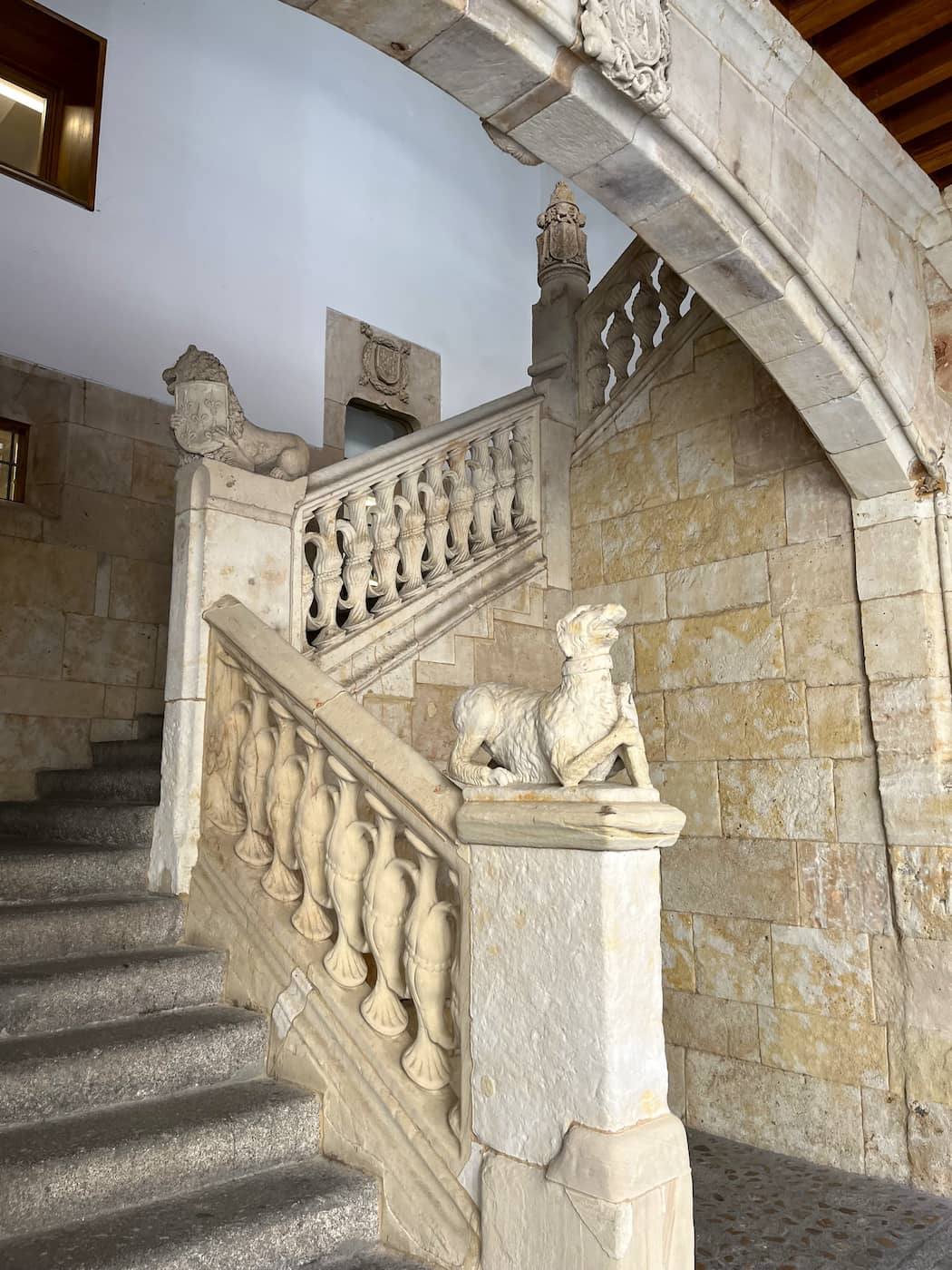
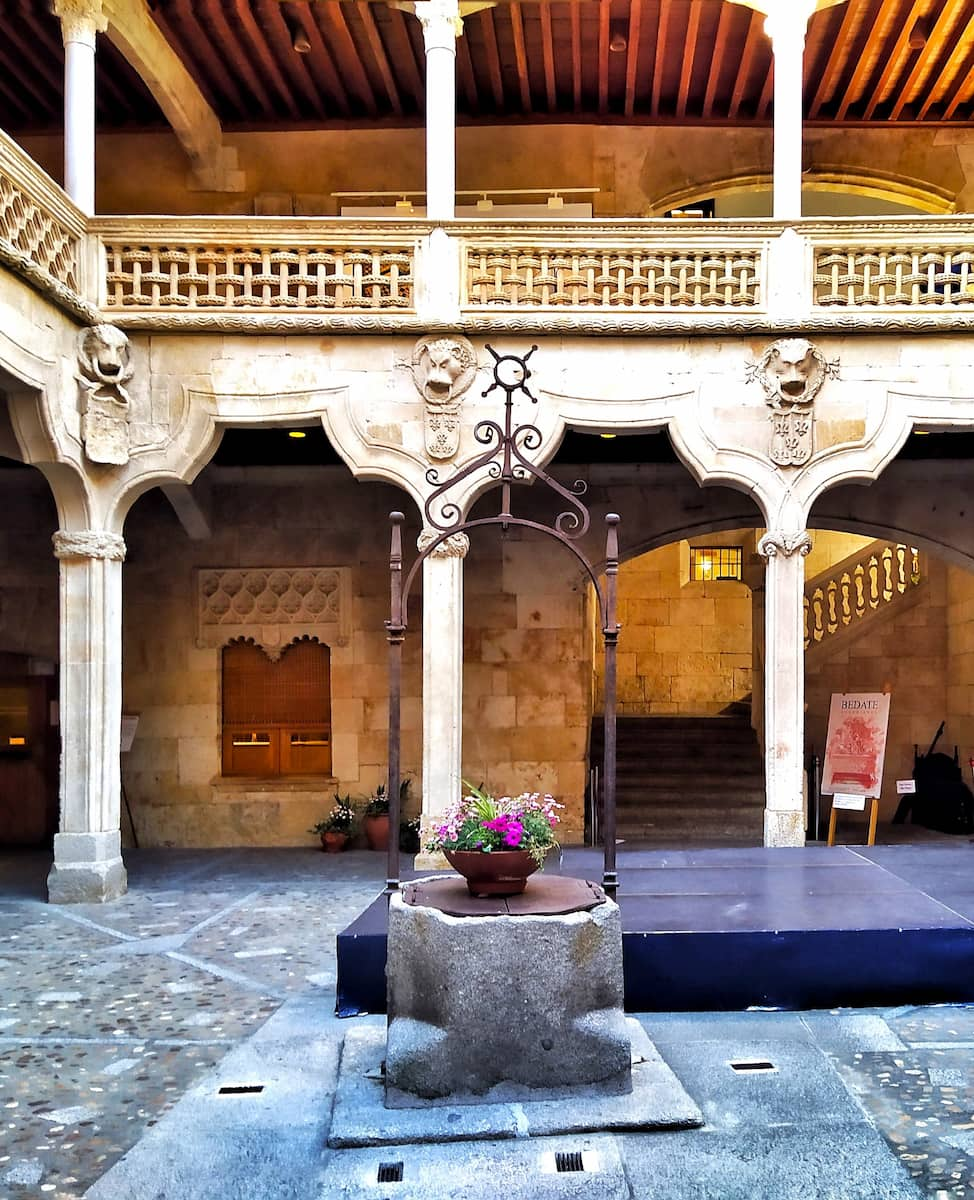
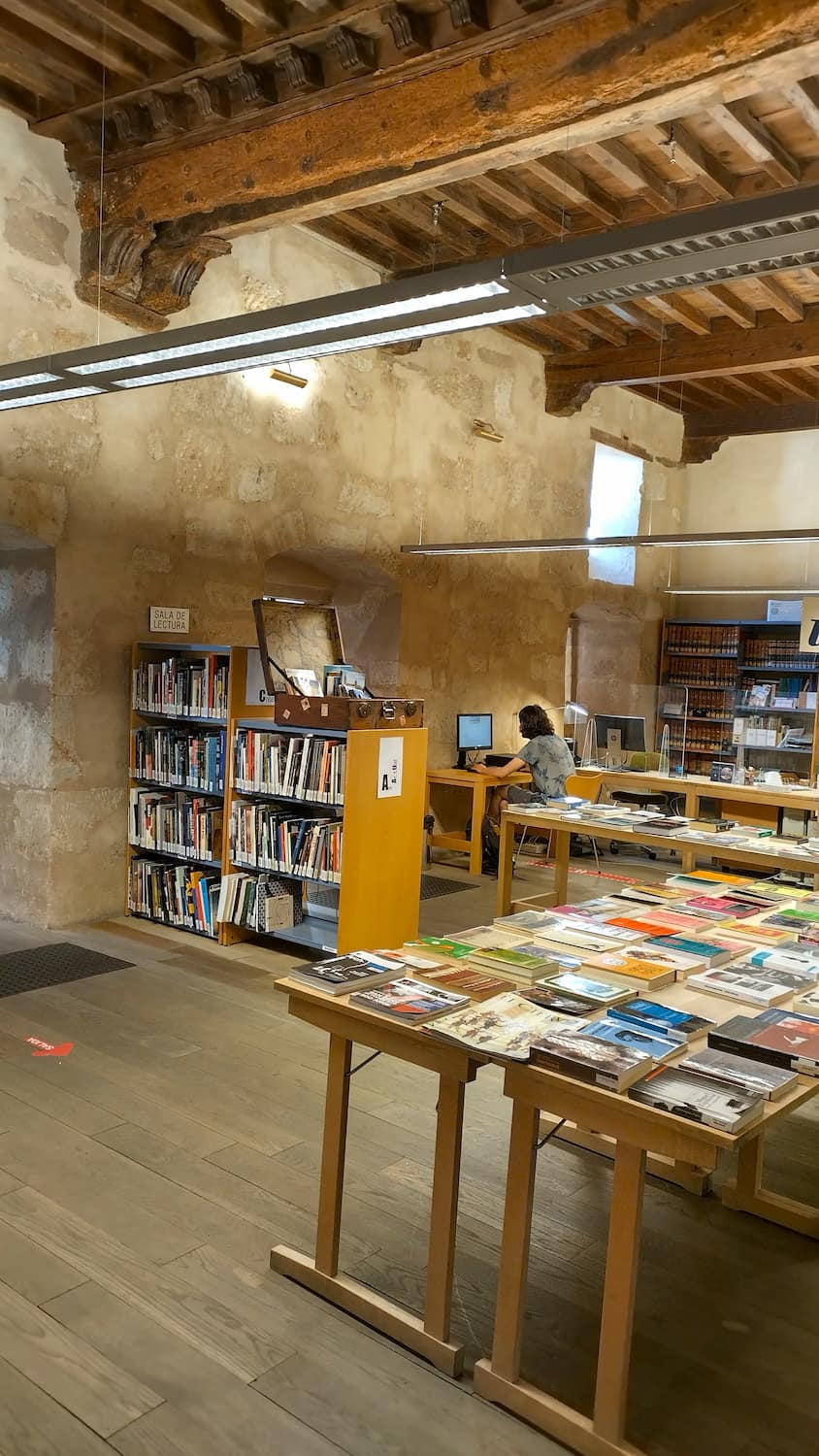
Interior highlights. The interior courtyard surprised me with its:
- Elegant stone columns
- Ornate wrought-iron balconies
- Peaceful atmosphere amid city bustle
- Beautiful well in the center
Modern function. Now serving as Salamanca’s public library, the building offers free WiFi and comfortable reading spaces. I spent a pleasant hour browsing Spanish literature while escaping the midday heat.
Visiting information. Entry is completely free, open Monday-Friday 9AM-9PM and Saturday 9AM-2PM. Photography is permitted in the courtyard but not in the library areas. The building is located on Calle Compañía, just steps from the University.
⭐ Best Activities
- 3-hour Private Tour of Salamanca – Enjoy a comprehensive exploration of Salamanca’s highlights with a knowledgeable guide on this 3-hour private tour that can be customized to your interests and pace.
6. Casa Lis Art Nouveau & Art Deco Museum
Stunning setting. Casa Lis dazzled me with its magnificent stained-glass façade that bathes the interior in rainbow light. This modernist mansion from 1905 houses Spain’s finest collection of decorative arts from the Art Nouveau and Art Deco periods.
Collection highlights. The museum displays over 2,500 pieces including:
- Exquisite Lalique jewelry and glasswork
- Rare Fabergé eggs and Russian pieces
- Chryselephantine sculptures by Demetre Chiparus
- Bronzes by Austrian masters
- Porcelain dolls and antique toys
Unexpected treasures. The most surprising collection was the antique dolls and automata, occupying an entire floor. Some date back to the 1840s, with incredible craftsmanship and sometimes slightly creepy expressions!
Café experience. The museum café beneath the stained-glass ceiling offers excellent coffee (3€/$3.30) and pastries with a magical ambiance. I enjoyed watching the colored light patterns shift across my table as clouds passed overhead.
Visitor essentials. Entry costs 5€ ($5.50), with free admission on Thursdays from 11AM-2PM. Open Tuesday-Sunday 11AM-8PM. The gift shop sells beautiful Art Nouveau reproductions that make perfect souvenirs.
⭐ Best Activities
- Salamanca Walking Tour – Explore the historic center of Salamanca on this 2.5-hour walking tour that takes you through the city’s most important landmarks while learning about its rich history and culture.
7. Roman Bridge
Ancient engineering. The Roman Bridge (Puente Romano) spans the Tormes River with 15 graceful arches, some dating back to the 1st century AD. Walking its 176-meter length, I marveled at how this ancient structure has withstood floods and wars for nearly 2,000 years.
Scenic viewpoint. From midway across, I captured my favorite photos of Salamanca’s skyline. The cathedral towers and historic buildings create a perfect silhouette, especially during sunset when the sandstone glows amber against the darkening sky.
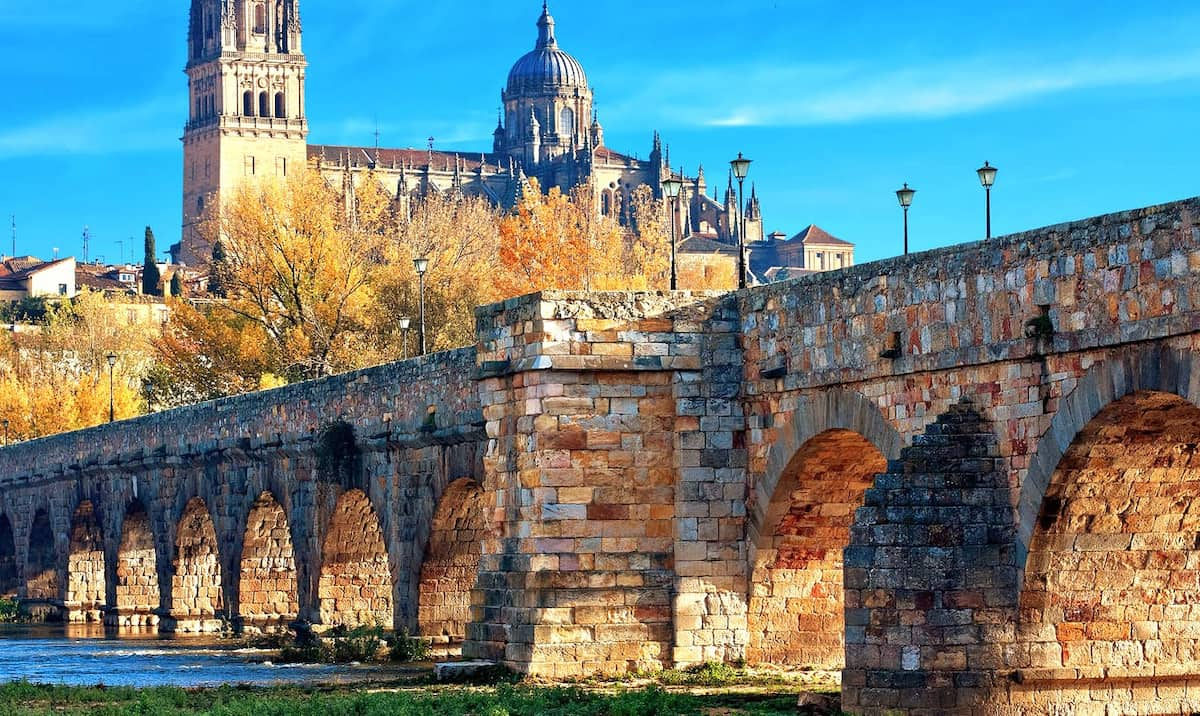
Historical significance. The bridge formed part of the Vía de la Plata (Silver Route), connecting Mérida to Astorga during Roman times. Only 15 of the original 26 arches remain authentic Roman construction, with medieval repairs visible in the different stonework.
Riverside activities. Along the riverbanks, I found:
- Local fishermen with traditional techniques
- A peaceful walking path with native birds
- Small cafés with riverside terraces
- Rental boats available in summer (15€/$16.50 per hour)
Practical information. The bridge is always open and illuminated at night. Parking is available at either end, though I recommend walking from the city center (15 minutes from Plaza Mayor) to appreciate the approaching view.
⭐ Best Activities
- Salamanca by Bike – Discover Salamanca’s highlights in a fun and active way on this 2-hour bike tour that allows you to cover more ground while enjoying the fresh air and unique perspectives of the city.
8. Convento de San Esteban
Dominican masterpiece. Convento de San Esteban’s façade stopped me in my tracks with its intricate Plateresque stonework. This Dominican monastery, completed in 1610, represents the pinnacle of Spanish Renaissance architecture and houses important historical connections.
Historical significance. Columbus reportedly stayed here while seeking royal support for his voyages. The monastery also hosted theological debates about the rights of indigenous peoples in the New World, making it a crucial site in Spanish colonial history.
Interior treasures. Inside, I discovered:
- A magnificent altarpiece by José de Churriguera
- The stunning “Scala Coeli” staircase
- Peaceful cloisters with elegant arcades
- The chapter house with remarkable acoustics
Peaceful gardens. The monastery gardens provided a welcome respite from sightseeing. Filled with aromatic herbs and medicinal plants cultivated by monks for centuries, it’s a perfect spot for quiet contemplation.
Visitor information. Entry costs 4€ ($4.40), open daily 10AM-7:30PM (shorter hours in winter). Guided tours in English available at 11AM and 4PM for an additional 2€. Photography permitted except during services.
⭐ Best Activities
- Evening Tour Salamanca – Experience the magic of Salamanca after dark when the golden sandstone buildings are beautifully illuminated on this evening walking tour that reveals a different side of the city.
9. Cielo de Salamanca (Sky of Salamanca)
Hidden gem. The “Sky of Salamanca” ceiling fresco was my most unexpected discovery. Tucked away in the Escuelas Menores building of the old university, this 15th-century astronomical painting depicts zodiac constellations and celestial bodies with remarkable accuracy.
Artistic significance. Created by Fernando Gallego around 1485, this fresco represents the medieval understanding of the cosmos. Only about a third of the original work survives, but what remains is breathtaking in its detail and vivid colors.
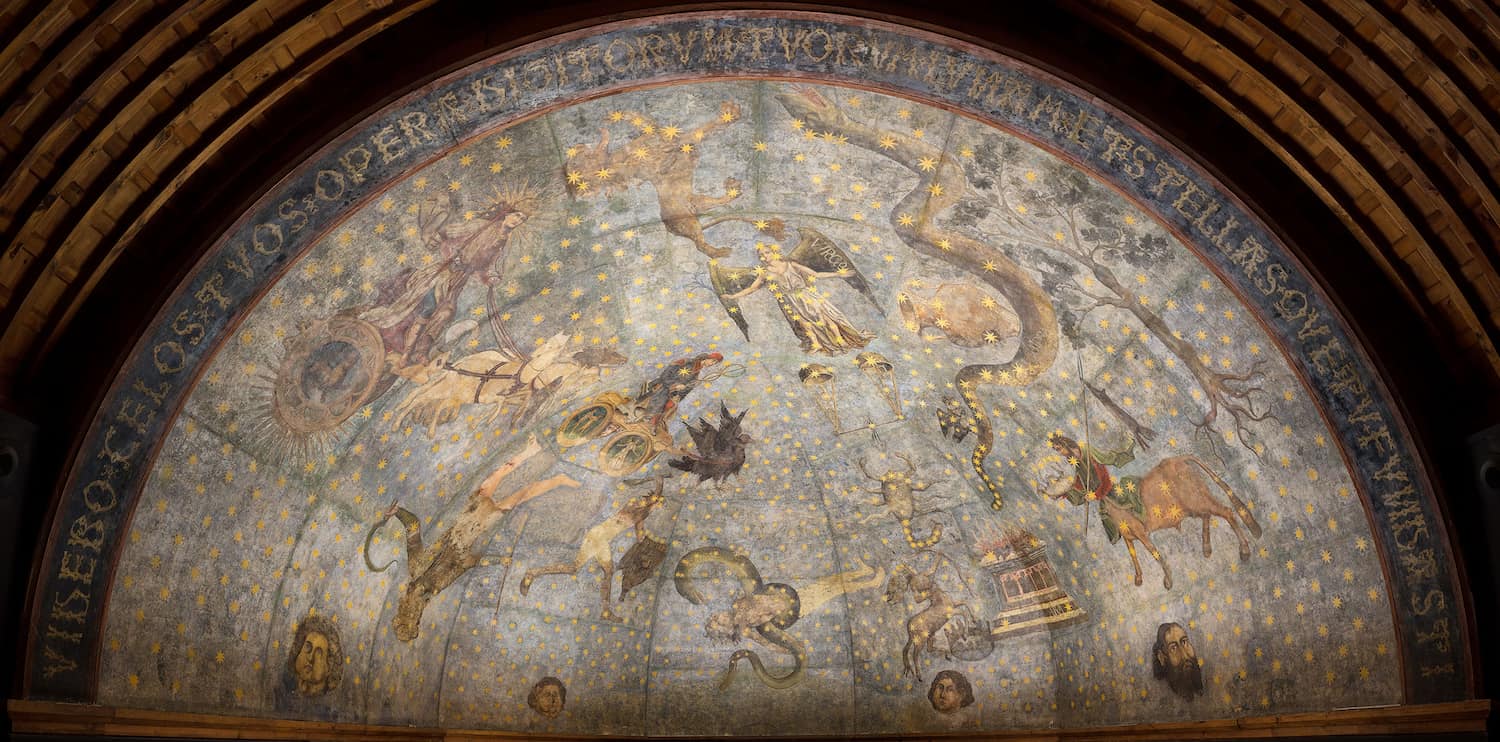
Historical context. The ceiling decorated the original university library, reflecting how astronomy was central to medieval education. Standing beneath it, I imagined students studying the heavens centuries before telescopes existed.
Scientific accuracy. The fresco includes:
- Detailed zodiac constellations
- Planetary positions
- Solar and lunar representations
- Seasonal markers used for agricultural planning
Visitor essentials. Entry costs just 2€ ($2.20) or is included with the University tour ticket. Open Monday-Saturday 10AM-2PM and 4PM-7PM, Sundays 10AM-2PM. Located in the Patio de Escuelas Menores, near the famous university façade.
⭐ Best Activities
- Salamanca Sightseeing Walking Tour with Local Guide (Spanish) – Join a Spanish-speaking local guide on this 2-hour walking tour that introduces you to Salamanca’s most important landmarks and shares fascinating stories about the city’s history.
10. Scala Coeli (Torres de la Clerecia)
Climbing adventure. Scaling the twin towers of La Clerecía Church through the “Scala Coeli” (Stairway to Heaven) tour provided my favorite Salamanca views. The 28-meter climb rewards visitors with spectacular panoramas from the highest accessible point in the city center.
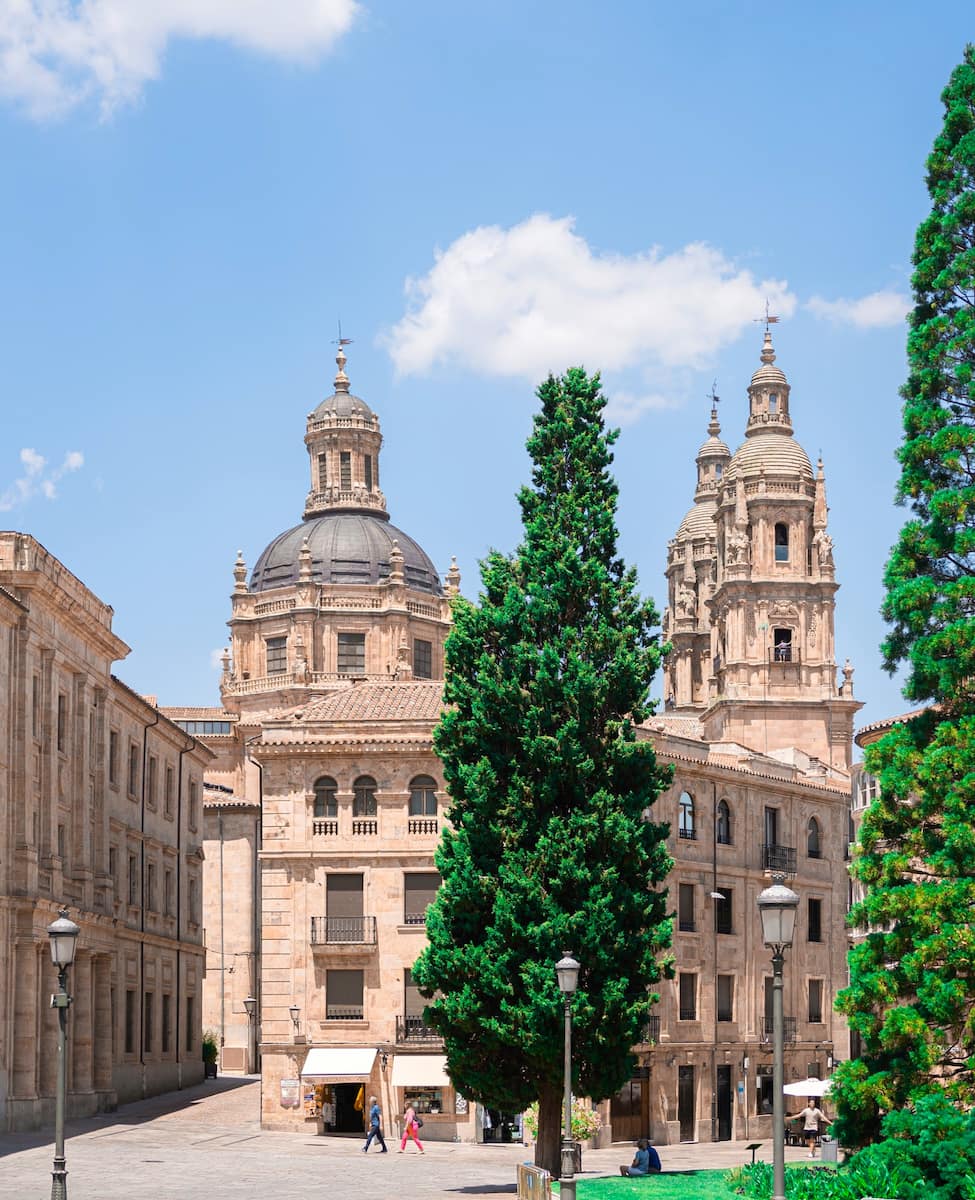
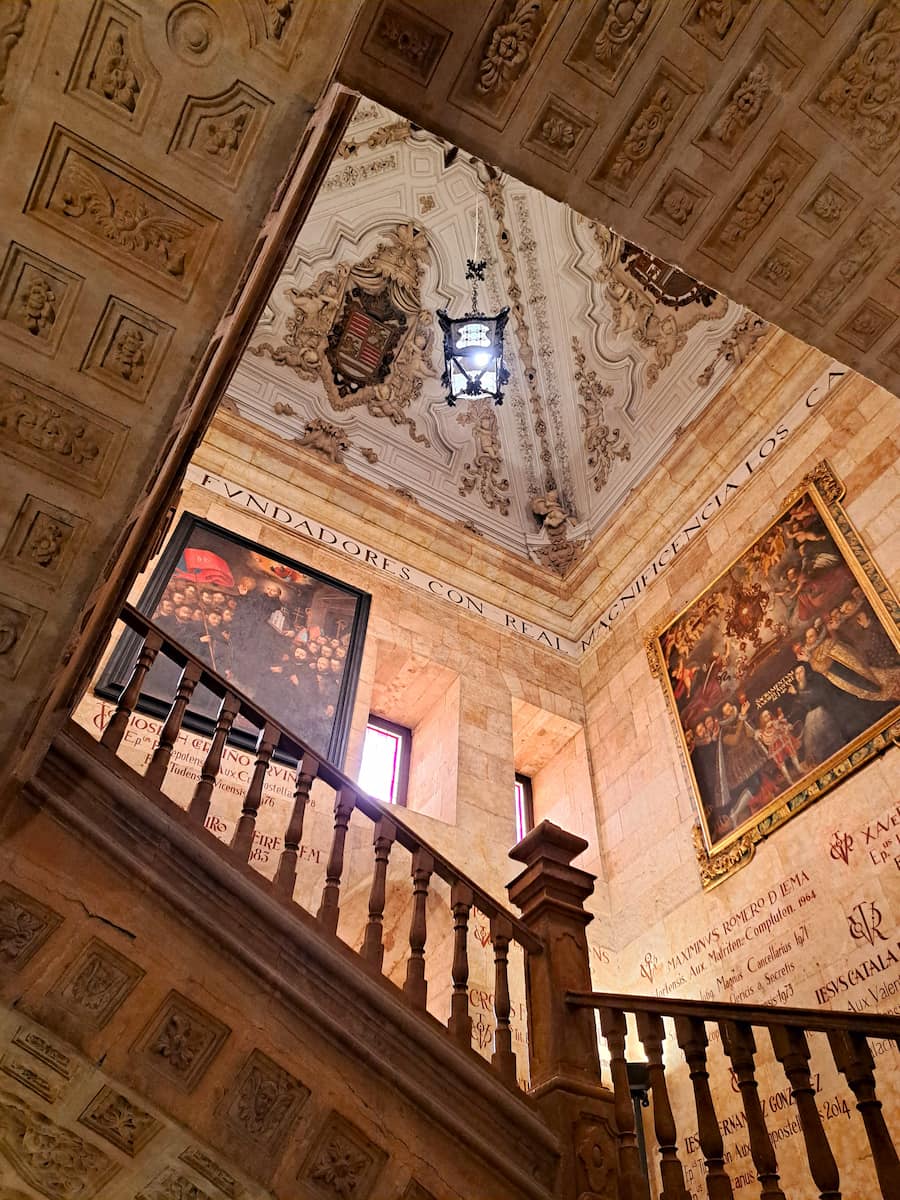
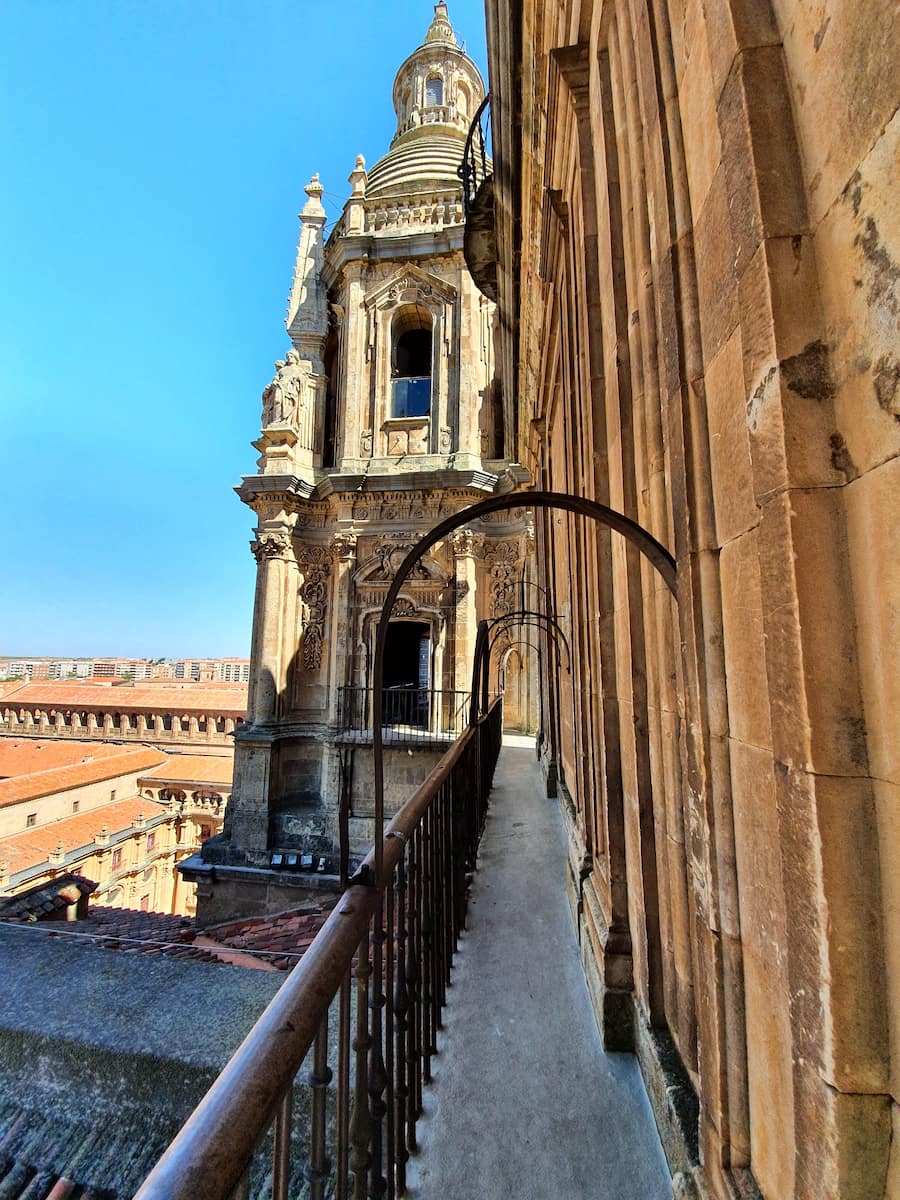
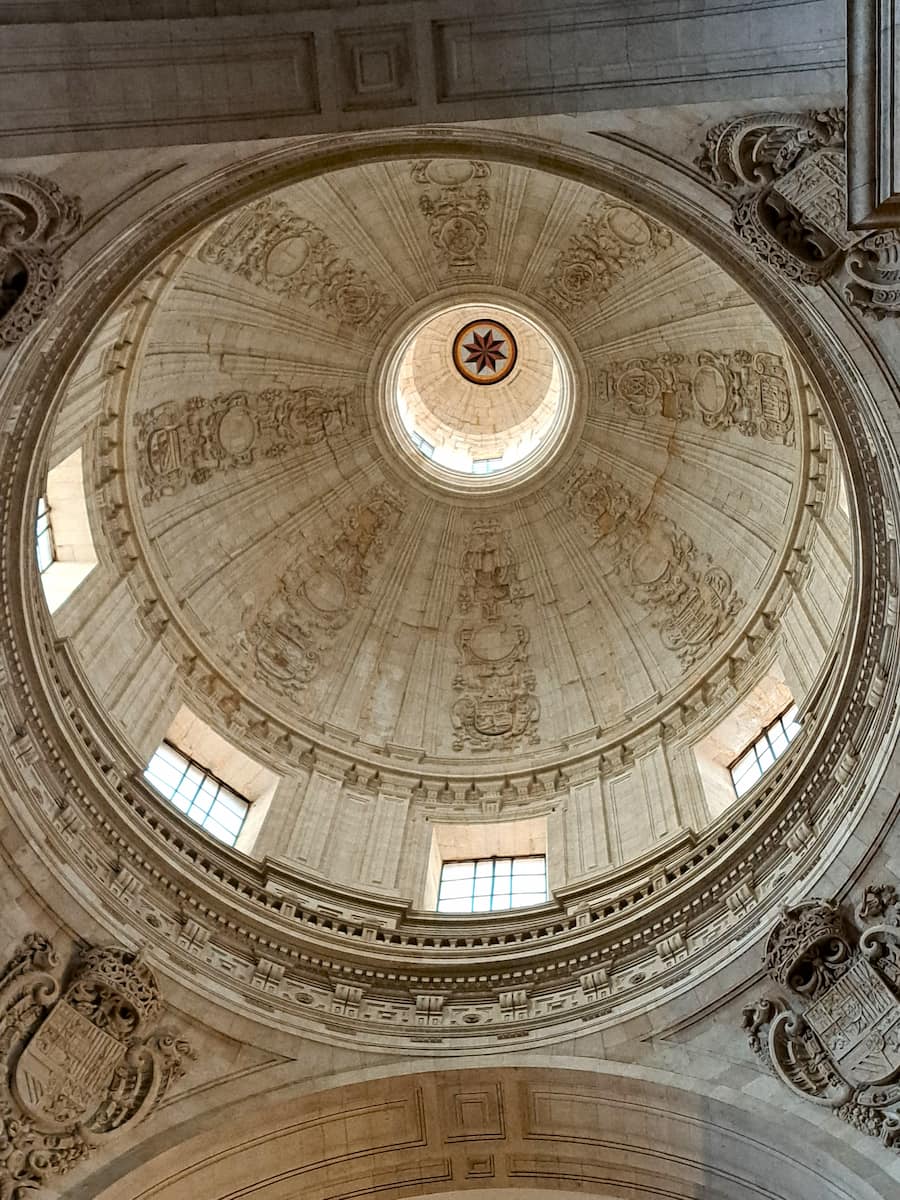
Architectural marvel. Built between 1617 and 1755, this Baroque church complex served as the Royal College of the Company of Jesus. The massive scale and intricate details showcase the Jesuits’ influence during Spain’s Golden Age.
Tour highlights. The complete tour includes:
- The church interior with magnificent altarpiece
- The ornate choir with carved wooden seats
- The museum of religious artifacts
- Access to the upper galleries and terraces
- The bell towers with panoramic views
Photography paradise. From the towers, I captured stunning photos of:
- Plaza Mayor from above
- Both cathedrals in one frame
- The university quarter
- The winding Tormes River
- Distant mountains on clear days
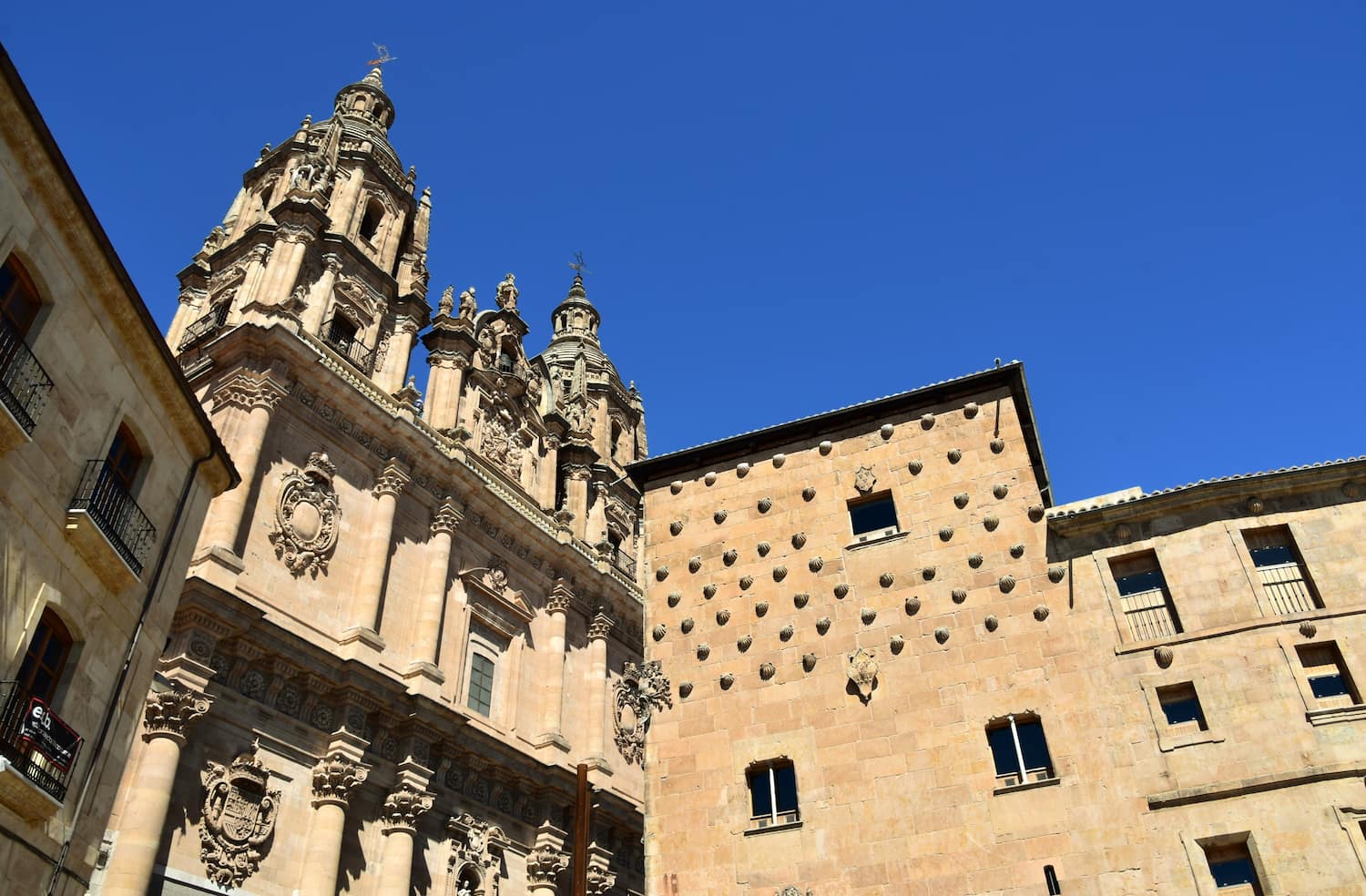
Visitor information. Entry costs 6€ ($6.60), open Tuesday-Sunday 10AM-8PM (closes earlier in winter). The full tour takes about 1 hour. Wear comfortable shoes as there are 127 steps to the top with few resting places.
11. Monterrey’s Palace
Architectural marvel. Monterrey’s Palace, built in 1539, stands as one of the finest examples of Plateresque architecture in Salamanca. Its intricate façade, adorned with ornate carvings and heraldic symbols, captivated my attention as I approached.
Historical significance. Commissioned by the III Count of Monterrey, this palace has influenced Spanish architecture for centuries. I was fascinated to learn that its design inspired numerous 19th and 20th-century buildings across Spain, including the Archaeological Museum of Seville.
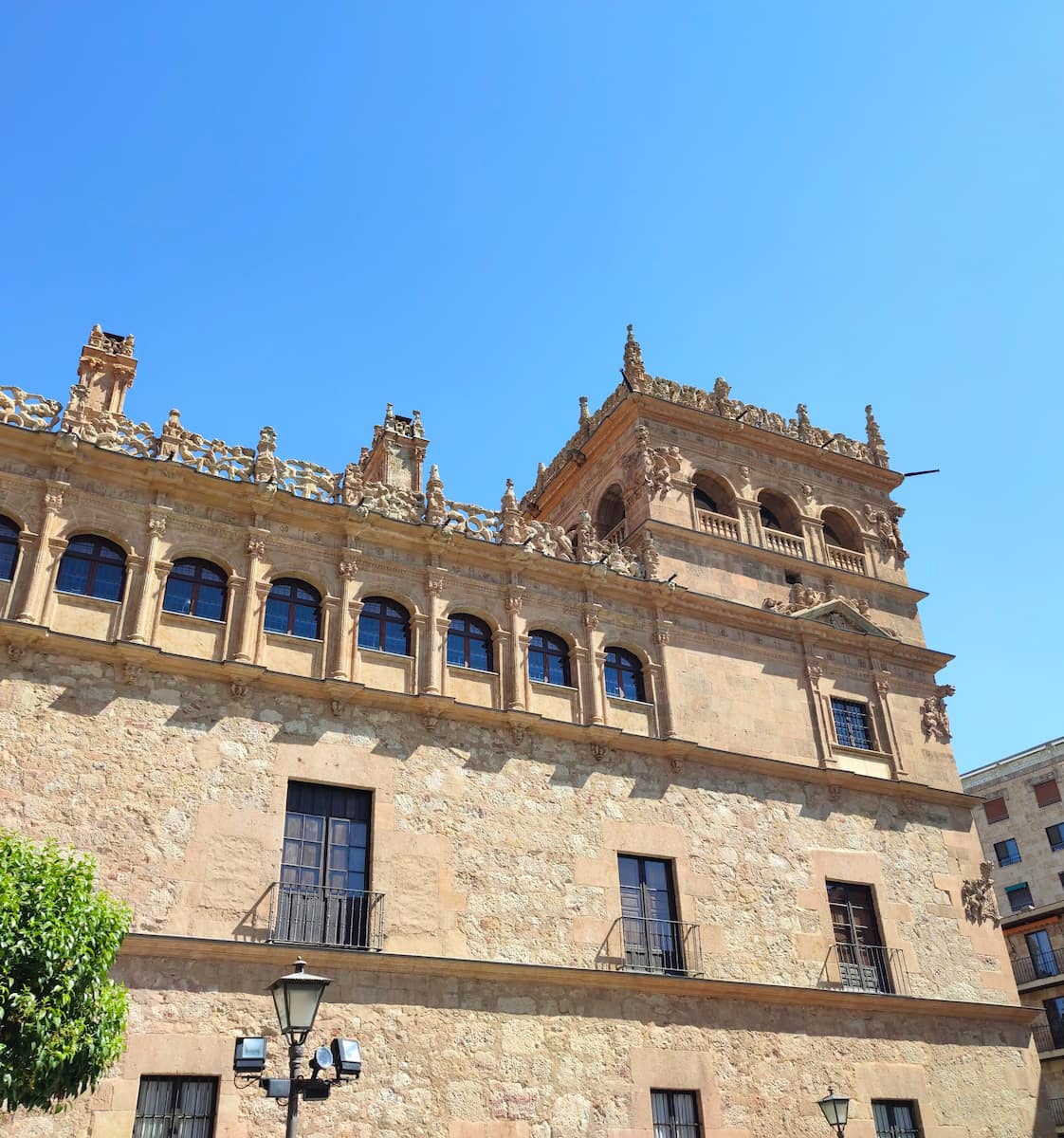
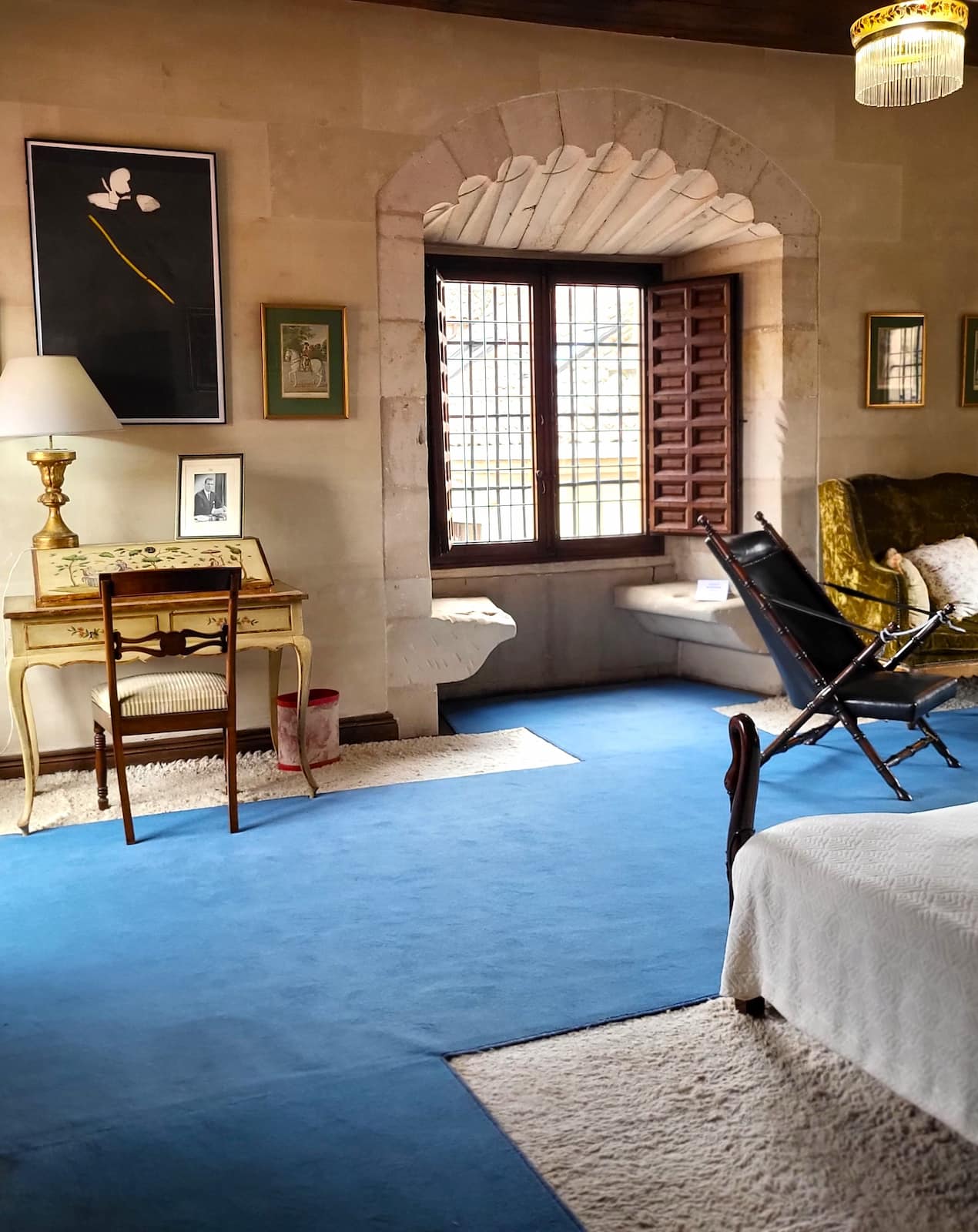
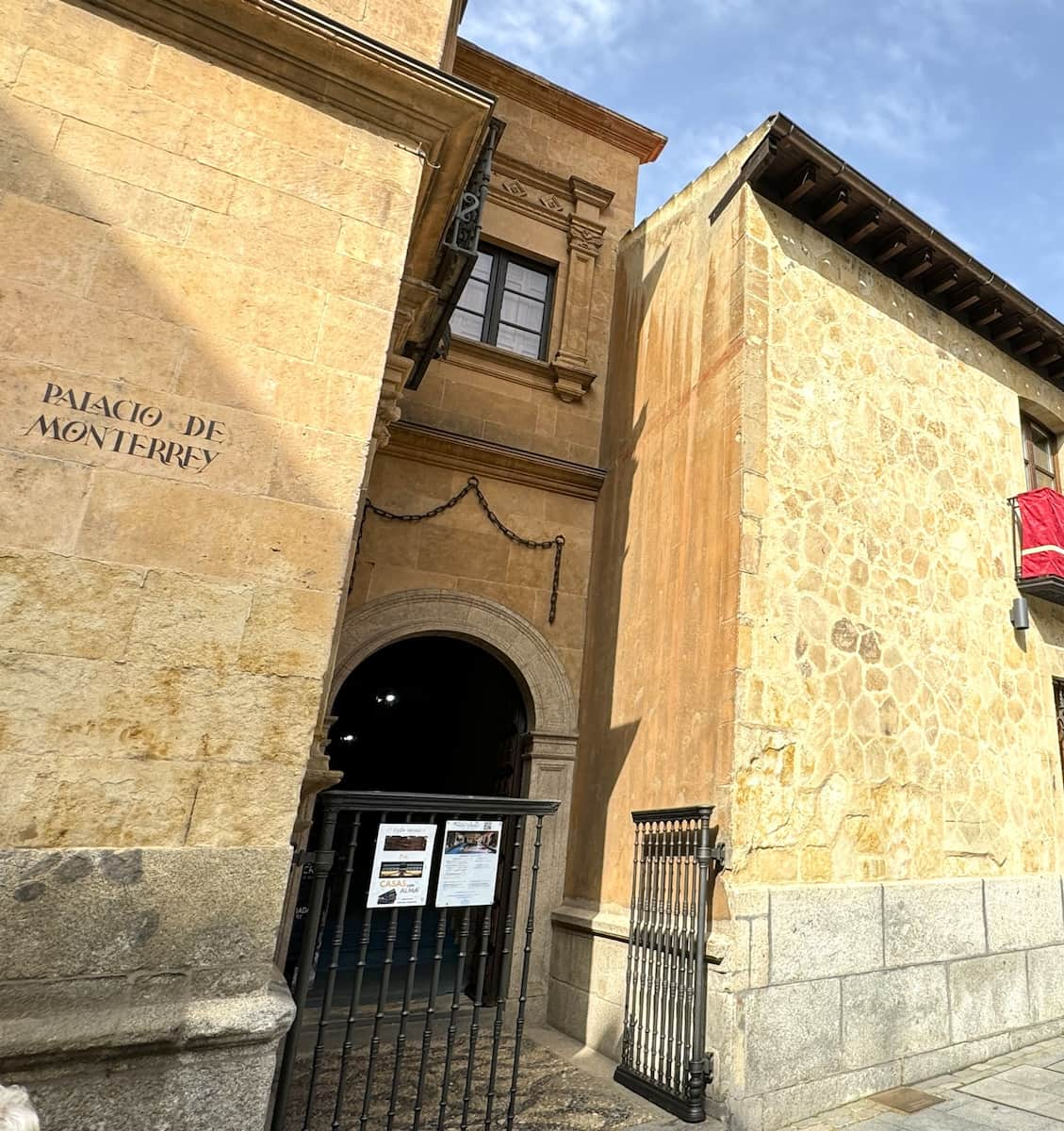
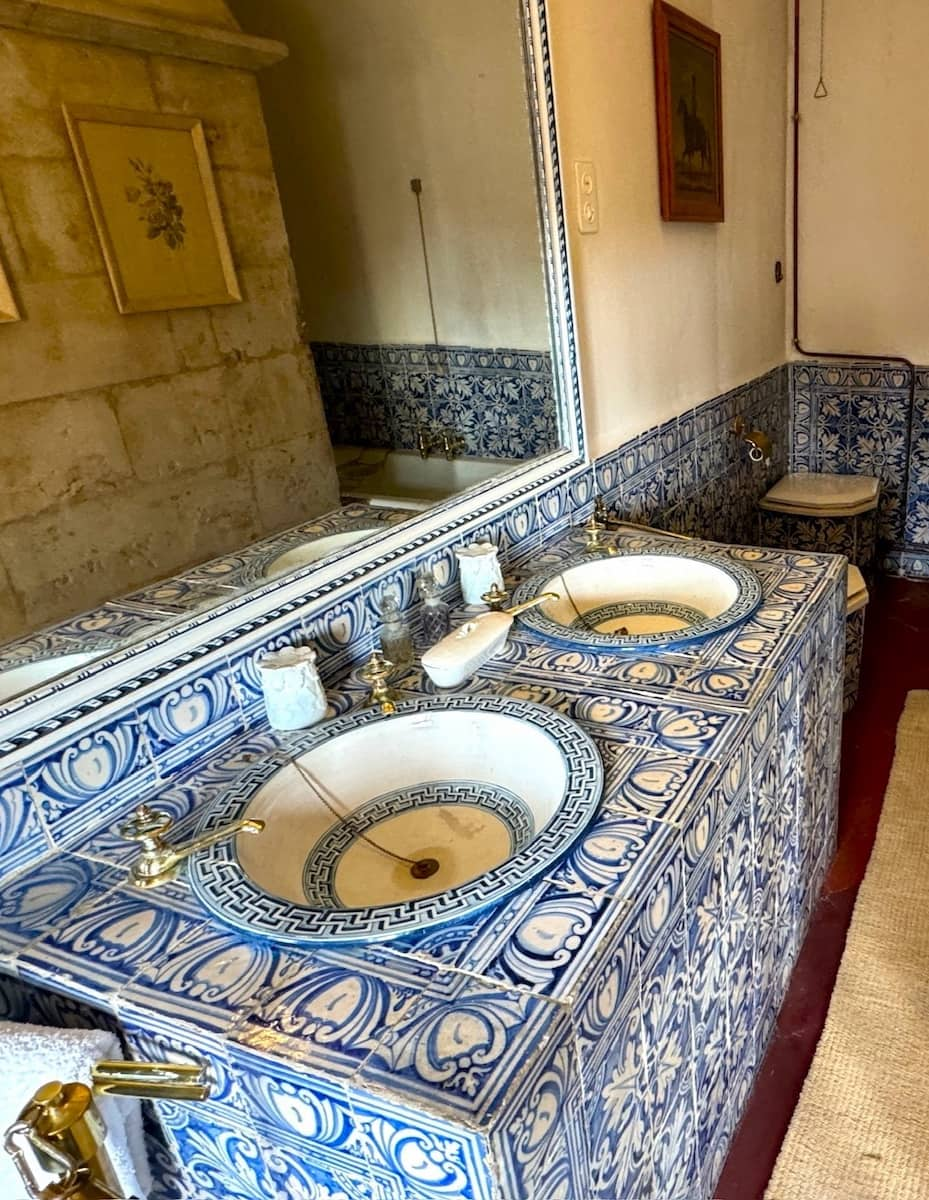
Art collection. Since opening to the public in 2018, the palace houses an impressive collection of artworks and decorative pieces. I marveled at paintings by renowned artists like Tiziano and José de Ribera, as well as exquisite tapestries and porcelain.
Visitor information. The palace is open Wednesday to Sunday, with guided tours available throughout the day. General admission costs 7€, with reduced rates for certain groups. I recommend booking in advance, especially for the free Friday morning tour.
Photography tip. The best light for capturing the intricate façade details is in the early morning or late afternoon when the sun casts dramatic shadows across the stonework.
⭐ Best Tours
- A Self-Guided Walking Tour of Spain's Golden City of Salamanca – Explore Salamanca at your own pace with this flexible self-guided walking tour that takes you to the city’s main attractions in just 1-1.5 hours with informative audio commentary.
- Monterrey Palace Tour with Audio Guide – Discover one of Salamanca’s architectural gems with this audio-guided tour of the impressive Monterrey Palace, a masterpiece of Plateresque design that houses important art collections.
12. Anaya Palace
Neoclassical gem. The Anaya Palace, with its imposing façade featuring four towering Ionic columns, stands in stark contrast to Salamanca’s predominantly Gothic and Baroque architecture. Built in 1760, it replaced the original building damaged by the Lisbon earthquake.
Academic legacy. Now housing the Faculty of Philology of the University of Salamanca, the palace continues its centuries-old tradition of education. I was impressed to learn it was originally founded in 1401 as a college for gifted students from humble backgrounds.
Interior highlights. The palace’s courtyard features a stunning double gallery with 32 columns in total. The imperial staircase connecting the floors is particularly impressive, adorned with a bust of Miguel de Unamuno, the famous Spanish writer and philosopher.
Visitor access. While primarily an academic building, visitors can explore the courtyard on weekdays during the academic year. I found it’s best to visit in the morning when student activity is lower, allowing for a more peaceful experience.
Cultural significance. The palace’s neoclassical design marks an important shift in Salamanca’s architectural landscape. Its elegant simplicity provides a refreshing contrast to the city’s more ornate buildings, making it a must-see for architecture enthusiasts.
⭐ Best Activities
- Walking Tour Salamanca – Get oriented in Salamanca with this essential walking tour that covers the main attractions of the historic center while providing context and stories that bring the Golden City to life.
Things to Do in Salamanca with Kids
1. Treasure Hunt for Carved Figures
Engaging adventure. I turned sightseeing into a game by challenging my kids to spot hidden carvings throughout Salamanca. This treasure hunt kept them engaged and excited to explore the city’s historic buildings.
Famous frog. Our first target was the famous frog on the University façade. It took us nearly 20 minutes of careful scanning before my daughter triumphantly pointed it out. Legend says finding it brings good luck and academic success.
Modern surprises. The New Cathedral became a favorite stop. We searched for the modern additions sneakily included during 1992 restorations, including an astronaut, a gargoyle eating ice cream, and a stork. The kids loved the juxtaposition of these whimsical figures among centuries-old carvings.
Citywide quest. Other carvings we hunted included:
- A bull and a hare on Casa de las Conchas
- A pig and a dragon on San Martín Church
- A snail on the Art Nouveau Casino
Practical tip. I created a simple checklist with clues for each carving. Local tourist offices often have ready-made scavenger hunt maps, which I wish I’d known before creating my own!
2. Automotive History Museum
Unexpected gem. The Museo de Historia de la Automoción surprised us all. Located in a former flour factory, this museum houses an impressive collection of over 200 vehicles spanning the entire history of the automobile.
Interactive exhibits. My kids loved the hands-on displays demonstrating engine mechanics and car design principles. The virtual reality driving simulators were a particular hit, allowing them to “drive” classic cars through historic Salamanca.
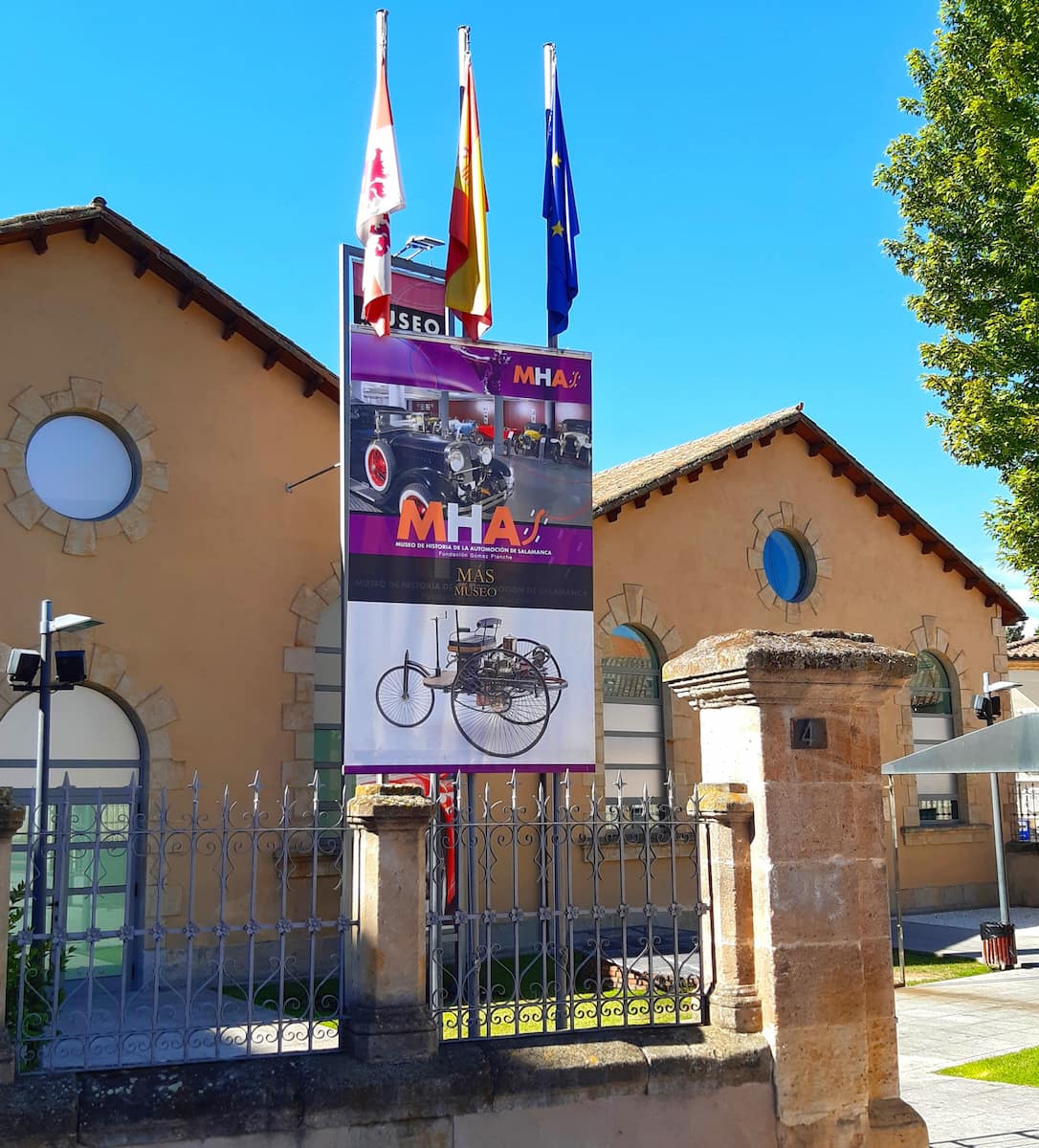
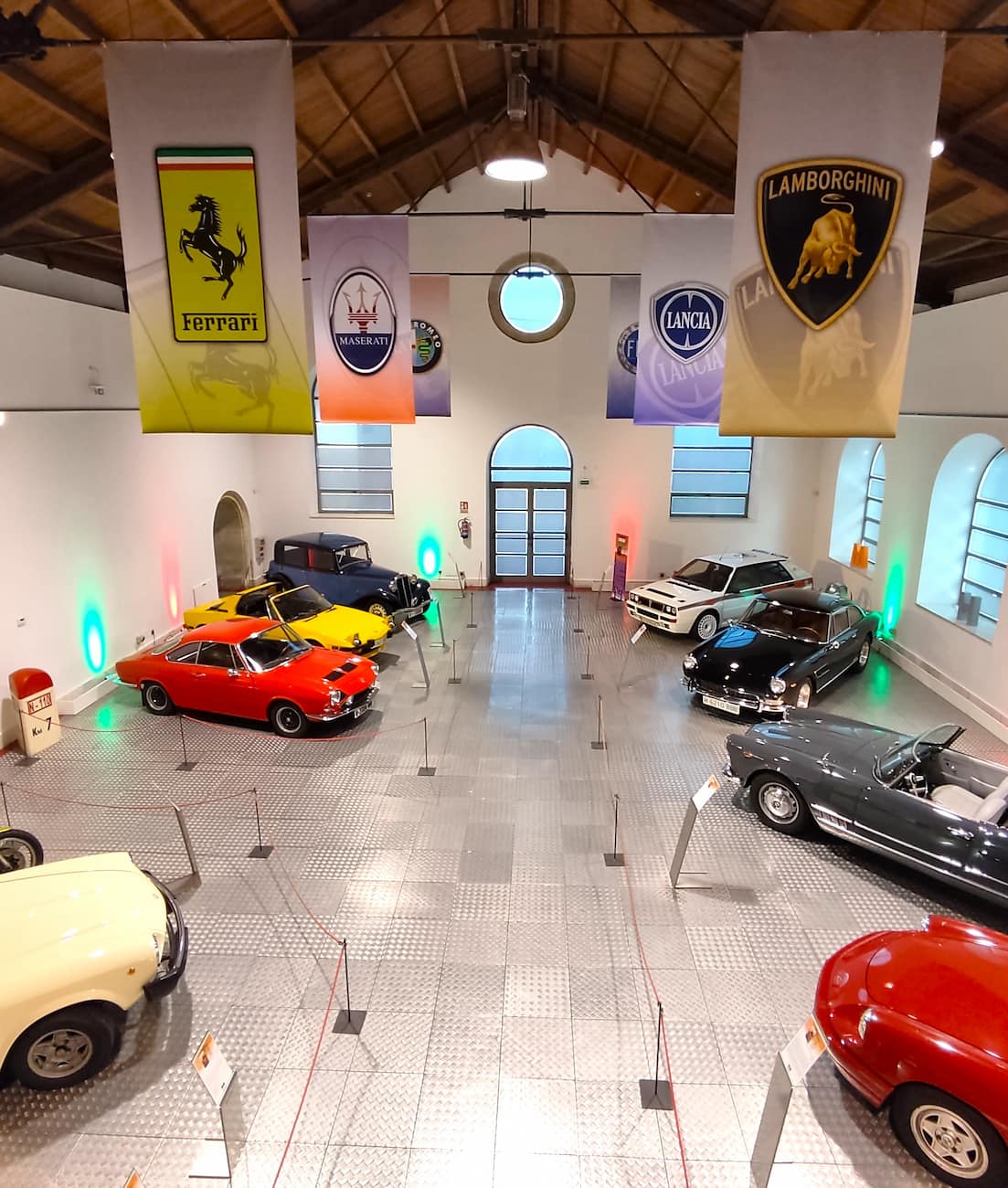
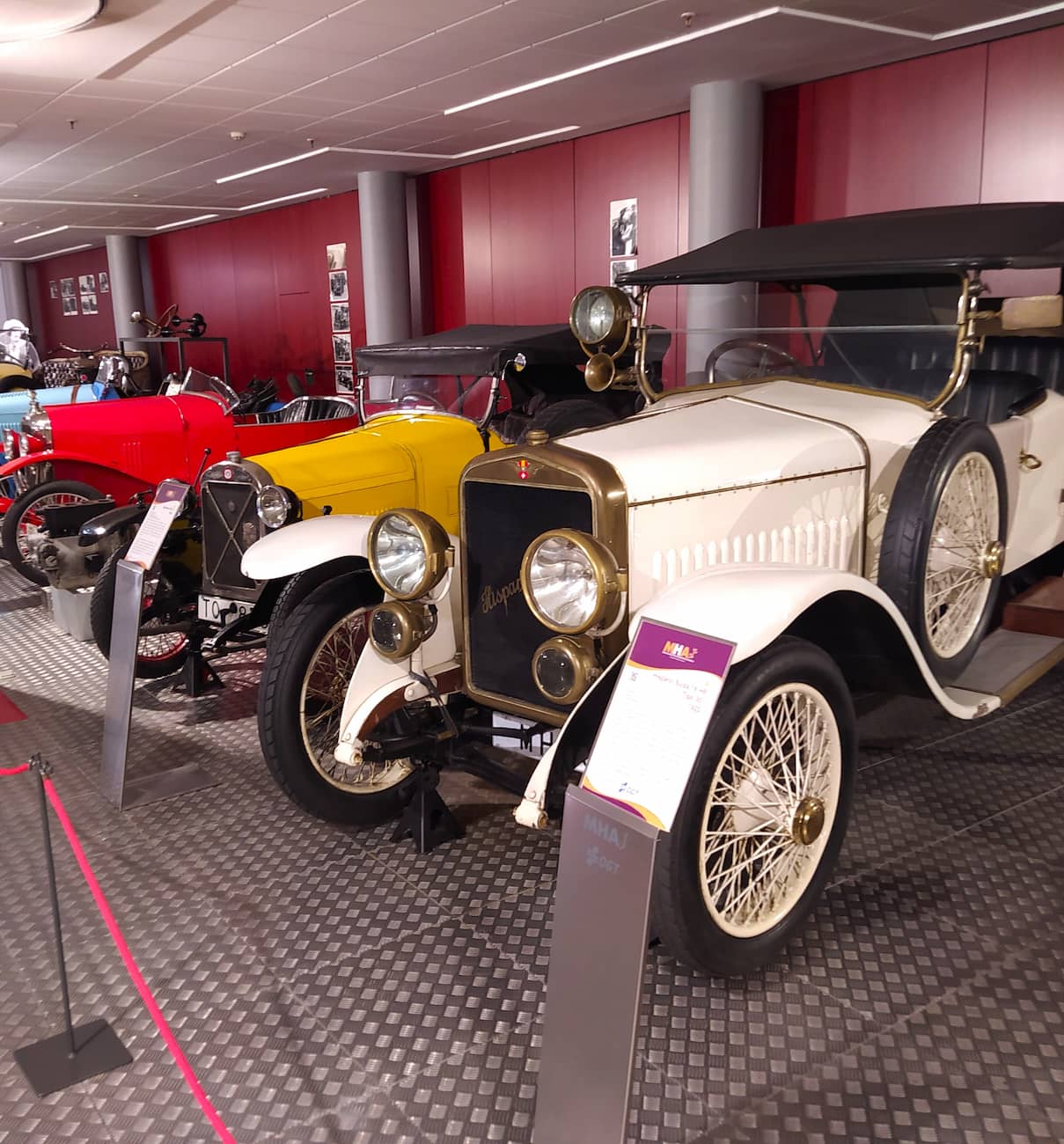
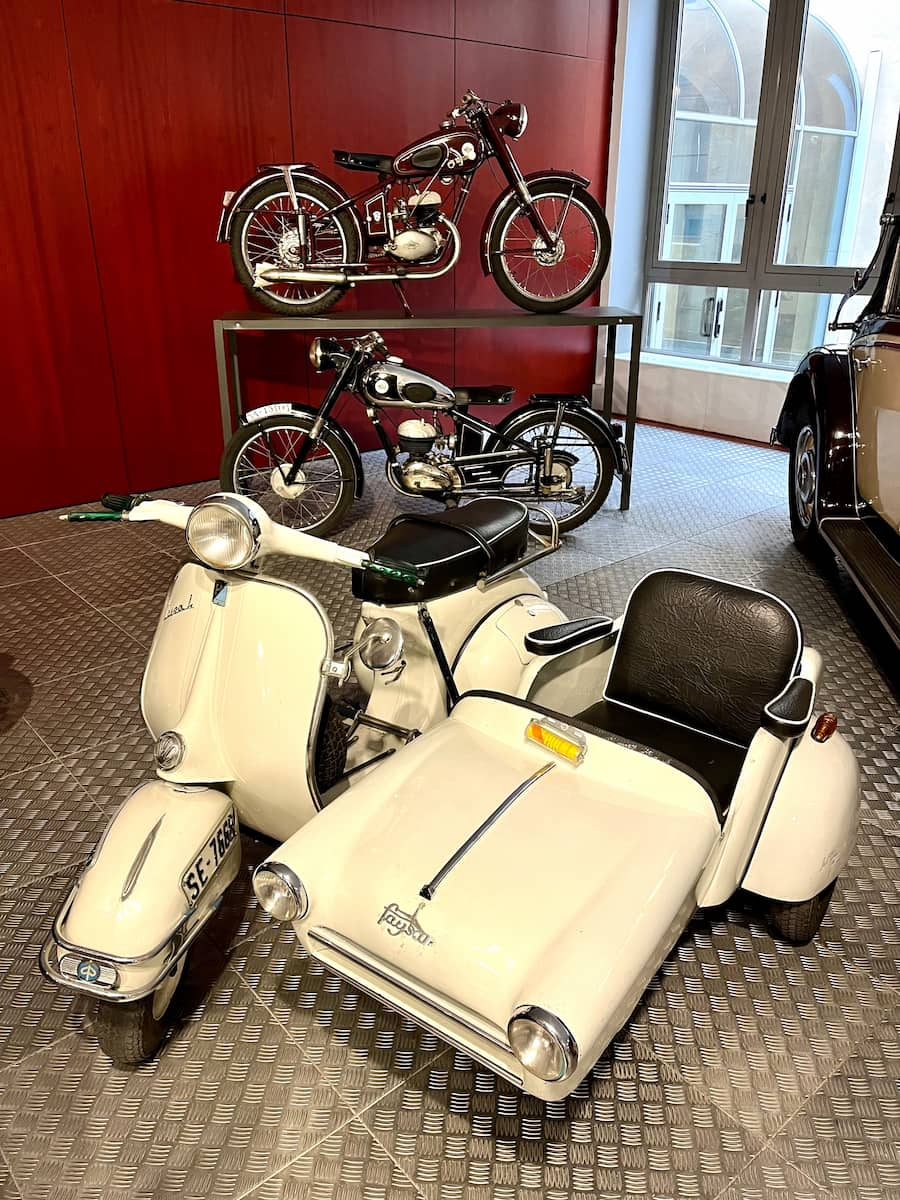
Highlights. The collection features:
- Vintage cars from the early 1900s
- Iconic Spanish SEAT models
- Rare prototypes and concept cars
- Motorcycles and bicycles through the ages
Family-friendly. The museum caters well to children with interactive touchscreens, a dedicated kids’ area with car-themed games, and even pedal cars for the youngest visitors to try.
Visitor information. Entry costs 5€ for adults, 3€ for children (under 6 free). Open Tuesday-Sunday 10AM-2PM and 5PM-7PM. Located at Plaza del Mercado Viejo, a 10-minute walk from Plaza Mayor.
3. Organized Bicycle Tour
Active exploration. We joined a family-friendly bike tour, which proved an excellent way to cover more ground and keep the kids engaged. Our guide, María, expertly balanced historical information with fun anecdotes that appealed to all ages.
Safe routes. The tour stuck mainly to pedestrianized areas and quiet streets, making it suitable even for our 8-year-old. We covered major sights like Plaza Mayor and the cathedrals, but also discovered hidden squares and gardens off the typical tourist path.
Local perspective. María showed us her favorite churro spot and a playground with the best views of the river – insider tips we wouldn’t have found on our own. The kids especially loved stopping at a traditional sweet shop to try Salamanca’s famous hornazo pastry.
Practical details. Tours last about 3 hours and cover 7-8 km at a leisurely pace. Bikes, helmets, and water are provided. Cost is 25€ for adults, 15€ for children, with family discounts available. Advance booking recommended, especially in peak season.
4. Alamedilla Park
Green oasis. After days of historic sightseeing, Alamedilla Park offered a welcome change of pace. This expansive green space in the heart of Salamanca became our go-to spot for picnics and letting the kids burn off energy.
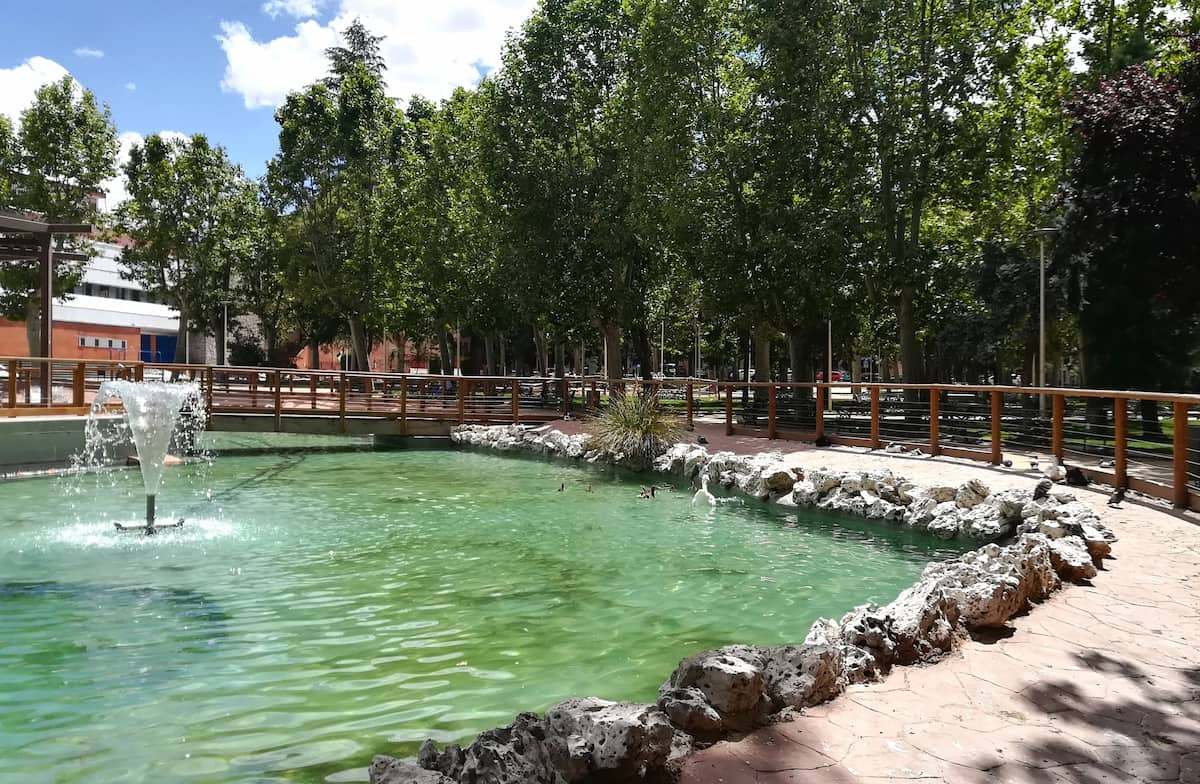
Diverse activities. The park caters to various interests:
- Multiple playgrounds for different age groups
- A large pond with ducks and paddle boats
- Sports facilities including tennis courts and a skate park
- A mini-train that circles the park (2€ per ride)
Cooling off. In summer, the interactive fountains were a huge hit. Kids can run through jets of water, providing a fun and free way to cool down on hot days. I recommend bringing swimsuits and towels.
Nature connection. We enjoyed identifying different tree species along the park’s botanical walk. The rose garden is particularly beautiful in late spring, and we often spotted local birdwatchers around the pond area.
Visitor essentials. The park is open daily from dawn to dusk, with no entry fee. Cafés and ice cream stands are scattered throughout. Located about a 20-minute walk from Plaza Mayor, or easily accessible by local bus lines 4 and 7.
Free Things to Do in Salamanca
1. Huerto de Calixto y Melibea Gardens
Literary inspiration. I discovered this enchanting 2,500-square-meter garden tucked away on the slope of Salamanca’s old city wall. Named after characters from Fernando de Rojas’ classic Spanish novel “La Celestina,” this romantic garden instantly transported me to a world of literary charm.
Peaceful retreat. Walking through the lush pathways lined with colorful flowers and manicured hedges provided a welcome escape from sightseeing. The garden’s tranquil atmosphere makes it perfect for quiet contemplation or a leisurely picnic away from the city bustle.
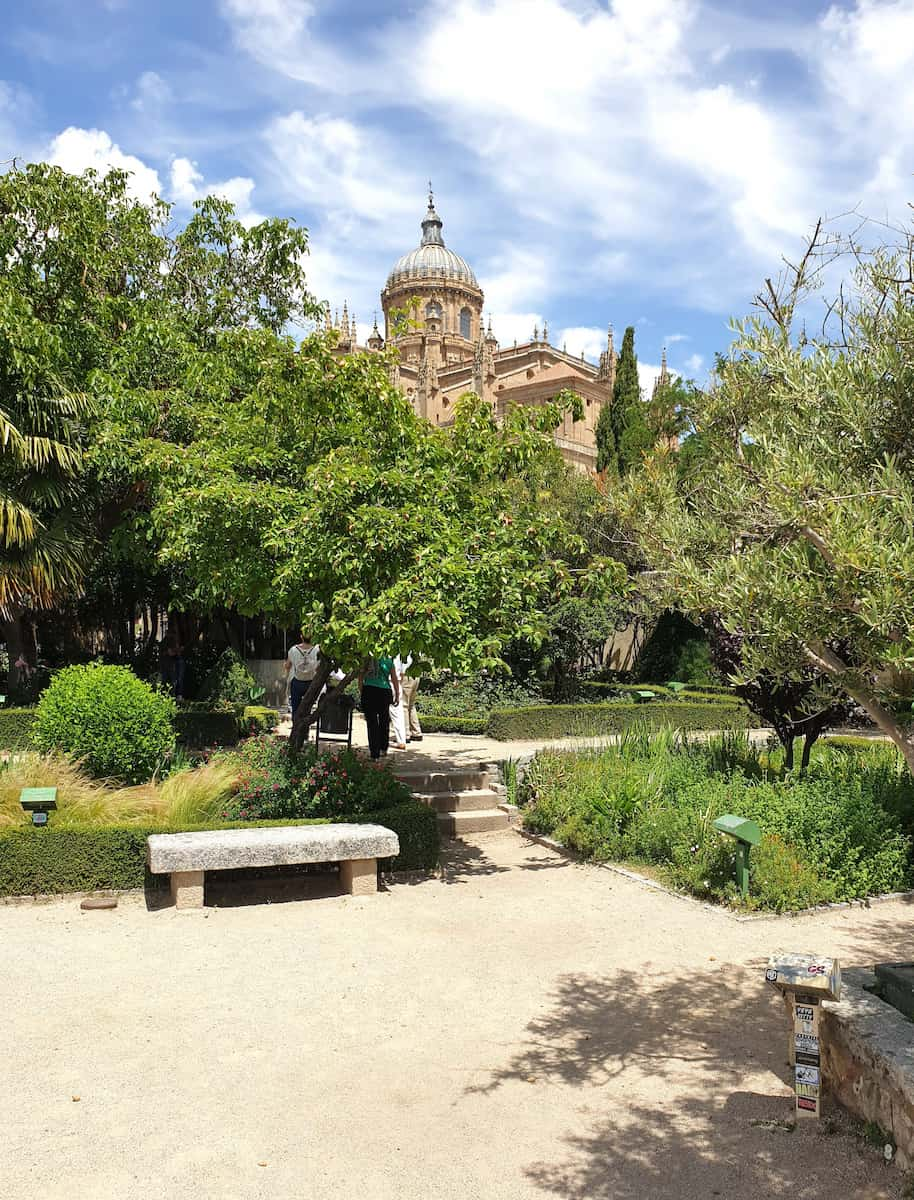
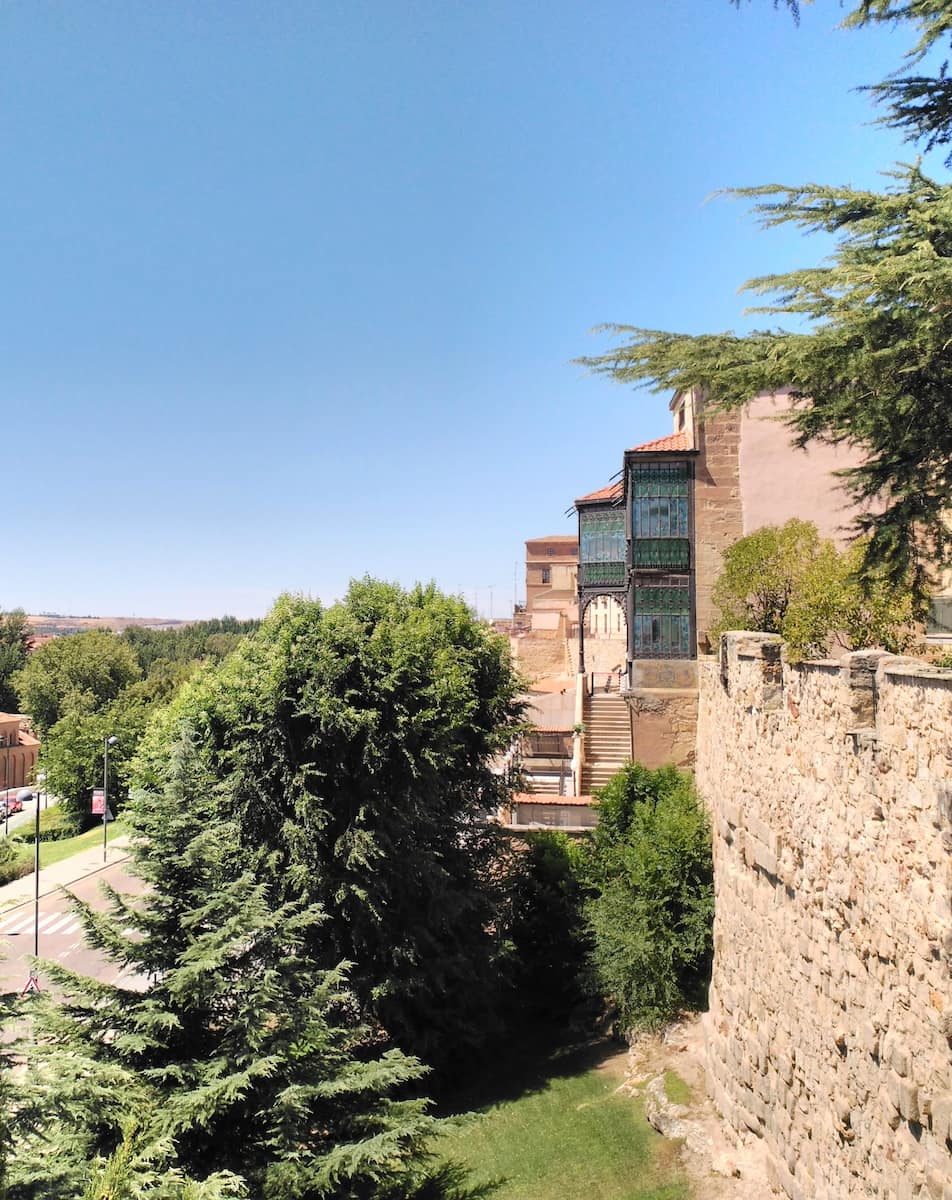
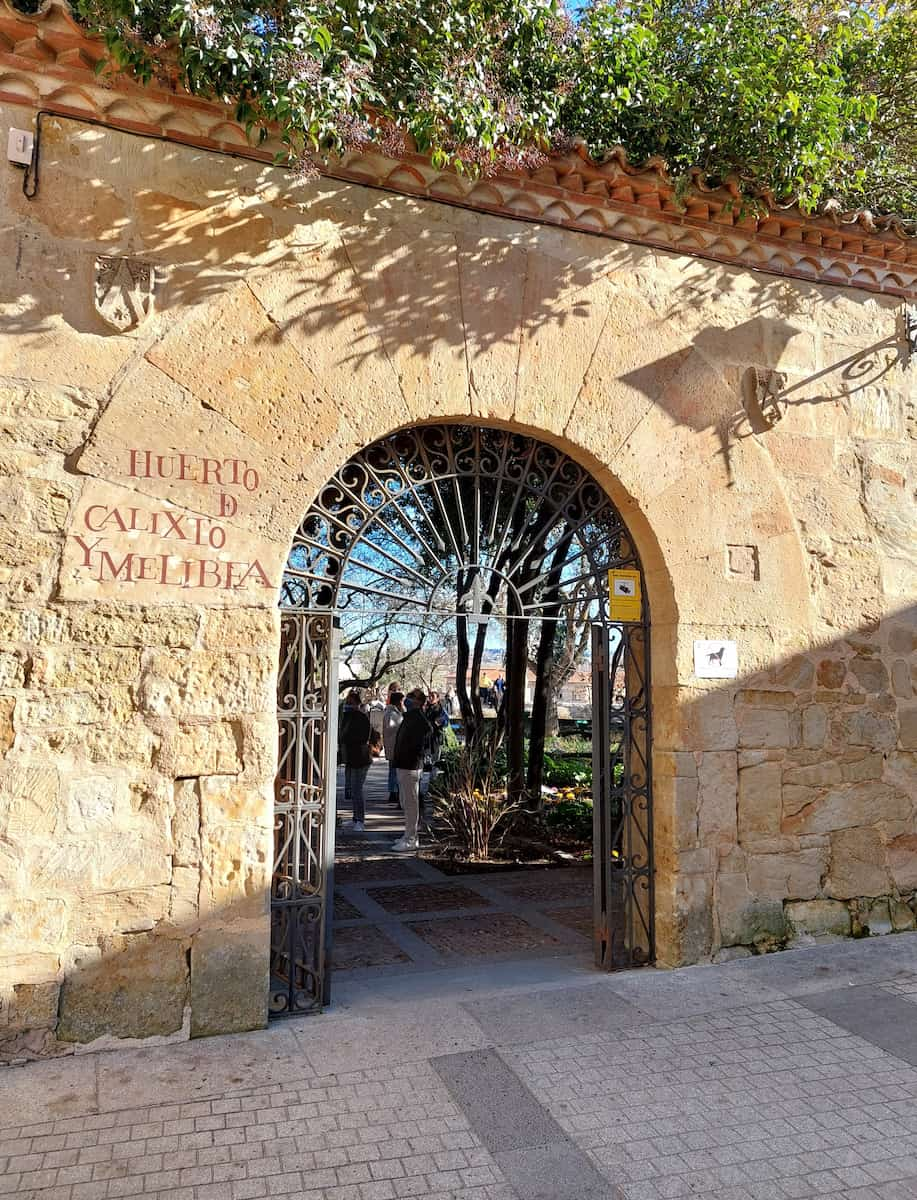
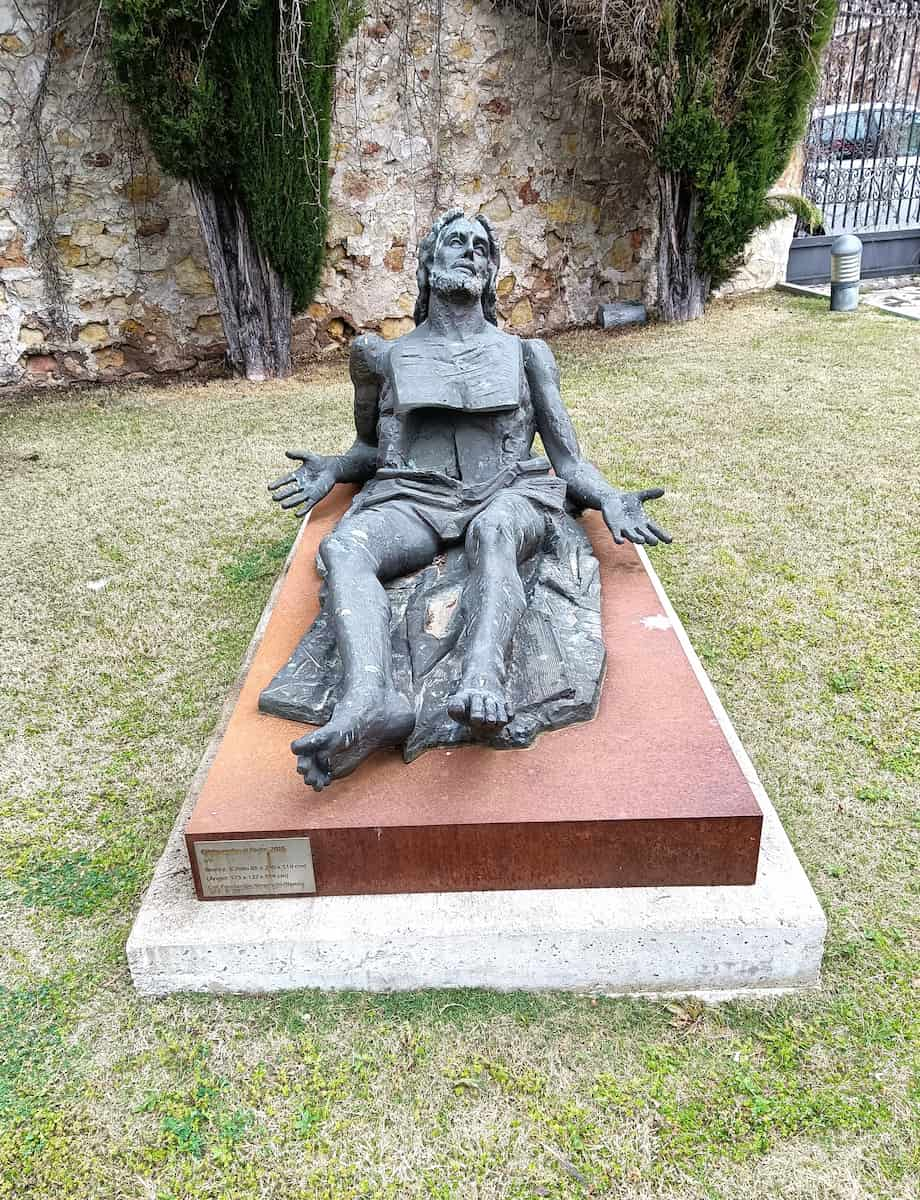
Unexpected flora. What surprised me most were the exotic plant species thriving at 800m above sea level. The Phoenix canariensis palm, Washingtonia filifera, and vibrant agapanthus flowerbeds create an almost Andalusian atmosphere that feels wonderfully out of place in Castile and León.
Panoramic views. From the garden’s elevated position, I captured stunning photos of Salamanca’s skyline, including magnificent views of the cathedral. These vistas alone make the visit worthwhile, especially in the golden late afternoon light.
Visitor information. The garden is open daily from 10AM to 6:30PM and completely free to enter. Located at Calle Arcediano 20, it’s about a 10-minute walk from Plaza Mayor. I recommend visiting early morning or late afternoon for a quieter experience and better lighting for photos.
2. Barrio del Oeste Urban Gallery
Open-air art. The Barrio del Oeste completely surprised me with its vibrant street art scene. This traditional neighborhood has been transformed into an impressive outdoor gallery featuring murals and artworks by both local and international artists.
Artistic diversity. Walking through the colorful streets, I encountered everything from abstract designs to figurative pieces covering entire building façades. The range of styles and themes makes this area a photographer’s paradise and a refreshing contrast to Salamanca’s historic architecture.
Cultural revitalization. A local explained how this urban art initiative has breathed new life into the neighborhood, attracting visitors and fostering community pride. The project continues to evolve with new murals added each year through contests that invite renowned artists.
Self-guided exploration. While private guided tours are available (which include hotel pickup), I enjoyed wandering independently through the streets, discovering murals at my own pace. The area feels authentic and far from the tourist crowds of the historic center.
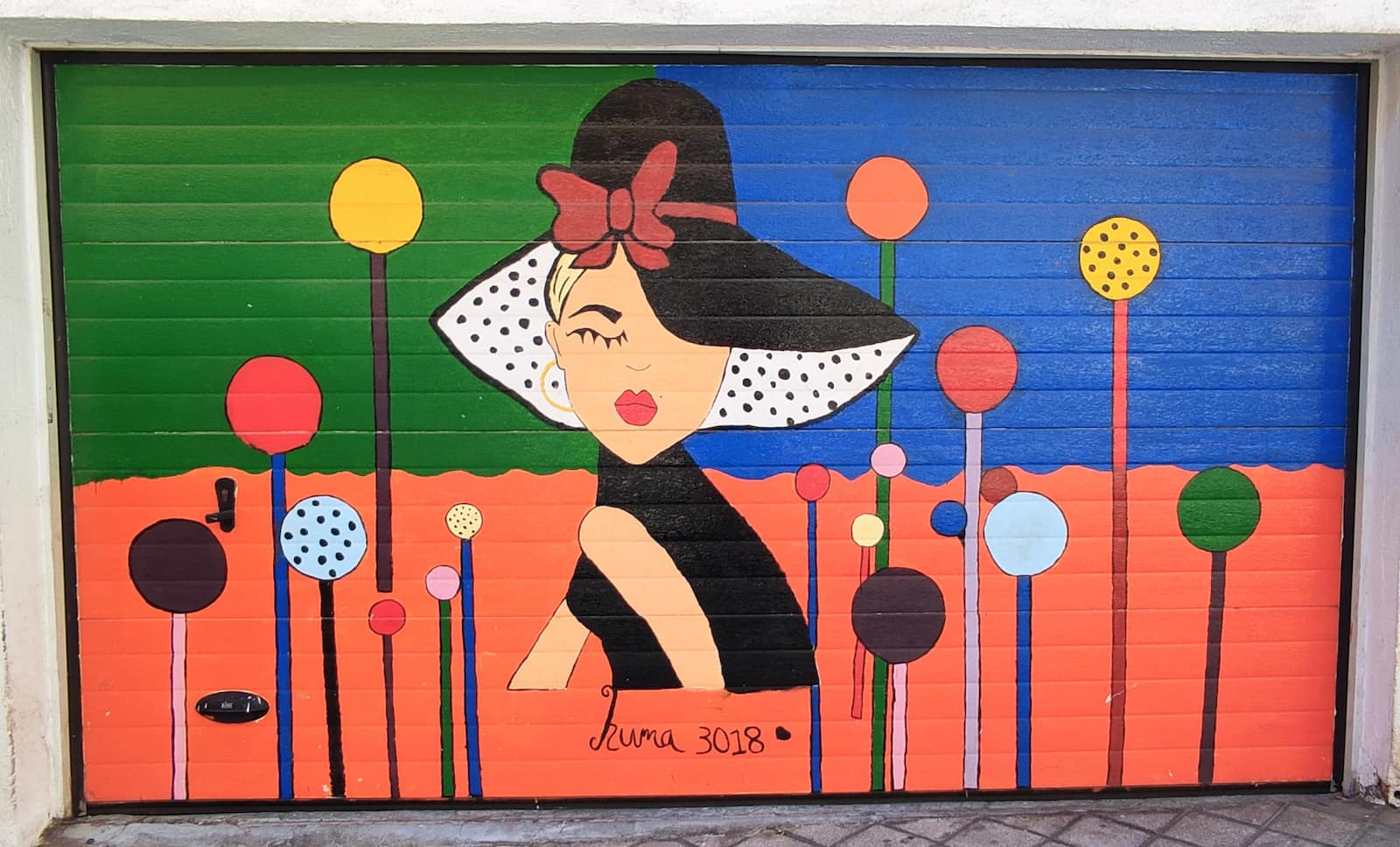
Photography tip. Visit during mid-morning when the light is good but the streets aren’t too busy. This timing allowed me to capture unobstructed photos of the most impressive murals without crowds in my shots.
3. Domus Artium (DA2)
Prison turned gallery. The DA2 contemporary art center occupies the fascinating setting of Salamanca’s old provincial prison from 1930. During renovation, original elements like cell doors and iron grills were preserved, creating a unique juxtaposition of historical architecture and cutting-edge art.
Evolving collection. The museum’s approach as a “work in progress” means there’s always something new to see. During my visit, I discovered works by renowned artists like Joseph Beuys and Mona Hatoum alongside emerging talents, all showcasing evolving artistic trends.
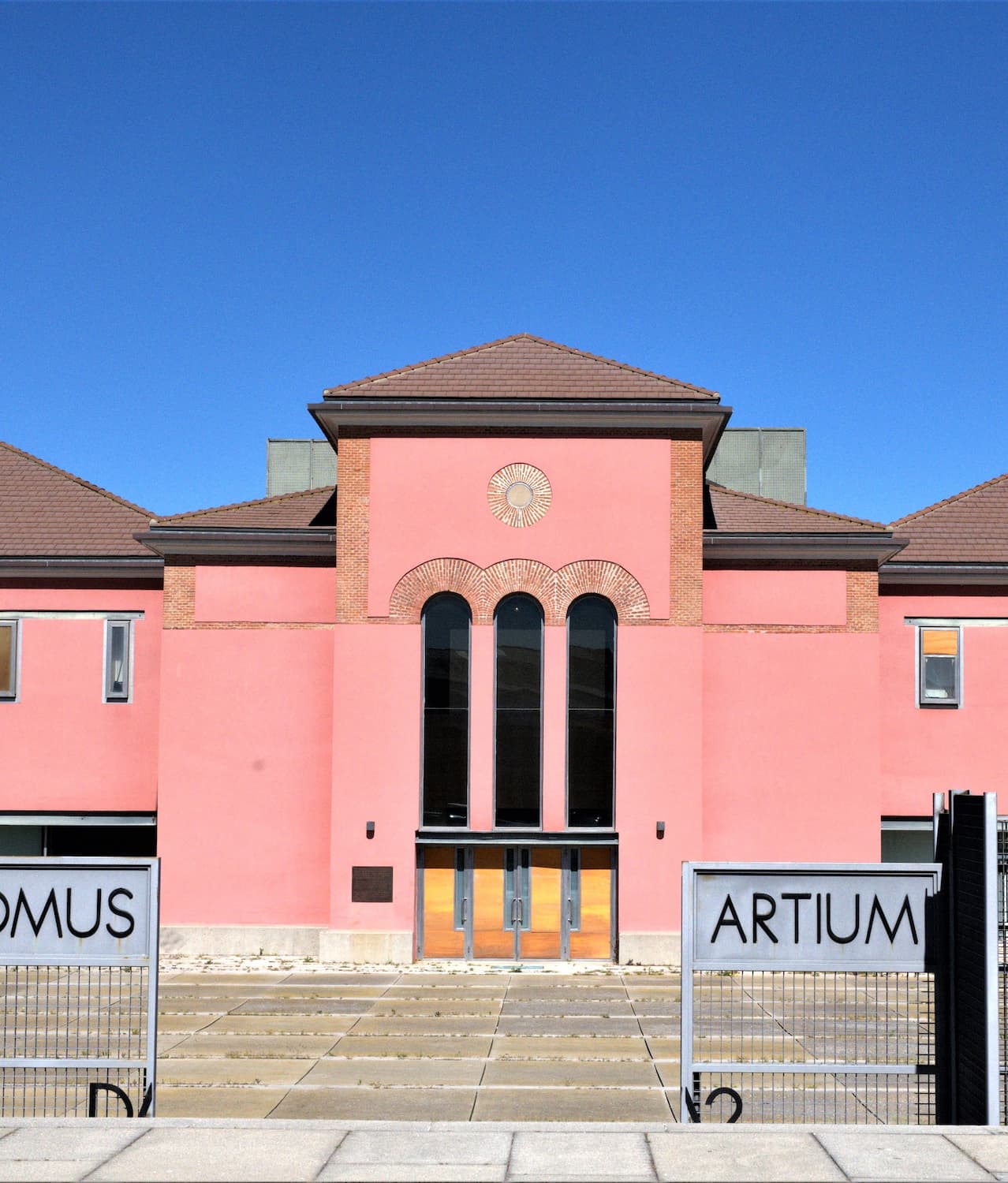
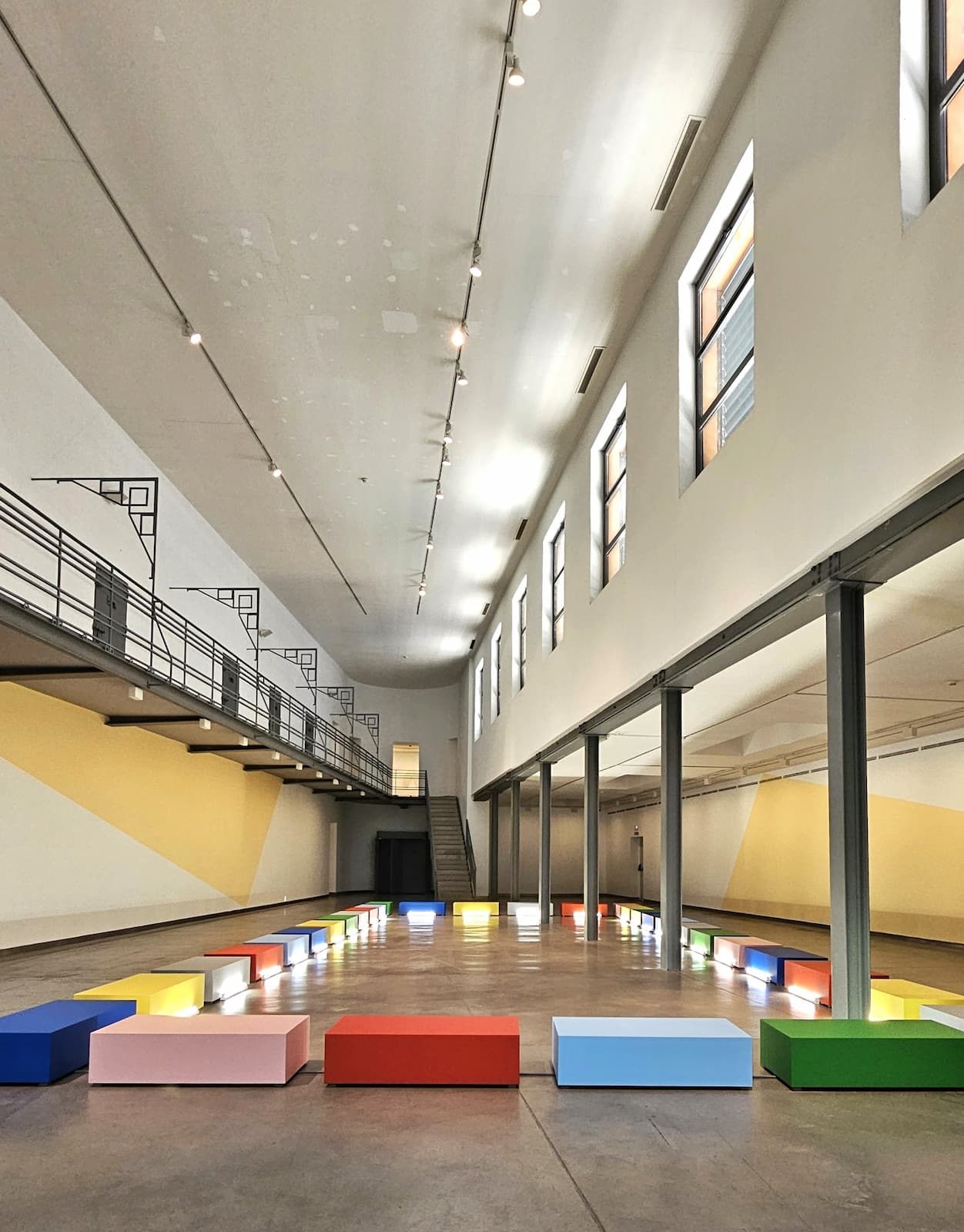
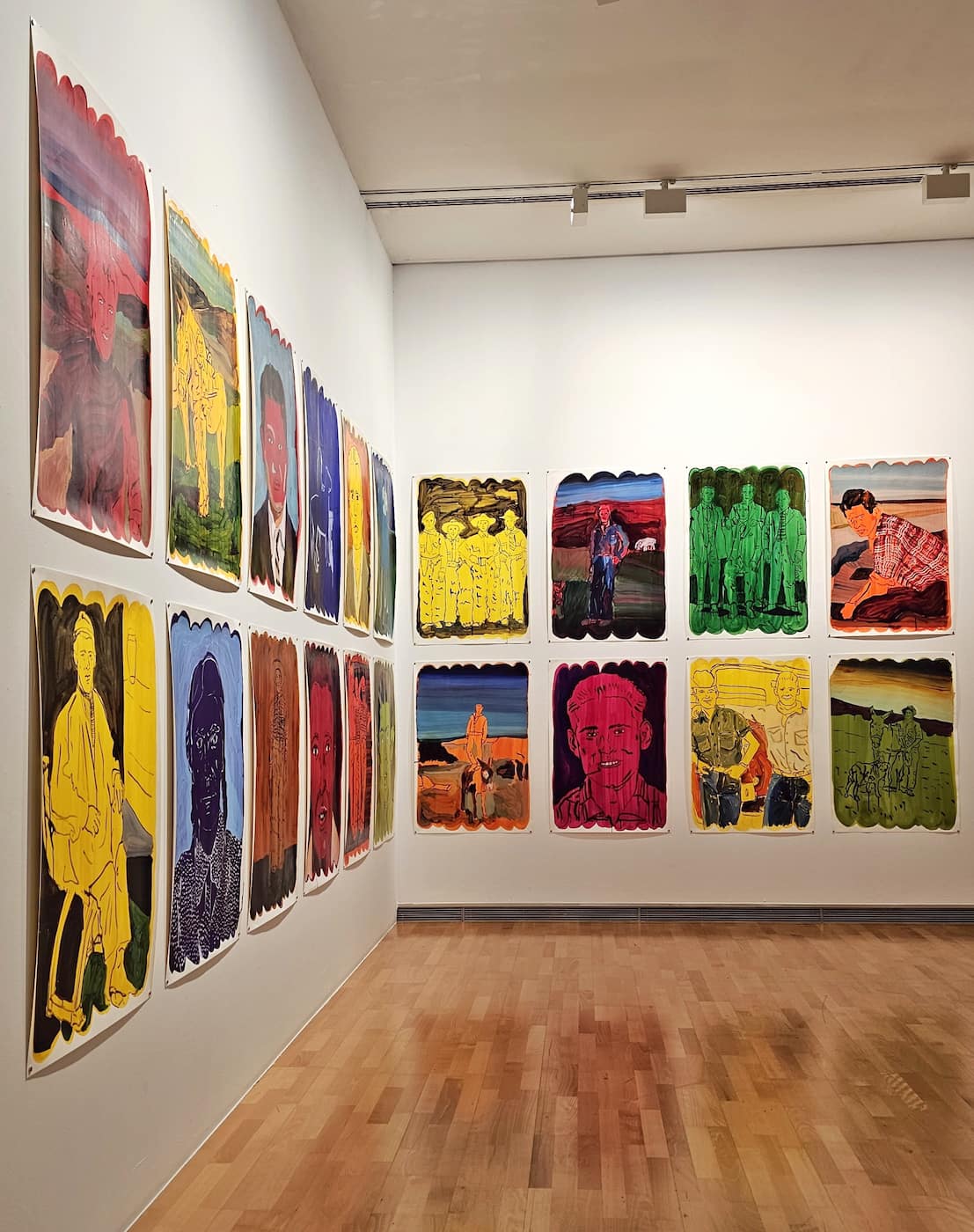
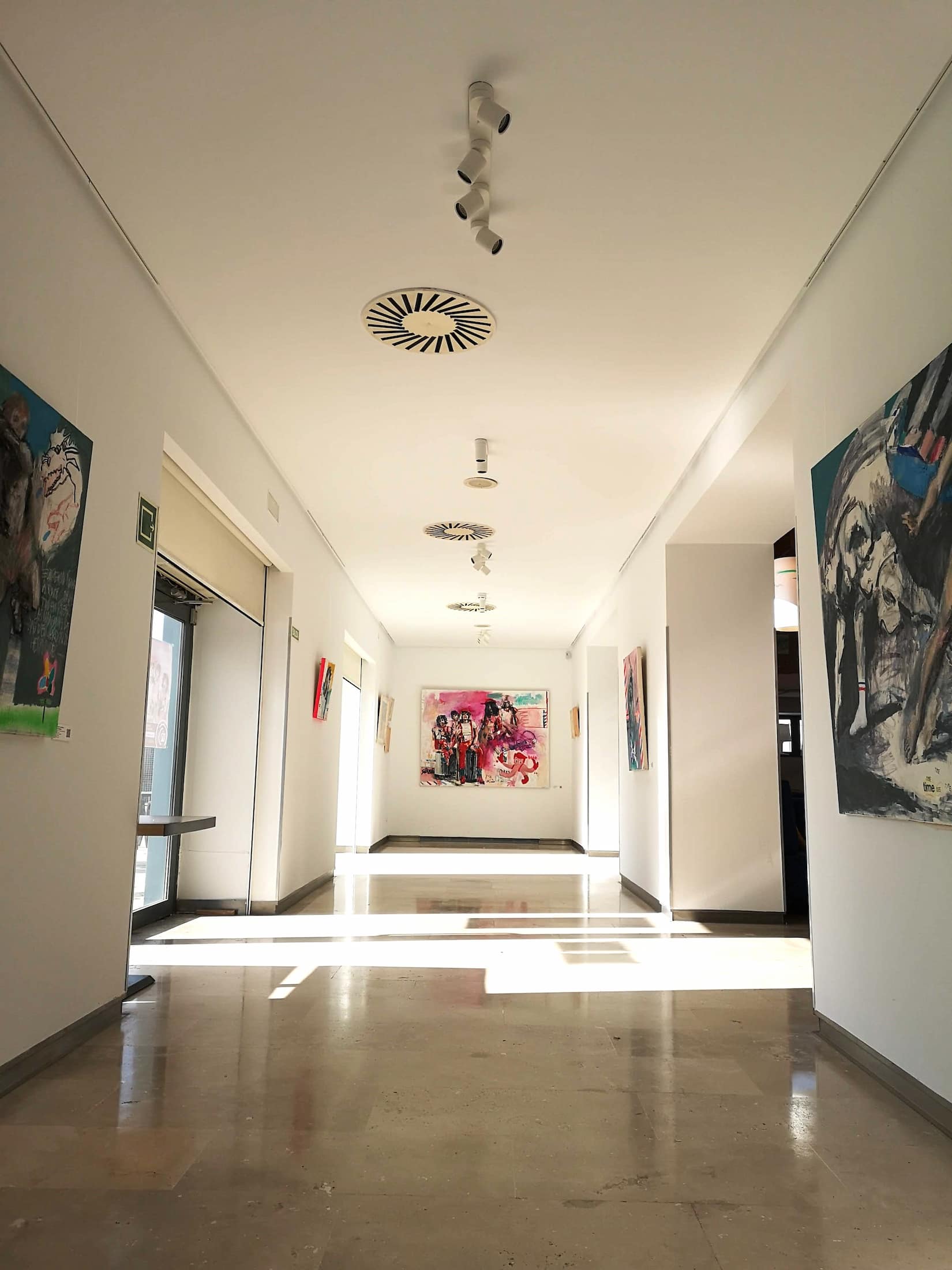
Impressive space. Spanning nearly 10,000 square meters with 2,600 dedicated to exhibitions, the museum offers plenty to explore. Beyond the art itself, I appreciated the thoughtful layout that allows each piece room to breathe within the industrial-style spaces.
Complete experience. Beyond exhibitions, DA2 houses a library, conference room, shop, café-restaurant, and even a playroom. I spent nearly three hours here without realizing how quickly time had passed.
Visitor essentials. Located at Avenida de la Aldehuela 37, the museum is completely free to enter. Open Tuesday through Friday from 12PM-2PM and 5PM-8PM, with extended weekend hours until 9PM. Closed Mondays. Allow at least 2 hours to fully appreciate the exhibitions.
4. Cathedral Free Hours (Tuesday evenings)
Dual cathedrals. I timed my visit perfectly to take advantage of free Tuesday evening access to both Salamanca’s Old and New Cathedrals. From November through March, free entry is available from 4PM to 6PM, while April through September offers free admission from 6PM to 8PM (last entry one hour before closing).
Architectural contrast. The connected cathedrals showcase dramatically different styles – the Old Cathedral’s Romanesque solidity versus the New Cathedral’s soaring Gothic ambition. Exploring both during the golden evening light was magical, with fewer crowds than during peak hours.
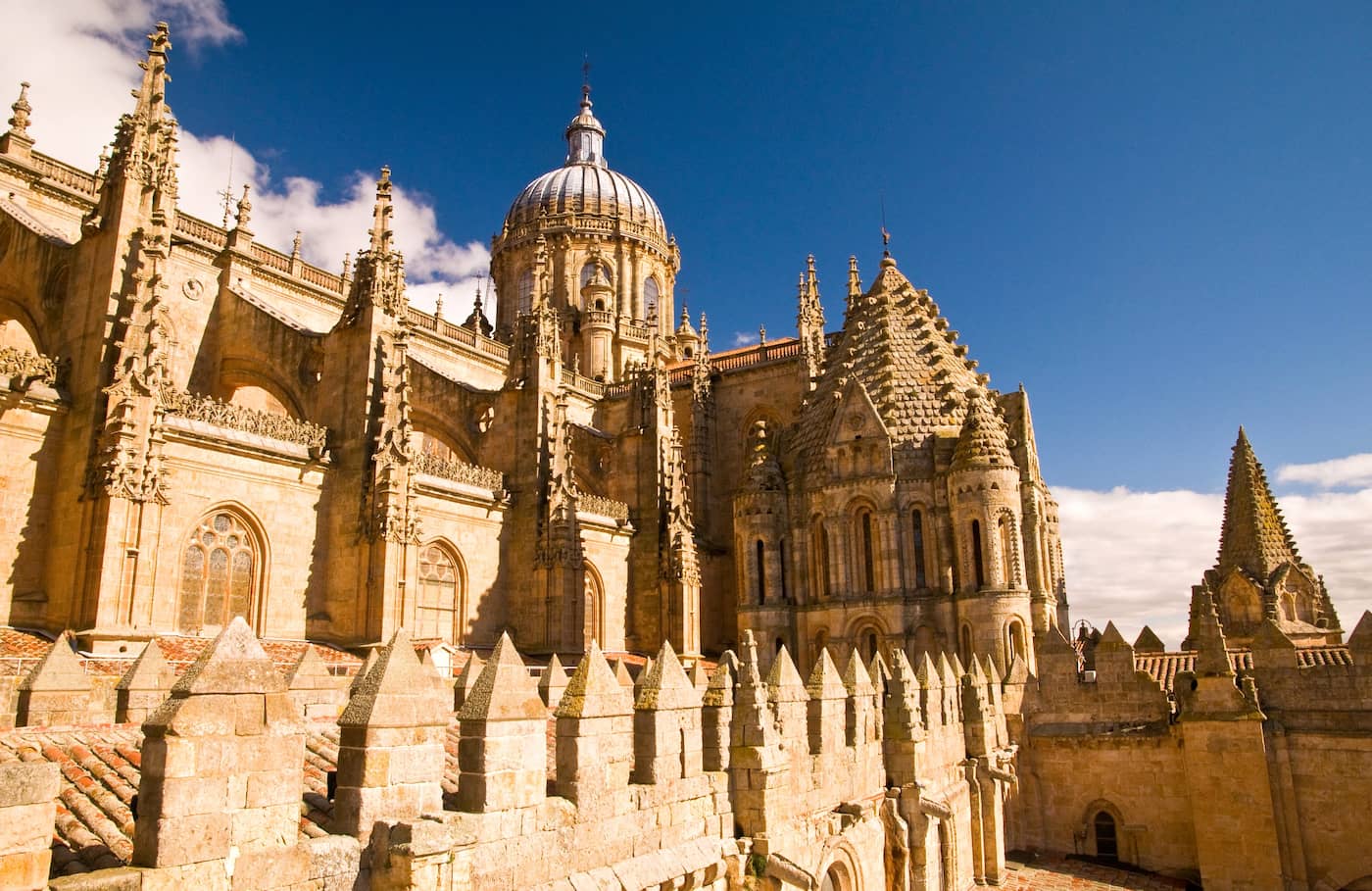
Hidden treasures. Without the pressure of a paid ticket, I took my time discovering details like the astronaut carving added during 1992 restorations and the magnificent choir stalls. The Old Cathedral’s vibrant frescoes in the Gallo Tower particularly impressed me.
Evening atmosphere. The Tuesday evening timing coincided with beautiful light streaming through the stained glass windows, creating colorful patterns across the stone floors. This timing also allowed me to experience the cathedrals’ peaceful atmosphere as day visitors departed.
Visitor tip. While the Tuesday evening hours offer free entry, the Ieronimus Tower experience (which provides access to the cathedral rooftops) requires a separate ticket. However, I discovered it’s also free on Tuesdays between 10AM and noon, making Tuesday the perfect day for budget cathedral exploration.
Seasonal Activities in Salamanca
Christmas in Plaza Mayor (December)
Festive transformation. Plaza Mayor becomes a magical winter wonderland starting in late November when the Christmas lights are switched on, illuminating Salamanca’s iconic square with a golden glow. The festive decorations create a warm, inviting atmosphere that continues throughout December.
Christmas Market. From November 29 to January 5, the heart of Salamanca hosts a charming Christmas Market where I discovered artisanal crafts, holiday decorations, and delicious seasonal treats. The market stalls sell everything from handmade gifts to traditional Spanish Christmas sweets like turrón (nougat) and polvorones (almond cookies).
University New Year’s Eve. One of Salamanca’s most unique traditions is Nochevieja Universitaria, when students gather in Plaza Mayor for their own version of New Year’s Eve before heading home for the holidays. This lively celebration features music, dancing, and a countdown, creating an electric atmosphere in the square.
El Gordo lottery. On December 22, I joined locals in cafés around Plaza Mayor to watch the drawing of Spain’s famous Christmas lottery. The excitement was palpable as everyone checked their tickets, hoping for a win in this beloved Spanish tradition.
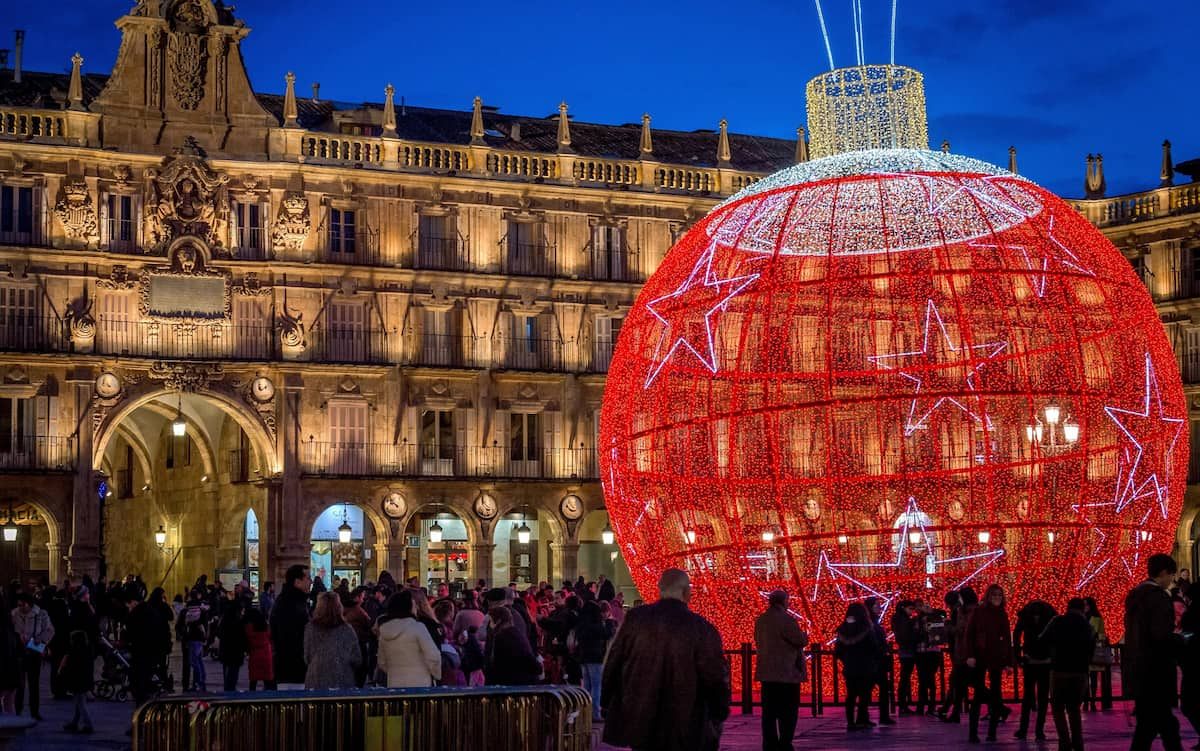
Seasonal treats. The cafés and restaurants around Plaza Mayor serve special holiday menus featuring seasonal delicacies like cochinillo (roast suckling pig) and rosquillas (ring-shaped pastries). I particularly enjoyed pairing these with local wines while watching the festive activities from a cozy café terrace.
Summer Festivals and Night Tours (July-August)
Illuminated night tours. During summer evenings, I joined a guided night tour of Salamanca that revealed the city in a completely different light. The buildings take on a magical quality when illuminated, especially the cathedrals and university buildings. These tours run at 18:30 and 20:45, lasting about 90 minutes.
Salamanca Fair. From September 7 to 15, the city celebrates its annual fair in honor of the patron saint, Virgen de la Vega. The festivities include concerts, verbenas (popular festivals), and traditional events like the floral offering to the Virgin on September 8 and a procession to the New Cathedral.
Plaza Mayor concerts. Throughout summer, the Plaza Mayor hosts evening concerts featuring various musical styles. I stumbled upon several impromptu performances while enjoying dinner at one of the square’s many outdoor terraces – a perfect way to experience Salamanca’s vibrant summer nightlife.
Riverside activities. The banks of the Tormes River come alive in summer with various recreational activities. I rented a paddleboat one afternoon and enjoyed a different perspective of the city from the water, with the Roman Bridge and cathedral silhouetted against the bright blue sky.
Cooling retreats. When August temperatures soared above 35°C, I discovered the refreshing fountains in Alamedilla Park where locals gather to cool off. The park’s shaded areas provided welcome relief from the heat while still allowing me to enjoy the summer atmosphere.
Spring Festival of Arts (April-May)
International Arts Festival. Each spring, Salamanca hosts the Castile-Leon International Arts Festival, a multidisciplinary event combining theater, dance, electronic music, multimedia performances, and more. Companies from different countries participate, creating a diverse cultural experience across various venues throughout the city.
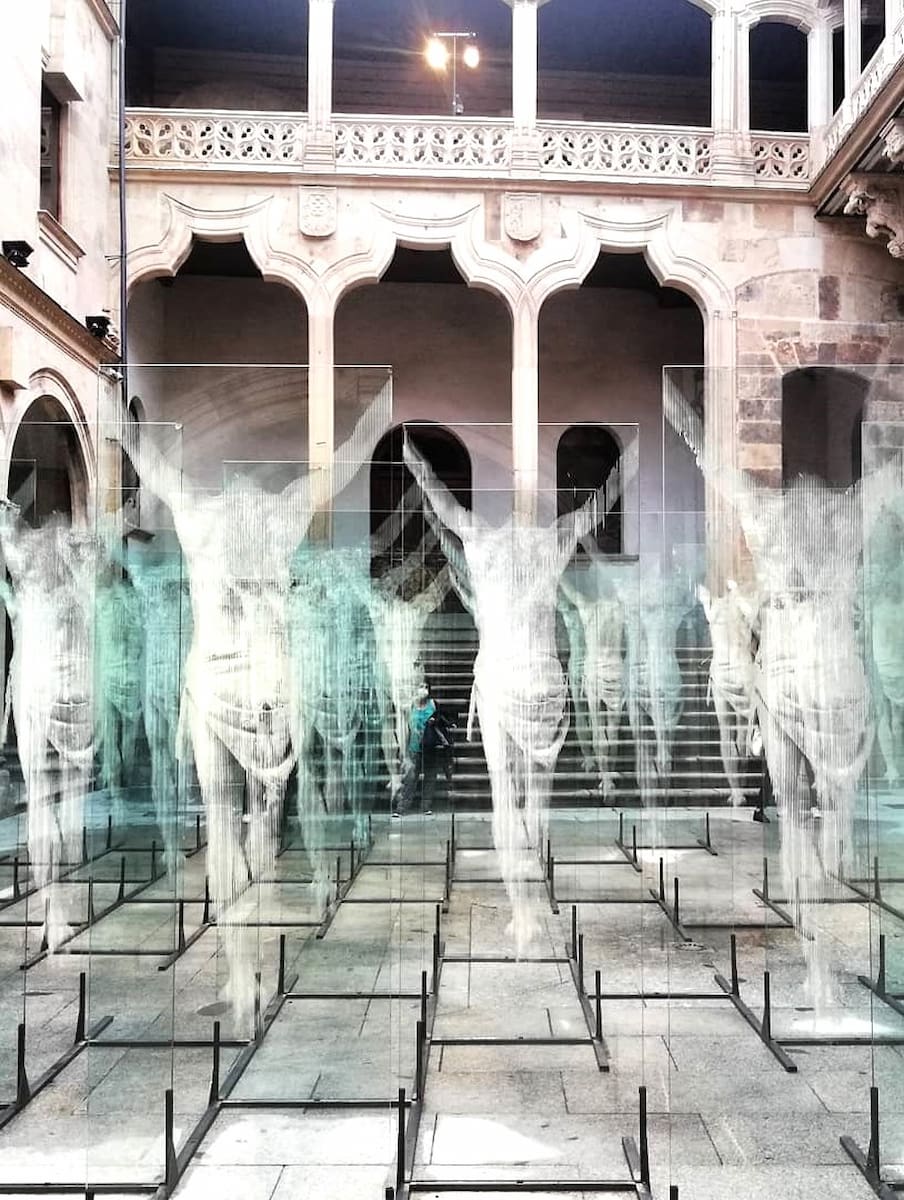
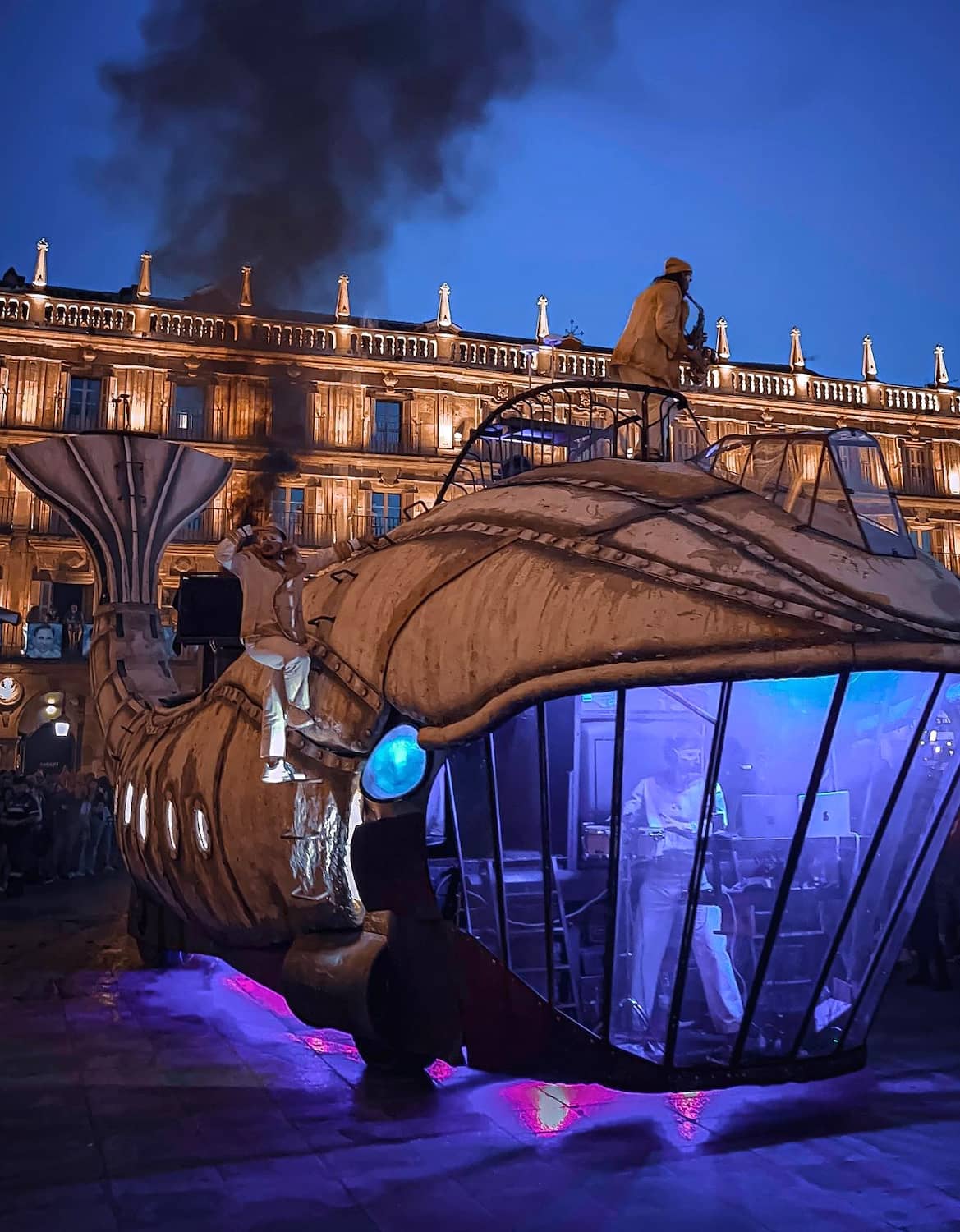
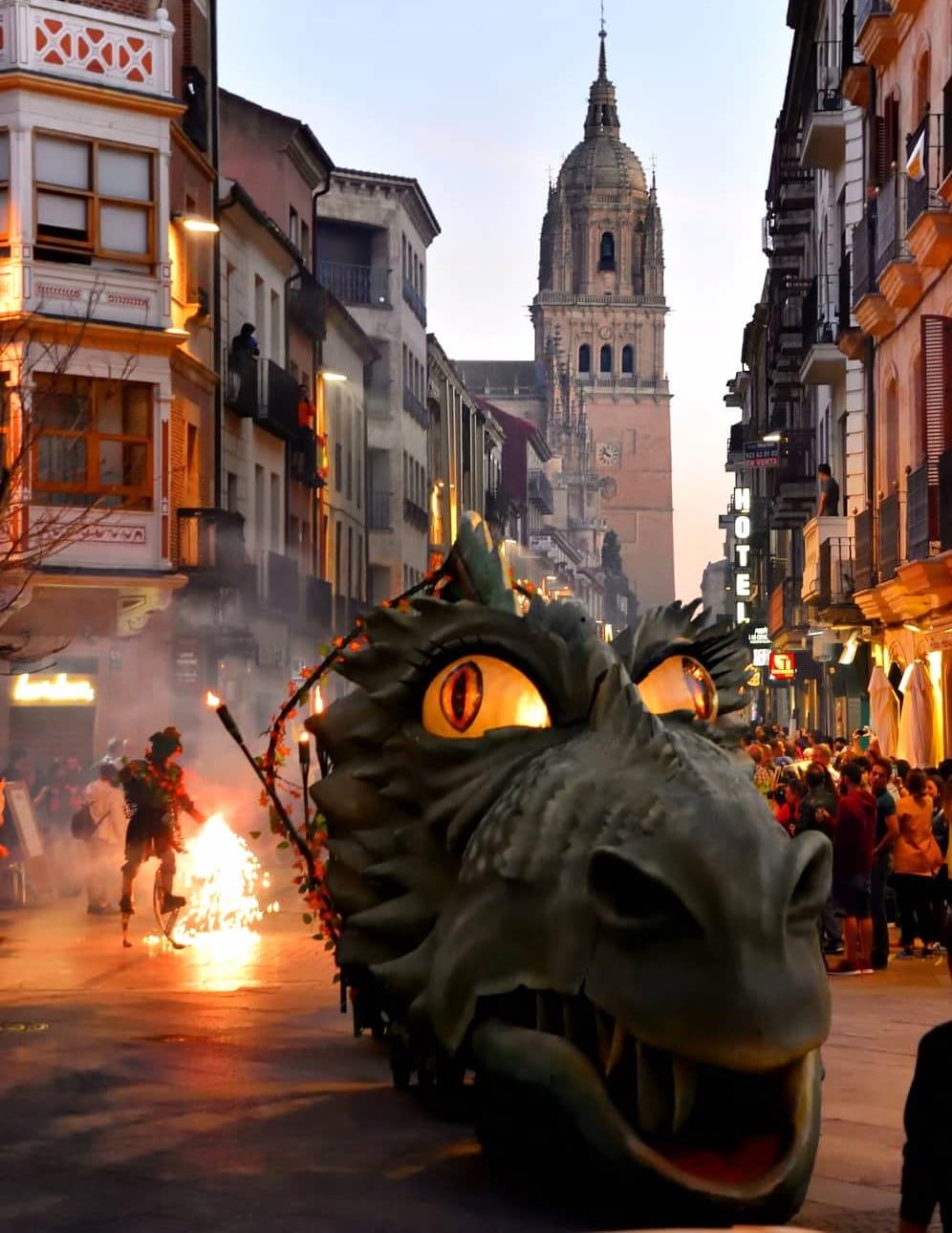
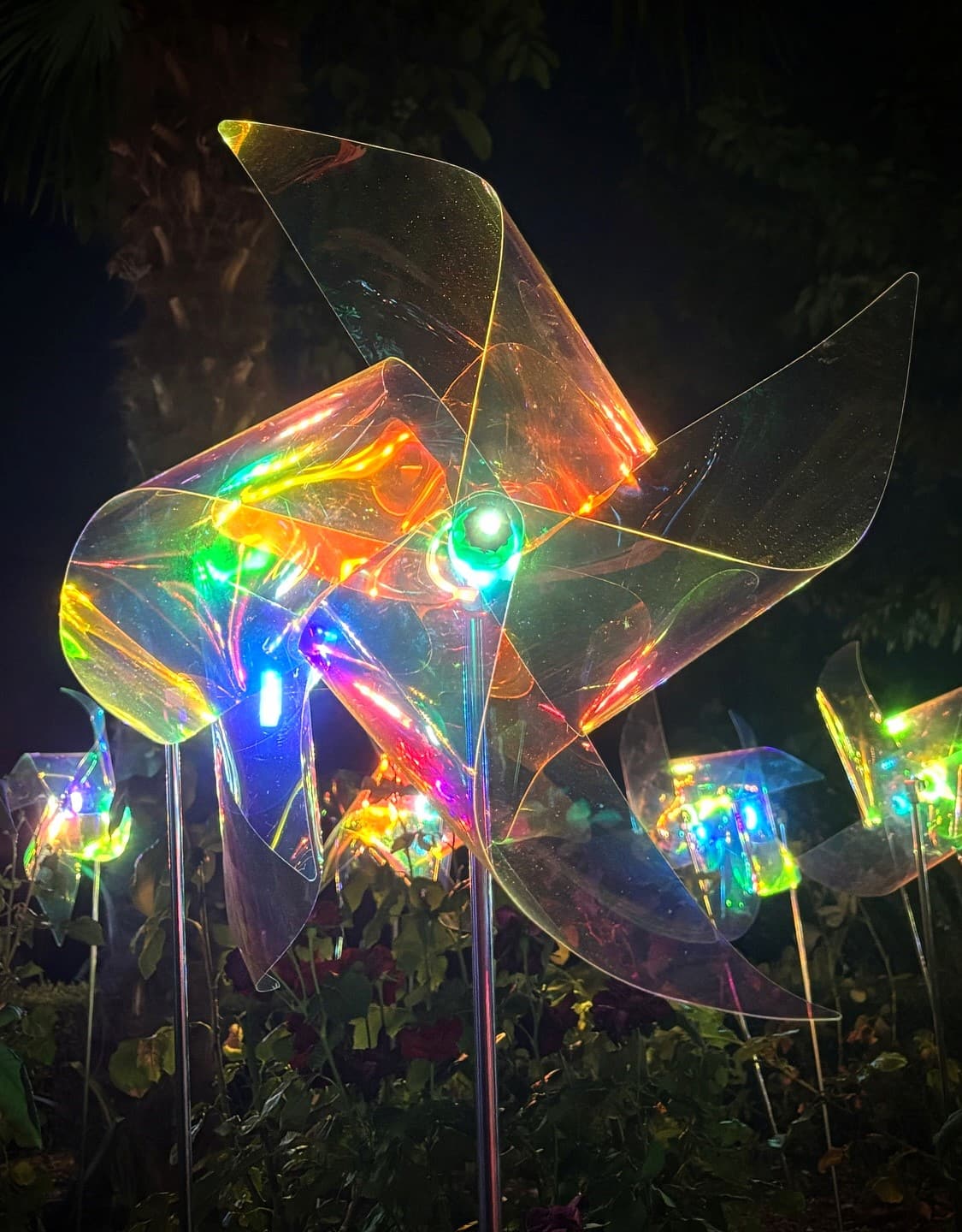
Outdoor performances. As the weather warms, Plaza Mayor and other public spaces become stages for outdoor performances. I watched contemporary dance shows, theatrical productions, and musical concerts – many completely free – while enjoying the pleasant spring temperatures.
University exhibitions. Spring brings special exhibitions to the University of Salamanca, showcasing student and faculty work alongside visiting collections. These events offer insight into the creative energy that continues to flow through this historic institution.
Garden blooms. The Huerto de Calixto y Melibea Gardens burst into color during spring, making it an ideal time to visit this romantic spot. The garden’s elevated position provided me with stunning views of the cathedral against a backdrop of flowering plants and trees.
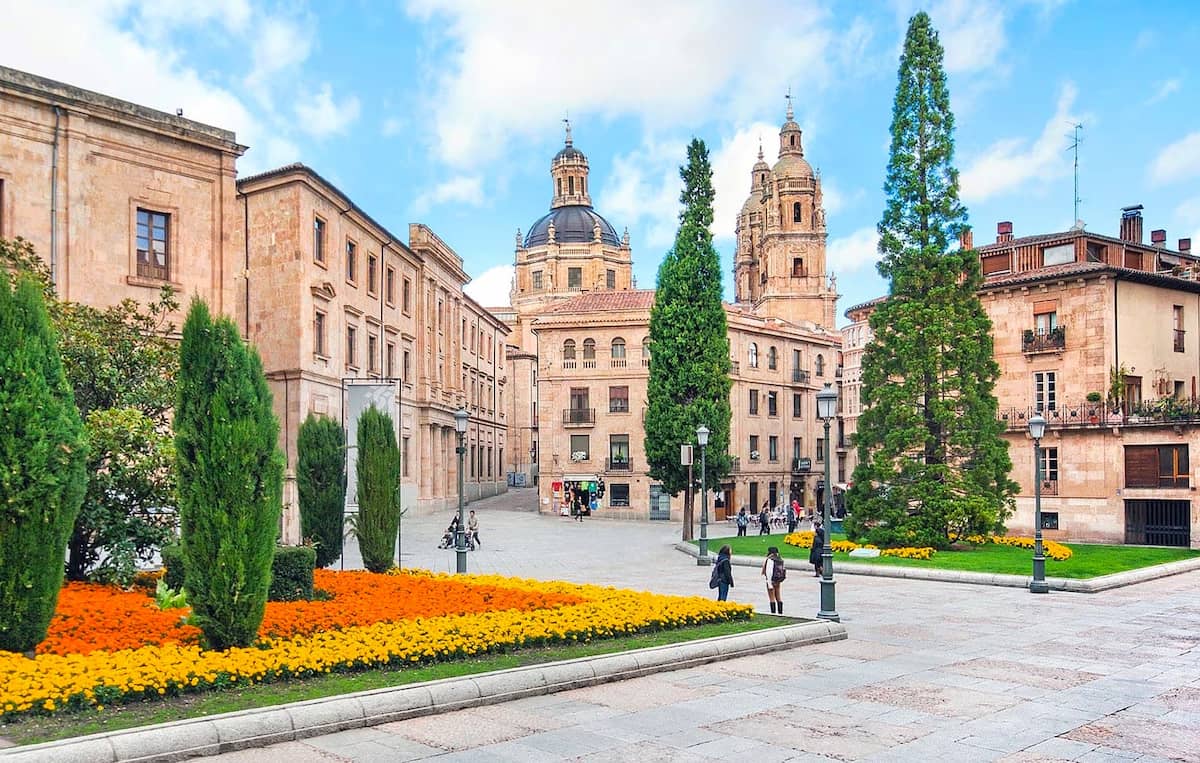
Photography walks. The combination of spring flowers, historic architecture, and perfect lighting conditions makes this season ideal for photography. I joined a guided photography walk that helped me capture Salamanca’s golden buildings framed by blooming trees and clear blue skies.
Autumn Wine Harvest Events (September-October)
Wine Harvest Festival. Each autumn, Salamanca celebrates the end of the grape harvest with a delightful festival featuring guided tours of local vineyards, wine tastings, and opportunities to learn about winemaking traditions. The festival includes vibrant parades, live music, and traditional food that fills the streets.
Rueda Grape Harvest Festival. Just a short drive from Salamanca in Valladolid, this festival takes place during the second weekend of October. I joined thousands of visitors eager to taste wines and enjoy the grape-picking process, along with wine and food fairs, exhibitions, concerts, and workshops.
Vineyard tours. Autumn is the perfect time to visit the vineyards surrounding Salamanca, as the landscape transforms with the changing colors of the vines. I took a day trip to a local bodega where I witnessed the harvest in action and tasted wines directly from the source.
Gastronomic pairings. Local restaurants create special autumn menus designed to showcase regional wines alongside seasonal ingredients. I enjoyed a memorable tasting menu featuring wild mushrooms, game meats, and other fall delicacies paired with wines from the recent harvest.
Traditional grape stomping. In some nearby villages, I watched demonstrations of traditional grape stomping methods that have been used for centuries. These events offered fascinating insights into the region’s winemaking heritage and the connection between the land and its people.
Day Trips from Salamanca
1. La Alberca
Mountain village charm. La Alberca captivated me with its timeless beauty, often described as one of Spain’s most beautiful villages. Located in a hilly region just south of Salamanca, this car-free medieval settlement transported me back centuries with its half-timber houses and window boxes overflowing with colorful geraniums.
UNESCO surroundings. The mountain scenery surrounding La Alberca is a UNESCO-listed biosphere reserve called Las Batuecas-Sierra de Francia. I spent a morning hiking through this protected natural paradise, with well-marked trails leading through pristine forests and offering spectacular valley views.
Historic center. Wandering through La Alberca’s historic downtown revealed cobblestone streets lined with traditional architecture. The Plaza Mayor, though smaller than many Spanish main squares, buzzes with energy from surrounding restaurants serving authentic regional cuisine.
Local traditions. One of the most unique aspects of La Alberca is the “El Marrano de San Anton” tradition. According to local custom, a pig is raised communally from June 13 (San Antonio de Padua) until January 17 (San Antón), wandering freely through town streets before being auctioned on the final day. A statue commemorating this tradition stands behind the Church of Our Lady of the Assumption.
Visitor essentials. La Alberca is approximately 1 hour from Salamanca by car. I recommend arriving early (before 10AM) to experience the village before day-trippers arrive. The tourist office on Plaza Mayor provides excellent information and maps for self-guided walks through the historic center.
2. Zamora
Romanesque treasure. Just an hour from Salamanca by bus, Zamora surprised me with its impressive collection of Romanesque architecture. The city boasts 24 Romanesque churches, the highest concentration in Europe, earning it the nickname “City of Romanesque.”
Cathedral highlights. Zamora’s 12th-century Romanesque cathedral impressed me with its distinctive Byzantine-style dome and magnificent tapestry collection. The audio guide (included in the 6€ entrance fee) provided fascinating insights into the tapestries depicting the Trojan wars housed in the cathedral museum.
Easter traditions. If you’re visiting during Semana Santa (Holy Week), Zamora’s elaborate Easter processions are among Spain’s most famous. The Plaza Mayor features a statue of participants in their traditional robes, giving you a glimpse of these celebrations year-round.
Riverside beauty. I enjoyed strolling along the Puente de Piedra (Stone Bridge), which has connected Zamora with southern Spain for over 800 years. The riverside walk offers excellent photo opportunities of the medieval castle and city skyline, especially from the Mirador del Troncoso viewpoint.
Practical information. Regular buses connect Salamanca and Zamora (approximately 1 hour, 6-11€ one-way). The city center is compact and easily explored on foot. I recommend visiting the Zamora Museum in Cordón Palace to learn about the city’s rich history through archaeological and fine arts exhibits.
⭐ Best Activities
- Walking Tour Salamanca – Get oriented in Salamanca with this essential walking tour that covers the main attractions of the historic center while providing context and stories that bring the Golden City to life.
3. Ciudad Rodrigo
Fortified beauty. Ciudad Rodrigo captivated me with its impressive medieval walls and Renaissance mansions. Located near the Portuguese border (about 1 hour by bus from Salamanca), this fortified town’s strategic position is evident in its 2km-long walls with seven historic gateways.
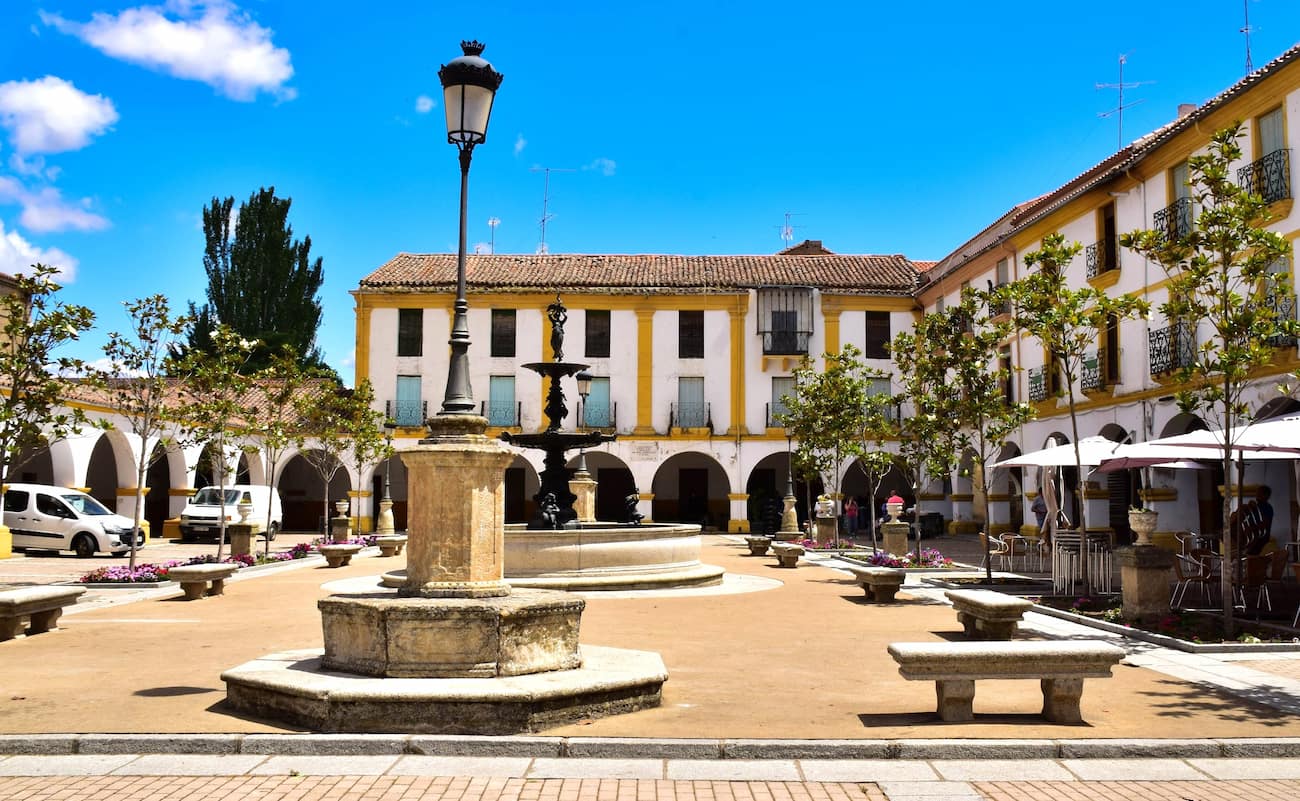
Cathedral marvel. The Cathedral of Santa María, dating back to the 12th century, combines Gothic, Romanesque, and Plateresque elements. I was particularly impressed by the choir stalls carved by Rodrigo Aleman, featuring somewhat grotesque figures that reward close inspection.
Castle views. The 14th-century Castle of Henry II of Trastámara, now a parador (luxury state-owned hotel), offers spectacular panoramic views across to Portugal and down to the Águeda River and Roman bridge. Even if you’re not staying there, you can visit parts of the castle and enjoy the views.
Plaza Mayor atmosphere. The town’s beautiful main square is surrounded by historic buildings and arcades. I spent a pleasant afternoon at a café terrace admiring the 16th-century town hall with its two towers and lovely arcaded upper floor, while watching local life unfold.
Getting there. Regular buses connect Salamanca to Ciudad Rodrigo (approximately 1 hour). The historic center is compact and best explored on foot. For the full experience, I recommend spending at least 4 hours exploring the walls, cathedral, and historic center.
⭐ Best Activities
- Siege of Ciudad Rodrigo 1812 – You may have read a book about this battle, that you have seen several maps explaining the movements of the troops and that you know how the battle developed that day. If so, you have to come to the field to finish understanding what really happened, where it happened and, above all, why it happened that way. Once you have known the field, your perception of the Napoleonic wars will change forever.
4. Ávila
Medieval walls. Ávila’s perfectly preserved medieval walls were the highlight of my visit to this UNESCO World Heritage city. Built between 1090 and 1300, these massive fortifications stretch 2,500 meters in circumference, featuring 80 towers and 9 gates that completely encircle the old town.
Wall walking experience. Though the walls form a complete circle, visitors can only access two sections. I purchased a ticket (5€) at Puerta del Alcázar, which allowed me to walk both available stretches and enjoy spectacular views of the cathedral, surrounding countryside, and the city’s historic buildings.
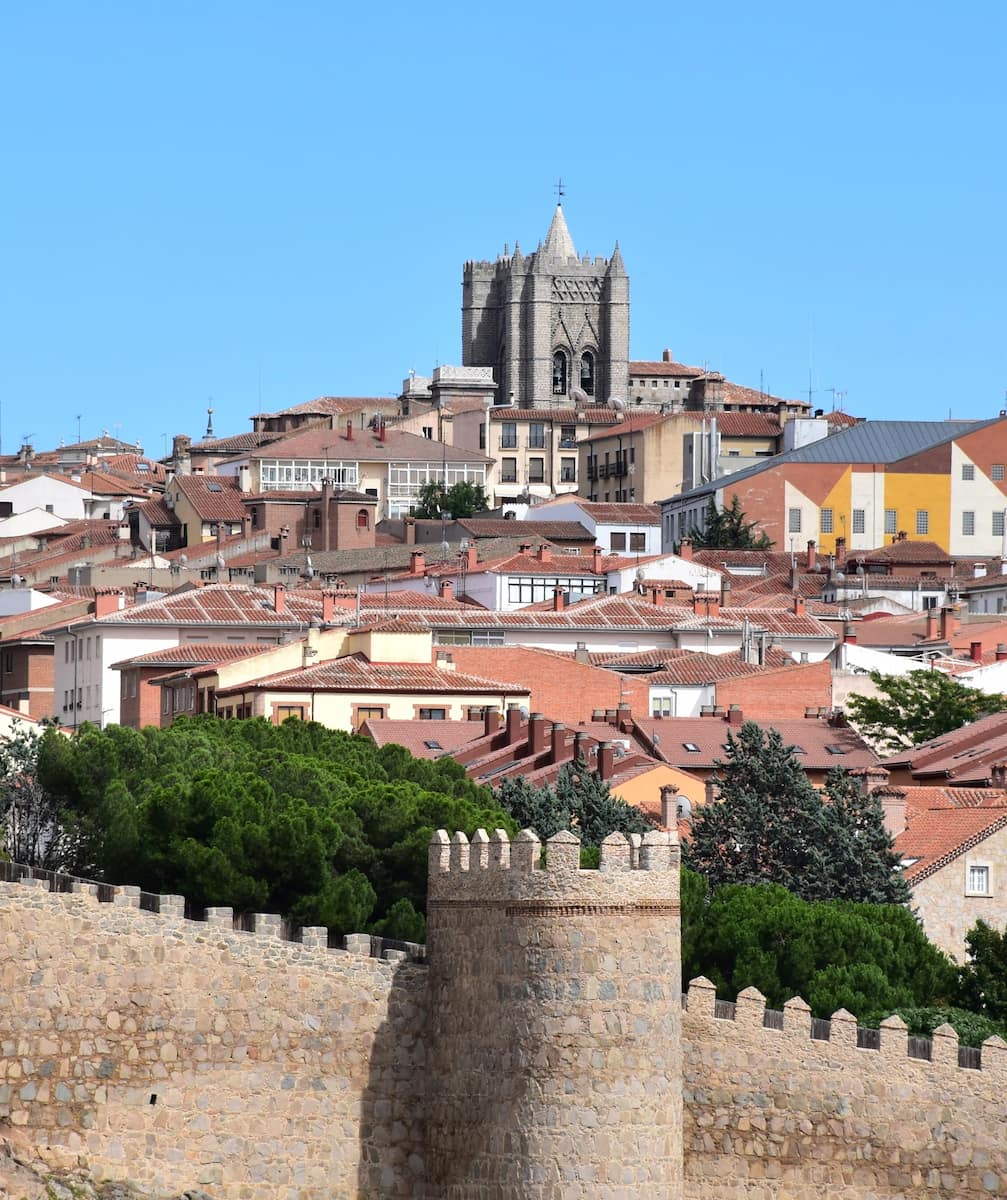
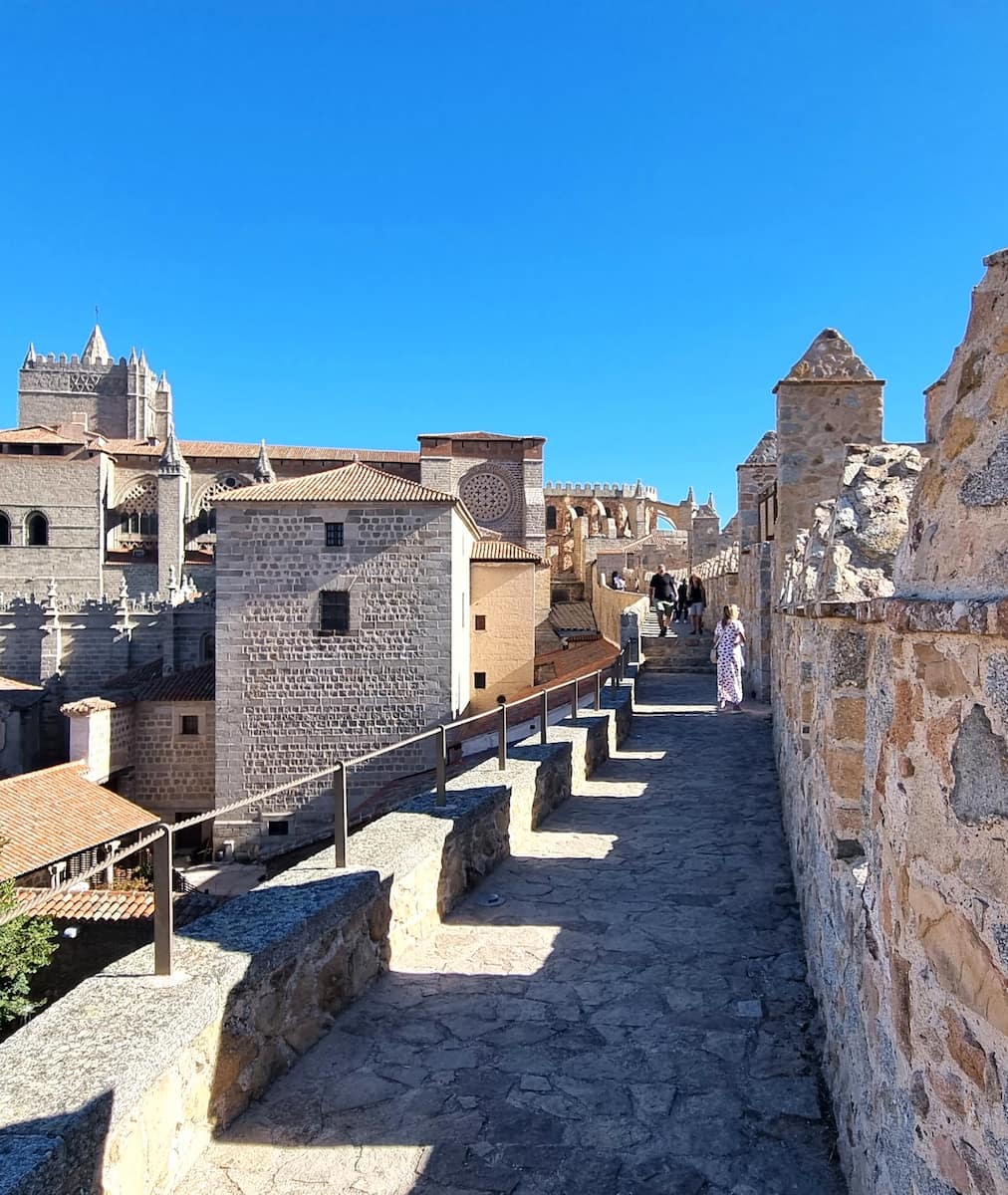
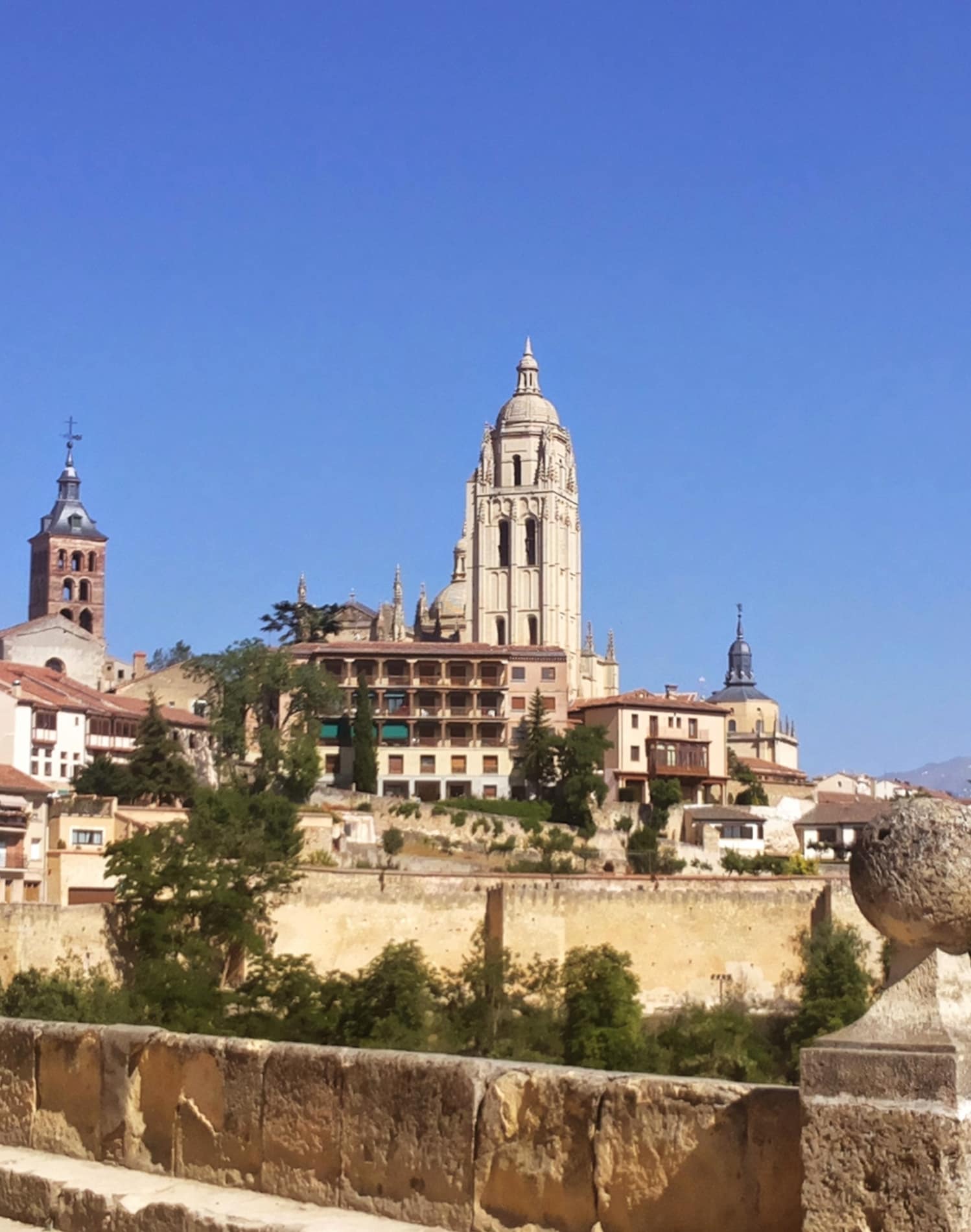
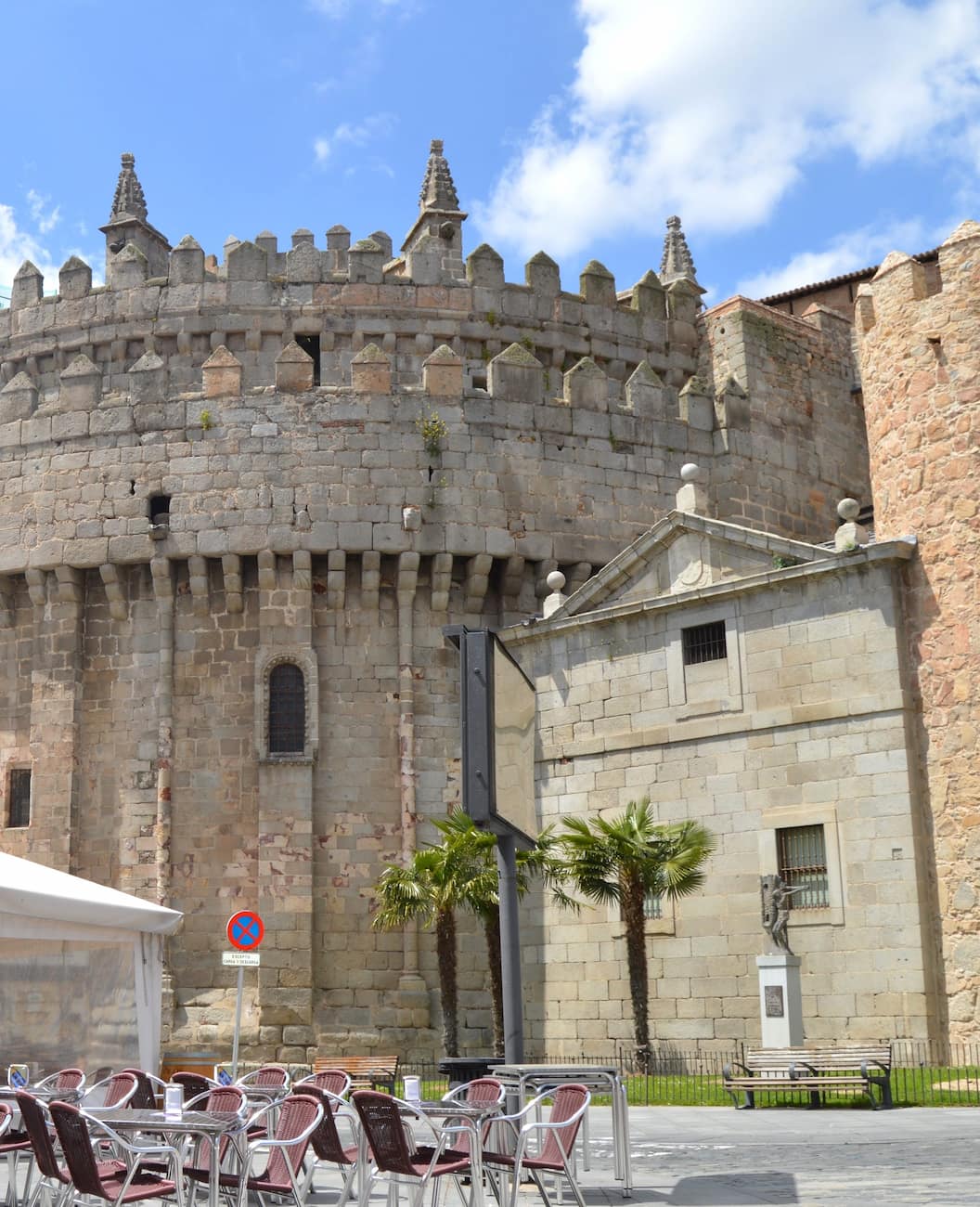
Cathedral visit. The Ávila Cathedral, one of Spain’s oldest Gothic cathedrals, impressed me with its fortress-like appearance and beautiful interior. Construction began in the 12th century and continued for 500 years, resulting in a fascinating blend of architectural styles. The 6€ entry fee includes access to side chapels and a small museum featuring works by El Greco.
St. Teresa sites. As the birthplace of Saint Teresa, Ávila offers several important religious sites. I visited the Convent of Santa Teresa, built over her birthplace, and the Monastery of the Incarnation where she lived for many years. These sites provide fascinating insights into the life of this important Spanish mystic.
Practical tip. Ávila is approximately 1 hour from Salamanca by car or train. The ÁvilaCard (15€) provides access to 4 different sites/museums/cathedrals around the city, offering good value if you plan to visit multiple attractions.
⭐ Best Activities
- Private Day Trip to Ávila and Salamanca - History and Culture – Two UNESCO World Heritage Cities in One Day: Explore the best of Ávila and Salamanca, two of Spain’s most iconic historical destinations, in a single, carefully curated tour.
5. Segovia
Roman engineering. The Roman Aqueduct of Segovia left me awestruck with its scale and preservation. Built in the 1st century, this engineering marvel stands 28.5 meters tall at its highest point and runs for 15 kilometers, bringing water to the city without using any mortar between its 20,000+ granite blocks.
Fairy-tale castle. The Alcázar of Segovia, perched dramatically on a rocky outcrop, looks like it came straight from a Disney movie (and indeed, it’s believed to have inspired Walt Disney’s Cinderella Castle). Inside, I explored the Hall of Kings, Armoury room, and Throne room before climbing the 152 steps of the Tower of Juan II for spectacular city views.
Gothic cathedral. Segovia Cathedral, Spain’s last Gothic cathedral, took over 50 years to complete in the 16th century. I was impressed by its 21 chapels, beautiful stained glass windows, and impressive bell tower. The guided tour to the 90-meter high tower (available in English) provided breathtaking views of the city and surrounding countryside.
Culinary delights. Segovia is famous for its cochinillo asado (roast suckling pig), a local specialty I enjoyed at Mesón de Cándido near the aqueduct. The tender meat with crispy skin was ceremoniously cut with the edge of a plate – a local tradition demonstrating its perfect preparation.
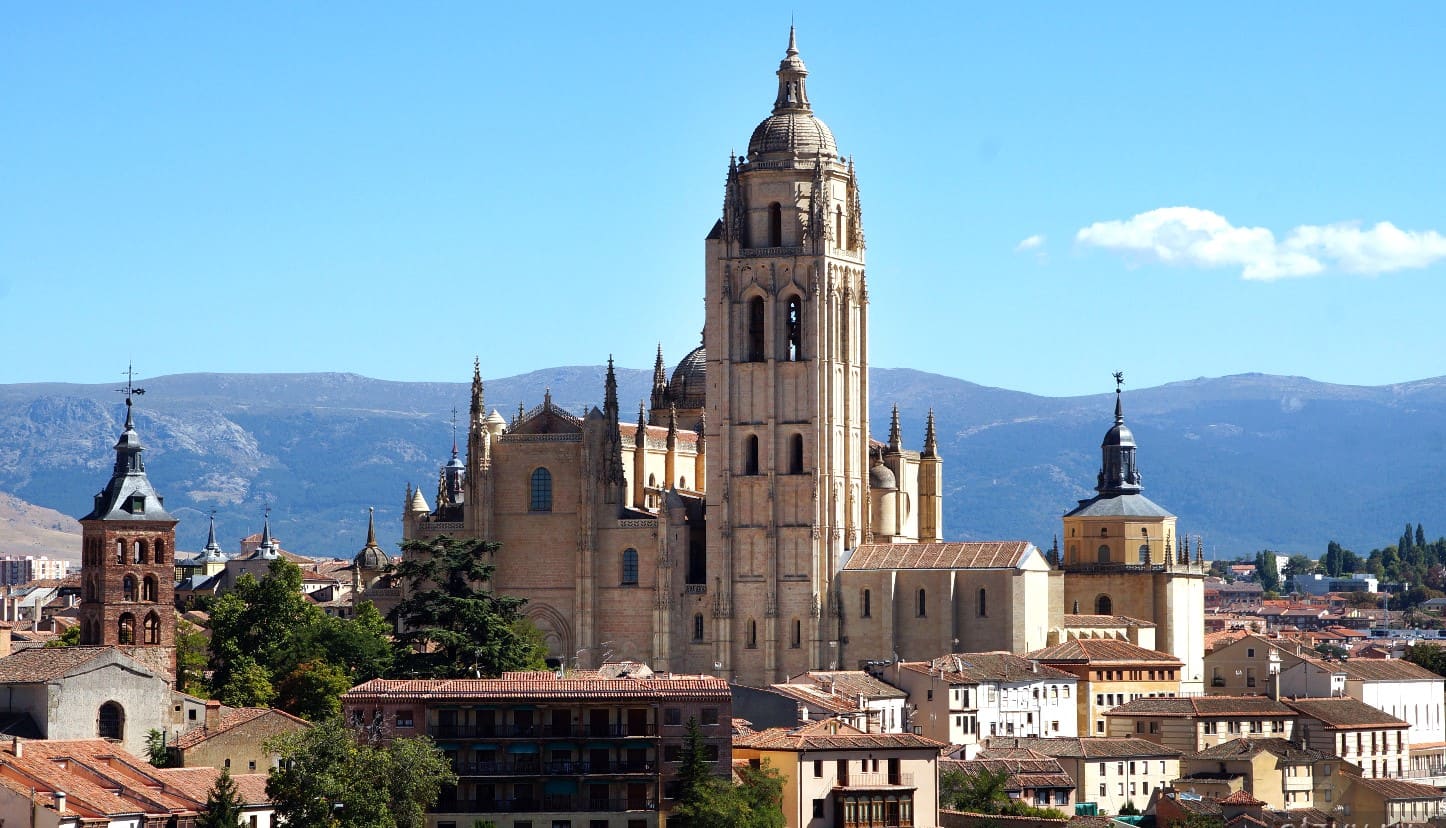
Getting there. Segovia is about 1 hour 50 minutes from Salamanca by car. Public transportation requires changing in Madrid, making a private transfer or organized tour the most convenient option for a day trip. I recommend arriving early to beat the crowds at the aqueduct and Alcázar.
⭐ Best Activities
- Segovia Walking Private Tour 3 hours with tickets included – Explore the ancient city of Segovia from ‘A to Z’ during this 3-hour private group sightseeing excursion. Visit top city highlights including the famous Roman aqueduct, the ‘Alcazar,’ the Jewish Quarter, ‘La Muralla’ (the ramparts), and much more.
❓ FAQ
How do I get to Salamanca from Madrid?
Salamanca is easily accessible from Madrid by train or bus. The high-speed train (AVE) takes about 1 hour 30 minutes, while buses are a more budget-friendly option and take around 2 hours 30 minutes.
What are the must-see attractions in Salamanca?
The top attractions in Salamanca include Plaza Mayor, the Old and New Cathedrals, and the University of Salamanca. Don’t miss the Casa de las Conchas and the Roman Bridge for a comprehensive experience of the city’s rich history and architecture.
How can I visit the Old Cathedral in Salamanca?
The Old Cathedral is open daily and can be visited with a combined ticket that includes entry to the New Cathedral. I recommend joining a guided tour to fully appreciate the Romanesque architecture and learn about the cathedral’s fascinating history.
What’s the best time to visit Salamanca?
Spring (April-May) and fall (September-October) offer pleasant temperatures and fewer crowds. Summer can be quite hot, but it’s also when the city comes alive with festivals and outdoor events.
What are some unique places to visit in Salamanca?
For a unique experience, visit the Cielo de Salamanca (Sky of Salamanca) ceiling fresco and climb the Ieronimus Tower for panoramic views. The Art Nouveau and Art Deco Museum (Casa Lis) is also a hidden gem worth exploring.
Where should I eat in Salamanca to try local cuisine?
To sample local specialties, head to the Mercado Central or try traditional restaurants around Plaza Mayor. Don’t miss hornazo (a savory pastry) and farinato (a type of sausage) for authentic Salamancan flavors.
Can I visit the New Cathedral and University on the same day?
Yes, it’s possible to visit both the New Cathedral and the University of Salamanca in one day. They’re located within walking distance of each other in the historic center, making it convenient to explore both iconic sites.
Is Salamanca a UNESCO World Heritage site?
Yes, Salamanca’s Old City was declared a UNESCO World Heritage site in 1988. This recognition covers the historic center, including the Plaza Mayor, both cathedrals, and the university buildings.
What are the best accommodation options in Salamanca?
Salamanca offers a range of accommodations from budget hostels to luxury hotels. For a unique experience, consider staying in a converted historic building in the old town or near Plaza Mayor for easy access to main attractions.
How many days should I spend visiting Salamanca?
Two to three days are ideal for exploring Salamanca’s main attractions and soaking in the city’s atmosphere. This allows time to visit key sites, enjoy local cuisine, and perhaps take a day trip to nearby towns like Ávila or Segovia.
